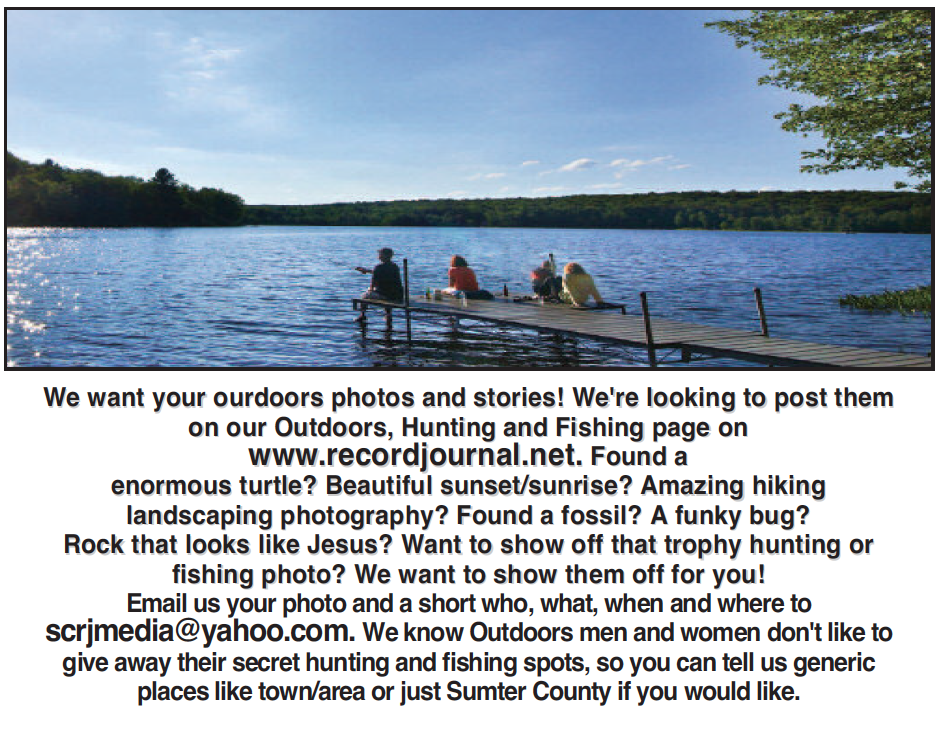
Outdoor Alabama Weekly
Alabama saltwater records continue to fall
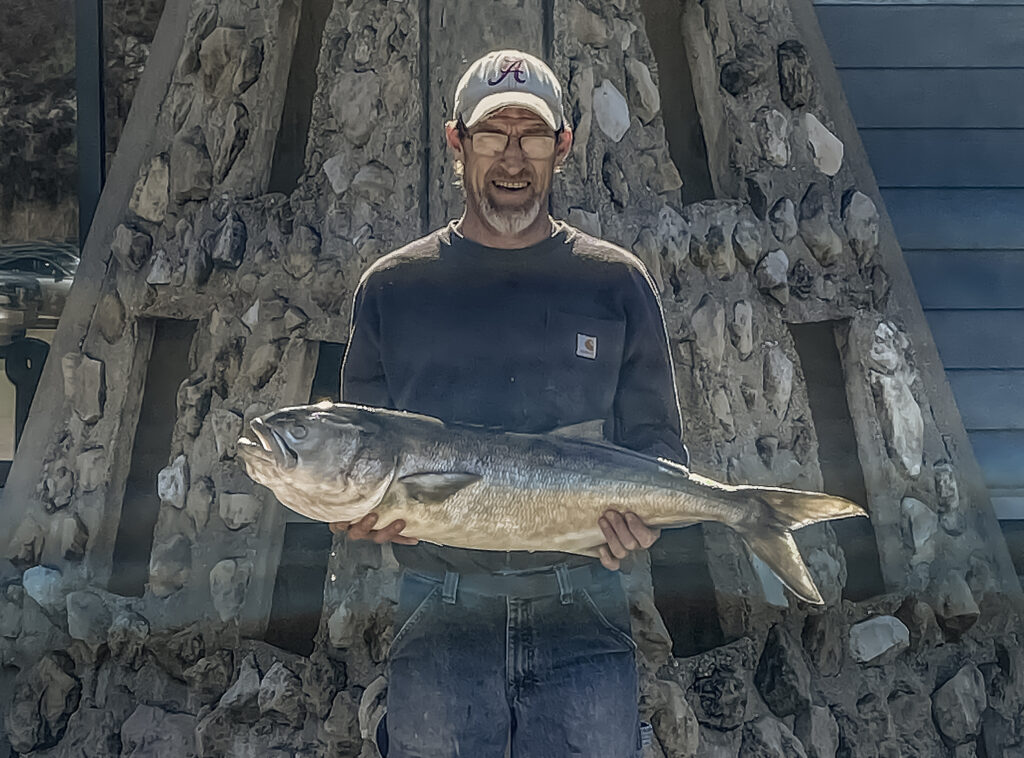
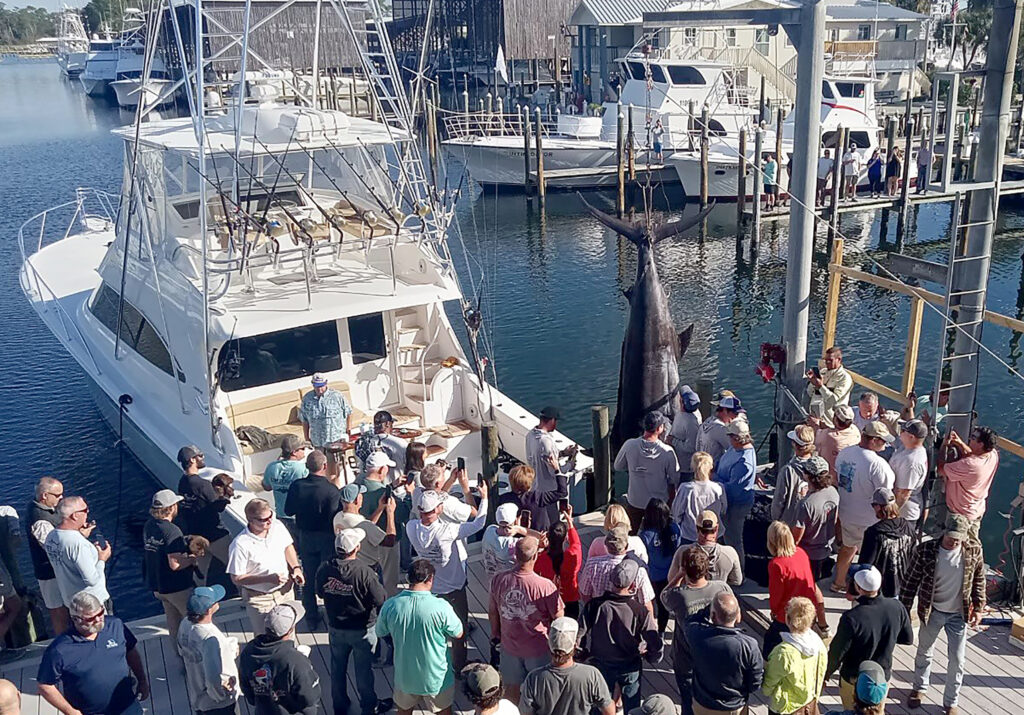
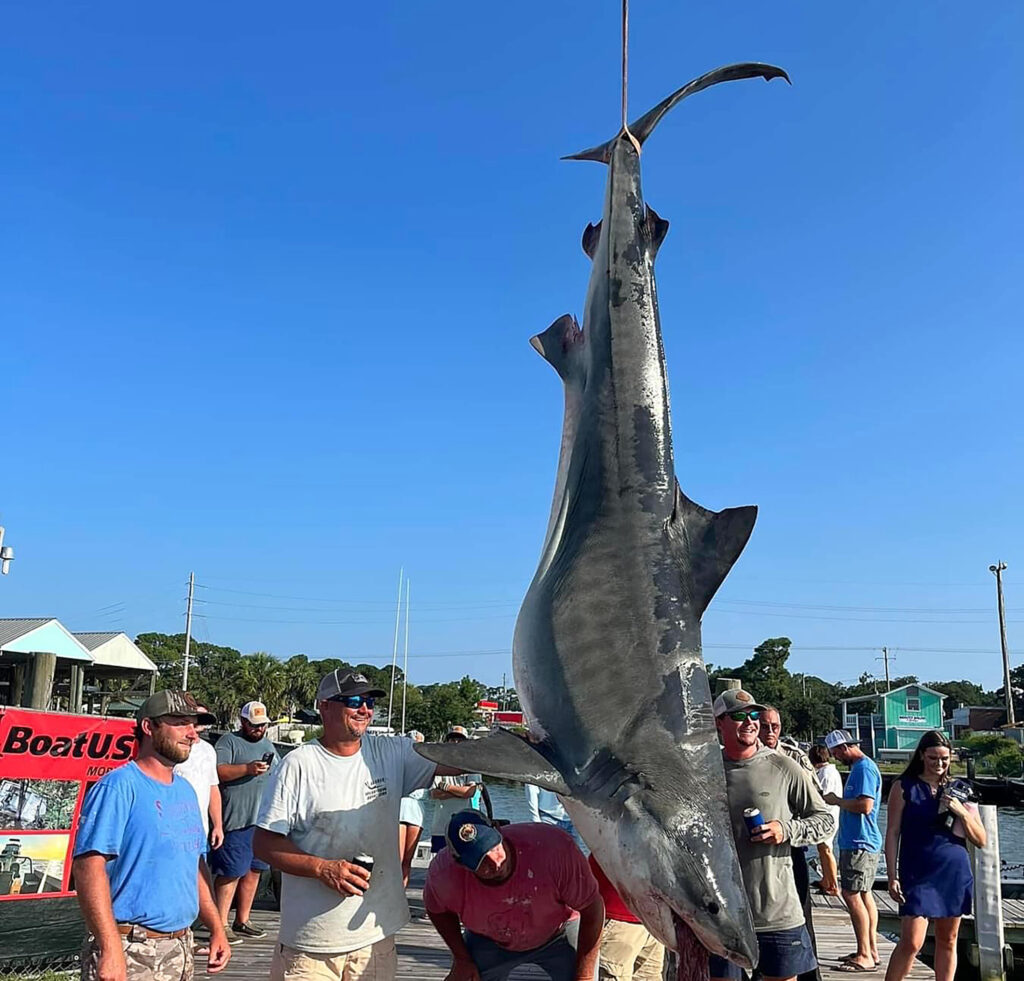
PHOTOS: (Blake Michaleski, ADSFR, MRD) The Best Trait drew a crowd at Orange Beach Marina when the record-setting blue marlin was weighed in. Brett Rutledge and crew celebrate the record-setting tiger shark caught during the 2023 Alabama Deep Sea Fishing Rodeo. Rustin Musgrove caught this monster bluefish while fishing from shore at Perdido Pass.
By David Rainer, Alabama Department of Conservation and Natural Resources
As saltwater fishing for 2024 heads into the peak seasons, a look back at 2023 reveals another record-breaking year for those who fish Alabama’s coastal waters and the Gulf of Mexico.
The catch that went viral with news agencies around the world picking up the story was the giant blue marlin caught by “Best Trait,” a 55-foot Viking sportfishing vessel owned by Scott Crump of Jasper. The marlin officially weighed 1,145.6 pounds, which is not only an Alabama but also a Gulf of Mexico record. The Best Trait marlin, which was 145 inches long, easily eclipsed the Alabama state record of 851.9 pounds caught in 2020 by Ginger Myers. The Gulf record was set in 2002 in Mississippi by Barry Carr at 1,054 pounds.
Scott “Scooter” Anderson reeled in the giant marlin in two hours, but he said it was far from easy, losing two fish before getting the big bite.
Capt. Chris Mowad went to the Blind Faith rig, Chevron’s deepest rig at 6,500 feet about 160 miles southeast of New Orleans. The fishing team put down a blackfin tuna for bait, and Mowad watched the big blue marlin hit it on the sonar. The marlin came to the surface and started jumping. She came completely out of the water twice, Anderson said.
An hour into the fight, the marlin died and began to sink. A combination of a lot of reeling by Anderson and boat maneuvering by Mowad got the marlin alongside the boat. The fish was so big, they had to call a nearby boat to come help get it loaded. It took seven anglers to get the monster blue into the boat.
Scott Bannon, Director of the Alabama Department of Conservation and Natural Resources’ (ADCNR) Marine Resources Division (MRD), said a marlin weighing more than 1,000 pounds, known as a grander, is obviously an extremely rare occurrence.
“This fish was almost 300 pounds larger than the previous record,” Bannon said. “We just don’t see fish that big in the Gulf.
“Credit goes to those bigger boats and the tournaments hosted out of Orange Beach. We have become very well known for our offshore fishing tournaments. I think that brings awareness to the fishing in Alabama, and, naturally, it brings income to Alabama as people who are fishing spend money in the local economy. We’re proud to be known as a world-class fishing destination.”
Another record-breaker that caused quite a stir was the gigantic tiger shark caught during the 2023 Alabama Deep Sea Fishing Rodeo by Brett Rutledge. The tiger shark weighed 1,019 pounds, bumping the 988 pounds, 8 ounces fish caught by Larry Eberly that held the Alabama record since 1990.
Rutledge’s record fish was certainly not caught by accident. He took his daughter and a friend out the day before the rodeo started to catch jack crevalle and bonitos to use for bait as well as collecting about 400 pounds of baitfish, like menhaden, for chum. When they’re looking for fishing spots, it’s all about the abundance of bait around petroleum rigs, artificial reefs or natural bottom.
“I also got up early every morning to build shark leaders for two weeks,” Rutledge said. “I built different ones for different applications, depending on the bait we were using. We use 22/0 circle hooks for shark fishing with 700-pound stainless leader.
“We want to use big enough tackle to be able to manhandle a fish. I got that fish to the boat in 30 minutes. We had that shark roped to the boat in 36 minutes total. It took another hour and a half to get it in the boat.”
Rutledge said he realized this was a huge shark about 15 minutes into the fight when fishing mate Derrick Rogers spotted the fish and said it was “real long and real girthy.” David Rogers, Connor Blake and Joey Spiers were his other fishing partners.
“I didn’t think the fish was 1,000 pounds, so I was happy when they called out the numbers,” he said. “Derrick and Connor are really good shark fishermen. I did the easy part. I reeled it in. The hard part was what they did when they roped it and got it inside the boat.”
Bannon said the shark category at the rodeo allows marine scientists access to species that are rarely available to study.
“The public likes to see those big sharks, and that was a big one,” Bannon said. “On the science side of things, when those species are brought in, Dauphin Island Sea Lab and the University of South Alabama are able to obtain so much scientific data on those species they don’t see very often. So, there are benefits to those limited species of sharks being landed to be used for scientific purposes.”
Another catch that received some recognition was the huge bluefish that Rustin Musgrove caught while fishing at Perdido Pass. The bluefish weighed 17 pounds, 8 ounces, bumping a 20-year-old record of 17-4 from the record books.
“That was a monster bluefish, but it only beat the old record by four ounces,” Bannon said.
Several of the records last year were deepwater species, one that had never been submitted for a record before. Bannon said more people are venturing farther into the Gulf to fish these days.
“People’s efforts shift as they become more comfortable with the electronics, the dependability and fuel efficiency of boats these days,” Bannon said. “They have access to information on how to fish. Social media has been a big part of that. They can see how to rig for certain types of fishing and what areas to target. With sonar you can find those bottom features you’re looking for in that deep water.
“And there are good food fish in those deepwater areas. People have been targeting those because of lower bag limits on other species, so people are diversifying and expanding their techniques and the areas they are fishing. They’re catching groupers, tilefish and some of the deepwater snapper.”
One of the snapper species is the queen snapper, which was first accepted as a record fish when Gene Stock caught a queen that weighed 5 pounds, 8.6 ounces in February last year. That record didn’t last long. The following June, Crawford Grant Mann caught a queen that was almost double the initial record at 11 pounds, 4.6 ounces.
A sand tilefish caught by Tylor L. Finley in May last year went into the record books at 2 pounds, 10.4 ounces.
Another record for a deepwater species was the escolar caught last September by Scott Page. It weighed a whopping 102 pounds, 9 ounces, which was more than 30 pounds heavier than the previous record.
A jolthead porgy caught by Trey Taylor last June went in the record books at 9 pounds, 2 ounces, and the latest record was a silvery John Dory, caught in March of this year that weighed 5 pounds, 6.24 ounces.
Another new species for the Alabama record books is the common snook. Dr. Richard Tarver Webb caught a snook that weighed 5 pounds, 2.6 ounces to establish the record.
“Snook is not a commonly caught fish in Alabama,” Bannon said. “This would be the extreme edge of their habitat. They like clear water and warm temperatures. Pensacola has historically been considered the edge of their range, but things change.”
In other Marine Resources news, a derelict crab trap cleanup is planned in Mobile Bay on Friday, May 3, and Saturday, May 4, 2024, and the public is invited to participate. The derelict traps will be marked on Friday and removed on Saturday. There will be a post-event social at Meaher State Park in Spanish Fort on May 4 beginning around 1 p.m.
The Derelict Crab Trap Removal Program event is a coordinated effort between MRD and the Gulf of Mexico Alliance and includes volunteer support by the Coastal Conservation Association (CCA).
“We have not had a derelict crab trap cleanup in a few years,” Bannon said. “We’re very appreciative of the CCA and Gulf of Mexico Alliance for their support for this event.
“We know this is something the community likes to do. They like taking care of the environment, especially in the Mobile Bay area. And derelict traps can damage boats and possibly injure somebody if they are in shallow water. Additionally, they ghost fish, catching fish and crabs when they’re not being checked, and whatever is in the trap dies. We’re looking forward to working with the public to do this.”
Groups or individuals interested in volunteering should contact Jason Herrmann with the MRD at (251) 968-9734 or [email protected].
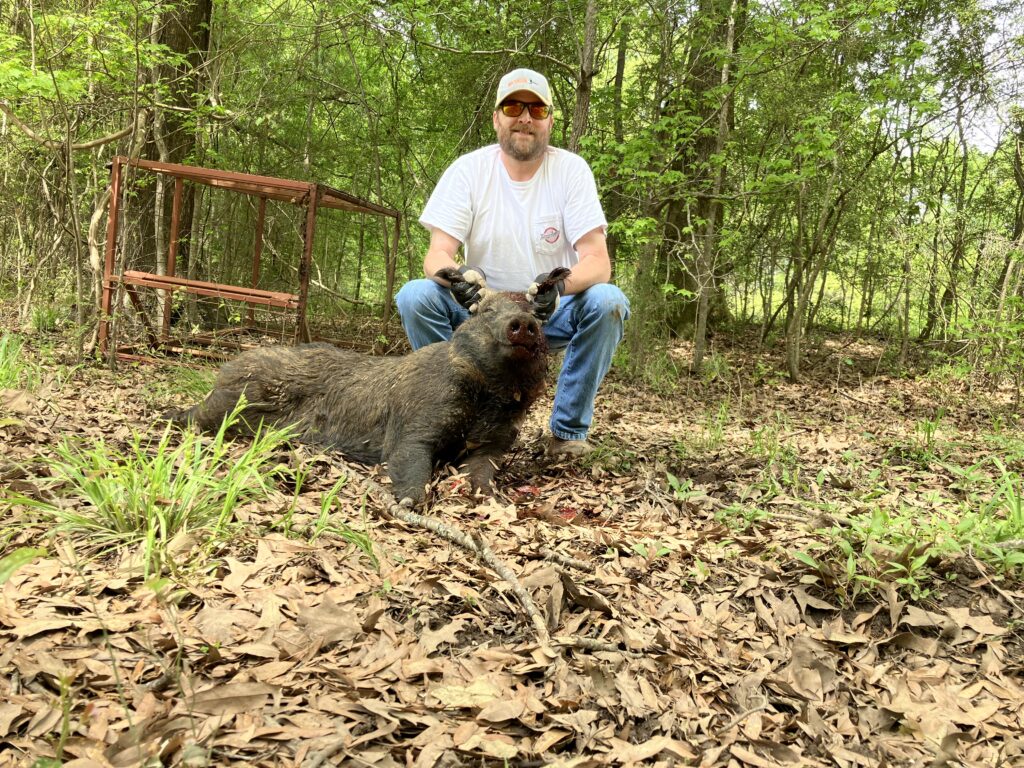
“With the help of his nephews, Michael and Braxton Gibson, Ben Gibson was able to bait, trap and kill his first big boar of the year down on the river at “HOGBEAR BOTTOMS.” Ben is one half of the group “HOGBEAR BOYZ” with Kevin Rice, not pictured, being the other half. They are wild hog bounty hunters. Give them a call if you have trouble with pigs.”
Submitted by Karen Gibson. Email your trophy photos and outdoors stories to [email protected]. They run for free in the paper and on our outdoors page at www.recordjournal.net.
Outdoor Alabama Weekly
McCaleb crowned grand champion at Governor’s One-Shot Turkey Hunt
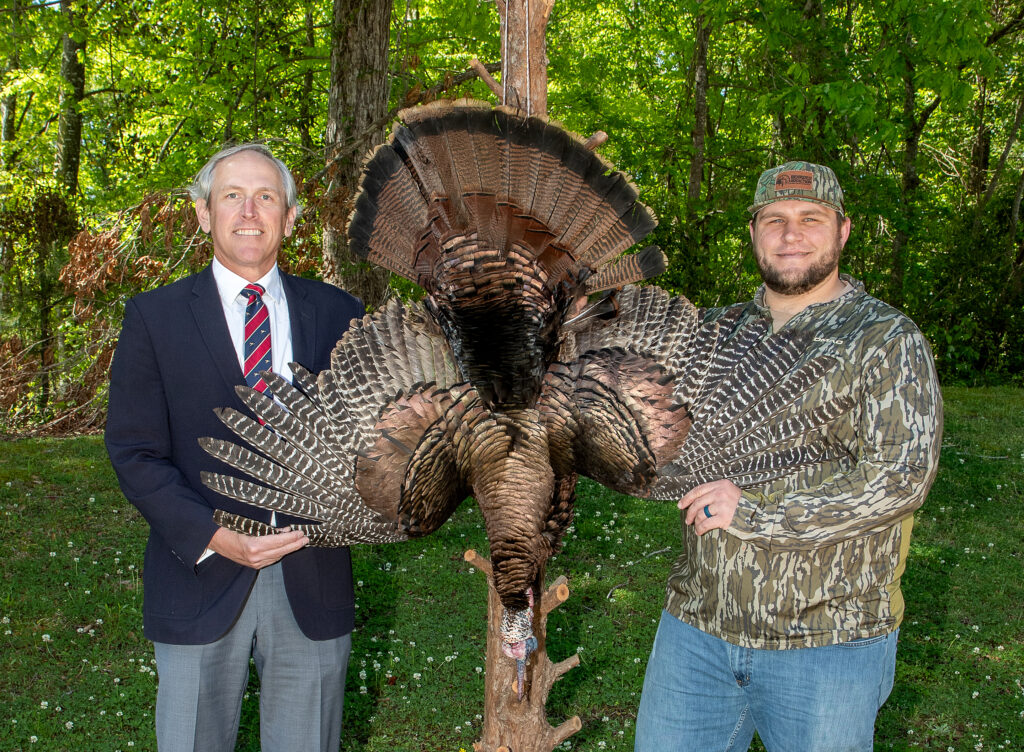
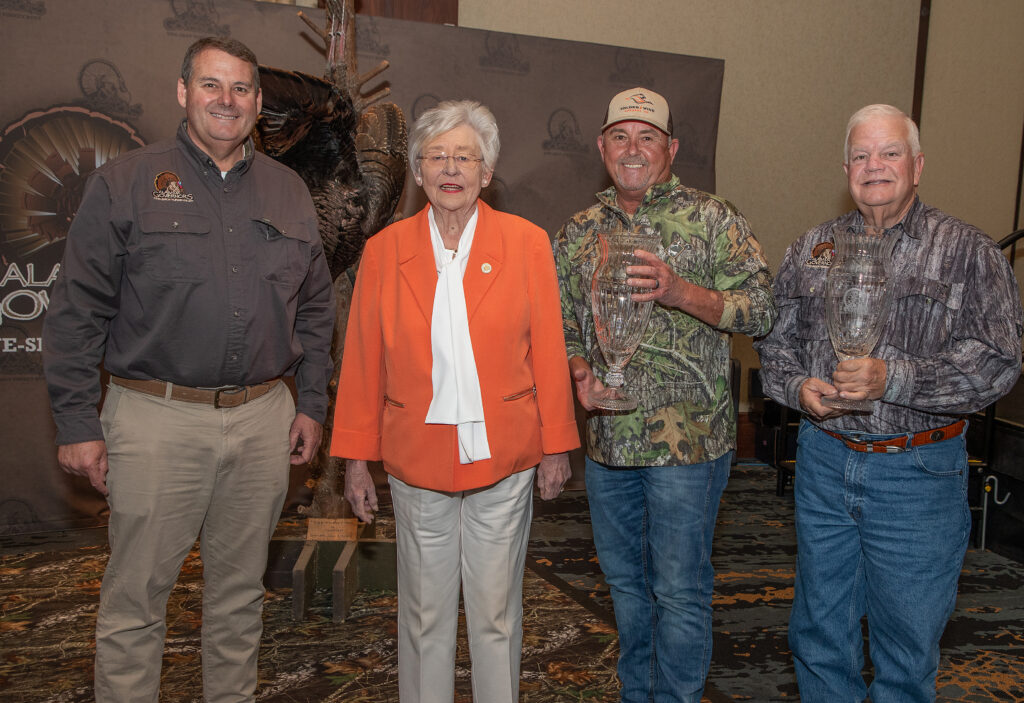
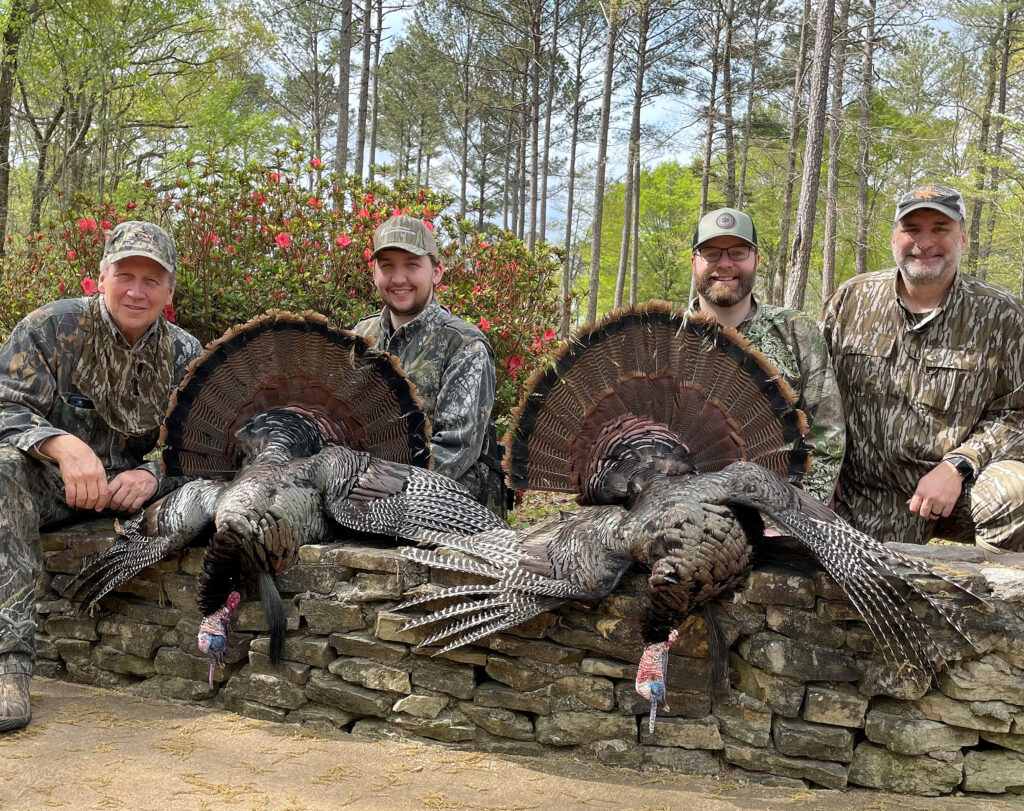
Conservation Commissioner Chris Blankenship joins Governor Kay Ivey to present the Grand Champion trophies to Paul McCaleb, right, and landowner Russ Newman. Dan and Daniel Moultrie, left, and Jon Zinnel and WFF Director Chuck Sykes bagged birds during the hunt. Jeff Rabren, left, and guide Foster Pugh took home the second runner-up prize at the One-Shot Turkey Hunt. (Billy Pope, Daniel Moultrie)
By David Rainer, Alabama Department of Conservation and Natural Resources
Despite some challenging weather conditions, the Alabama Governor’s One-Shot Turkey Hunt last week was another resounding success with numerous hunters from across the nation bagging an Alabama bird.
“We had hot and humid weather to start and then a line of thunderstorms came through,” said Chris Blankenship, Commissioner of the Alabama Department of Conservation and Natural Resources (ADCNR) at Wednesday’s awards luncheon. “But more than a third of people hunting ended up with a turkey.
“It has been a great success. We had more sponsors than we’ve ever had. We had more hunters (62) than we’ve ever had. We raised more money than we ever have for scholarships for our universities, our Hunters Helping the Hungry program, youth dove and duck hunting, Becoming An Outdoors-Woman, our mentored hunting programs and all the things we do to promote hunting and fishing and getting people outdoors in the state.”
Not only does the One-Shot Turkey Hunt showcase Alabama’s outdoors, but it also puts a spotlight on the many other amenities associated with doing business and living in the state.
“To be able to show how the outdoors we all enjoy here contributes to the quality of life in Alabama but also to use it as an economic development tool,” Commissioner Blankenship said. “We want people to bring their businesses here, expand their businesses here and get to meet our people and see what a beautiful place we live in. It’s been a hugely successful event, not only for the hunters but we’re also thankful for the landowners who gave up their turkeys for somebody else to shoot one of their birds.”
Commissioner Blankenship said although Paul McCaleb was crowned Grand Champion of the 2024 Alabama Governor’s One-Shot Turkey Hunt, he considers Governor Kay Ivey as the Grand Champion of promoting and supporting outdoors initiatives in Alabama.
“When we kicked things off, I said Alabama was blessed with our great outdoors,” Governor Ivey said before handing out the awards. “I hope you all got a good glimpse of Alabama. It’s not just the best place to visit; it’s the best place to work, build and raise a family, and to also play.”
McCaleb hunted with landowner Russ Newman near Union Springs when they managed to bag the winning gobbler, which weighed 22.3 pounds with a 10.375-inch beard and spurs that measured 1.3 and 1.1 inches for a total score of 67.375 points under the National Wild Turkey Federation scoring system.
“It was tough that morning,” Newman said. “The turkey we had been seeing was not cooperative, gobbled very little. When he hit the ground, that was it. We had a long day. We got stuck, and I had to walk back about a mile to the camp to get a tractor.”
After lunch the hunters went to an area where some birds had been showing up in a field and started to call. Lanier Burton and Joby Newman, Russ’s son, also served as guides on the hunt.
“I bet we didn’t call five times, and I looked up and said, ‘Mr. Paul, there’s a turkey to your left. He’s coming straight in.’ He was at 48 steps, and Mr. Paul hammered him; made a heck of a shot.”
McCaleb is a lifelong turkey hunter, bagging his first bird in 1972. He hunts turkeys with his son and grandson on a regular basis on their land in Walker County that is managed for deer and turkeys.
“It was pretty evident that the first turkey we fooled with was an old bird that was used to sitting up in the tree until his hens came up under him before he would pitch down,” McCaleb said. “He stayed in the tree for over an hour. He pitched down and went the other way.”
After getting the truck stuck and eating lunch, the host team took McCaleb to the spot where the turkeys were known to hang out.
“I couldn’t have asked for a better group of guys to hunt with,” he said. “We came in on the creek side so we wouldn’t make much noise. We got set up, and the guys started calling. Within 10 minutes, Russ said, ‘Mr. Paul, don’t move.’ I had a tree blocking my vision on what he could see. I stayed frozen, and the turkey came out in an old logging road. I had picked out a tree he had to come by for him to be close enough for me to shoot. Luckily, that tree was about four feet wide. When he went behind that tree, I was able to get my knee up and my gun on my knee. He came from behind the tree, took three more steps and ran his head up. That’s when I shot him. It was 1:22 (p.m.).
“It was a quick hunt, but we were whooping and hollering like kids on Christmas morning. It was a very exciting hunt.”
First runner-up Daniel Moultrie bagged a bird in Chambers County with his dad, Dan. The turkey weighed 19.5 pounds with an 11-inch beard and 1-inch spurs for a total of 61.5 points.
“We heard them pitch down from the roost, and we started talking to them,” Daniel said. “We started walking down a road and then got set up real quick on a tree. There were two turkeys together. One was standing in the road and the other was walking into the woods. The one I ended up harvesting was the one walking in the woods. Once he got between two trees, I squeezed off on him.”
Dan, who recently acquired the property in Chambers County, said they started out on a hilltop to listen for birds because they weren’t as familiar with the topography. Meanwhile, on another section of the Moultrie property, ADCNR’s Wildlife and Freshwater Fisheries Director, Chuck Sykes, and his hunter, Jon Zinnel from Federal Ammunition, were able to harvest a bird that didn’t quite make the leaderboard.
“We went to a high spot and started listening,” Dan said. “We heard them gobbling. The old rule is you never call to them in the tree. As soon as we heard them fly down. I yelped to them one time to see if they would respond. Then they came right back, double-gobbling. One thing Daniel understated about finding a tree to get set up on was I was saying, ‘Sit down. Sit down. Quick, quick, quick. They’re coming. They’re coming.’ I told him to shoot the one in the road, but the turkey in the woods was coming straight to us and would have busted us and putted if Daniel hadn’t shot him.
“For the last 12 years, we’ve always hunted on Easter weekend and gotten him a turkey. This was our Easter hunt.”
The second runner-up was another Bullock County turkey taken by Jeff Rabren, who hunted with Foster Pugh at Sanctuary Timber and Wildlife. Rabren’s bird weighed 22.3 pounds with a 9.5-inch beard and spurs of .9375 and 1 inch for a total of 60.625 points.
“It was beautiful. On the drive in, we saw about 10 deer and a rabbit jump in front of us,” Rabren said. “Our guide, Foster, is a master. We spent the next two-and-a-half hours following birds around. They were gobbling from daybreak until the second before the shot. The shot was thrilling, but the time following Foster around the property with him calling and talking back and forth was as thrilling as the shot itself.”
Pugh said it was a classic Alabama turkey hunt with a lot of gobbling on the roost and then a period of inactivity as the gobblers joined the hens.
“About 9:30, they started gobbling again,” Pugh said. “We got set up and started calling. Within a couple of minutes, they were on top of us. That’s the way you want it to happen.”
Third runner-up John Bricken is another diehard turkey hunter who had been in the turkey woods almost every day since the season started. He hunted with landowner Hunter Smith at High Ridge Plantation outside Union Springs. Bricken’s bird weighed 18.6 pounds with a 10.75-inch beard and spurs just under an inch for a total of 58.8 points.
“We got on some turkeys early that didn’t cooperate,” Bricken said. “We got on this one about 8 o’clock. He was by himself in a pine stand that had been burned about a month ago. He had to come over a little ridge to check us out, and that’s when we got him.”
Commissioner Blankenship said the Alabama Governor’s One-Shot Turkey Hunt, which is held every two years, attracts an interesting mix of people.
“You’ve got some landowners and hunters who are diehard turkey hunters, and they want that biggest bird,” Commissioner Blankenship said. “They’ve been thinking about it, keeping an eye on the big birds so they can win this. Then you’ve got other people who have never hunted, and they are excited just to hear a bird or see a bird. To see those smiles on their faces when they shoot their first turkey, that is really priceless. The thing that is most exciting to me is we’re blessed with so many hunting opportunities here. Alabama is such a beautiful place. It is awesome for us to be able to showcase that to these executives looking to do business or expand business here. I love using outdoor recreation to help grow the economy in Alabama. I think that is exciting.
“Governor Ivey has been so supportive because she knows what the great outdoors means to the people who live here but also to get people to move here, work and raise a family. She wants to grow our state.”
Common poisonous plants to avoid this spring
AUBURN UNIVERSITY, Ala. — For gardeners or those that enjoy the outdoors, spring fever is one thing, but itching rashes and painful blisters are another thing entirely. Poisonous plants can turn a wonderful pastime into an unfortunate experience. A working knowledge of common poisonous plants is the best defense against an itchy outcome.
“Poison ivy (Toxicodendron radicans) and poison oak (Toxicodendron pubescens) are the most commonly encountered poisonous plants in the area that can result in skin irritation/allergic reaction,” said Nancy Loewenstein, an Alabama Cooperative Extension System forestry and wildlife specialist. Other poisonous plants that may be found in Alabama are stinging nettles (Urtica sp.) and spurge nettle or tread softly (Cnidoscolus stimulosus). These plants have stinging hairs that can also cause painful reactions.The ability to identify poisonous plants when you are outdoors will help prevent a dreadful experience. It is also important to recognize look-a-like plants, as many grow in similar conditions. Some people frequently confuse Virginia creeper (Parthenocissus quinquefolia), box elder (Acer negundo) and climbing hydrangea (Hydrangea barbara) with poison ivy. People can also mistake fragrant sumac (Rhus aromatica) for poison oak. Only a few differences occur in these plants. One difference is that fragrant sumac leaflets attach at a single point. This is different from poison oak’s terminal leaflet having a short stem.
“Recognizing the differences can help ease your mind if you encounter a look-a-like rather than one of the irritating plants,” Loewenstein said. Controlling infestations of poison ivy, poison oak and poison sumac plants can be tricky because of the need to avoid contact. Unless the plants are growing in areas where people are actively gardening or where children are playing — such as the yard — there may be no need to risk exposure to control these species.
“If you do need to control these plants in your yard, the safest option is to use an herbicide spray,” Loewenstein said. “Effective herbicides containing glyphosate and triclopyr are available in the gardening section of most general stores. Some are specifically labeled for poison ivy control.”
Read more about touch-me-nots in the Alabama Extension publication, Touch-Me-Nots: Poison Ivy, Poison Oak and Poison Sumac. You can find this publication and other information on plants to avoid at www.aces.edu.
West Ala. Pollinators Workshop
Learn how to attract native pollinators, what plants to plant, pollinator-friendly gardening practices, and how to manage honeybees. April 27, 2-6 p.m. At the Tuscaloosa Co. Extension Office, 2513 7th Street, Tuscaloosa. Registration Required: https://www.aces.edu/event/west-alabamapollinator-workshop/
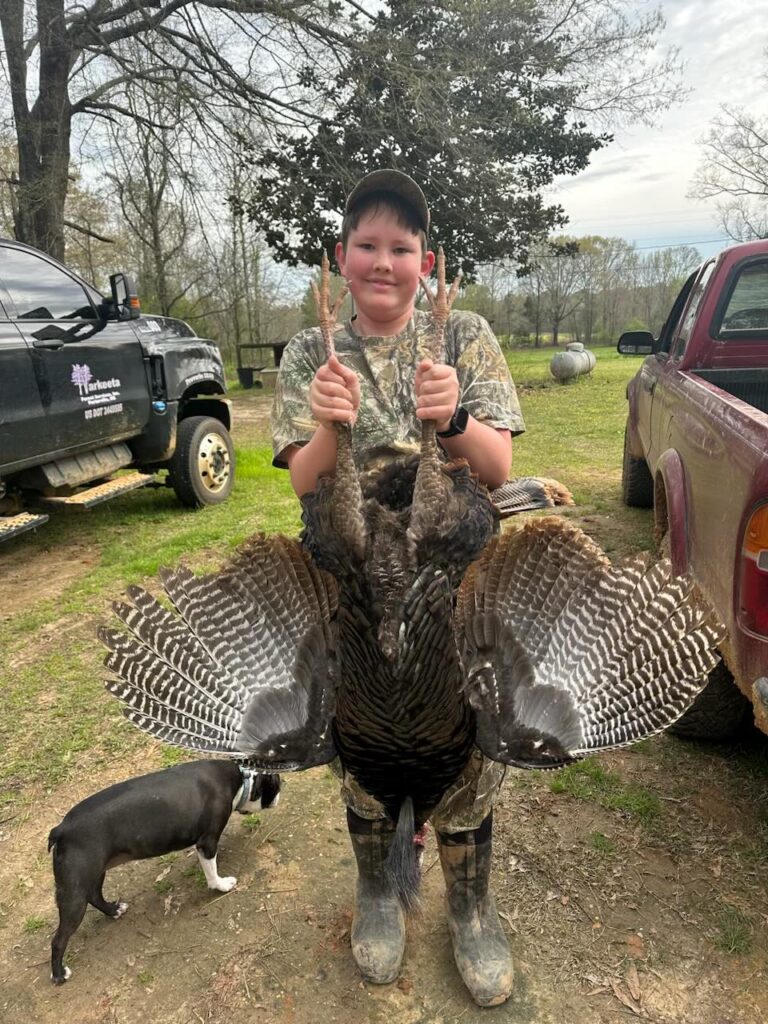
Wyatt Puckett, son of Michael and Wende Puckett, grandson of Sally and Jon Long, Bury and Kim Guin, great grandson of Jimmy Guin and the late Lou Guin, and Wayne and Claire Smith. “Congratulations Wyatt!”
Submitted by Claire Smith, Livingston Lines columnist and Wyatt’s great-grandmother. Email your trophy photos, and cool outdoors stories to [email protected]. Not only do they run for free in the paper, but we also run them on our award winning outdoors page at www.recordjournal.net the week after.
Outdoor Alabama Weekly
Field turkeys require special tactics, patience
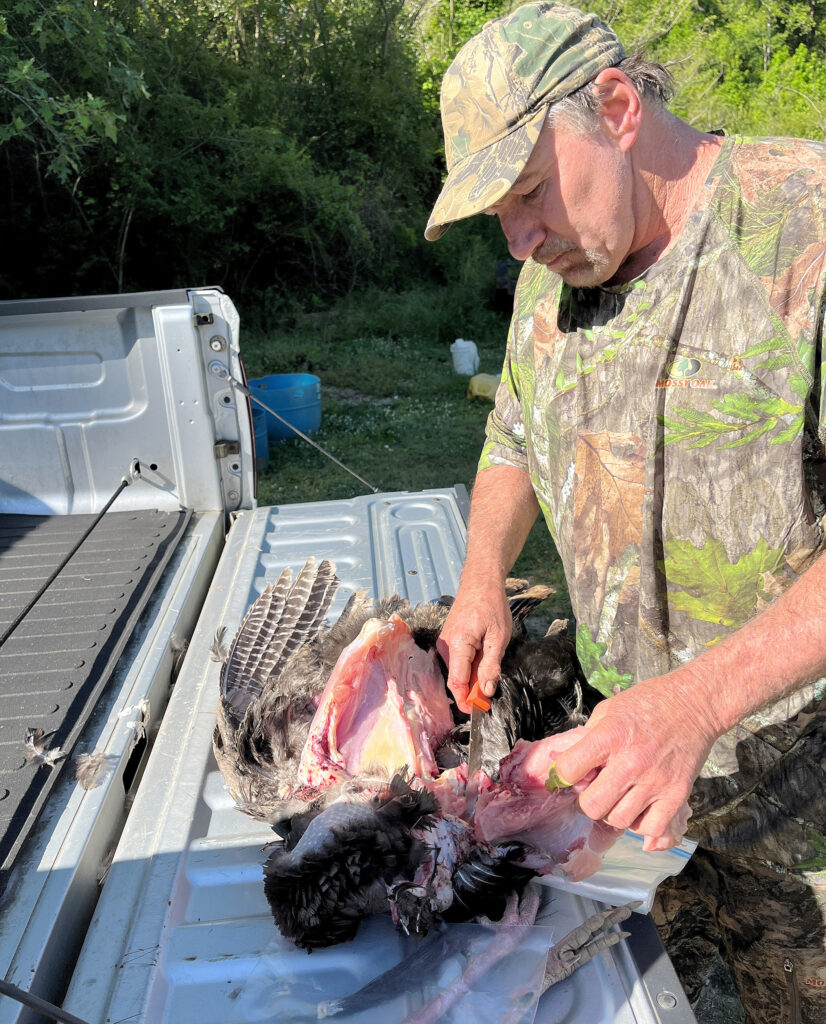
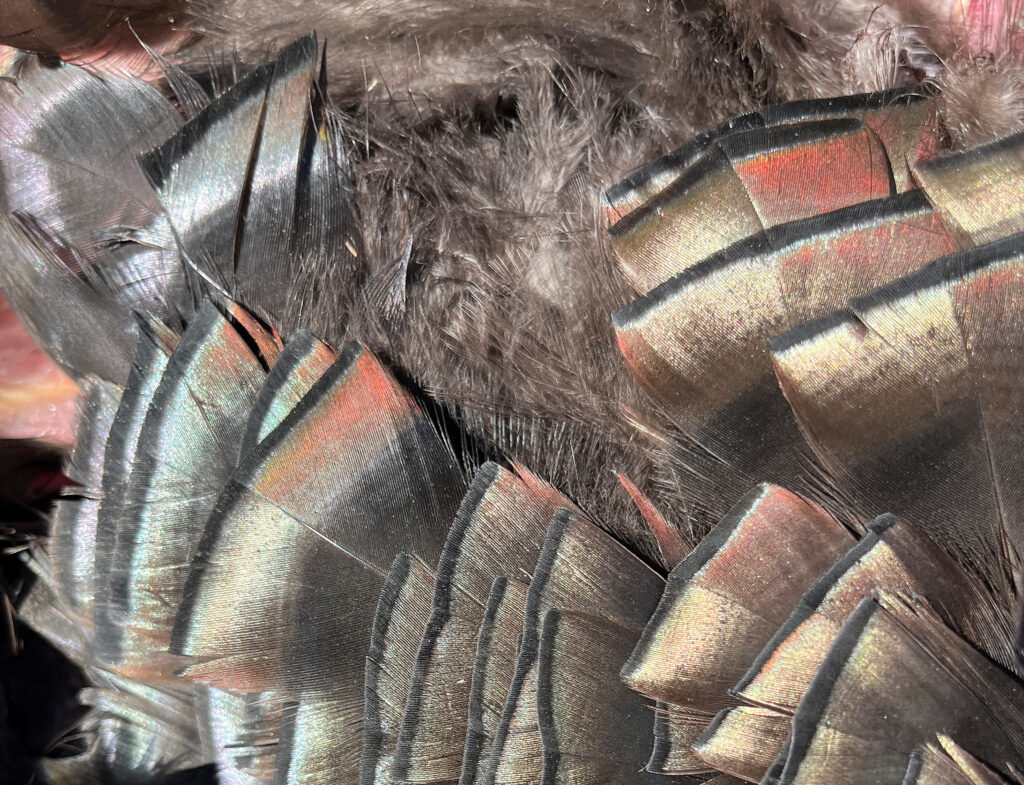
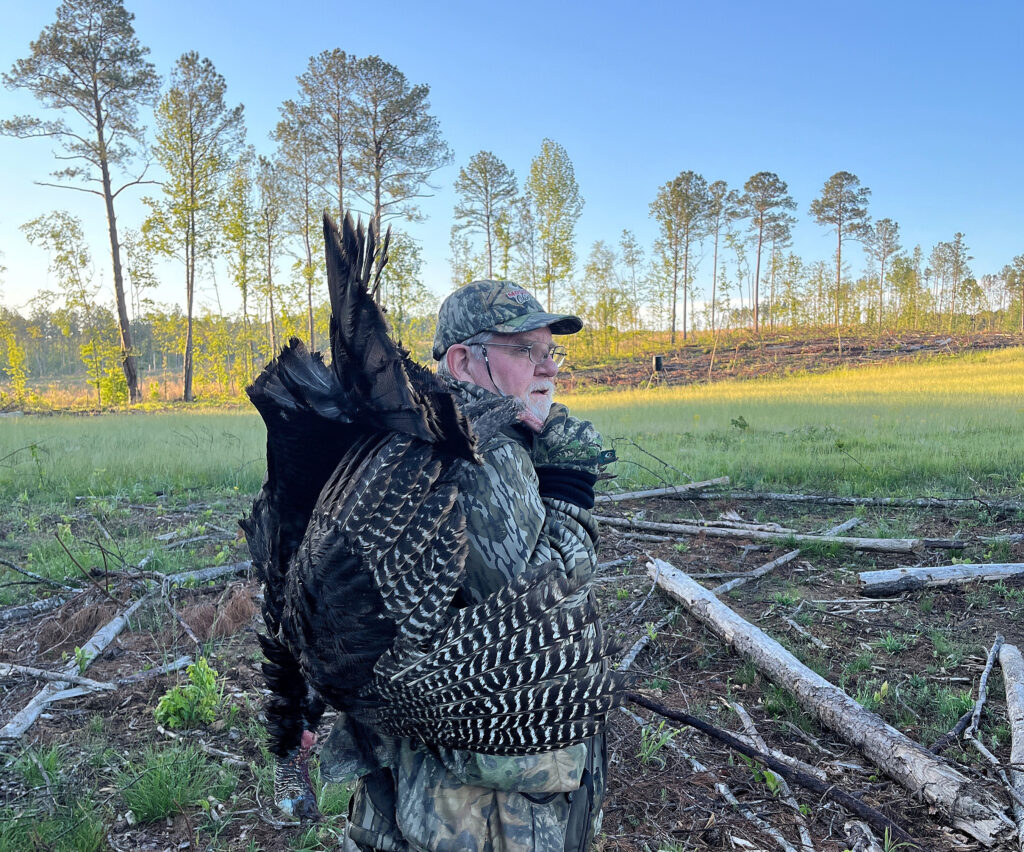
(David Rainer, Larry Norton) Sunlight gives the feathers of an Eastern wild turkey an iredescent quality. Hunting turkeys in wide open spaces requires concealment and patience. Two-time World Champion turkey caller Larry Norton of Myrtlewood removes the breast and thighs from the turkey.
By David Rainer, Alabama Department of Conservation and Natural Resources
One of the most frustrating aspects of pursuing the Eastern wild turkey in Alabama is hunting the wily birds in wide open territory, open agricultural fields or clearcuts for example.
With virtually no cover to hide, hunters may have to resort to somewhat extreme measures to bag a bird in the open. I remember trying to outwit what I call field turkeys with Preston Pittman, who has won so many turkey calling contests that I can’t list them all. Pittman finally said, “If I have to dig a hole in the middle of the field and get there at midnight, I’m going to figure out a way to kill this turkey.”
Late last season, I headed to Choctaw County to hunt a field turkey with Larry Norton, a two-time World Champion caller. The bird he had located was using a clearcut that had been cleared in recent years, which meant no real cover existed. Still, it was the only gobbling bird we found.
“I used to hate hunting field turkeys until I figured out how to do it,” said Norton, a longtime turkey guide at Bent Creek Lodge near Jachin. “When I first started hunting turkeys in a field, like most young hunters, I would be too impatient. Turkeys come to a field to feed. They might be strutting, but the main reason they come to a field is to feed.”
Norton said after calling to the gobblers for about 30 minutes, he would get frustrated and move to the other corner of the field, which could take another 30 minutes to keep from spooking the turkeys.
“I’d finally get to the other end of the field and look up, and the turkeys would be 20 yards from where I’d been sitting,” he said. “It happened several times until it finally dawned on me one day that I needed to start paying attention to what they’re doing in the field.
“What he’s doing is trying to fill his craw (crop) up, especially in the afternoon when he’s getting ready to fly up. He might be pecking around eating grass and seeds when a grasshopper takes off to the side. He goes to grab the grasshopper, and now he’s headed in the opposite direction. He’ll start pecking again and pick his head up to listen for the hen. Then he’ll turn back and start feeding in your direction. If he’s out there and fills his craw up, he’ll pick his head up and listen. Then he’ll head straight to you. Just about every turkey I’ve killed like that, his craw was filled slam full of stuff.”
If he gets on a gobbler later in the afternoon and doesn’t have time to get properly set up to hunt the turkey, Norton uses a different tactic.
“I try to remember where a turkey was gobbling around that field that morning,” he said. “Then I’ll back off 100 yards from the field. He’ll want to come to a hen that’s calling because his other hens are not being receptive. I remember hunting a turkey with Tom Fegely (the late outdoor writer) on a power line that had 15 hens with him. I was afraid if we got too close, it might intimidate the hens and they would leave, taking him with them. We backed off 100 yards from the power line, and I told Tom that he might come in quiet, or he might be drumming. Twenty minutes before fly-up time, I heard him drumming. He was easing our way pretty swiftly. Tom shot him at 20 yards.”
Norton also said field turkeys require specific calling techniques as well.
“If he’s got hens with him, do feeding calls, shy hen yelps, clucking and purring and scratching in the leaves,” he said. “You don’t want to intimidate the hens.”
Norton remembered a hunt where a gobbler was all ‘henned up’ with about 25 hens around him when the shy calling helped his hunter bag what became known as the “white lizard” turkey, one of Norton’s favorite hunts while he was guiding. Norton was standing beside a pine tree looking at turkeys in a 2 ½-acre field that had a significant slope with windrows.
“I was clucking and purring, and the hens started coming toward us,” he said. “The hens got close, and I knew the gobbler had to be right there somewhere, but I couldn’t see him. There was a log laying in the edge of the field, and I saw what looked like a white lizard coming down that log. I thought to myself that I’d never seen a white lizard, and then the gobbler walked out from behind the log. It was the top of his head I was seeing coming down that log.
“Sam (the hunter) was on his knees, and he got his gun up. After a few minutes, I could see the barrel start dipping down. I eased my right hand out and caught the barrel and held it up until the hens cleared away from the gobbler. I told him that when I turn the barrel loose you shoot. He came to Bent Creek 10 years later, and all he talked about was that white lizard.”
Another memorable field gobbler that Norton hunted numerous times was nicknamed the “glitter turkey” for a specific reason.
“That turkey was like a bird dog trained on a collar,” he said. “I’m pretty sure I called him up in this little hollow. He was shot but got away. I thought he would probably die, but he didn’t. I heard him gobbling after that and went to him. I yelped and he shut up. I went back to the truck and crowed a couple of times, and he gobbled. I went back down and yelped. Nothing.”
Later in the season, Norton and a buddy happened to ease up to a field, and the gobbler was out there by himself.
“My buddy said, ‘Let’s see you put some of the World Champion calling on this turkey and get this over with quick,’” Norton said. “I yelped one time, and that turkey came out of a strut and ran the other way.
“The next time I see him again in that field, I yelped real softly, and he took off running again.”
During the last week of the season, Norton recruited another buddy to try to figure out how to bag this bird, but he told his hunting partner to leave his yelpers at home. Another complication was the gobbler had roosted in a tree about 200 yards into an 8-year-old clearcut that was basically impenetrable.
“The turkey gobbled and gobbled and gobbled,” Norton said. “At 9 o’clock, my buddy said if I didn’t yelp at that turkey he was going to leave. So, I tried to yelp so low that he couldn’t hear me just to satisfy my buddy. Well, that turkey heard me and flew out of that tree to some big woods on the other side of the clearcut. My buddy looked at me and said, ‘What in the world have you done to that turkey?’”
Not far away was a field with strips of chufa planted. The hunters moved to the edge of the field and spotted hens and jakes feeding. About 30 minutes after getting set up, Norton spotted the infamous gobbler coming into the field.
“One of the hens saw him and clucked and yelped,” Norton said. “He turned around and ran away from his own hen. My buddy said there’s something bad wrong with that turkey. I told him to sit still, he’d be back.”
Sure enough, the gobbler came back 30 minutes later. One of his hens yelped, and he turned tail and ran toward a road on the end of the field. Norton backed away from the field and high-tailed it toward that road to try to cut him off.
“I eased up to the road and didn’t see anything,” he said. “Then I saw some bushes between me and the end of field wiggling a little bit. He stepped out in the road and looked into the field at his hens. I put the red dot on him. When he looked around, I shot him.”
What Norton found when he started field dressing the turkey explained all the gobbler’s unusual behavior and his “glitter turkey” nickname.
“He basically didn’t have a breast on his left side,” he said. “He had nine No. 4s in his back. His right leg had been broken, and his feet glittered with copper-plated No. 6s. He about ran me crazy.”
Our first encounter with the gobbler we hunted in late April ended when he followed one of his hens across the clearcut in the only spot where I couldn’t get a shot out of the blind.
We tried again the following week with only three days left in the season, and this time, his hen had abandoned him to tend to her nest.
“When he first started gobbling, he was at least a half-mile away,” Norton said. “He took his time. He probably had a hen or two to deal with. Once they left him, he headed our way.”
Within a few minutes, the gobbler circled around to the left of the blind, but this time, he chose the wrong side. I was able to slip the gun through the side window. I put the bead on his neck at 30 yards and pulled the trigger. He went down in a heap.
“Once his hens leave him, he’s like a buck in rut,” Norton said. “They only have a certain time to do their thing, and sometimes you can catch them where if you yelp one time, they’ll come running.”
Alabama Outdoors Weekly
Be sure of turkey season dates, WMA regulations
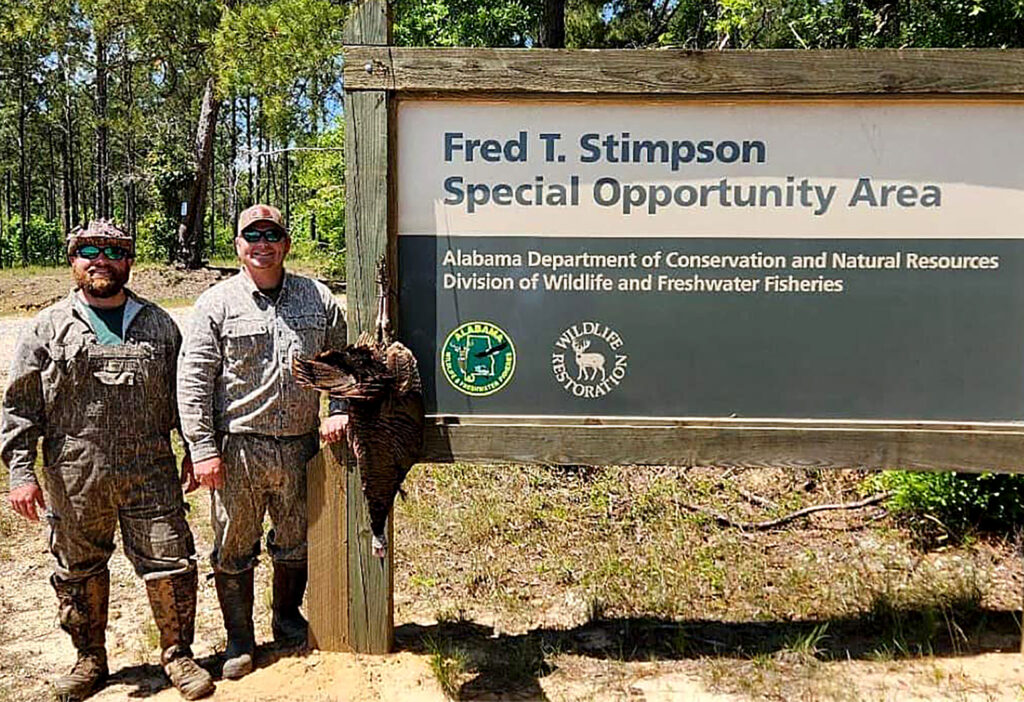
(ADCNR) Leave those turkey calls at home when you head out to go scouting on WMAs before the youth season starts. It is illegal to use remotely monitored game cameras on WMAs from March 1 through May 31. Logan Powell’s SOA hunt guest Tyler Joiner bagged this bird with a 10-inch beard at the Fred T. Stimpson SOA last spring.
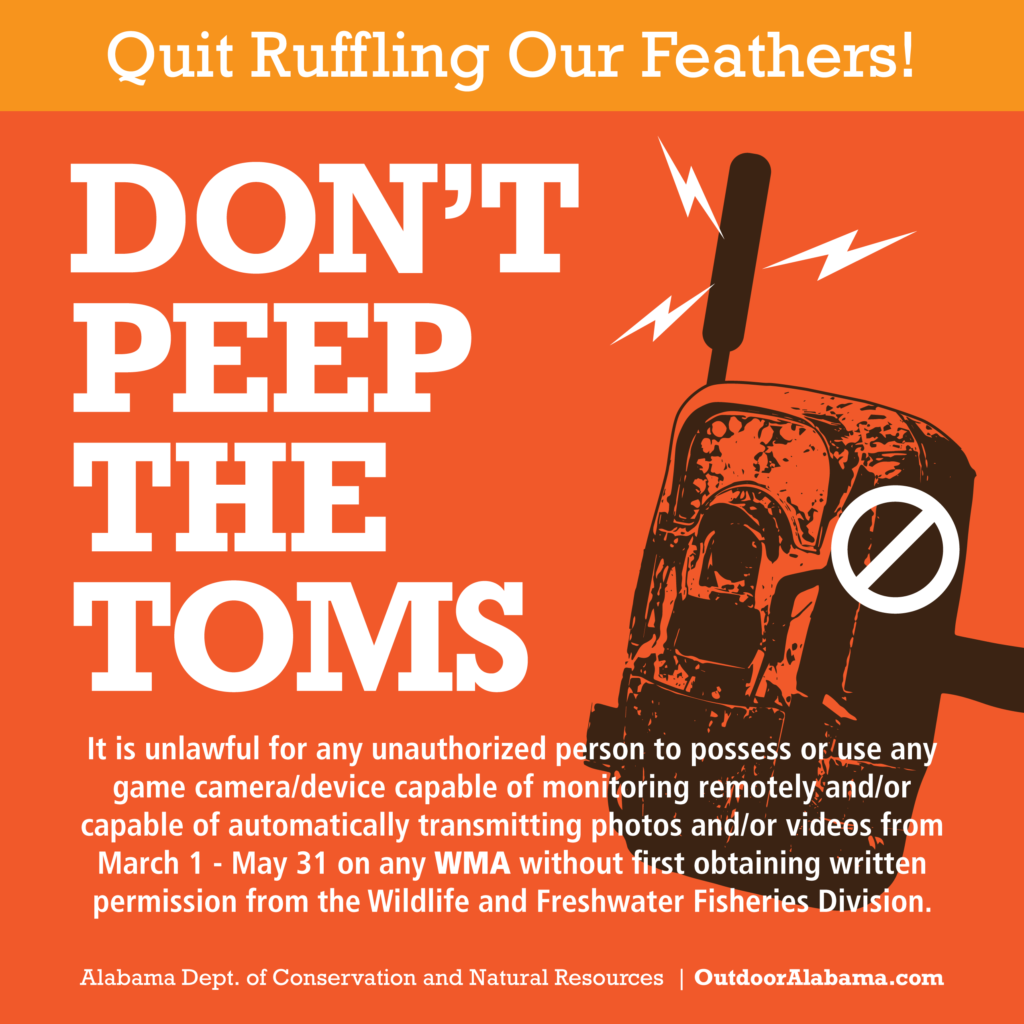
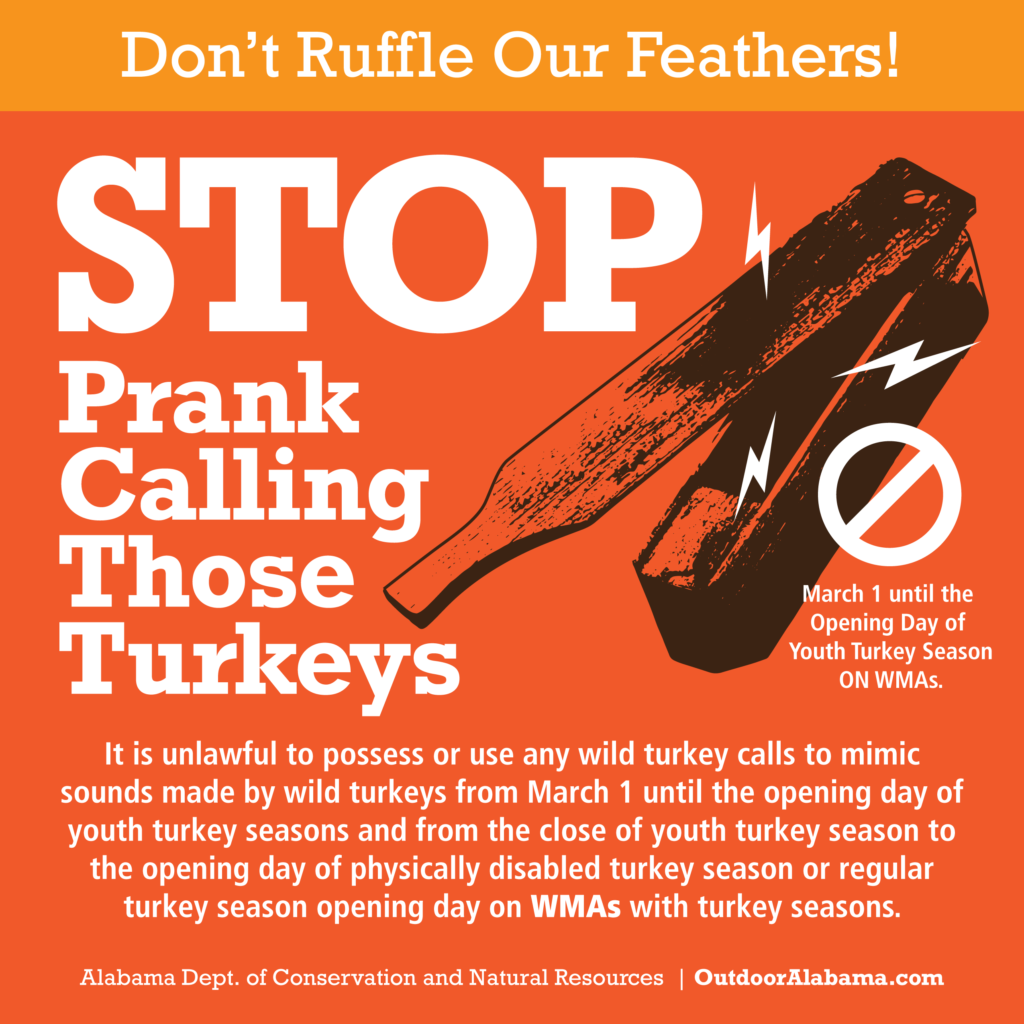
By David Rainer, Alabama Department of Conservation and Natural Resources
The spring turkey season in Alabama is fast approaching, and some confusion exists on the dates of the Special Youth Hunt that precedes opening day of the regular season.
Marianne Gauldin of the Alabama Department of Conservation and Natural Resources’ (ADCNR) Wildlife and Freshwater Fisheries (WFF) Division said this year’s opening day of the regular season falls on a Monday. That means the Special Youth Hunt will be on the Saturday and Sunday immediately preceding the opening day.
For Zones 1 and 3, where the regular turkey season is set for March 25 through May 8, the Special Youth Hunt will be March 23-24. The Special Disabled Hunt is scheduled for March 24. In Zone 2, the spring turkey season is April 1 through May 8, which means the Special Youth Hunt will be March 30-31, and the Special Disabled Hunt will be March 31.
Gauldin reminds hunters who pursue the Eastern wild turkey on Alabama’s wildlife management areas (WMAs) to become familiar with all the regulations regarding the WMAs.
“It’s important for WMA users to understand there is a WMA regulation in addition to the rules listed on the maps of the individual WMAs,” she said. “The regulation extends to all WMAs, and all WMA users should read the regs on the map and also be familiar with the WMA regulation (www.outdooralabama.com/WMARules).”
Gauldin said WMA users need to adhere to one older regulation and two new ones that apply to turkey season. Those regs deal with the use of turkey calls during preseason scouting, the use of certain game cameras and the use of drones.
The existing regulation states it is unlawful to possess or use any wild turkey calls to mimic sounds made by wild turkeys from March 1 until the opening day of youth turkey seasons and from the close of youth turkey season to the opening day of physically disabled turkey season or regular turkey season opening day on WMAs with turkey seasons.
One of the new regs states that it is unlawful for any unauthorized person to possess or use any game camera/device capable of monitoring remotely and/or capable of automatically transmitting photos and/or videos from March 1 through May 31 on any WMA without first obtaining written permission from WFF.
Also new is the reg that makes it unlawful for any unauthorized person to launch, land or possess or use any unmanned aerial vehicle (UAV)/drone on a WMA without first obtaining written permission from WFF.
WFF Director Chuck Sykes said these regulations are used to ensure that everyone who takes advantage of hunting on public land this spring will have equal opportunities.
“We manage 750,000 acres across the state for public hunting opportunities,” said Director Sykes. “You’ve got everything from national forests, where you can hunt every day of the season to WMAs with specific dates and times to SOAs (Special Opportunity Areas), where you get drawn for your own spot for three days and don’t have to worry about anybody else being there. So, there are multiple opportunities for residents and non-residents to hunt public land in Alabama.
“It’s public land. It does get pressured. But there are birds there, so the people who do their homework, study the maps, do their scouting and have patience take birds every year.”
However, when you head out preseason scouting for turkeys on WMAs, leave those turkey calls behind.
“We don’t want people out there before the season blowing turkey calls,” Director Sykes said. “I don’t do that on my own place, so why would I want that to take place on public lands. Why would you educate a bird before the season comes in? It’s not good common sense, whether you’re talking about public land or private land.
“Why would you want to go out in the woods with a turkey call before the season, call to a turkey and take a chance on him coming up and seeing you. You have that negative experience with a turkey call, and you go back in a couple of weeks and try to hunt him, using the same call in the same spot. That’s just not smart. I don’t want to give the turkeys too much credit, but I think they’re a lot smarter than that. We want to provide as much opportunity as we can, and spooking turkeys before the season is not good for anybody.”
Director Sykes said many states have already banned the use of certain game cameras during hunting seasons.
“Cellular-activated trail cameras have been outlawed in several states, especially in the West, where they used these cameras around watering holes where it’s dry and arid,” he said. “The use of these cameras gives them an unfair advantage over wildlife.”
Director Sykes said WFF is not advocating a complete ban on the use of cellular-activated cameras, but wild turkeys are particularly susceptible to being patterned because they usually stay in the same general area once they fly up to roost.
“Deer can travel at night,” he said. “It’s not the same as a turkey. If a turkey walks up and down a road during the daytime, and you have a trail camera that is sending you pictures automatically, it gives you an unfair advantage over that bird.”
The other popular method of surveillance is the use of the UAV/drone, which also provides an unfair advantage, said Director Sykes.
“Drones provide yet another way to remotely locate game and also have the potential to disturb and harass wildlife,” he said. “Once again, these prohibitions are in place to provide genuine turkey hunting experience opportunities and hopefully ensure that the last hunter in the area didn’t already educate the turkey or harvest them with these technologies.”
Director Sykes, who has hunted turkeys in Alabama most of his life, said making predictions about the upcoming spring turkey season is a difficult task.
“It’s going to be hit or miss, like it always is,” he said. “Some places are going to have a great spring. Some are not. I heard turkeys gobbling their brains out on Tuesday morning. Today (last Thursday), I didn’t hear a peep. That’s the way it’s going to be. That’s the way it’s always been.
“As long as we have some pretty days, especially on the weekends, we’re going to have birds killed.”
Director Sykes reiterated the advice about making sure you know the season dates and the regulations for the property you’re hunting, especially if it’s public land.
“Since regular season starts on a Monday, we have provided clarity as to when youth and physically disabled hunts will occur,” he said. “For most of the state (Zones 1 and 3), the 23rd and 24th is youth weekend. If you’re out there on the 16th and 17th, you’re going to get an award (citation).”
Visit www.outdooralabama.com/seasons-and-bag-limits/turkey-season for more information.
Alabama agencies meet to work on feral swine solutions
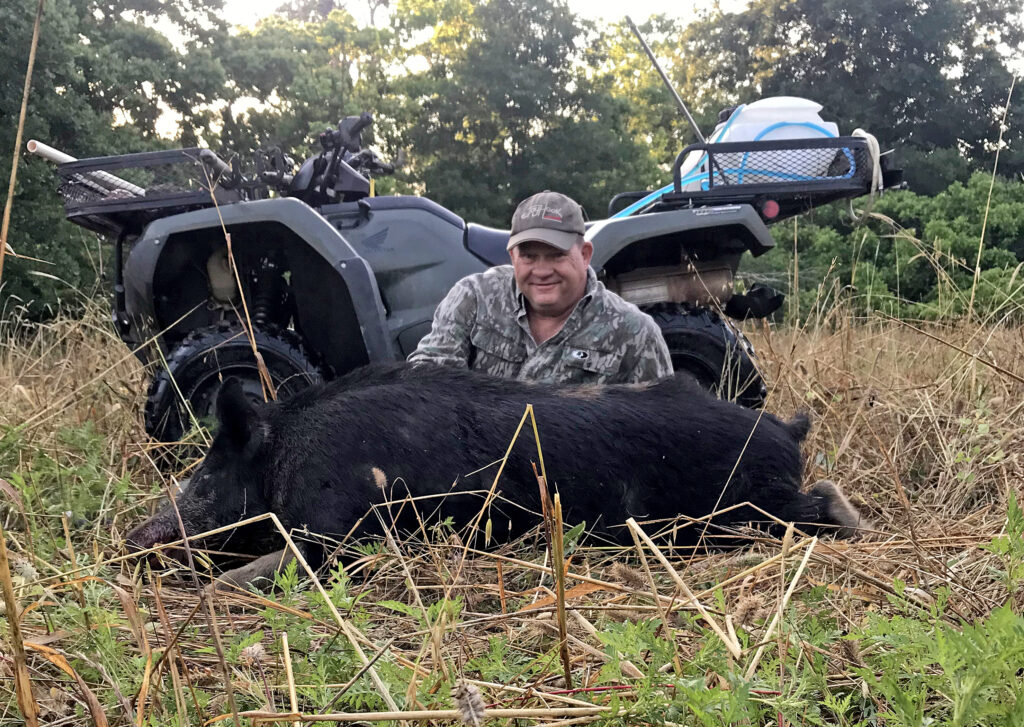
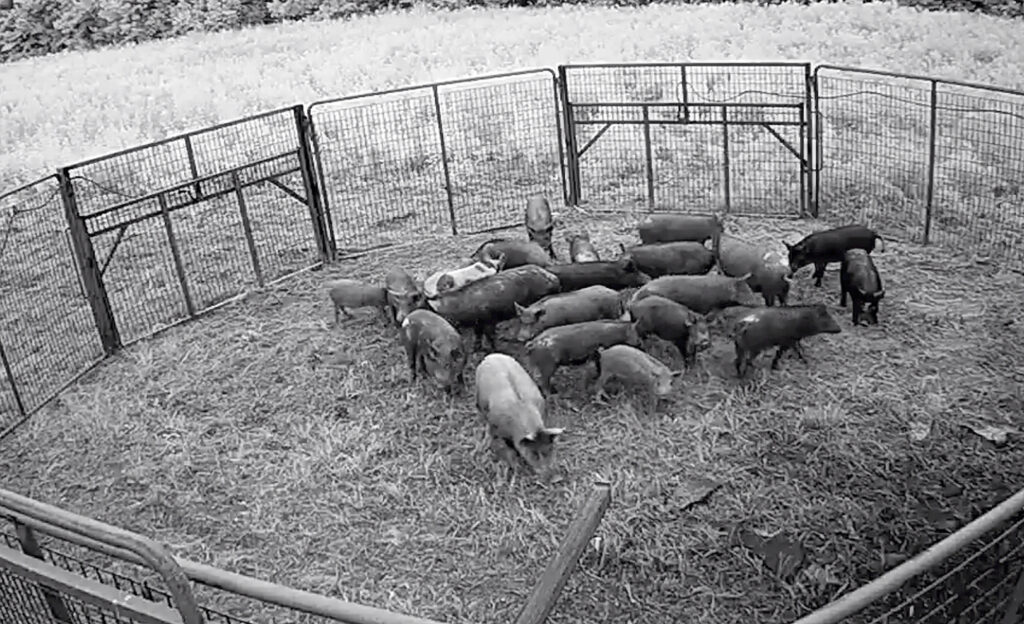
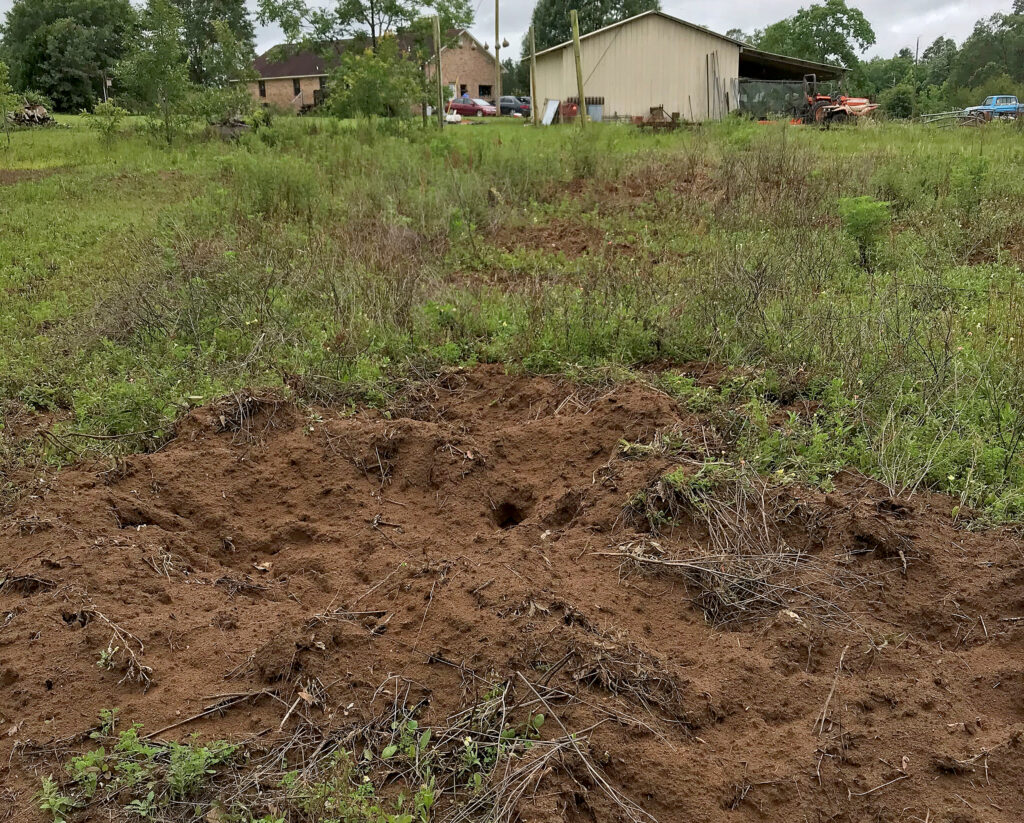
(Jay Gunn, ADCNR) Feral swine cause damage to agricultural operations and wildlife habitat across the state. Alabama hunters can take advantage of liberal seasons and bag limits on feral hogs. Trapping the whole sounder (family group) is currently the best method to reduce wild hog numbers.
By David Rainer, Alabama Department of Conservation and Natural Resources
Anyone who has explored Alabama’s great outdoors or spent time on a tractor cultivating an agricultural crop knows how destructive feral swine can be on the landscape.
Because of the prodigious reproductive capacity of these wild hogs, controlling the populations is difficult at best, and many researchers believe that total eradication of this invasive species is not a viable option.
Some are looking to methods other than hunting or trapping to control the hog numbers, and Texas recently approved the use of a warfarin-based toxicant called Kaput against the burgeoning swine population in that huge state. This action has spurred renewed discussion on the research and developments surrounding various types of feral hog toxicants.
The Alabama Department of Conservation and Natural Resources (ADCNR), the Alabama Department of Agriculture and Industries (ADAI), the Alabama Department of Environmental Management (ADEM), the U.S. Department of Agriculture’s (USDA) Wildlife Services Division, and the Soil and Water Conservation Committee met recently and came away with a unified position against approving any toxicant, including Kaput, in Alabama at the current time. These entities will continue to stay up-to-date on the latest research and real-world usage of toxicants and periodically revisit the issue.
“Since feral swine are such a huge issue, we thought it best to have a meeting of the top agency leaders for departments that are working in this space to make sure we are all in agreement with what is best for Alabama moving forward,” said Conservation Commissioner Chris Blankenship. “We had an open and frank discussion about the issue, and all agreed that, based on the information we have right now, Kaput was not the best toxicant for feral hog control in Alabama. I appreciate Commissioner (Rick) Pate and his staff, Director (Chuck) Sykes and the others who are very well versed on this issue. I think all of us coming together to discuss this and hearing all perspectives was very helpful.”
ADCNR Wildlife and Freshwater Fisheries Director Sykes said at the present time he is not sold on the idea that Kaput is the best solution to a difficult problem.
“Based on the data we have now, I’m not in support of it,” Director Sykes said of the use of Kaput. “There are a lot of questions about the use of toxicants. We’ve been working with the USDA for more than five years on the use of sodium nitrite.”
The warfarin-based toxicants rely on blood-thinning effects to dispatch the hogs. However, the hog may have to ingest the Kaput bait multiple times over a long period before it kills the animal. Sodium nitrite affects the hog’s ability to transfer oxygen in its system, and it works quickly. Director Sykes said the sodium nitrite bait is going through the licensing process, and he hopes it will be approved in the next couple of years.
“Sodium nitrite has proven to be very lethal, very effective and very humane in the way it dispatches the hogs during trial usage in Alabama, so we know it works here,” Director Sykes said. “And it doesn’t continue to kill on down the food chain line. The pig just eats the product, gets sleepy, lies down and doesn’t wake up. The product depletes the oxygen in the bloodstream.”
Director Sykes said the sodium nitrite is administered through a peanut butter-based bait that won’t be available to the general public.
“Toxicants won’t be something that will be available on the shelf at the local co-op for everybody to use,” he said. “This will be for trained, licensed applicators, federal agencies and state agencies to use.”
ADAI Commissioner Pate said any toxicants like Kaput or sodium nitrite will have to be licensed by his agency before they become legal to use.
The ADAI’s current stance on a warfarin-based toxicant is:
- There remains insufficient data to justify registration in Alabama considering the toxicity of the product and the known issues that may potentially result from its use.
- There are significant differences in the environmental landscape and environmental conditions that exist between Alabama and Texas, where the product is registered for use.
- The label and the ability of the applicator to follow the instructions on the label are of great concern.
- There appears to be a level of training and education (product specific) that would need to take place, especially in the case of private applicator use of the product.
- Hogs need to feed multiple times to get the desired result.
- The potential for sub-lethal dosing and resistance remains a concern.
“We don’t want to minimize the (hog) problem, because we know it’s huge,” Commissioner Pate said. “The problem is real. We want to take out as many pigs as possible, but we want to do it the right way. We don’t want to jump the gun on this toxicant and regret it down the road. Smart people are working on solutions. We’re trying to do as much as we can as fast as we can.”
Leif Stephens with the USDA Wildlife Services office at Auburn said his agency is working diligently on solutions to the feral hog problem.
“The USDA Wildlife Service remains committed to seeking a suitable feral swine toxicant that is highly effective and humane and also poses low risk to non-target species, coupled with cost effectiveness, storage stability and efficient applicator use,” Stephens said. “Those are the key boxes that we want to check when it comes to utilizing toxicants.
“We recognize the warfarin-based toxicant Kaput was recently registered in Texas. Currently, the data on the use of this product does not support our operational needs as a rapidly acting control method, coupled with a low operational cost. Those boxes I mentioned earlier are not being checked at this time.”
Stephens said Wildlife Services has several employees who are tasked with controlling feral swine and the damage they cause throughout the State of Alabama.
“This is something we deal with on a daily basis,” he said. “It’s in our face every day, all day, it seems like. It’s important to maintain a variety of control methods to combat these invasive species. No one method will solve feral swine issues. There is not a silver bullet per se. Utilizing multiple control techniques in the management plan is the best way to control feral swine.”
Stephens said the use of a bait with sodium nitrite shows promise, but it needs further refinement before it is approved.
“The sodium nitrite bait offers a lot of hope,” he said. “Right now, we’re trying to reformulate the toxicant so it would minimize the effect on non-target species. When you’re putting toxicants on the landscape, you don’t want to have it out there for a long duration of time. You want something that’s cost effective and very efficient when it’s being applied and humane as well.”
According to the USDA, feral hogs cause more than $1.5 billion in damages to property, crops, timber, livestock, native wildlife, ecosystems and cultural and historic resources nationally each year. Damage from feral hogs in Alabama is estimated at $50 million annually.
“Right now, we have hogs in all 67 counties,” Director Sykes said. “Of course, some are a lot worse than others. Most people with hog issues are doing everything they can to keep the numbers in check. We need to get control of the numbers and keep them from exponentially multiplying.
“What the Department has done is to have very liberal seasons and bag limits where you can hunt hogs year-round during the daytime. There’s no daily bag limit or season bag limit. From February 11 to October 1, you can buy a nighttime feral swine and coyote license and hunt them 24 hours a day, seven days a week. Throw a baiting license in and you can hunt them over bait.”
Director Sykes said while providing great opportunities for Alabama’s hunters, shooting feral swine is not the best current method to control the herds. Trapping the whole sounder (family group) is the best way to reduce hog numbers.
“You can trap hogs 365 days a year with no season or daily bag limit,” he said. “Removal of the whole sounder is the best tool that we have at our disposal right now. We’re employing that on a lot of state-owned property.”
Recently, the Forever Wild Land Trust Board of Trustees voted to spend up to $1 million on feral hog removal efforts on Forever Wild properties. The Forever Wild program is administered by ADCNR’s State Lands Division.
Director Sykes also said WFF offers assistance with crop depredation permits where warranted.
“For producers who have hog damage in their agriculture processes, we do offer crop depredation permits even during deer season,” he said. “The producers let the district office know they have issues. We send a biologist out to verify. If the damage is confirmed, permits will be issued to help producers.
“We want everybody to understand that when considering depredation permits, we have to work in a way where we are not putting undue pressure on some of our native resources. If it’s a producer who has significant damage, we have permits for that. Also, we want to give everybody, like a recreational shooter, the opportunity to take hogs, which is why we have liberal seasons and bag limits. We teach trapping classes to educate landowners and managers on the proper techniques. We’re doing what we can to deal with the feral hog problem.”
Alabama Outdoor Weekly
Conservation Advisory Board Celebrates Successes and Remembers Those Lost
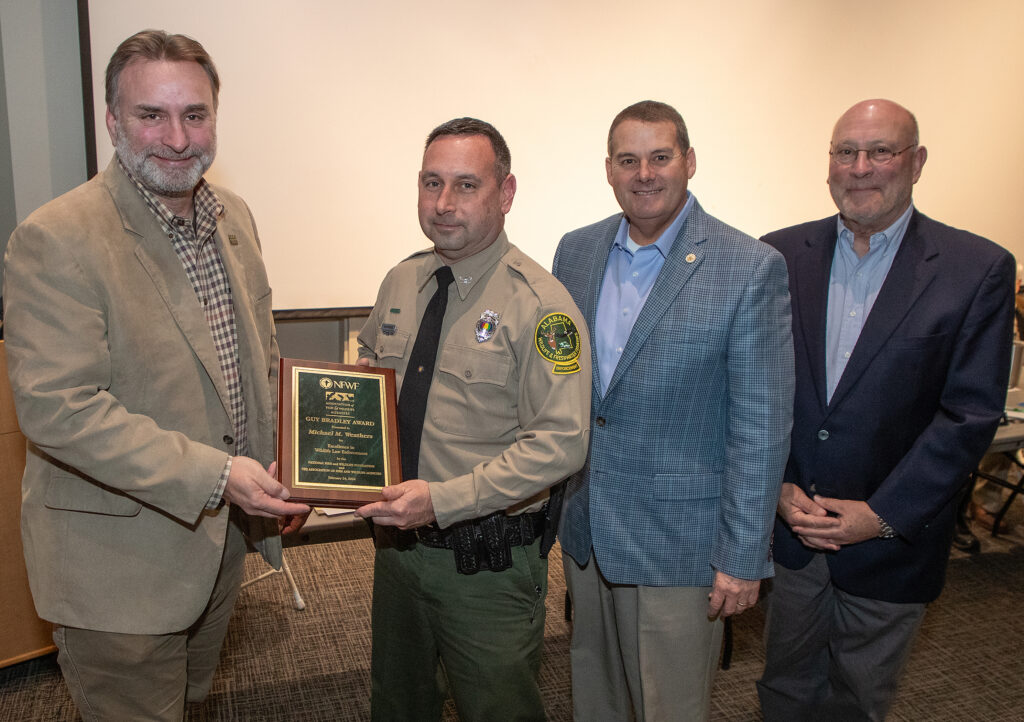
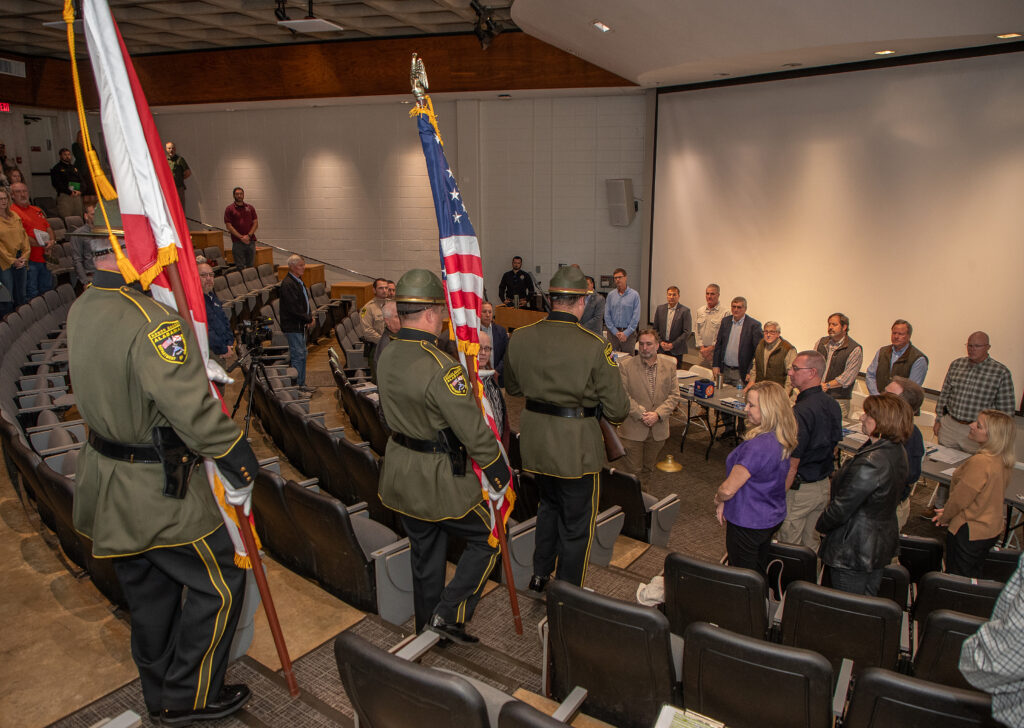
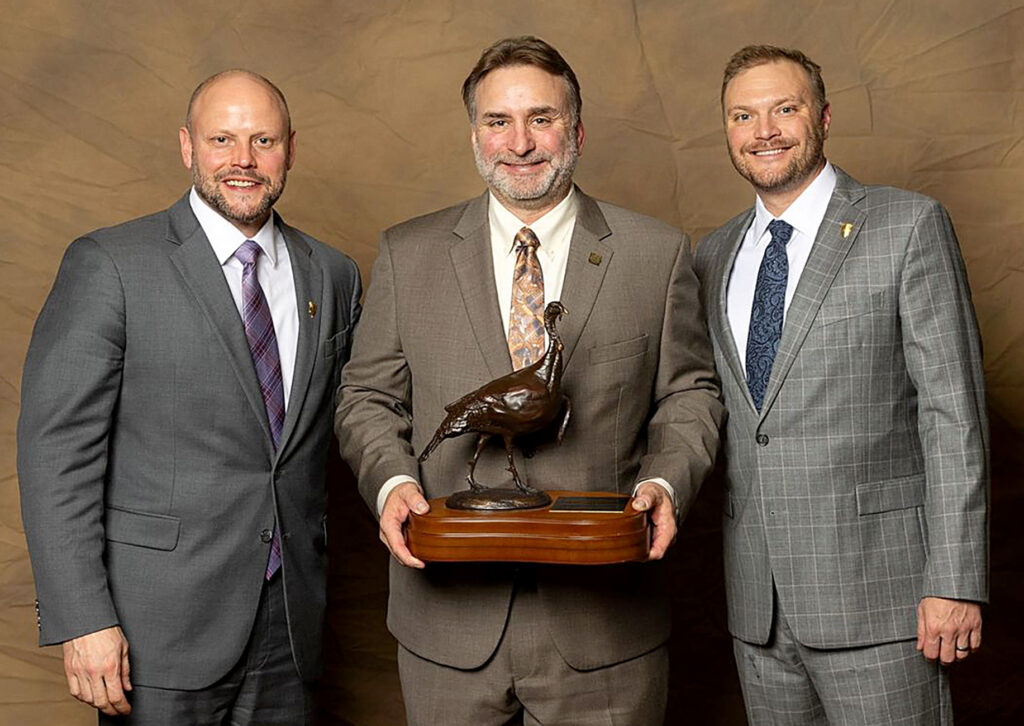
Billy Pope, NWTF) Enforcement Chief Michael Weathers is joined by CAB Chairman Joey Dobbs, right, Conservation Commissioner Chris Blankenship, second from right, and WFF Director Chuck Sykes, left, as Weathers receives the NFWF Guy Bradley Award. Chuck Sykes receives the C.B. McLeod Award from NWTF Co-CEOs Kurt Diroff, left, and Jason Burckhalter. The WFF Honor Guard presents colors at the recent Conservation Advisory Board meeting at Auburn.
By DAVID RAINER
Alabama Department of Conservation and Natural Resources
The first 2024 meeting of the Alabama Conservation Advisory Board was a celebration of accomplishments and a remembrance of those no longer with the conservation community.
The celebration started with the recognition of two members of the Alabama Department of Conservation and Natural Resources’ (ADCNR) Wildlife and Freshwater Fisheries (WFF) Division. Conservation Commissioner Chris Blankenship recognized the awards given to WFF Enforcement Section Chief Michael “Matt” Weathers and WFF Director Chuck Sykes during last weekend’s meeting at Auburn University.
Chief Weathers was recognized as the recipient of the National Fish and Wildlife Foundation’s Guy Bradley Award for his contributions to wildlife law enforcement. The award was established in 1988 to recognize the officers who have made outstanding lifetime contributions to wildlife enforcement, wildlife forensics and investigative techniques.
“In 1905, Guy Bradley, a Florida game warden, became the first wildlife enforcement officer killed while performing his duties to protect our nation’s wildlife,” Commissioner Blankenship said. “Law enforcement officers like Bradley are essential to virtually every aspect of wildlife conservation.”
Director Sykes presented the plaque to Chief Weathers and highlighted the significance of the award, saying, “It’s a big deal.”
“It’s an absolute honor to be recognized for this award,” Chief Weathers said. “I’ve been so fortunate to have had the finest men and women in conservation showing me the way and mentoring me throughout my career. To have had the opportunity to protect the natural resources of the state that is my home has made for a very rewarding career.
“Having the support of Commissioner Blankenship, Director Sykes and all our Conservation Enforcement Officers has made all the difference. We have so many new initiatives like public shooting range expansions and the continued modernization of our Law Enforcement program that are being used as the blueprint for other states. Having folks like this to work with makes success easy.”
Director Sykes recently received the National Wild Turkey Federation’s (NWTF) C.B. McLeod Distinguished Service Award, an award to recognize outstanding NWTF volunteers who have dedicated their lives to wildlife conservation and hunting heritage.
“That is one of the premier awards of the National Wild Turkey Federation, and we’re very proud of Chuck,” Commissioner Blankenship said. “Chuck is also President of the Association of Fish and Wildlife Agencies this year. We appreciate his service to Alabama but also on a national level, bringing some of the successes we’ve had in Alabama and being able to share that work with other states to make a difference like it has in Alabama.”
Director Sykes said he was at the NWTF Awards Banquet when he realized the exclusiveness of the McLeod Award.
“I didn’t realize how big this was until I’m sitting at the table that night and looking at the list of people who had won the award,” Director Sykes said. “You had NWTF royalty on the list, like Dick Kirby, Tom Kelly and Dale Rohm. I don’t know that I deserve it, but I am very proud to have it and be considered in that group of people.”
Commissioner Blankenship also apprised the Board of the variety of projects under the ADCNR umbrella that are underway or scheduled to start soon.
“We are really blessed here in Alabama with our natural resources and great people,” he said. “I’m very grateful to be the Commissioner of Conservation and for the work this Board and our staff do to enhance and protect the resources of our state.”
Commissioner Blankenship then listed the ongoing and upcoming projects administered by ADCNR or the National Fish and Wildlife Foundation and implemented by partner agencies, like the Mobile County Commission, The Mobile Bay National Estuary Program, and various coastal cities and towns.
“Many projects that have been in the engineering, design and permitting stage are now under construction,” he said. “It’s really a testament to the work of our staff, the people of Alabama, our partner agencies, and the Legislature to give us the ability to do good things.
“There are more than $1 billion in projects in Mobile and Baldwin Counties from the Deepwater Horizon Oil Spill funding sources that are completed, underway or approved. There will probably be another $500 million to $600 million in projects that will continue through 2031 when the last deposit is made from BP.”
Commissioner Blankenship cited the beach renourishment work that is happening from Gulf Shores through Gulf State Park to Orange Beach in Baldwin County and Dauphin Island in Mobile County.
Other projects are:
- $26 million for Dauphin Island Causeway protection and habitat enhancement
- $22 million for project in Theodore Industrial Canal and marsh habitat protection south of the entrance to the canal
- $6 million for Bayfront Park renovations in Mobile County
- $2 million for the Dauphin Island Ecotourism project
The Commissioner also highlighted the rebuilding of the cabins on Lake Shelby at Gulf State Park.
“Gulf State Park’s cabins, if you recall, were destroyed by Hurricane Sally,” he said. “Those 20 cabins have been rebuilt for about $9 million and reopened to the public on February 1. They are beautiful. They are first-class, and I think everyone will enjoy those cabins on Lake Shelby.
“Also, the Romar Beach parking and bathroom facility work has been completed. The Gulf State Park Pier damaged by Hurricane Sally is undergoing a $14 million rebuild.”
The Commissioner also praised the $19 million Bayou La Batre sewer outfall project that has been 10 years in the making.
“The project will move the outfall about four more miles offshore,” he said. “Where that is important to this Board is that it will help with the oyster industry both on public reefs and the oyster aquaculture industry by opening more areas as approved growing zones once that outfall is relocated.”
Commissioner Blankenship noted that Governor (Kay) Ivey awarded more than the $67 million in GOMESA (Gulf of Mexico Energy Security Act) funds last July for 26 projects in Mobile and Baldwin counties, and more will be announced this spring.
Boating access will be a priority for the Department, the Commissioner said, with more than $30 million dedicated for access in the next few years.
“I’m excited about that,” he said. “We have more navigable waterways in Alabama than any other state, and we are committed to providing access to our public. I appreciate the work done by our Wildlife and Freshwater Fisheries Section, our State Lands Division and Marine Resources Division as well as our State Parks, where we will have boating access on those properties around the state. As Tim Wood (Board member from Selma) said, the Selma Boat Ramp was built with multiple funding sources, and we were glad to be a partner in that. I would like to thank Deputy Commissioner (Ed) Poolos for bringing multiple agencies together to do that project. That is going to be a great asset for Selma to be able host fishing tournaments and bring needed revenue to the area.”
Commissioner Blankenship also pointed out the importance of shooting sports to the future of wildlife conservation.
“We are building a new world-class shooting range near Columbiana and expanding other shooting sports facilities over the next few years,” he said. “Just for interest to the Board, shooters who don’t necessarily hunt are the largest contributors to the Pittman-Robertson program. It is eye-opening that shooters pay the bulk of the excise tax on firearms and ammunition that helps us manage the wildlife in this state. We plan to do more to support them and continue to increase the revenue for that program. We feel like it’s a good investment for not only the shooters but the wildlife in our state.”
Meanwhile, Alabama State Parks is using the $80 million in bond money to do a variety of projects throughout the state.
“One of the largest projects will be the new Cheaha hotel and lodge,” Commissioner Blankenship said. “That will be a beautiful facility on the bluff. We are planning to use wood taken from ADCNR properties and milled here in Alabama. The trees will be harvested, and the areas will be replanted with longleaf pines. The new lodge will be strikingly beautiful and will be a great example of how to sustainably build with these natural materials.
“Lake Lurleen will have a total rebuild, and Gulf State Park will have a campground expansion on the old golf course property. Those three projects together will be in the $50 million range.”
Other State Parks projects include:
- $12 million Oak Mountain campground renovations
- $4 million Lake Guntersville golf course cart paths, pro shop and cabin renovations
- DeSoto pool house and facilities renovations
- $7.5 million Meaher campground expansion, new cabins and administration building
- Monte Sano campground and cabins renovations
- $11 million Wind Creek cabin construction and campground renovations
- Joe Wheeler lodge and pool upgrades
- Rickwood Caverns new pool renovations and new pool house
- Lakepoint renovations at lodge and cabins
“The driving range at Oak Mountain is now lighted, which will produce income,” Commissioner Blankenship said. “This will capitalize on the use of that facility and get people out after dark when it’s a little cooler.”
Commissioner Blankenship said $2 million will be used at the Forever Wild M. Barnett Lawley Field Trial Area to build a meeting facility and pavilion, expand the barn and paddocks and build new bathrooms.
“These projects will support more than 35 dog trials and events held each year,” he said. “With these new facilities, we hope to be able to host more regional, national and international dog trials.”
Several important members of the outdoors community were also remembered at the Board meeting, including WFF Conservation Enforcement Captain Marisa Futral, former State Senator and Conservation Advisory Board member Jack Biddell, and James “Big Daddy” Lawler, a media personality and champion of Alabama’s outdoors, especially in the Black Belt region. Former Conservation Advisory Board member Dr. Bob Shipp also passed earlier this year.
“We had a great loss in Marisa Futral,” Commissioner Blankenship said. “She is going to be very difficult to replace in the Department. We will miss her and her work ethic and what’s she’s done for shooting sports and hunter education. We also want to mention the passing of Senator Jack Biddle, a former member of the Conservation Advisory Board. Many of you know Big Daddy Lawler from Wilcox County, who promoted hunting and fishing in the Black Belt and got the word out across the state and country about what we have to offer. He will be missed.”
Co-winners crowned in ALBBAA Big Buck Photo Contest
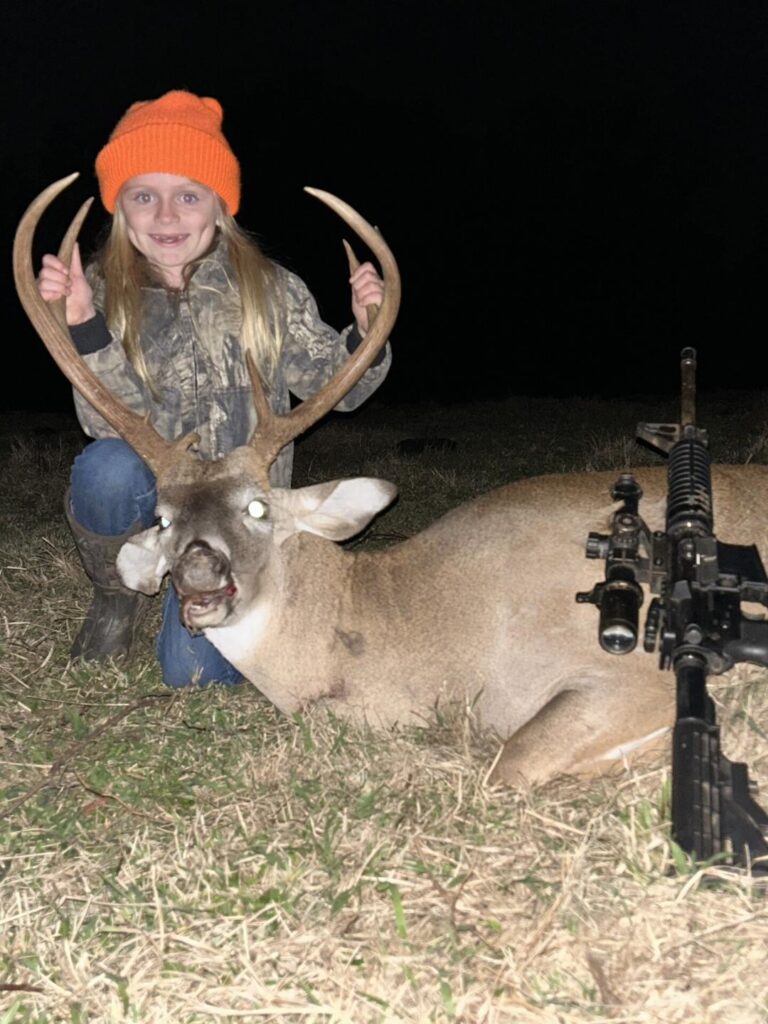
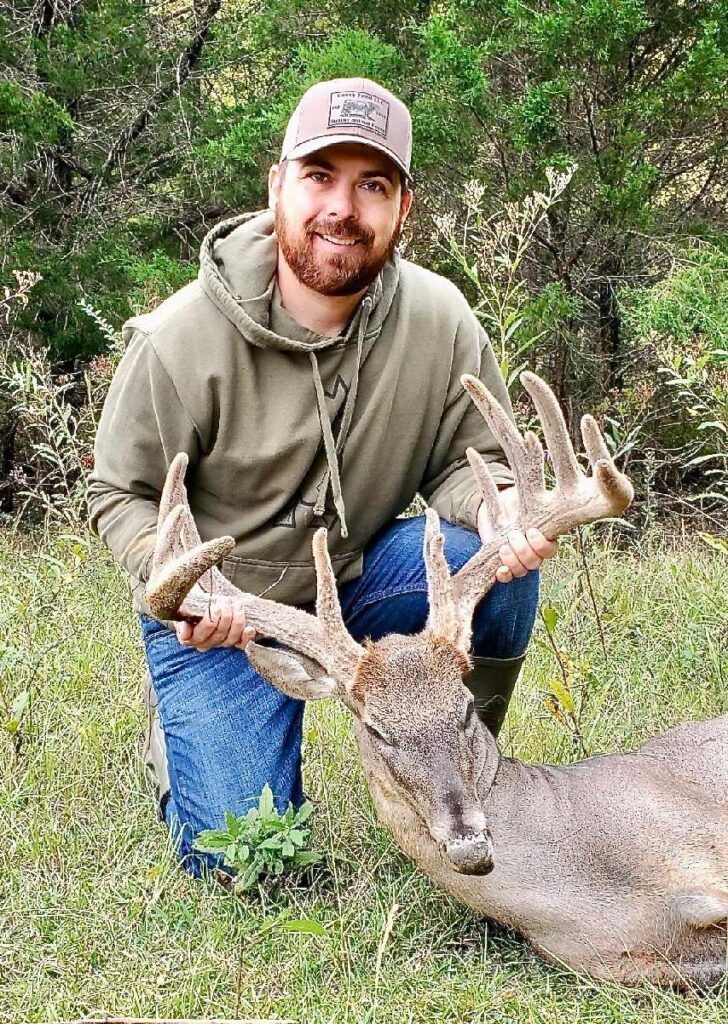
Olivia Faulkner, a second-grade student at Troy Elementary School, harvested her first buck on Thanksgiving Day 2023. (Photo Courtesy of Alabama Black Belt Adventures)
Chad Stinson harvested a 13-point velvet buck. It was his first harvested buck with a bow. (Photo Courtesy of Alabama Black Belt Adventures)
MONTGOMERY, Ala. (Feb. 29, 2024) – The Alabama Black Belt Adventures 12th annual Big Buck Photo Contest received dozens of entries and thousands of online votes.
In the end, two photos – one of a smiling 7-year-old girl after harvesting her first buck and a Pintlala man who harvested a 13-point velvet buck – stood above the rest. The two photos were separated by only four votes, so Olivia Faulkner and Chad Stinson have been declared co-winners of this year’s contest.
“We’re so appreciative that so many people submitted photos in this year’s contest, and the votes were being cast right up until the contest’s final minutes,” said ALBBAA Director Pam Swanner. “These two photos clearly resonated with voters, and we think it’s appropriate to honor both entries. What’s really special is both photos commemorate truly memorable hunts. For both hunters, Alabama’s Black Belt definitely delivered a memorable experience.”
Stinson and Faulkner will each receive a game camera valued at approximately $175 courtesy of Central Alabama Farmers Cooperative in Selma.
Stinson said his big buck appeared on his game camera for the last three seasons, eventually showing up virtually every day at 6:30 a.m., and again at 5:45 p.m. On the first day of the season, he went to his deer stand on family land in Montgomery County around noon hoping to get his first bow kill.
“I sat there for five hours and 45 minutes, and he ran in there with a group of bachelor bucks. A six-point came out and then an 8-point. … Right behind him, here he comes,” Stinson said. “They come right up to me and they are literally at 29 yards. That’s what I’ve been practicing – 30 yards. That’s all I need. So, I draw back and those two small bucks come out and that big buck, you see how they grow so big. They’re smart. He stood behind that six-point that entire time.”
The moment required Stinson to exercise patience, but it wasn’t easy.
“It got so bad, I could feel my quiver hitting my cheek,” he said. “I was shaking so bad. Finally, after what felt like an eternity, the six-point bent down to eat and he stood straight up, and when he did, that was my only opportunity, and I let it go.”
It was Stinson’s first time to harvest a buck with a bow, and the fact that the 13-pointer was a velvet buck made it more memorable.
For Faulkner, she harvested her first buck on Thanksgiving Day on a hunt on leased land in Montgomery County. The buck arrived with several others, but she spooked it by accidentally dropping her headphones in the shooting house.
“We were both down in the dumps about it,” said Morgan Faulkner, Olivia’s father.
Things changed just a few minutes later.
“He came back from the woods,” said Olivia, a second-grade student at Troy Elementary School. “I was really scared and shaking before I took the shot. It was my first buck, and I was really happy about that.”
The Black Belt includes the following 23 counties: Barbour, Bullock, Butler, Choctaw, Clarke, Conecuh, Crenshaw, Dallas, Greene, Hale, Lee, Lowndes, Macon, Marengo, Monroe, Montgomery, Perry, Pickens, Pike, Russell, Sumter, Tuscaloosa and Wilcox.
Do not handle bats, ADPH cautions
The public is cautioned not to handle bats. Bats, along with raccoons, are the primary reservoirs for rabies in Alabama. Rabies is a viral infection in mammals that is transmitted by bites, scratches or other contact with infected saliva. Rabies virus is present only in saliva and nervous tissue; it is not transmitted through contact with guano (bat feces), blood or urine from infected animals.
Rabies is a fatal disease if left untreated, but it is preventable if proper treatment is received soon following the bite or scratch. Anyone exposed to a bat should consult with a medical provider immediately.
Estimates vary, but generally it is estimated that only a small percentage of the bat population is positive for rabies. Oftentimes infected bats will not be able to fly or will be out during the day, but bats can also be infected without showing signs. Therefore, laboratory testing is the only definitive method for identifying rabies-positive bats that may have exposed humans. In 2023, the Alabama Department of Public Health (ADPH) reported 13 laboratory-confirmed rabies-positive bats.
According to Dr. Dee W. Jones, State Public Health Veterinarian, the most important step to take following a potential bat exposure is not to kill the bat by blunt-force trauma. He states, “The challenge is collecting the bat without further exposing yourself, so gloves should be worn and a shovel, net or other tools can be used to avoid touching it if possible.”
The ADPH recommends putting the bat in a container with air holes and taking it to a licensed veterinarian for euthanasia. Dr. Jones states that trauma to the head of the bat is the most common reason that accurate testing cannot be performed. The result of mauled or damaged specimens is people must take treatment for rabies who otherwise would not have needed to if testing could have been performed. The treatment regimen is one dose of rabies immunoglobulin and a series of four vaccine doses over a two-week period.
Bats are considered to have a higher risk for rabies transmission to humans than other wildlife because of a unique feature not found in most other common rabies carriers. Bats have very small teeth that can puncture the skin. Their bites are often somewhat painless and may not leave characteristic bite wounds.
Although most people should definitely feel a bite from the bat, there are some situations in which a person could be bitten and not be aware of it. Examples of people that could be exposed and either not know it or not be able to tell someone include the following:
· A person sleeping
· A person with a mental disability
· An infant or toddler
For this reason, there are very strict guidelines concerning bat exposures to reduce the chance of rabies infections.
According to Dr. Jones, “Exposure to bats is more complicated than other animal bites because not only is there a lack of awareness that bats can have rabies, but also that their bites may be much more subtle than the typical animal bite.”
Bats have been the sole cause of all human rabies fatalities acquired within the United States over the past 20 years. Alabama has had one human death from rabies in that period, but many more reported exposures that resulted in the need for rabies preventative treatment.
Although, bats do have an associated public health risk, they are a very important species to nature. They consume insects, biting pests and pollinate flowers; the only problem arises when there is human contact.
“Problems arise when bats and humans inhabit the same dwellings,” Dr. Jones said. “It is common for bats to roost in the rafters and attics of houses, schools or other buildings and occasionally some of the bats can get inside of the living quarters. Contrary to popular thought, the age of the building doesn’t necessarily indicate the risk of having a bat roost. We have investigated reports of roosts in newer buildings and sports stadiums on school campuses, as well as older buildings in the community.”
The ADPH recommends that people should follow the advice of wildlife officials, licensed exterminators and contractors on how to exclude bats from a building. Follow these basic steps to best protect yourself from exposure to bats and rabies:
· If you are bitten or scratched by a bat, seek medical attention immediately.
· If you awaken and find a bat in your bedroom or in the room of an unattended child or a mentally disabled person, seek advice from your medical provider and report it to your county health department.
· If possible, collect the bat in an escape-proof container with air holes and take to a local veterinarian for euthanasia. Do not induce trauma by blunt force.
· If you see a bat in your home and you are sure no human or pet exposure has occurred, confine the bat to a room by closing all doors and windows leading out of the room except those to the outside. The bat will probably leave soon.
Please refer to alabamapublichealth.govfor more advice about bat infestations and exposures.
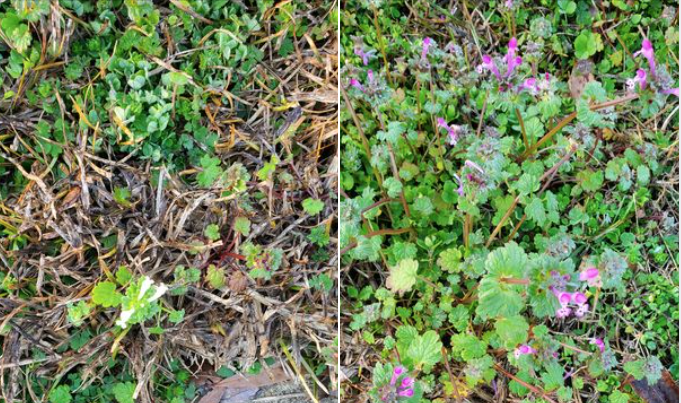
Ever wonder what these early spring/late winter wildflowers are called? These are called Henbit (Lamium amplexicaule Linnaeus).This plant on the left is an example of an albino one. They are in the mint family. Learn more at http://www.floraofalabama.org/Plant.aspx?id=2410 Photo by Kasey DeCastra, Sumter County Record Journal & Moundville Times Community News Editor
Grow More, Give More
Food insecurity is an urgent problem in Alabama. In fact, approximately 1 in 4 children face food insecurity, and it affects about 2 million Alabama residents overall. The term food insecurity is associated with people that have a lack of regular access to the nutritious food needed for an active and healthy life. Through the Grow More, Give More program, the Alabama Cooperative Extension System looks to make a positive impact in the lives of these people.
Grow More, Give More enables home gardeners to help combat food insecurity. Both experienced and novice gardeners will find the information and resources needed to have successful gardens of every size. The project also encourages gardeners to grow an extra row and share healthy food with their neighbors and larger communities.
How It Works
To help you Grow More, check out Alabama Extension’s abundant resources to boost your growing potential, whether growing in containers, raised beds, or a traditional in-ground garden. As for Give More, some gardeners may want to share with neighbors, while others might deliver their harvests to a food pantry or a regional food bank.
Need More Information or Have Questions?
Have questions about getting started with Grow More, Give More? Reach out by email to [email protected]. Alabama Extension home grounds agents can answer questions as well. Find the home grounds agent serving your county here. Got specific questions about growing a particular vegetable or dealing with an insect pest? Call the Alabama Master Gardener Helpline at 1-877-ALA-GROW.
February’s Grow More, Give More Harvest of the Month is Swiss chard! Find growing instructions as well as yummy recipes that use Swiss chard below. Sun: Plant in full sun (6 to 8 hours). Space 4 to 6 inches apart within rows or 4 to 6 plants per 5-gallon container. Plant mid-February through mid-March for spring harvest and in September for fall harvest. Soil: Amend with organic matter to create a well-drained soil. Avoid planting in unamended sandy or heavy clay soils. If the soil test shows the pH is below 6.2, apply lime at the beginning of the growing season or as recommended. For proper drainage in a container garden, use potting mix and ensure containers have drainage holes. Alternatively, consider using self-watering containers.
Water: Keep soil consistently moist but not saturated. Apply 1 to 2 inches of water each week. Keep leaves dry to avoid fungal diseases. Mulch helps retain moisture.
Plant: Direct sow seeds 1⁄2 inch deep. When sprouts are established, thin to 4 to 6 inches apart. Start seedlings 3 to 4 weeks before planting, and slowly harden off 1 week before moving to the garden. If buying transplants, choose those with healthy color and a stocky appearance. Dig the planting hole as deep as the root ball. Firmly pat down the soil and water deeply.
Fertilize: In the absence of a soil test, apply an all-purpose fertilizer (8-8-8 or 10-10-10) at planting, according to label directions. Reapply beside plants, 4 to 6 inches from the stem (side-dress), 2 weeks after transplanting or 4 weeks after sowing seeds.
Insects/Diseases/Weeds: Scout plants frequently for insect and disease damage. Use insecticidal soap (for soft-bodied insects) or Bt dust or spray (for caterpillars, or worms). Spray fungicides regularly to suppress common fungal diseases. Always follow label instructions. Mulch inhibits weeds and diseases.
Harvest: Harvest at 50 to 75 days, when leaves are about 8 inches long. Harvest time varies depending on the variety.
Other: Swiss chard is a close relative of the garden beet that doesn’t develop an edible root. The leaves’ green portion is edible, and the broad midrib can be steamed and eaten like asparagus. Because of its upright growth and large, attractive leaves, swiss chard can be used as an ornamental in borders and display beds.
Visit www.aces.edu/go/growmore for more information.
Lentil, Mushroom, and Swiss Chard Soup
Ingredients:
1 Tablespoon vegetable oil
1 onion, chopped
2 carrots, washed and chopped
1 celery stalk, washed and chopped
1 cup mushrooms, washed and sliced
1 cup dried lentils, rinsed
8 cups low-sodium chicken or vegetable broth
1 Tablespoon Italian seasoning
1 teaspoon garlic powder
1 bunch Swiss chard leaves or 4 cups of spinach, chopped
Salt and pepper to taste
Directions:
In a large pot over medium heat, cook oil, onion, carrots, celery, and mushrooms for 5 minutes.
Stir in lentils, broth, and spices.
Cover the pot and reduce heat to low.
Cook for 20-30 minutes until lentils are tender.
Stir in chopped Swiss chard or spinach and cook for 5 minutes.
Divide soup into bowls and serve with whole grain bread, if desired.
https://extension.umd.edu/programs/family-consumer-sciences/snap-ed/eat-smart/recipes/lentil-mushroom-and-swiss-chard-soup/
USDA Kibbeh Khamoustah
This traditionally Kurdish dish is delicious, fresh, and flavorful! The beef dumplings are enjoyed in a soup that is loaded with Swiss Chard. This will be your newest family favorite!
Ingredients
1 pound ground beef, 85% lean (coarsely ground, if available)
1 tablespoon salad oil
1 cup matzo meal
1 1/2 cups semolina
1 cup water
1 teaspoon salt
6 cloves garlic, chopped (use 6-7 cloves)
10 scallions, chopped
6 cups Swiss Chard (2 bunches)
lemon juice (optional)
Directions
Wash hands with soap and water.
Fry ground beef in a small amount of oil.
Prepare the dough by mixing matzo meal, semolina, water, and salt.
Wet hands and shape into walnut-sized pieces.
Roll out dough into a small circle and fill with 1 Tablespoon of meat.
Seal the dough. Continue until all the dough and meat is used.
In a large pot, heat a small amount of oil and fry garlic until golden.
Add the scallions and Swiss chard. Mix well.
Cook about 10 minutes.
Cover with water and continue to cook until boiling.
Add lemon juice, to taste (optional).
Add stuffed dough to soup and cook 15 more minutes.
Notes
Kibbeh Khamoustah is a Kurdish dish. Kibbeh, or dumplings, are stuffed with meat, traditionally lamb or beef, and served with soup.
https://www.myplate.gov/recipes/supplemental-nutrition-assistance-program-snap/kibbeh-khamoustah
Uphill Battle Continues on Bobwhite Quail
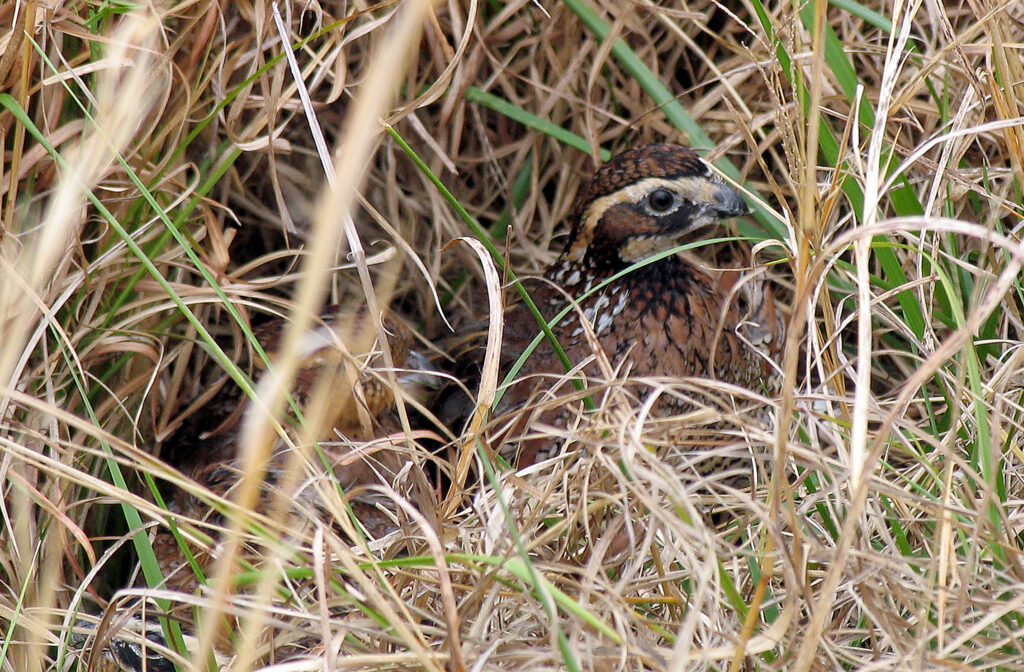
(David Rainer) The northern bobwhite quail is struggling to adapt to habitat changes across the Southeast.
By David Rainer, Alabama Department of Conservation and Natural Resources
Now that the white-tailed deer season has ended, hunters will likely turn their attention once again to small game like rabbits, squirrels and the bobwhite quail, although quail hunting is nothing like it once was.
When fence rows from small farms and family gardens crisscrossed Alabama and the Southeast, the bobwhite flourished. Since large-scale farming operations became the norm and many families moved to urban and suburban areas, the quail habitat has significantly diminished and so has the number of wild bobwhites.
“Unfortunately, we can’t turn back the clock to the habitat we had at landscape levels in 1970 and prior,” said Steven Mitchell of the Alabama Department of Conservation and Natural Resources’ (ADCNR) Wildlife and Freshwater Fisheries (WFF) Division. “We do have some private lands that manage for wild bobwhites, and they have to intensively manage year-round for wild quail. They have the resources to do that, and they have good populations there. When I say good populations, I’m talking about how many (dog) points per hour. Some places find four or five coveys per hour. That’s the old Southern style hunting off of horseback and mule-drawn wagons. So, they’re moving, and they have some big running dogs. That’s how they can find those numbers per hour hunting.
“But they have also put in the work on the habitat to have that number of wild birds.”
Mitchell, who recently turned over the Upland Game Bird Coordinator position to Brandon Earls, said WFF tries to improve habitat for quail whenever possible on ADCNR’s wildlife management areas (WMAs) throughout the state.
“It’s difficult to manage public areas for just quail,” Mitchell said. “We have to manage for multiple species, but we do have areas that we consider ‘quail emphasis’ areas, where the management is more focused on improving quail habitat conditions. We continue to identify and expand emphasis areas where feasible. Though bobwhite densities remain low, we have seen some positive responses.
“We still have people who are very interested in quail hunting. Quail hunters are still finding some birds on WMAs. Some have reported finding a few coveys in a three- or four-hour hunt. Those successful hunters contribute their success to weather and scenting conditions. Colder days were reported to be better due to increased movement of quail to satisfy their higher metabolic rates during lower temperatures. Cool, moist days are also best for dogs to locate bird scent.”
One of the emphasis areas is the Boggy Hollow WMA within the Conecuh National Forest, cooperatively managed by WFF and the U.S. Forest Service. This acreage of Conecuh National Forest is being converted into bobwhite habitat through selective timber thinning and more frequent, smaller prescribed burns. Timber thinning increases sunlight reaching the ground, encouraging the growth of native grasses and forbs to provide food and nesting habitat for the quail. The quail harvest on Boggy Hollow is limited, with a daily bag limit of four birds and a season that ends on February 10, while the private land quail season runs through February 29. Visit https://www.outdooralabama.com/hunting/wildlife-management-areas for a list of WMAs and the hunting opportunities available. For more information about quail, go to www.outdooralabama.com/what-hunt/quail-hunting-alabama for links to the publication Ecology and Management of the Bobwhite Quail in Alabama, authored by former WFF Wildlife Biologist Stan Stewart.
“We’re still continuing the work with the U.S. Forest Service on Boggy Hollow,” Mitchell said. “We’re working to manipulate the habitat management scheme there to benefit quail. We’ve seen some success, but the density of quail is still low. Habitat on Boggy Hollow is being improved through timber thinning, prescribed fire, and establishment of wildlife openings and early successional habitat.”
Mitchell returned to how the landscape across the Southeast has changed dramatically in the last 50 years. Those changes have made it difficult for the wild bobwhites to adapt.
“Small farms, brushy fence rows, and unproductive ground left to fallow made up the landscape back then,” Mitchell said. “With those old fence rows and more crude equipment compared to what we have today, it was a different type of farming. It was patchwork farming, and that was everywhere. Those old fence rows, hedgerows, and small fields provided nesting, brooding, and escape cover for quail. It was ideal habitat for quail. All that is different now with clean farming. Fence rows got cleaned up, and you have farming from tree line to tree line. That’s one reason for the reduction of habitat across the quail range.
“Timber management has also changed over time to more short-term rotations. Closed-canopy pine stands don’t provide habitat for quail. Some beneficial habitat is provided after planting, but the canopy closes after a few years and shades it all out as those trees put on vertical growth. Many more years pass until the first thinning, which lets some sunlight get to the ground and improve conditions for quail. But as that canopy closes back, the cover decreases again until the next thinning.”
The attitude of some landowners has also shifted from trying to manage for a huntable quail population to providing enough habitat where they can at least hear the bobwhite’s distinctive whistle.
“We get several of those calls,” Mitchell said. “We have people with different acreages who say, ‘I haven’t heard a quail here since I bought it. What can I do?’ We provide services where we do a site visit and recommend what a landowner should do. That doesn’t mean they are going to have quail, but we can help guide habitat improvements to try.
“Timber density is usually a starting point on most properties. Cover for quail can’t grow without sunlight getting to the ground, so you have to open up that canopy. With that, nesting conditions improve, and brood-rearing conditions improve. Quail spend their entire life on the ground, and their survival depends on having proper ground cover available year-round. Terms for quail cover include escape or loafing, nesting, and brood-rearing cover. Without getting too far in the weeds on cover types, brood-rearing cover is usually the most lacking habitat component on properties we visit. This is simply weedy areas where adult quail raise chicks. Brood cover provides overhead protection from predators and bare ground underneath allowing quail chicks easy movement to forage for insects.”
Another crucial management practice is the use of fire for controlled burns, which improves the habitat for a wide variety of birds and wildlife.
“You need a good burn plan,” Mitchell said. “Quail are called the firebird. Fire is the cheapest and most efficient tool in the box for creating and maintaining quail habitat.”
The good news is hunters can find numerous quail plantations scattered all over the state, with the greatest concentration in the Alabama Black Belt region. Visit www.alabamaquailtrail.com for a list of plantations and lodges that offer hunts on flight-conditioned, pen-raised quail.
For the 2022-2023 season, Alabama had 9,427 quail hunters overall. Of those, 2,700 hunted wild quail and harvested a little more than 27,000 quail. Including the quail plantations with pen-raised quail, hunters harvested more than 370,000 birds overall.
“Anybody who is wanting a lot of shooting, hunting pen-raised birds is the way they’re going to have to go,” Mitchell said. “Wild birds can still be found on most WMAs but be prepared to put in a lot more leg work than gun work.”
For those who want to help monitor the quail populations in Alabama by reporting quail calls, Quail Forever and its partners developed the “Bobscapes” mobile app that allows users to report hearing a quail, which is then entered into a national database.
“Private landowners and public land users can both take a lead role in future conservation efforts by helping define population distribution and abundance of bobwhite quail across their range,” said Jessica McGuire, bobwhite program manager for Quail Forever’s Working Lands for Wildlife. “It’s an app (bobscapes.org) on your phone so when you hear a bobwhite you can record it, and it sends it to us. The app asks if the citizen wants more information. If yes, it will connect them with us. Our biologists may reach out if you ask for more information, but the information is kept private.”
Fight Cogongrass at No Cost to Landowners
For the third year, financial relief will be available soon to assist Alabama landowners adversely affected by the non-native, invasive noxious weed, cogongrass. The application period for the Cogongrass Mitigation Program will launch on February 20, 2024, at 8:00 a.m. Central Time, and the portal will remain open until March 29 at 5:00 p.m. Central Time or until the threshold of 150 applications is reached. Eligibility for the funding requires that applicants be private, non-industrial landowners. Property with cogongrass infestations must be located in any of the 67 counties of Alabama, although the landowner is not required to reside on the property or within the state. There is no minimum or maximum acreage ownership requirement to enroll. It is a cost-free program.
Administered by the Alabama Forestry Commission (AFC), the Cogongrass Mitigation Program is made possible through a grant from the USDA Animal & Plant Health Inspection Service (APHIS), Plant Protection & Quarantine (PPQ). The goals of this program are to reduce the number of infested acres, eliminate the damaging effects of cogongrass on existing ecosystems, and improve the productivity of sites impacted by the weed. Additional objectives include slowing the spread of current establishments of cogongrass and preventing introductions into new areas of the state.
To apply for this funding or for further information regarding additional eligibility requirements, please visit the Cogongrass Mitigation Program section of the Alabama Forestry Commission’s website at forestry.alabama.gov/Pages/Management/Cogongrass.aspx. You may also email the AFC Cogongrass Coordinator at [email protected] or contact your local AFC office.
The mission of the Alabama Forestry Commission is to protect and sustain Alabama’s forest resources using professionally applied stewardship principles and education, ensuring that the state’s forests contribute to abundant timber and wildlife, clean air and water, and a healthy economy. For more information about the Alabama Forestry Commission, visit the AFC website at forestry.alabama.gov
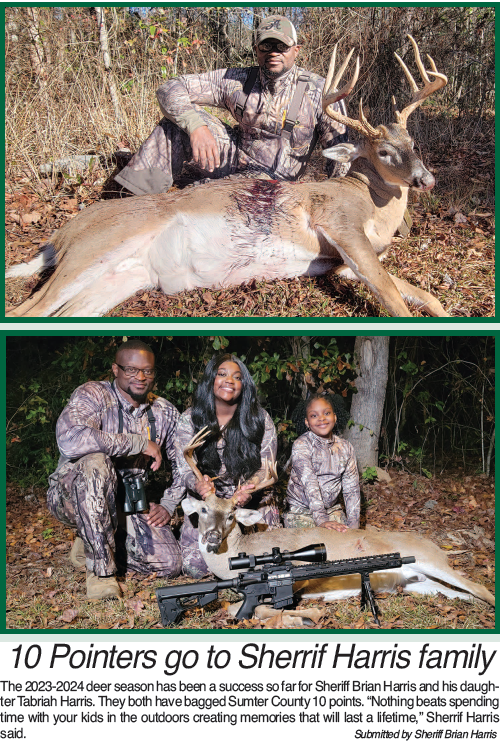
Forever Wild Board Commits to Feral Hog Mitigation
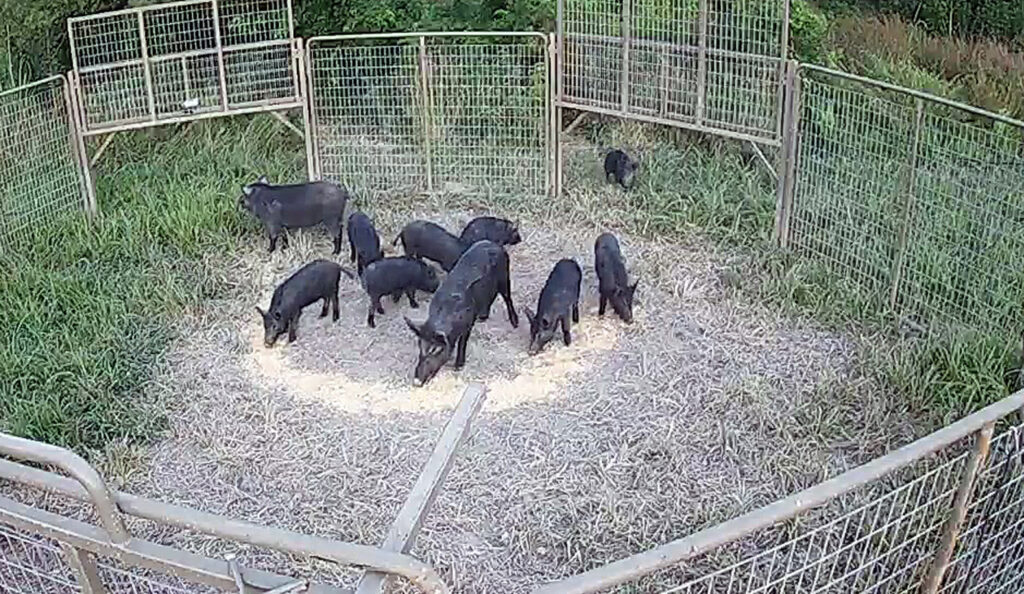
(ADCNR, William Malone) Trapping the whole family group (sounder) is the most effective method to control populations. Feral swine can quickly damage wildlife openings with rooting activity.
By DAVID RAINER
Alabama Department of Conservation and Natural Resources
As the Forever Wild Land Trust (FWLT) is preparing for its first meeting of the year on February 1, 2024, in Montgomery, the FWLT Board of Trustees will be focused on an initiative adopted at its last meeting of 2023 to spend up to $1 million to enhance existing efforts to mitigate the impact of feral hog populations.
Many landowners in Alabama and other states in the Southeast will testify about their struggle with ongoing issues related to feral swine populations. These nuisance feral swine populations can be found in all 67 counties in Alabama.
The Alabama Department of Conservation and Natural Resources’ (ADCNR) State Lands Division, which administers the Forever Wild program, and ADCNR’s Wildlife and Freshwater Fisheries (WFF) Division are in a constant battle to control the feral hog populations on the properties they manage. With no methods currently available to completely eradicate the feral swine populations, ADCNR staff spend a great deal of time and money working to reduce feral hog populations on ADCNR and Forever Wild properties. Several of these properties have adjacent acreages.
State Lands Director Patti McCurdy said the Board passed a motion at the November meeting to authorize the use of up to $1 million of stewardship funds for feral hog control measures.
“The motion passed with the instructions for us to explore any additional practices available to efficiently and effectively mitigate known populations as well as continue efforts to monitor for the emergence of additional nuisance populations and, finally, spend those funds wisely,” McCurdy said. “While management efforts on Forever Wild acreage, as well as the Department’s acreage overall, have been extensive and ongoing, we remain as frustrated as private landowners with just how pervasive and destructive the feral swine populations continue to be.”
During fiscal years 2019 through 2023, those efforts successfully removed more than 5,800 feral swine from ADCNR and Forever Wild properties. During the same period, hunters reported harvesting more than 465 feral swine.
“Just like every private landowner in Alabama has been experiencing, this is an ongoing struggle, and we’re no different,” McCurdy said. “The Board wanted to provide an additional spotlight on this challenging issue and concentrate our efforts on a specific initiative for this year. Forever Wild Board Members are very dedicated to identifying needs and pursuing tract enhancements. Last year, the Board adopted an initiative designed to enhance public access to all Forever Wild properties.”
According to the U.S. Department of Agriculture (USDA), feral hogs cause more than $1.5 billion in damages to property, agricultural interests (crops and livestock), native wildlife and ecosystems each year as well as cultural and historic resources. Estimates show that feral hogs cause $50 million of damage in Alabama annually.
“The damage comes in many forms,” McCurdy said. “On our acreage, many times it is basic ground disturbance causing issues with the wildlife habitat and recreation. The ground disturbance can cause issues with trail maintenance and other areas of recreational use, such as wildlife openings. That impact to the ground as well as habitat is difficult to reverse because it is ongoing. Like cogongrass, you’re looking at perpetual mitigation. Just like private landowners, we have to be prepared that we have a long-term fight on our hands.”
Board member Jimmy Parnell, President and CEO of the Alabama Farmers Federation (ALFA), introduced the feral hog motion after hearing from his constituents.
“I heard from our producers and farmers all across the state that they perceived that Forever Wild land was something of an incubator for wild hogs,” Parnell said. “They said they trap their land and the neighbors’ land, but the hogs keep coming out of Forever Wild land. I’d heard that for a good while and decided we needed to do something. I made the motion to spend up to $1 million and asked Forever Wild to put together a plan. It will be incrementally spent to figure out ways to deal with this. I don’t know that you will ever eliminate hogs on Forever Wild land, but you can sure reduce the population.
“I personally prefer to use professional trappers or eradicators. I think that’s the sure-fire way to get rid of hogs. We run into this with farmers. It’s fun for a little while, but a lot of them get tired of it after a few weeks. You need somebody who’s on it every day, not just for the sport of hunting the hogs.”
Parnell does expect the Forever Wild budget in the future will contain a feral hog mitigation component.
“I think this is a good start, and my guess is there will be some appropriation for this each year,” he said. “The funds are there. We have funds for maintenance. In my mind, this is to maintain that land.”
“Management of ADCNR and Forever Wild lands is a priority for us,” said Chris Blankenship, Commissioner of ADCNR and Chairman of the Forever Wild Land Trust. “That management includes prescribed fire, habitat enhancement, timber management, removing or mitigating invasive plants like cogongrass and removal of predators and invasives, including feral hogs. I appreciate the Forever Wild Board recognizing this and authorizing a ramp-up in feral hog removals. It is not a one-and-done type of activity. It will take continued effort to make a dent in the hog population.
“One additional enhancement we discussed with the Board was working toward adding the use of contractor services as a management tool, not only to provide additional manpower but also to add a fresh eye and fresh perspective to the management strategy, starting from monitoring for signs of an emerging nuisance population to development of a holistic management plan and then effectively executing it. So, we will be increasing staff efforts in coordination with initiating targeted use of contractor services. I appreciate the work our staff has done, and will continue to do, but I also am thankful for additional resources to fight this on our properties.”
Another invasive species that landowners and those who manage public lands must deal with is cogongrass, which McCurdy likens to feral hog infestations. According to the U.S. Department of Agriculture, cogongrass has now infested more than 75 percent of Alabama’s counties. This federally regulated noxious weed was introduced in the U.S. in 1911 as packing material in the port of Mobile. Estimates show that cogongrass costs more than $7.5 million in lost timber production in Alabama alone. ADCNR staff will continue cogongrass treatment efforts as well.
WFF Wildlife Biologist Andrew Green said that feral hogs are prolific breeders and reach reproductive capacity at six months. Each sow can produce a litter of piglets twice a year.
“It’s crazy the number of pigs they can have in a short amount of time,” Green said. “We have them in every county, but the areas with the most damage are the Black Belt soil region, the Wiregrass and Coastal Plain. They are more prevalent in agriculture areas that are planting peanuts, cotton or corn.”
Green said trapping is currently the most effective method of controlling wild hog populations. An effort to use sodium nitrite bait to reduce feral hog populations is still under development, according to Green.
“Trapping the whole sounder (family group) is about the only effective method,” he said. “And it’s not for the faint of heart. You have to put the work in. You can’t just throw up a trap.
“The number one thing is to pre-bait. The number two thing is pre-bait. You’ve got to make sure you’ve got them coming in and acclimated to the trap, whatever type you have. You don’t have to have the Cadillac or necessarily the poor man edition. A trap is a trap if it works well. The thing is you want to get every animal in that sounder. Make sure every hog that is coming in to the pre-bait is in the trap before you set the trigger.”
WFF offers technical assistance and guidance for landowners with feral hog programs. Under the National Resources Conservation Service’s Environmental Quality Incentive Program, landowners can receive cost-share assistance for equipment to deal with the feral swine. Visit www.nrcs.usda.gov/feral-swine-eradication-and-control-pilot-program for more information.
Alabama residents can purchase a $15 license ($51 for non-residents) to hunt feral hogs and coyotes at night. The season to hunt those animals at night begins at 12:00 a.m. on the day after the last day of gun deer season in that zone. The season ends 30 minutes prior to sunrise on the opening day of archery deer season in that zone. There is no bag limit, but you must have a valid annual resident or nonresident nighttime feral swine and coyote hunting license.
“Trapping is the number one route to control hogs,” Green said. “You can also shoot them at night outside of deer season when it’s legal to do that. In some cases, you can put enough pressure on the sounder that they may move off your property.”
Early Bird: America’s beloved Purple Martins return to Alabama
In a sure sign that spring is not far behind, the first Purple Martins of the year have been spotted in Alabama.
The birds were seen on January 25 in the city of Ashford, Alabama by a Purple Martin enthusiast – one of many throughout the eastern and central United States who track and report on the birds’ annual migration on behalf of the Purple Martin Conservation Association. The migration of these unique birds can be reported and tracked through a community science project called the Scout-Arrival Study.
“The first Purple Martin arrivals of the season are always an exciting event,” said Joe Siegrist, President of the Purple Martin Conservation Association. “Tracking the migration is not only fun, it also provides us with valuable information that helps inform our research and strengthen our efforts to make sure we’re doing everything possible to sustain the population of these amazing birds.”
North America’s largest species of swallow, Purple Martins winter in the rainforests of Brazil before making up to a 7000-mile migration north into the eastern United States and Canada.
The annual migration is a testament to the martins’ resilience as well as the unwavering dedication of thousands of ‘martin landlords’ who maintain multi-compartment nest ‘condos’ that are essential for the birds’ survival. Once widespread in rural America, this species, that eats billions of flying insects annually, has been disappearing at an alarming rate, experiencing a loss of one-third of its population over the last 50 years.
“The decline seems to be the combination of a few factors: nesting habitat loss, competing invasive species, decreasing prey availability, and climate change,” said Siegrist. “Over the majority of the Purple Martins’ range, they are unable to nest naturally any longer. Human-provided nest boxes are the only thing keeping the species alive east of the Rocky Mountains.”
Siegrist says the very survival of the species is due in large part to scores of dedicated conservationists who invest their time, money and hearts into maintaining housing for the martins.
“The landlords provide critical shelter for the martins,” Siegrist said. “In return, they are rewarded with a family-like bond with the birds who return to the same colony year after year like clockwork.”
To follow along with the Purple Martins’ migration and learn more about how you can help ensure the future of Purple Martins, visit www.purplemartin.org. In addition, people interested in learning more about how to attract and care for Purple Martins can receive a free booklet by contacting the Purple Martin Conservation Association by emailing [email protected] or calling 814-833-7656.
Snow day in Sumter Jan. 16, 2024
Photos by Jeanette Ingram, Melanie Goodwin, Martinez Bryant, Paige Gandy, Hope Smith & Herman Ward, Jr.
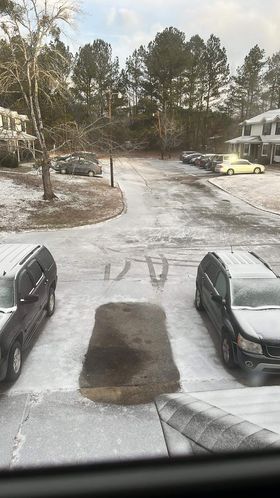
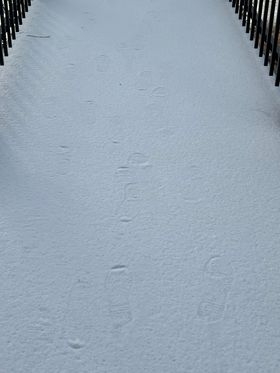

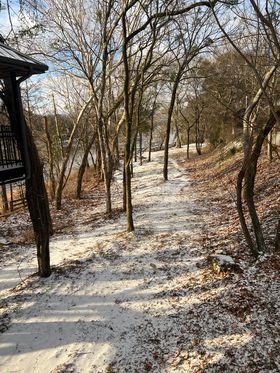
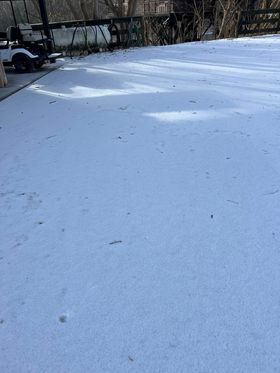
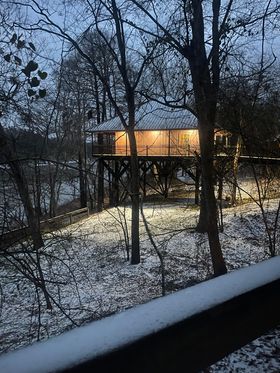
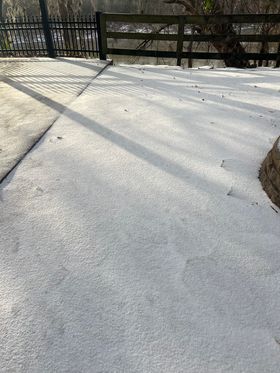

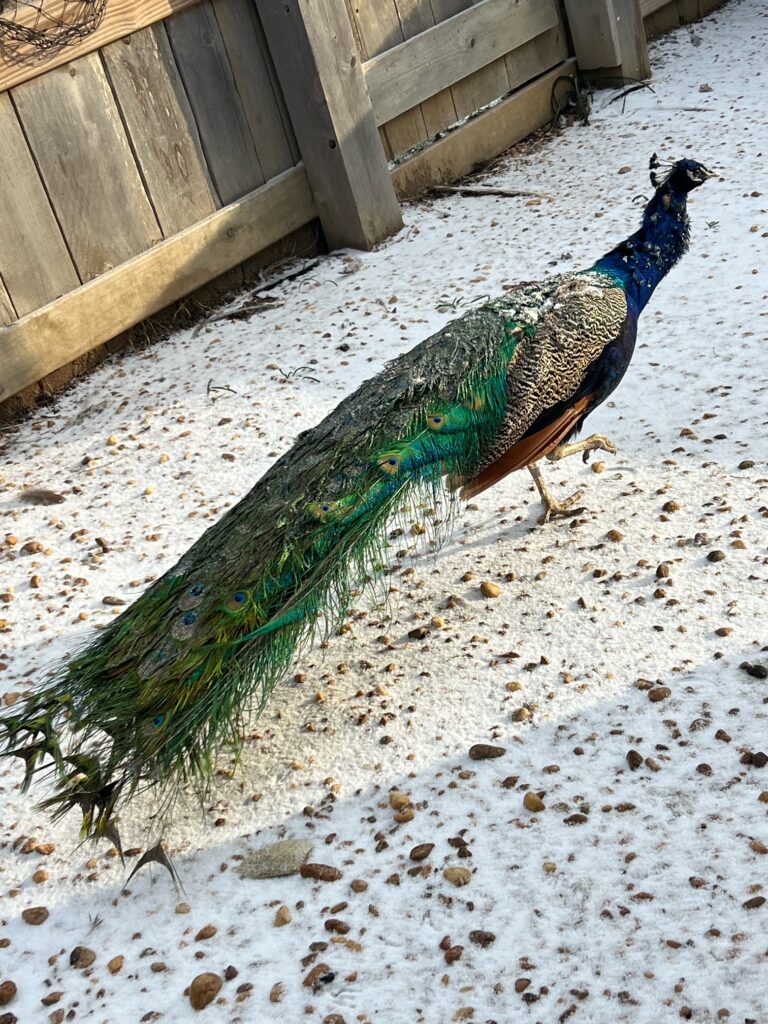
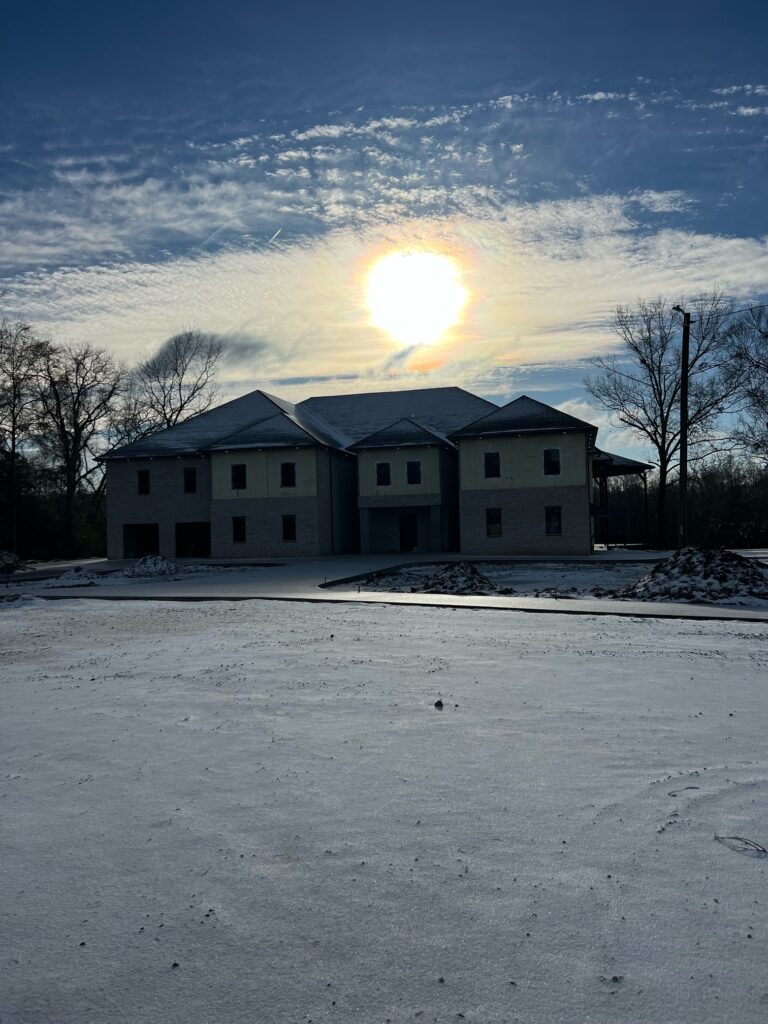
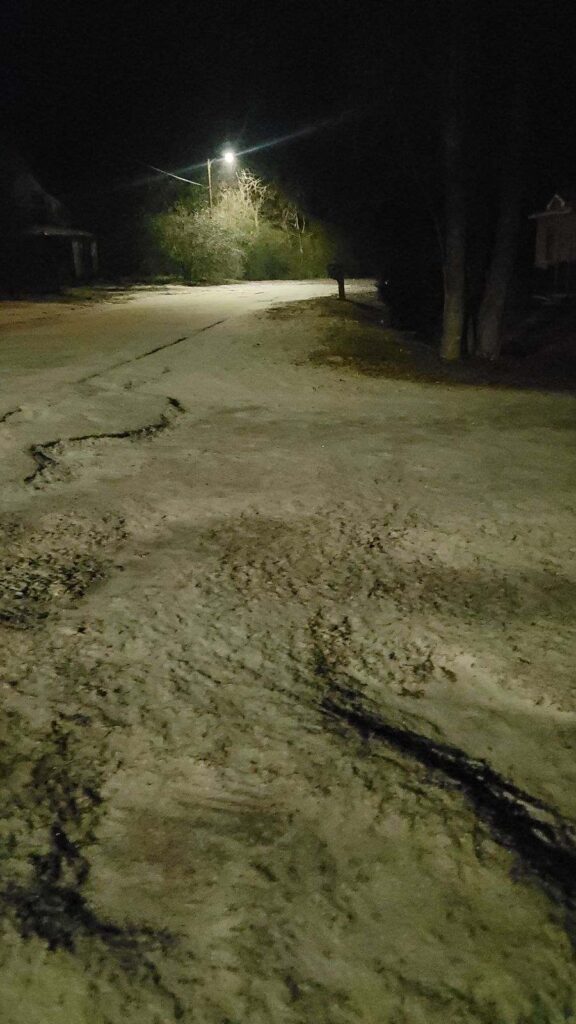

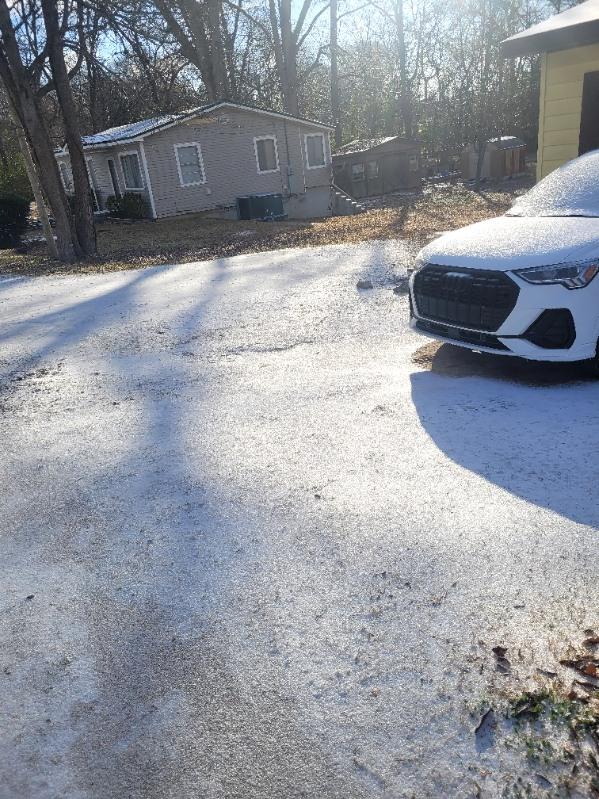
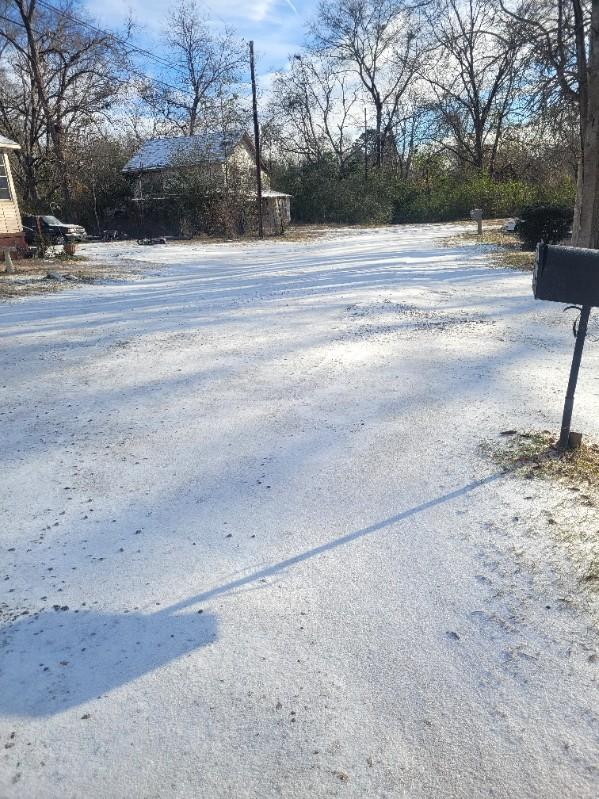
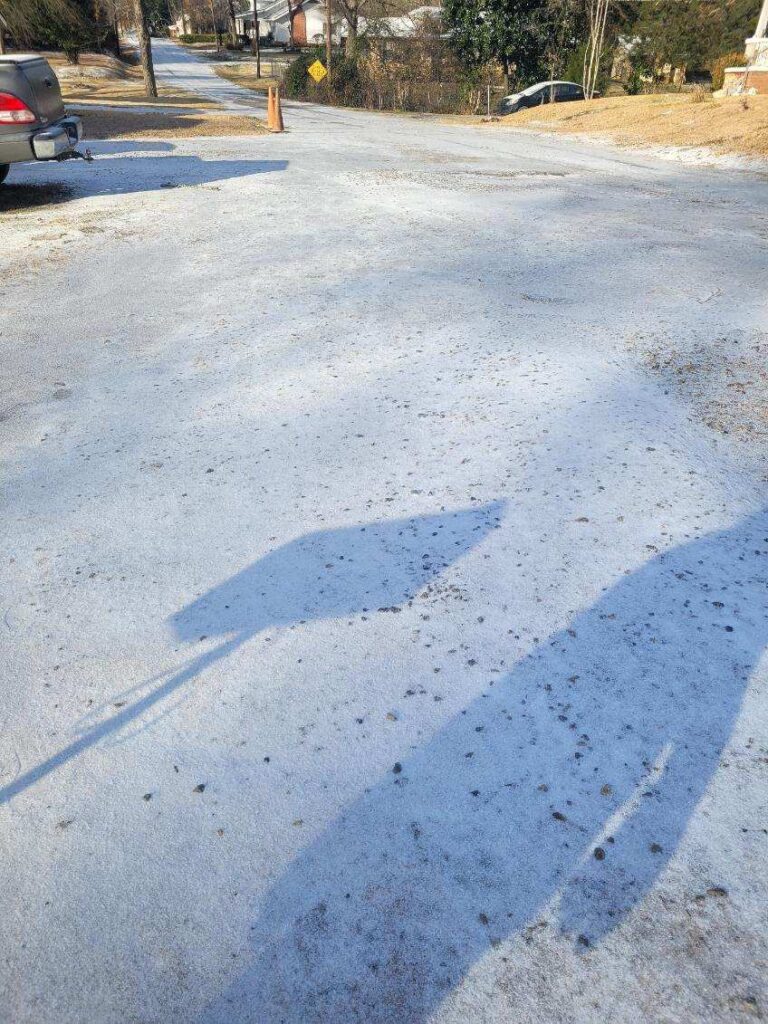
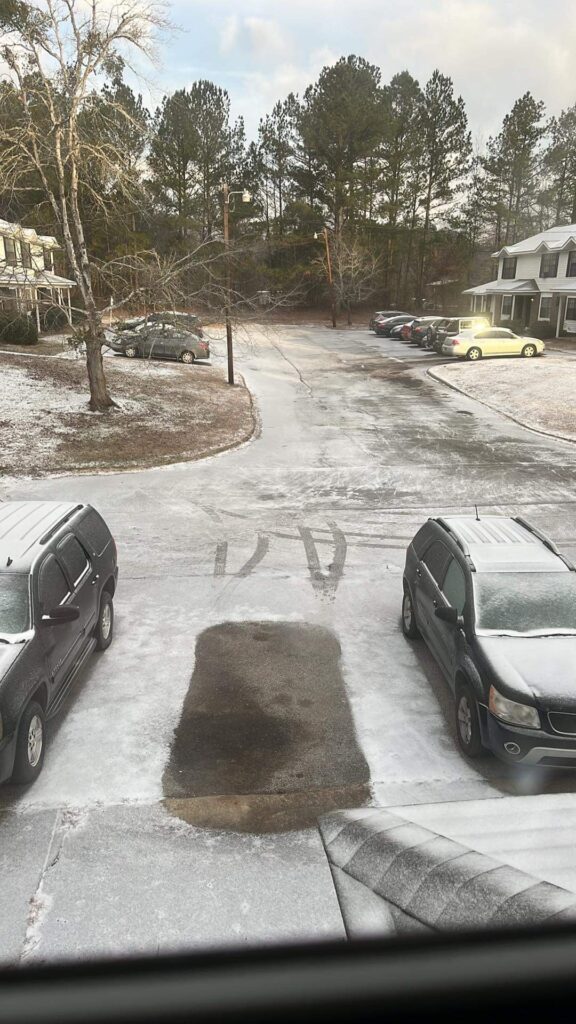
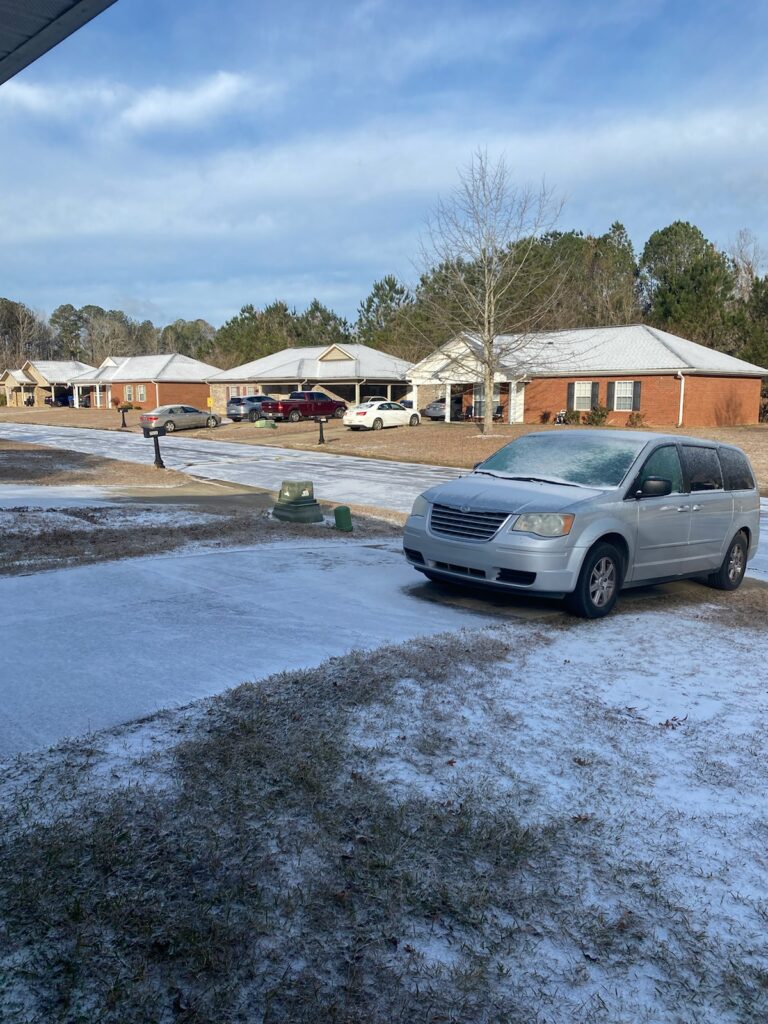
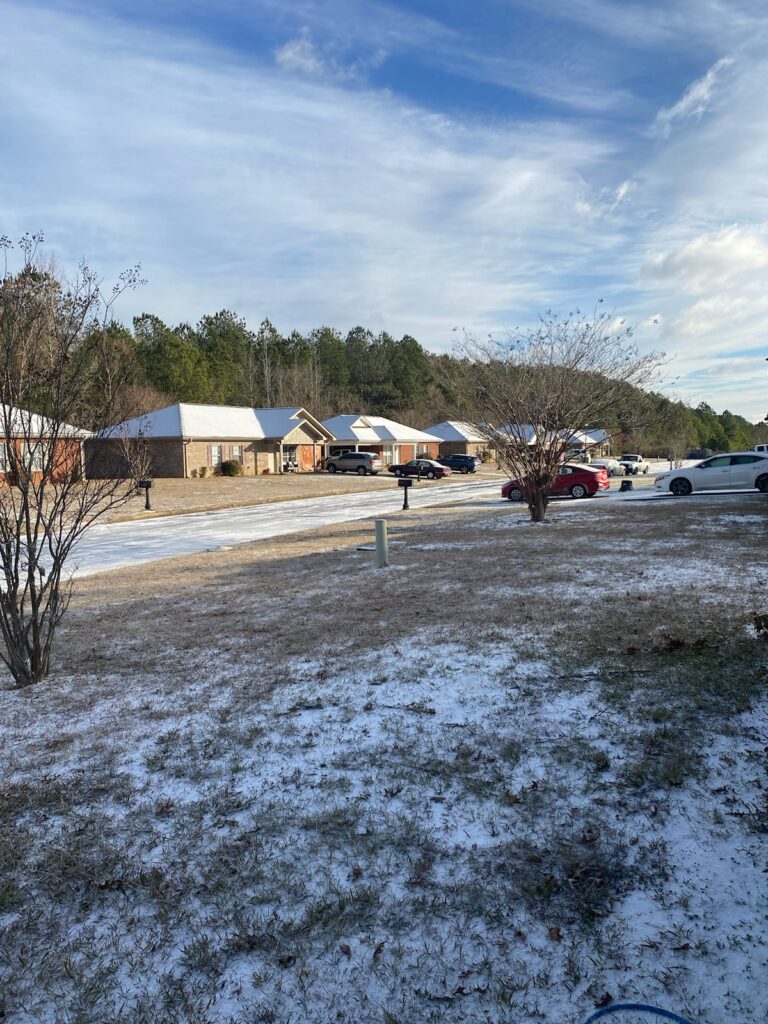
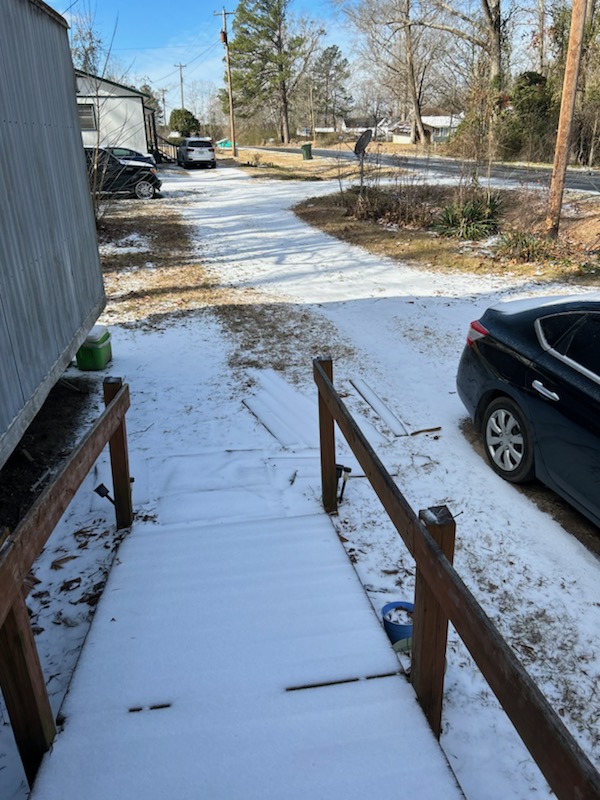
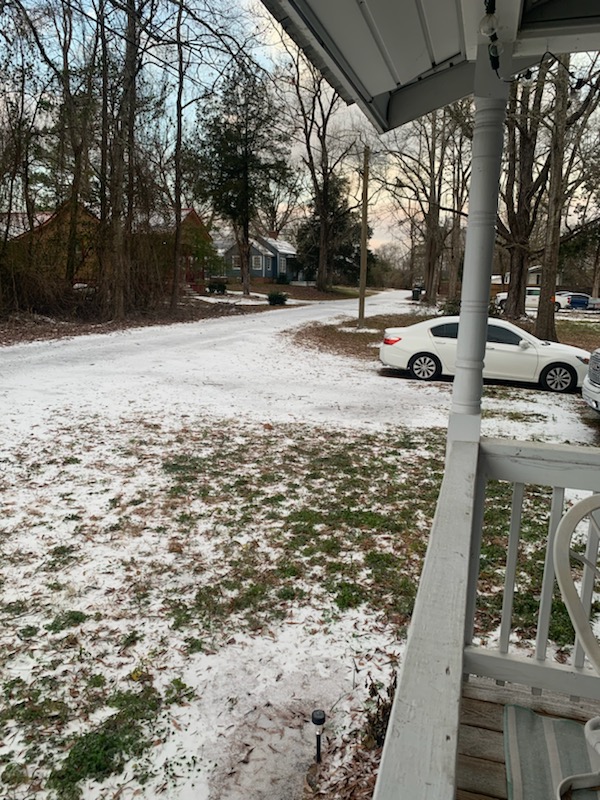
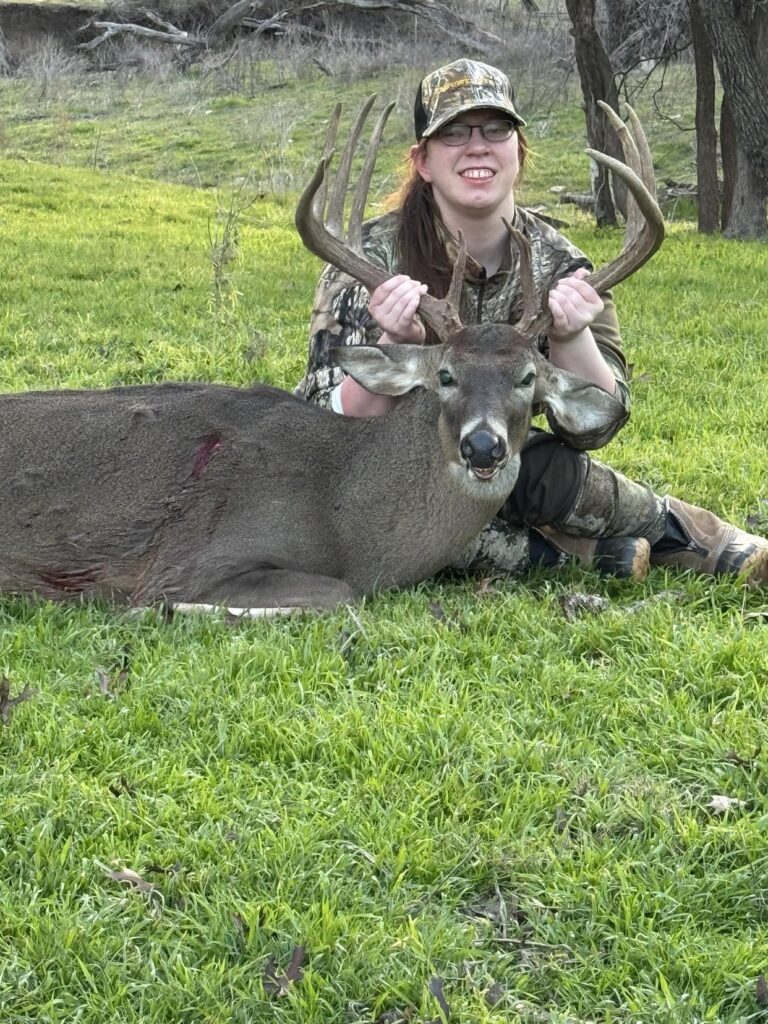
Kalee bagged a huge one in Texas. Submitted by her grandmother, Claire Smith, Livingston Lines Columnist
USDA releases new hardiness zone map for United States
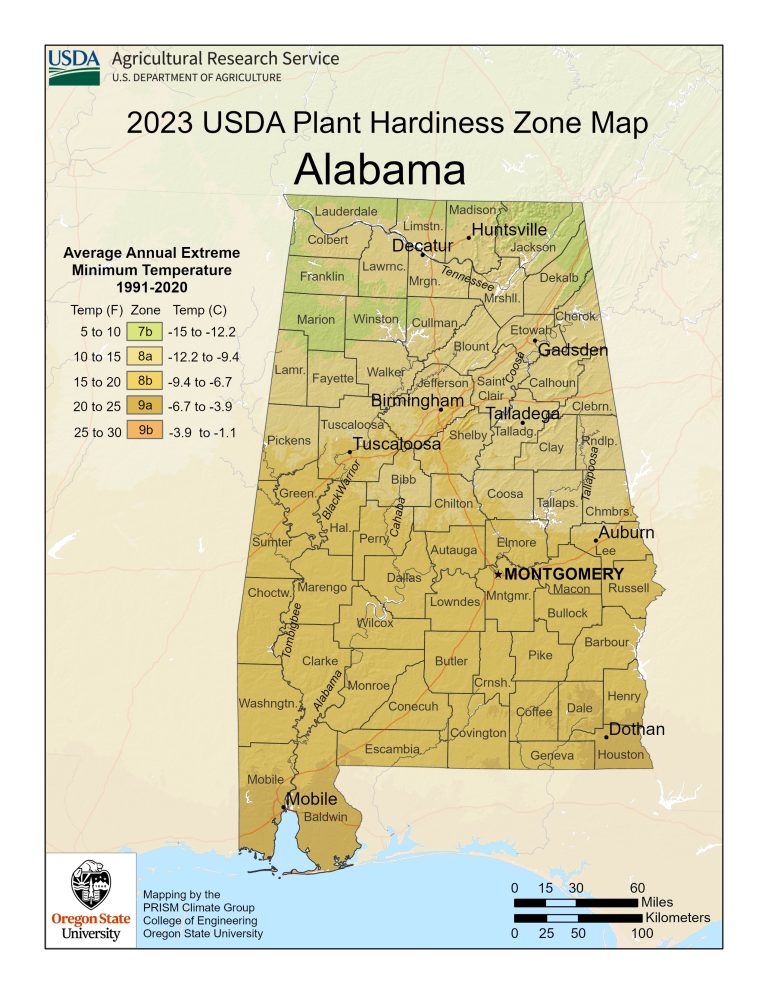
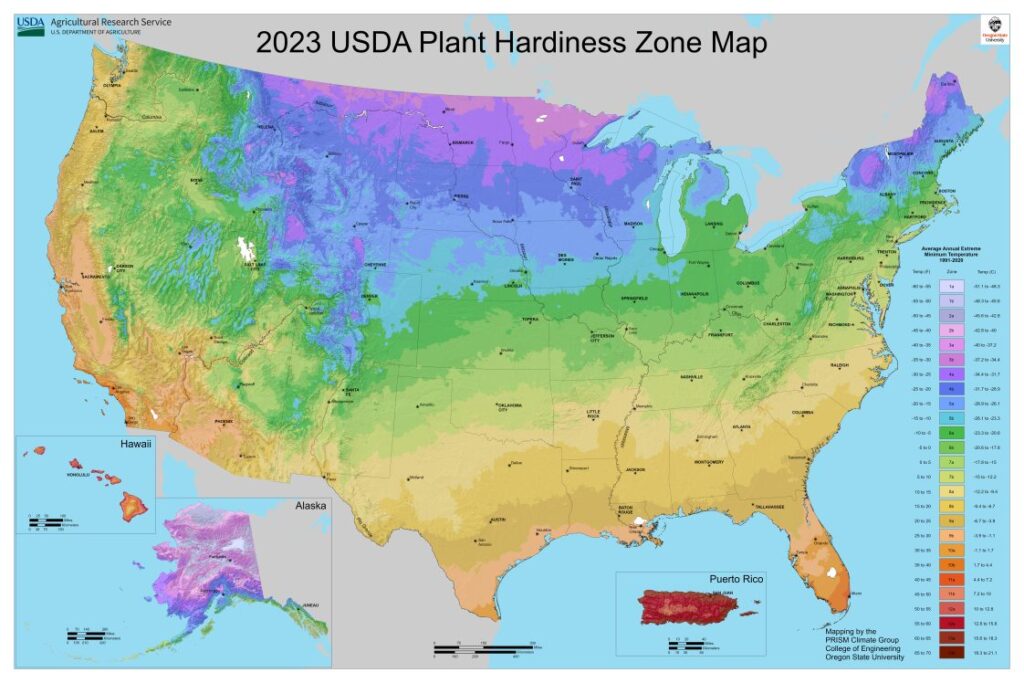
2023 USDA Plant Hardiness Zone Map for Alabama.
(Photo credit: USDA
AUBURN UNIVERSITY, Ala. — For the first time in more than a decade, the United States Department of Agriculture (USDA) released new hardiness zone maps. These new changes bring a new level of climate accuracy, allowing people to intelligently select plants that thrive best in their region. An Alabama Cooperative Extension System home grounds, gardens and home pests agent said this tool should prove fruitful for all Alabama gardeners.
Down to the street you live on, the 2023 USDA Hardiness Zone Map shares — in detail — what climate conditions plants need to thrive at a given location. The zones are measured in color-coordinated scale, ranging from extremely cold climates (1a) to warmer, tropical climates (13b). The map uses the previous 30-year average annual extreme minimum winter temperature to determine plant hardiness.
According to the last hardiness zone survey presented in 2012, Alabama’s zones ranged from 8a to 7a. The zones for 2023 have shifted to a warmer range from 9b in the coastal region to 7b in extreme north Alabama. The majority of Alabama is now zone 8a and 8b.
Brian Brown, Alabama Extension home grounds regional agent, said a decade’s worth of new data will exponentially improve planting decisions.
“This new version includes data collected from several thousand more weather stations throughout the U.S.,” Brown said. “This makes it much more accurate. The hardiness zones in Alabama have shifted north, which is an indication of the change of temperatures over the past 30 years.”
Microclimates
A microclimate is a uniform climate of a local site or habitat. These miniature biomes are everywhere, and something as small-scale as a backyard can have its own microclimate.
Brown said these small areas are something homeowners need to pay attention to, in addition to consulting the hardiness zone map
“The USDA hardiness zone map is an important tool in determining what plants you select,” Brown said. “But something homeowners also really need to pay attention to is the effect of microclimates as well. For example, plants growing on the southwestern side of a house may be exposed to extreme temperatures in the summer. And during winter, a north-facing side of the house may have more shade and possibly see more damage if we experience a harsh cold front.”
To get the most out of seasonal plantings, referencing this governmental resource is necessary for success. The USDA offers this hardiness zone map as the standard for gardeners and growers.
Sometimes, using large databases can be confusing. To assist with learning more about climate maps and what and when to plant, Alabama Extension agents are a phone call or short drive away. Find contact information for your county Extension office and experts near you through the Extension directory.
For more information about gardening and programming, visit the Lawn & Garden section of Alabama Extension’s website, www.aces.edu.
Alabama Outdoors
Marine resources asks anglers for help with fishing effort survey
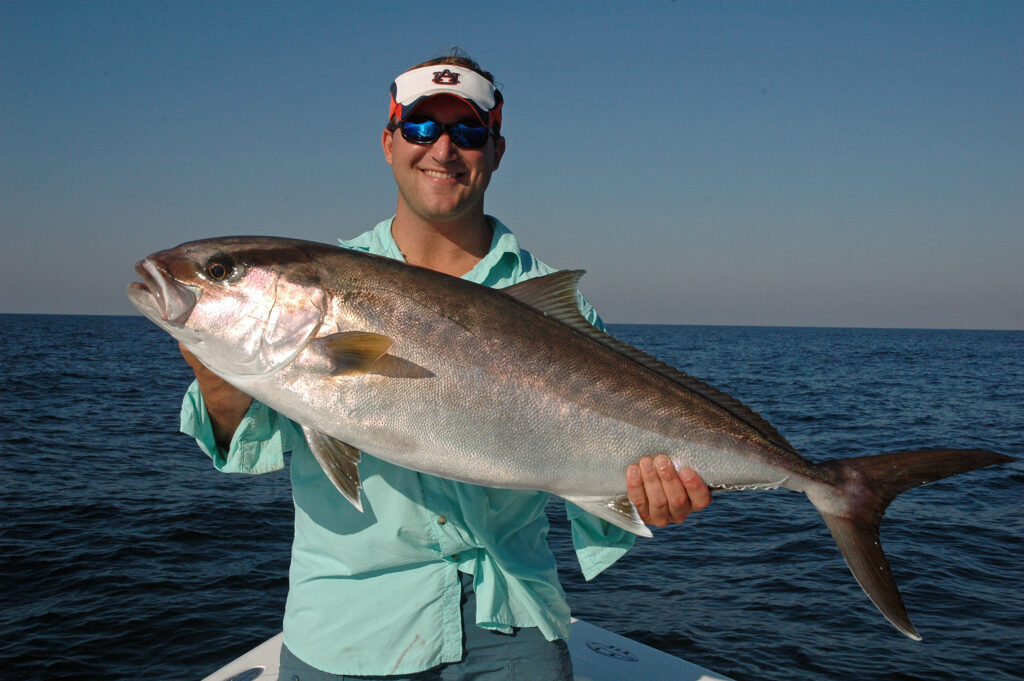
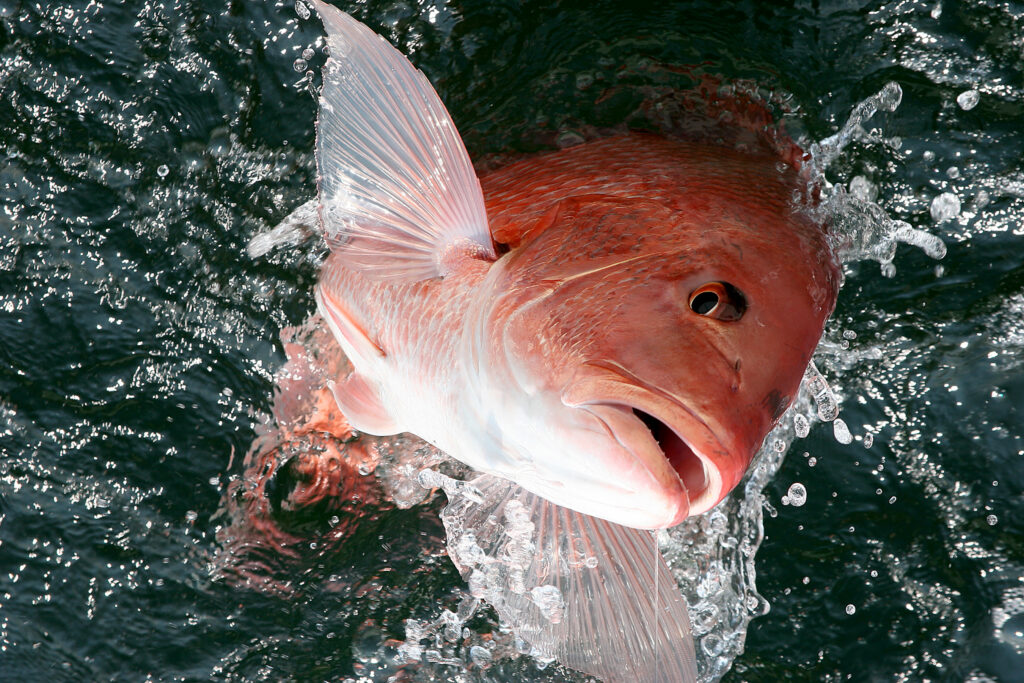
PHOTOS: (David Rainer) Alabama’s iconic red snapper is one of the reef fish that will be covered in the MRD pilot survey. The landing of a greater amberjack must be reported through Alabama’s Snapper Check system.
By David Rainer, Alabama Department of Conservation and Natural Resources
If you fish in Alabama coastal and/or offshore waters, the Alabama Department of Conservation and Natural Resources’ (ADCNR) Marine Resources Division (MRD) may soon ask for your help as it begins a pilot study in 2024 to gain data on recreational fishing effort for Alabama’s private anglers and state for-hire captains.
Alabama’s survey is similar to the effort survey currently used by the Louisiana Department of Wildlife and Fisheries to estimate the fishing effort for its saltwater anglers. The survey is a partnership among NOAA Fisheries, the Gulf States Marine Fisheries Commission and the ADCNR/MRD.
MRD will contact licensed anglers and for-hire captains weekly to gather fishing trip information from the previous week.
“Over the last few years as we moved to the state management of red snapper and looked at how some other species are federally regulated, Alabama and some other states have had concerns about how the federal surveys have gone, especially when it comes to effort, how many people are participating in a fishery,” said MRD Director Scott Bannon. “We feel that between the estimates of red snapper landings from the federal survey and Snapper Check, the Snapper Check estimates are much more representative of the amount of harvest occurring in Alabama. Fishing effort is where most of the difference between the two estimates comes from, and we feel like there are ways to estimate effort better.
“Florida has basically moved to its own system, and Louisiana and Texas have systems of their own. Mississippi and Alabama have chosen to have a trial year of 2024 to implement state data collection systems for all species. We’re going to do some side-by-side comparisons of the federal survey numbers compared to the states’ pilot survey numbers.”
Significant changes were made within NOAA Fisheries’ private recreational survey method in 2018. The largest of the changes was contacting individuals via mail from randomly selected mailing addresses in coastal states, which resulted in much higher estimates of fishing effort. Those higher estimates were large enough to cause concerns within the marine fisheries management community regarding the accuracy of Alabama saltwater fishing effort.
The biggest contention has to do with Alabama’s signature saltwater species – red snapper, which thrives off Alabama’s coast. Alabama has the largest artificial reef zone (www.outdooralabama.com/saltwater-fishing/artificial-reefs) in the United States with nearly 1,100 square miles designated for habitat enhancement. Beginning in 2012, the populations of red snapper and other popular reef fish have been estimated annually through research from the University of South Alabama’s School of Marine and Environmental Sciences. Recently, this research has been funded by anglers who purchase a Gulf Reef Fish Endorsement with their Alabama saltwater fishing license.
As many Alabama residents and offshore anglers remember, the Gulf states were granted state management of red snapper in 2018, which included using state data collection programs to monitor harvests. Along with small increases to the annual catch limit (quota), the red snapper seasons also increased since implementing state management. Bannon said that system worked very well. However, NOAA Fisheries insisted that harvest estimates from Mississippi, Florida and Alabama data collection programs be calibrated to recognize the difference between the federal effort surveys and the state surveys.
As a result of calibration, Alabama’s private recreational anglers had a 51% decrease in the 2023 red snapper quota. Alabama’s private recreational catch limit went from 1,122,662 pounds in 2022 to 558,200 pounds in 2023. For the 2024 season, MRD anticipates an increase in quota because of a calibration modification approved by the Gulf of Mexico Fishery Management Council (Gulf Council) in August 2023.
Bannon said that NOAA Fisheries, also known as the National Marine Fisheries Service (NMFS), has admitted its effort data might not be as accurate as once thought.
“The National Marine Fisheries Service recently came out with an announcement that their effort numbers for private recreational vessels in a subsample of East Coast states have been inflated by 30-40%, and they’ve known that since 2019,” Bannon said. “They have admitted the data they are presenting to us may not be accurate. So, our goal is to develop a more accurate system so we can make better management decisions.”
Bannon said the inaccuracy of the federal survey will be a topic of discussion at upcoming meetings of the Gulf Council. The Gulf Council meets January 29 through February 1 at the Hyatt Centric French Quarter in New Orleans, followed by a meeting April 8-11 at The Lodge at Gulf State Park in Gulf Shores, Alabama.
“Alabama has been in the forefront of reef fish management for the last decade,” said Conservation Commissioner Chris Blankenship. “We have shown through Snapper Check that data collection at the state level is much more accurate in the red snapper fishery and can better be trusted for management decisions. As we have said for years, the estimates of effort and catch coming from the federal MRIP program is just not reflective of what we all see in our state. Their own staff has now admitted their system is potentially flawed. This new state-led survey is what we need to do to take away more of the uncertainty of red snapper harvest as well as the other federally and state-managed species.”
Bannon said he wants anglers to be aware that those receiving a call for the pilot survey will see a 985 area code and the caller ID may say South Central Planning, the company hired to conduct the survey, which is the same company that is conducting the Louisiana survey.
“This will be a phone survey and email survey, and we want people to be aware of it, and we want people to participate, because we want to increase the accuracy and benefit the people of Alabama and all of the Gulf Coast,” he said.
Each week, a current list of licensed saltwater anglers and state-licensed for-hire captains will be used to randomly select a small group of anglers who will be contacted to ask about fishing trips finishing in Alabama in the prior week. Anglers and for-hire captains will be contacted by email first. If no email response is received within a day, telephone calls will be made over the next week. Surveys for private anglers will take very little time with only eight base questions to answer. Results from the private angler surveys will be sent from the contractor to MRD staff. State charter captains will be contacted by MRD staff and asked similar questions.
“Our goal is to provide an account of fishing effort,” Bannon said. “Effort (the number of fishing trips) is an integral part of the fisheries management equation.”
It is anticipated MRD staff will be able to produce effort estimates on a weekly basis, a notable improvement to the minimum of 45 days needed to generate estimates within the federal survey.
By using the list of licensed anglers to contact, the accuracy and precision of the calculated effort estimates will likely increase. As part of the pilot study, catch estimates will be calculated for several species of interest, including red snapper, and compared to NOAA Fisheries’ estimates.
“Although we intend to compare pilot survey estimates to federal survey estimates throughout 2024, it will take us until early 2025 to do the final comparisons,” Bannon said. “There is a possibility that we could continue the pilot survey in 2025 if preliminary results show significant differences and we are able to put the funding in place.
“We really want to urge those who are contacted to participate. As I always tell people, the more real data you put into these surveys and evaluations of fisheries, the better the answers. You’re making fewer assumptions when you have better answers. Our efforts and the cooperation of those who participate in the survey should help provide the best opportunities to participate in the commercial and recreational fisheries. If the pilot survey replaces the federal survey, it should positively affect everyone who fishes in the Gulf of Mexico as we make management decisions.”
Liv Mordecai’s first deer is a whopper
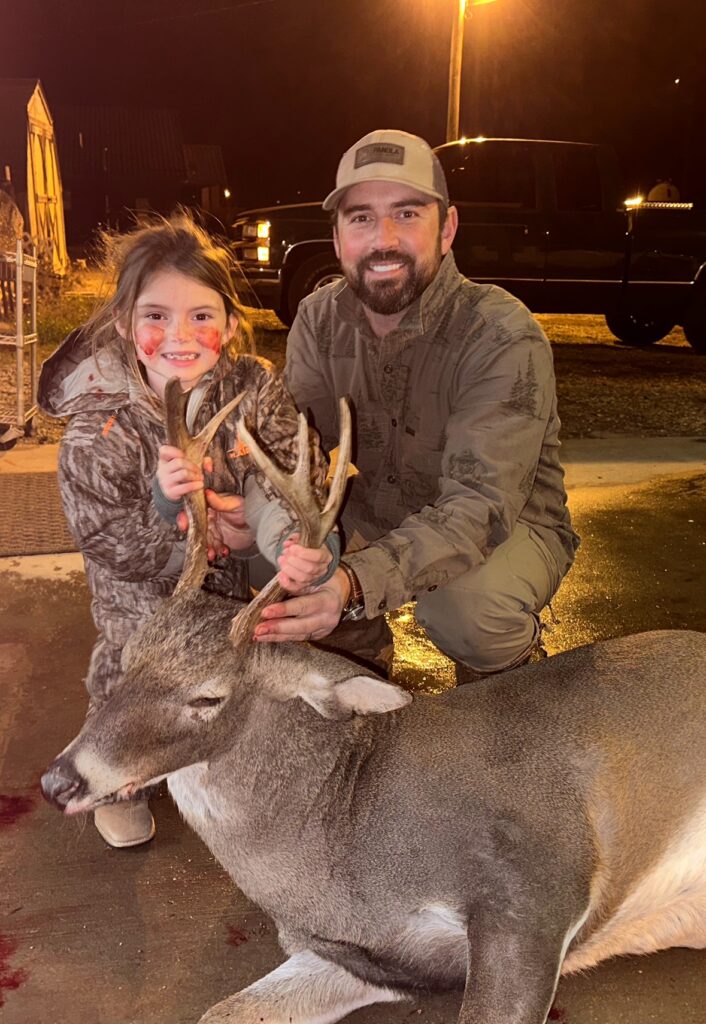
“Liv Mordecai kills her first deer on 12-19-2023. Very old 6 point weighing 230 lbs.
Submited by her proud dad Cody Mordecai
Winter Solstice Sunrise in West Alabama
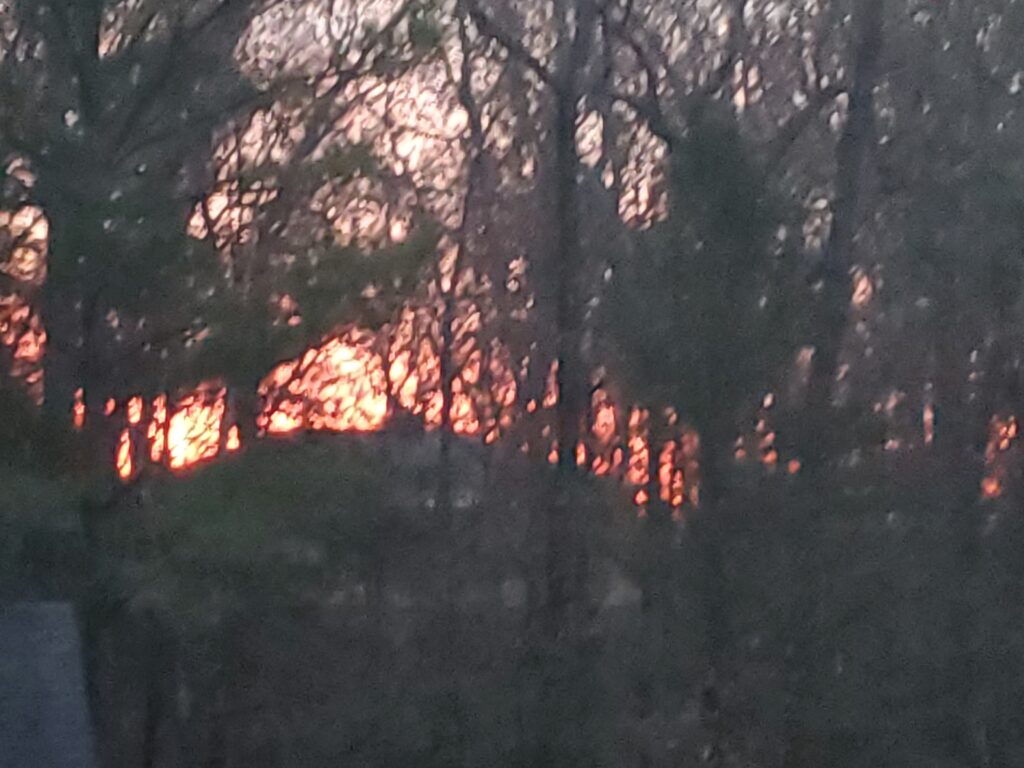

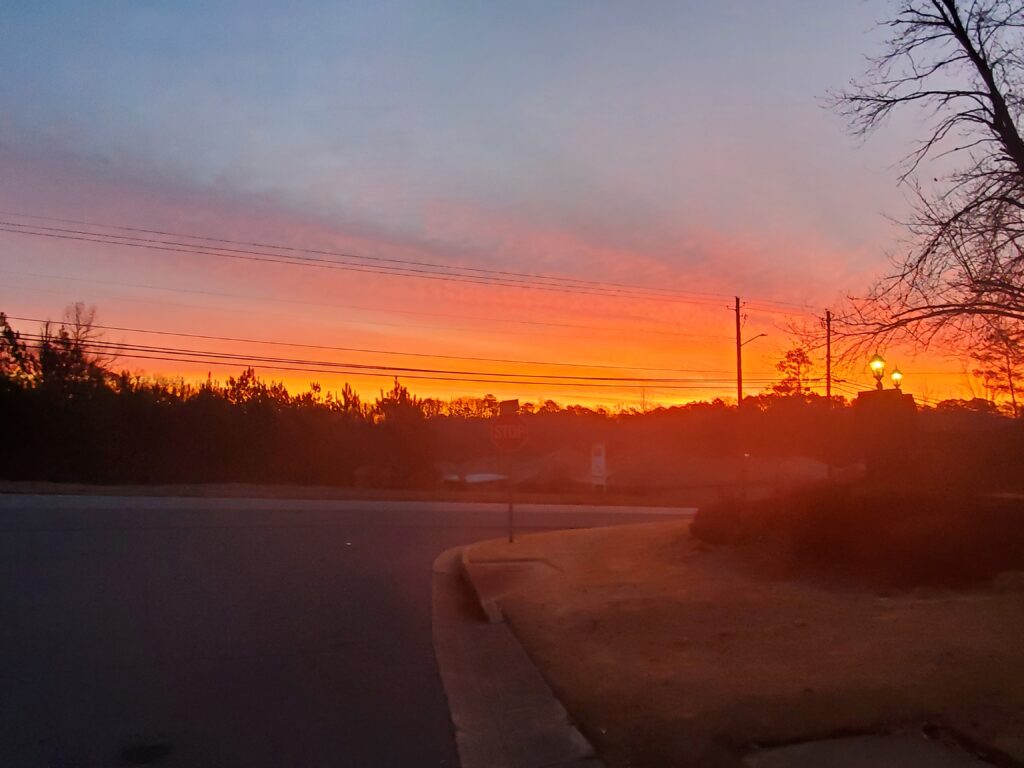
Photos by SCRJ Community News Editor Kasey DeCastra
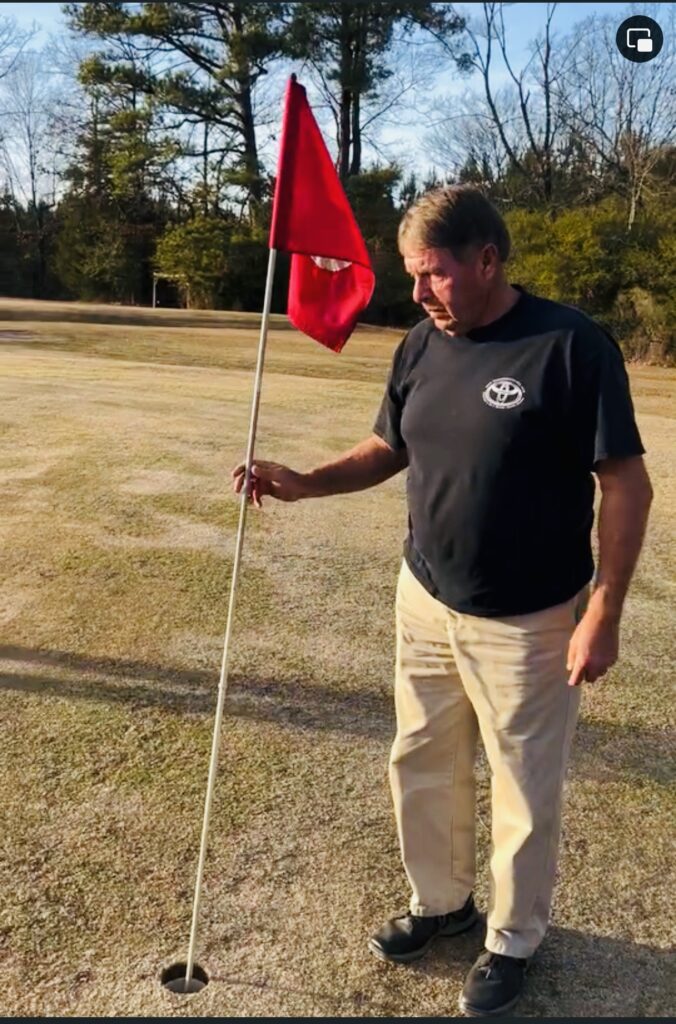
Everett Robert’s had a hole in one Saturday on hole number five at Sumter Country Club in York. Submitted by David Hatcher
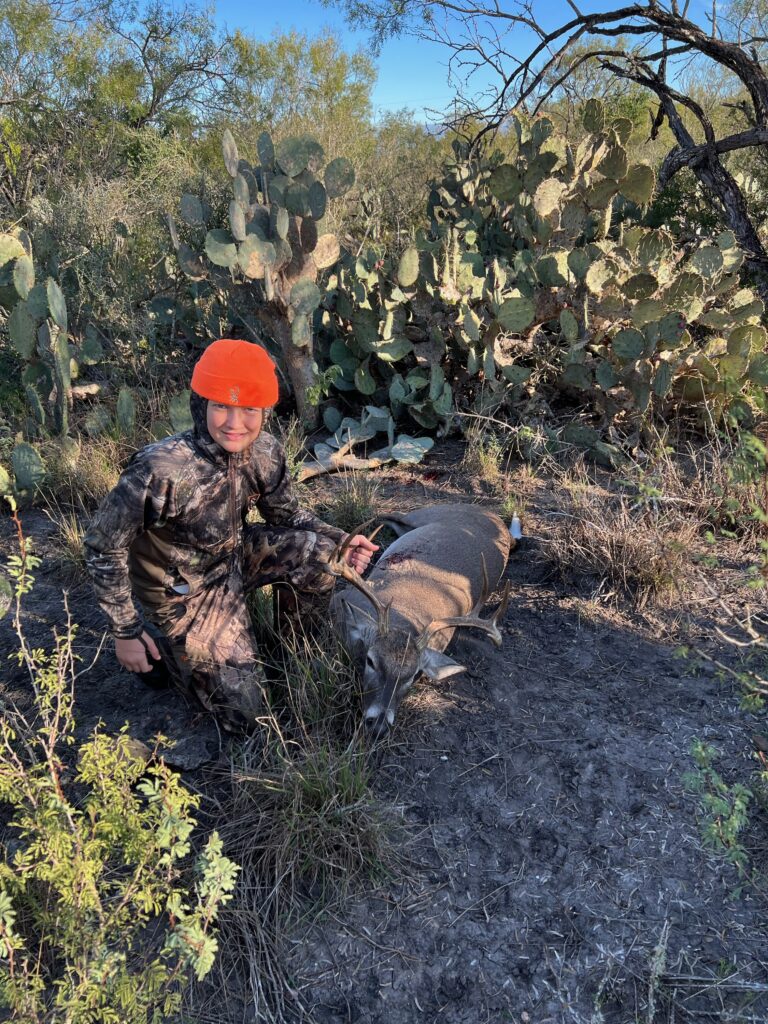
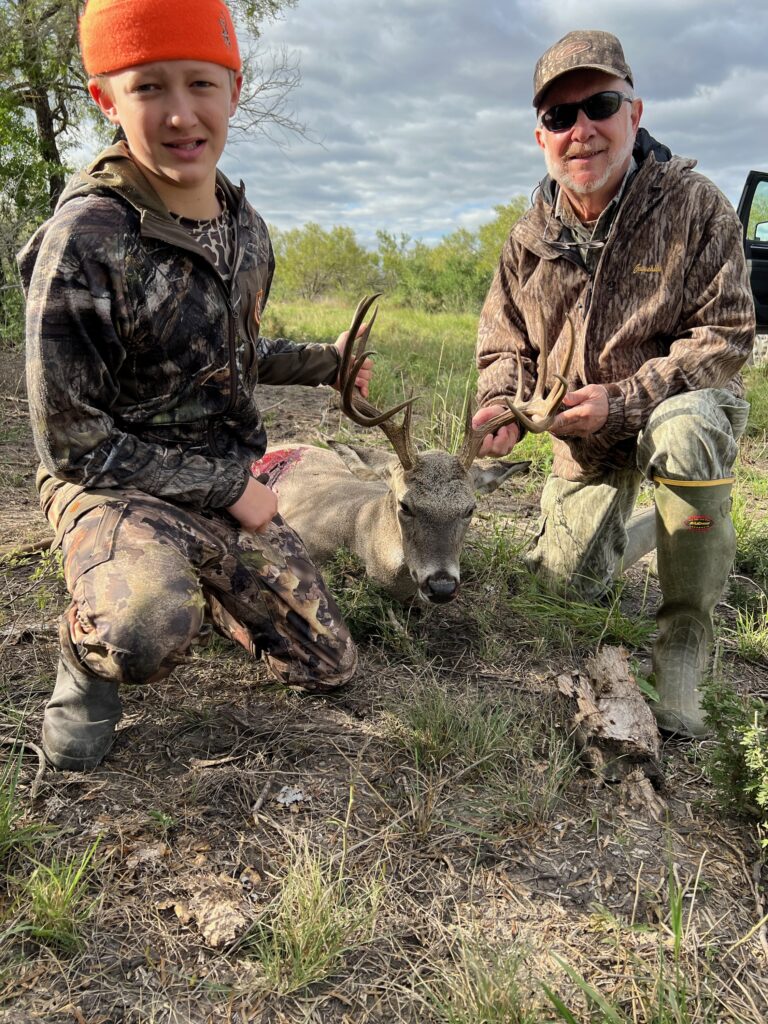
Preston Wood harvested a 9-point and a 12-point free-range south Texas deer while hunting with his grandfather Nathan Watkins south of San Antonio on Tues., Nov. 21. The 12-point sported a 145-inch antler spread, and the nine-point buck aged out at 7 and one half years old. Submitted by Nathan Watkins. Submit your trophy and first hunt photos to [email protected]. It’s free and not only will it run in the print edition, but also here on our award winning outdoors page.
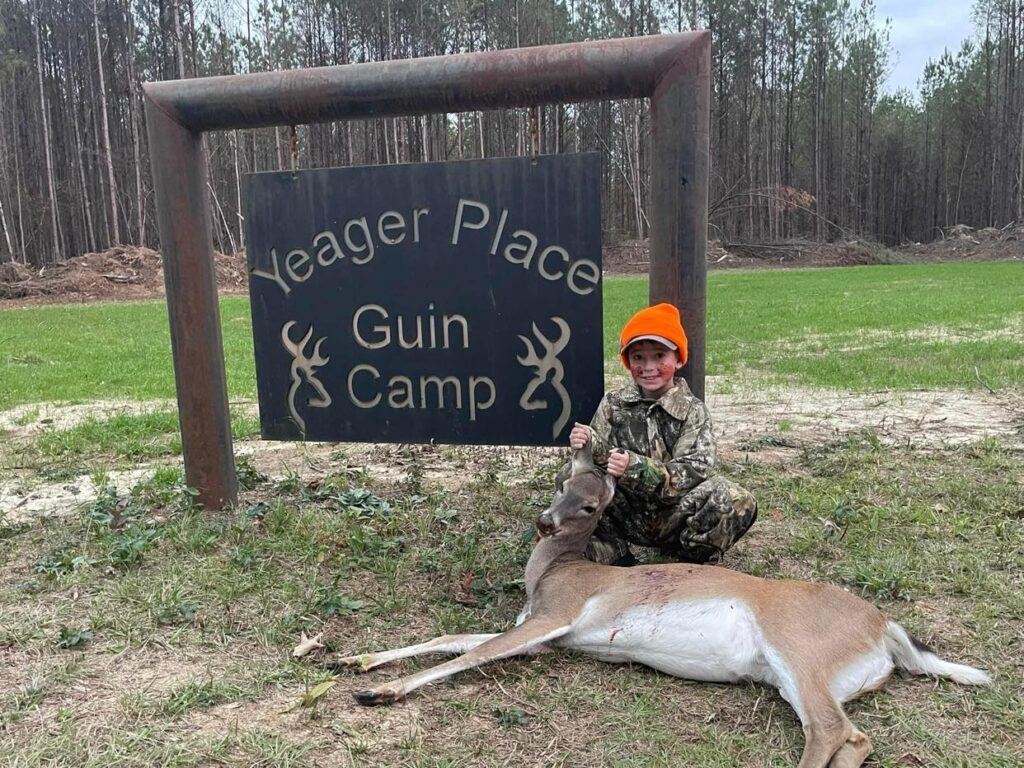
Benjamin Guin with his first deer. Ben is the son of Tyler and Jessie Guin, grandson of Burt and Kim, Sally and Jon Long, and Chad and Laura Chadwick. He is the great grandson of Pete Chadwick, Jimmy Guin and Wayne and Claire Smith. We are all beyond proud of our hunter! Submitted by Claire Smith, Livingston Lines. Submit your trophy and first hunt photos to [email protected]. It’s free and not only will it run in the print edition, but also here on our award winning outdoors page.
Auburn researcher awarded project to assess Alabama’s biodiversity
Five-Year project will examine outcomes of state’s habitat biodiversity
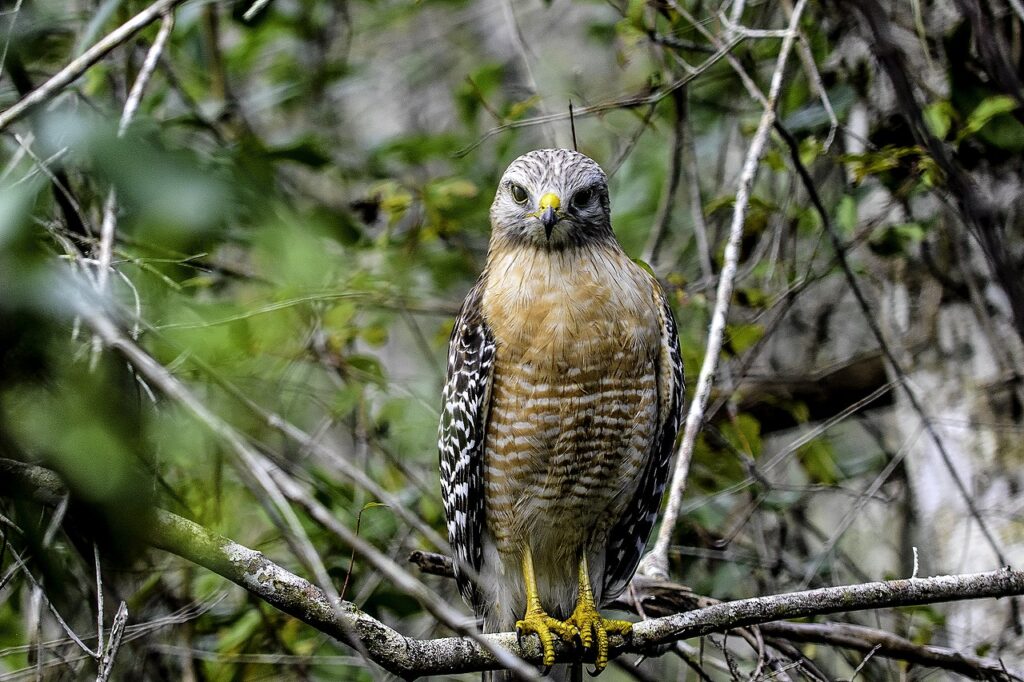
Red-shouldered Hawk.jpg: The Auburn University research team will assess critical surrogate species such as the Red-shouldered Hawk, a species that has similar habitat needs of rare or threatened species which may be more difficult to detect or monitor as part of project that will examine the effects of habitat management on wildlife communities using Alabama’s Wildlife Management Areas (WMAs). Photo credit: Charles Patrick Ewing; January 2016.
The Alabama Department of Conservation of Natural Resources (ADCNR) has awarded Auburn University’s College of Forestry, Wildlife and Environment a five-year project to examine the effects of habitat management on wildlife communities using Alabama’s Wildlife Management Areas (WMAs).
Most land in Alabama is privately owned, with only 4% of its lands protected. As ecologists are staring down the ongoing global biodiversity crisis, the state continues taking action to ensure conservation efforts are as effective and efficient as possible.
“We have to be fastidious about taking care of public lands in Alabama,” said Jonathon Valente, an Auburn assistant research professor in the College of Forestry, Wildlife and Environment (CFWE) and assistant unit leader for USGS’ Alabama Cooperative Fish and Wildlife Research Unit, who will lead the multidisciplinary research team conducting the study.
The project builds on previous work funded by ADCNR for the first Inventory and Conservation Planning Project (ICP) conducted on ADCNR lands between 2008 and 2010. The goal of the original project was to examine the habitat characteristics preferred by different species and use that information to build a plan for maximizing wildlife habitat for all species on WMAs.
“You might call this ICP 2.0,” said Valente. “We will go back to those same state lands to evaluate how landscapes have changed as a function of management, assess how wildlife communities are responding and evaluate outcomes.”
One of the big questions this project hopes to answer is how habitat on WMAs has changed since the last study and how these changes compare to the goals outlined in ICP 1.0. In other words, Valente said, “Did our management actions match the intended outcomes?”
Valente’s team also plans to leverage remote sensing technology to assess the relative importance of these WMAs in supporting biodiversity compared to nearby private lands.
“The world is changing around those WMAs — ownership changes, development comes in — so we are thinking about how the relative importance of WMAs has changed compared to the lands surrounding them.”
Five College of Forestry, Wildlife and Environment graduate students will be hired to work on the project to work closely with Valente and other faculty with relevant expertise. One student will be hired to do an exhaustive vegetation survey, categorizing habitat types and determining how the vegetation has changed since the earlier project.
The other four graduate students will examine how the populations and communities have changed for birds, bats and mammals. Sampling will include human observers recording bird songs and sightings, humane traps and cameras to examine mammals and specialized high-frequency audio recording devices to record bats.
While the project scope includes a broad assessment of avian and mammal species — game and non-game — some key objectives include monitoring habitat for species that ADCNR has deemed of greatest conservation need (GCN). Many of these species are so sparsely populated that they are difficult to detect and monitor.
“The Southeastern American kestrel (Falco sparverius palus) and the Brazilian free-tailed bat (Tadarida brasiliensis) are both GCN species in Alabama’s State Wildlife Action Plan,” Valente said. “Both species tend to occupy agricultural or disturbed spaces with low canopy cover and high ground cover, and results from ICP 1.0 revealed that indigo buntings (Passerina cyanea), which are relatively common in Alabama, have similar habitat preferences. Thus, researchers on ICP 1.0 determined that indigo buntings can serve as a surrogate species for Southeastern American kestrel and Brazilian free-tailed bat because if you’re providing habitat for buntings, you’re likely providing habitat for the other two species.”
Graduate students will be working with CFWE faculty specializing in each of the key areas.
Robert Gitzen, a small mammal and population modeling expert, will supervise the two students working on bats and small mammals. Lana Narine specializes in remote sensing and will co-advise the graduate students in linking vegetation structure data with land cover maps of vegetation structure. Chris Lepczyk is an avian ecologist and will co-advise students working with bird communities. Finally, Jana Willoughby, another leader in the project, will collect preliminary genetic data from small mammal species to study connectivity and genetic isolation among the areas.
They’ll receive support from ADCNR through collaboration with Amy Silvano, the assistant chief of wildlife for ADCNR but also worked on the first ICP project.
“We appreciate her institutional knowledge and enthusiasm for implementing this project,” said Valente.
Monitoring the effects of management activities often isn’t feasible because of budget and personnel restraints, Valente says.
“I applaud ADCNR and their effort to monitor how their actions have played out so they can better evaluate the impact of their management actions or change course where needed,” said Emmett F. Thompson Dean Janaki Alavalapati. “An adaptive approach is critical to preserving biodiversity, and it’s something too often neglected.”
(Written by Jessica Nelson)
Firearms Deer Season Opens November 4 and 18
For deer hunters in Alabama, the opening day of firearms deer season is one the most anticipated times of year. The wait is almost over as the season in zones D and E opens on Saturday, November 4. Firearms deer season for zones A, B and C opens two weeks later on Saturday, November 18.
“We are blessed with a wide variety of diverse landscapes and an abundant deer herd,” said Chris Blankenship, Commissioner of the Alabama Department of Conservation and Natural Resources (ADCNR). “Our state’s natural diversity combined with some of the most liberal seasons and bag limits of any state in the nation makes Alabama’s deer season unique. We hope all of our resident and out of state hunters have a safe and successful season this year.”
Alabama offers more than 1.3 million acres of public hunting land that includes wildlife management areas (WMAs), special opportunity areas, physically disabled hunting areas, Forever Wild Land Trust tracts, U.S. Forest Service and Army Corps of Engineer lands and the Wheeler National Wildlife Refuge. There are also many commercial hunting lodges, guides and outfitters to choose from. With this abundant access to hunting land, hunters can pursue white-tailed deer from Alabama’s Gulf Coast to the Appalachian Foothills in the northeast corner of the state.
With the exception of specific landowner exemptions, everyone ages 16 to 64 is required to have a valid hunting license when hunting deer in Alabama. In the U.S., hunting licenses help fund wildlife conservation. ADCNR’s Wildlife and Freshwater Fisheries Division is primarily funded by money generated through the sale of hunting and fishing licenses. That money is matched on a nearly three-to-one basis by the U.S. Fish and Wildlife Service through funds allocated to Alabama from the Pittman-Robertson Act which levies an excise tax on firearms, ammunition and hunting equipment. For more information about license requirements in Alabama, visit www.outdooralabama.com/license-information.
Season Highlights
click the headings for more information
Hunt the Rut Throughout the Season
Alabama underwent an extensive white-tailed deer restocking program during the middle of the 20th century. Deer stocked were from several states which not only brought great deer to Alabama but their genetics as well. The genetics determine the rut of those deer to this day. The restocking created a unique opportunity for hunters in Alabama to hunt the rut from mid-November until mid-February.
License Packages and Collectible Hard Cards
Not sure which license or additional privileges you need for deer season? ADCNR offers a variety of license packages that take the guesswork out of your season preparation. For an additional $5 to your license purchase, you can select from six collectible hard card designs.
Everything you need to keep your season organized is in this convenient smartphone app. With the Outdoor AL app you can store your hunting license and additional season privileges; display your harvest record; Game Check your deer and turkey harvests; log WMA check-ins and check-outs, access WMA maps, rules and regulations; view moon phases and wildlife feeding times, view season dates and bag limits; and much more.
In 2022, ADCNR established a Chronic Wasting Disease (CWD) Zone for all of Colbert and Lauderdale counties in northwest Alabama after the disease was confirmed in a hunter-harvested deer. It is important that hunters be familiar with Alabama’s CWD regulation and the CWD regulations in other states. Click the header above, for the latest information about CWD in Alabama.
All deer and turkey harvested in Alabama must be reported through the state’s Game Check system. Hunters have 48 hours to report their harvest through the Outdoor AL mobile app, online at www.outdooralabama.com, or by calling (800) 888-7690.
If you transfer possession of your deer (whole or part) to any other person, taxidermist or deer processor, you must provide them with written documentation of the transfer when they take possession of the animal. The person receiving the animal is responsible for keeping the required written documentation while the animal is in their possession.
Avid deer hunters are encouraged to introduce someone to hunting who has little to no hunting experience. Passing on your passion for the sport ensures Alabama’s tradition of wildlife conservation continues for future generations. If you are interested in learning how to hunt and don’t know where to begin, check out ADCNR’s Adult Mentored Hunting Program.
Are you looking for new ways to prepare your deer harvest? ADCNR now offers recipes on the Wild Eats section of its website. From venison chili to burgers, Wild Eats recipes are easy to follow and specifically designed with home cooks in mind.
For more information about the upcoming white-tailed deer season in Alabama, visit the hunting section of www.outdooralabama.com.
ADCNR promotes wise stewardship, management and enjoyment of Alabama’s natural resources through four divisions: Marine Resources, State Lands, State Parks, and Wildlife and Freshwater Fisheries. Learn more at www.outdooralabama.com.
Alabama’s Fire Alert Reinstated to Include All 67 Counties
Effective immediately, the Alabama Forestry Commission (AFC) has re-issued a Fire Alert for all 67 counties in the state. In the 32 northern counties (roughly north of Interstate 20), no burn permits will be issued. In the 35 southern counties (south of Interstate 20), certified prescribed burn managers will have the option to obtain a one-day burn permit. There will be no exceptions to this rule. Anyone who burns a field, grassland, or woodland without a burn permit may be subject to prosecution for committing a Class B misdemeanor.
During the past seven days, AFC wildland firefighters have responded to 111 wildfires that scorched more than 1,881 acres of forestland in Alabama. Drought conditions are expected to worsen as no rain is forecast for the next week, and October is historically the state’s driest month. This extremely dry weather creates a greater-than-average potential for outdoor fires to escape easily and spread rapidly, taking longer – and more firefighting resources – to contain and ultimately control.
To report a wildfire, call the Alabama Forestry Commission at (800) 392-5679. For more information on the current wildfire situation in the state or any other forestry-related issues, contact your local AFC office or visit the agency website at www.forestry.alabama.gov/Pages/Fire/Totals.aspx The Alabama Forestry Commission is the state agency committed to protecting Alabama’s invaluable forest assets as well as its citizens.
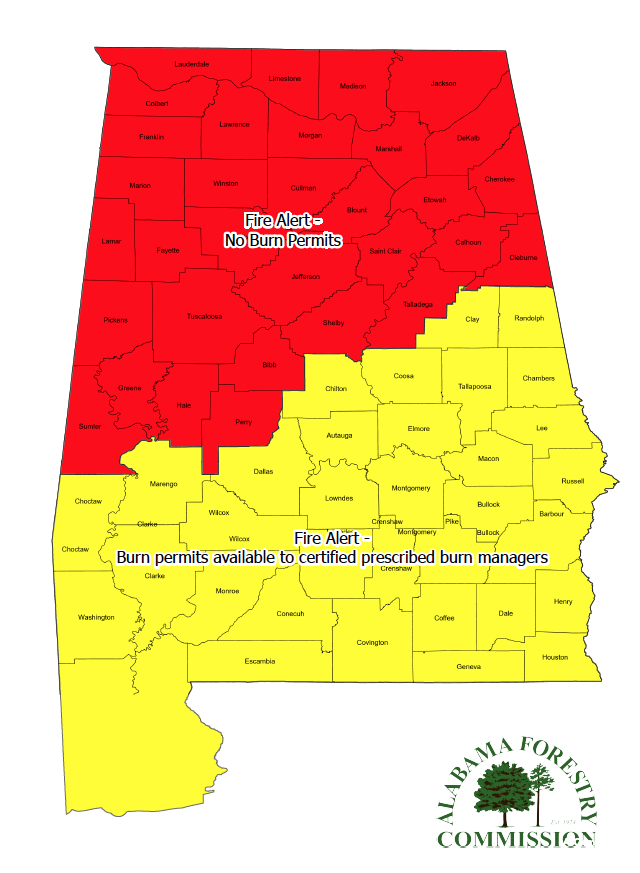
Alabama Outdoors
Maddox optimistic about upcoming waterfowl seasons
By David Rainer, Alabama Department of Conservation and Natural Resources
Although the U.S. Fish and Wildlife Service’s (USFWS) annual waterfowl survey indicates overall duck numbers are down, Seth Maddox remains optimistic about Alabama’s 2023-2024 waterfowl seasons.
Maddox, Assistant Wildlife Section Chief for the Wildlife and Freshwater Fisheries (WFF) Division of the Alabama Department of Conservation and Natural Resources (ADCNR), said the USFWS survey occurred on the breeding grounds in the upper Midwest and Canada before the success of the hatch was known.
“The previous year we had some poor habitat conditions in the breeding grounds,” Maddox said. “This year, it looks a lot better as far as more water on the landscape. So, even though the overall population is down, the hatch reproduction was probably really good because of the better habitat conditions. That means we should see a lot of young-of-the-year ducks coming down. We should have an increased fall flight for this year.”
Maddox said the USFWS survey is conducted in May after the males and females are paired. The count is for paired ducks and lone males. In late May and June, the paired ducks start breeding, and the hen will produce a clutch of eggs that will hatch in about a month.
“After they hatch, the hatchlings will hang out with their mom,” he said. “They feed themselves, but they will stay together. It takes about 45 days to grow flight feathers and be fully flighted. At that point, they are kind of on their own.”
The start of the fall migration depends on the species with some patterns dictated by the length of the days and others by the availability of food and suitable habitat.
“As days get shorter, gadwall and blue-winged teal start moving south,” Maddox said. “Mallards and green-winged teal are weather migrators, so as the temperatures drop, they start moving south. But they don’t all move at once. Some tend to hang around and tough it out as long as they can. Some go to traditional wintering areas right away. It’s kind of a mixed bag for mallards, for example. Some might go straight down the Mississippi alluvial valley to their traditional wintering grounds. Some may hang out in Minnesota and Iowa until they are forced out by ice and snow. It depends on the individual bird and what it’s traditionally done.
“The juvenile birds are more likely to keep pushing south. And it depends on the conditions during that southward migration. They may stop at different sites if there is really good food there and may hang on longer to build up those reserves. If they stop at a site and the conditions aren’t good, not a lot of food on the ground, they will be going south quicker.”
Alabama’s most hunted and harvested duck, the wood duck, apparently had a good breeding season as well.
“We really had a good banding season for wood ducks,” Maddox said. “It’s our number one harvested duck statewide. I think we’ll have a lot of wood ducks on the landscape this year. So, it should be a good wood duck year. We banded almost 900 birds this summer, which is a good number. The production looks really good, which is a byproduct of the wet spring and summer we had.”
Although the Gulf Coast states have been in drought conditions this fall, Maddox said the conditions during the summer were much more favorable for the waterfowl habitat.
“Prior to the dry fall, we had a pretty wet summer,” he said. “There should be plenty of food on the ground. On our waterfowl management areas, the crops and moist soil native vegetation are looking good. We had enough rain for those to grow and produce seeds. We should have plenty of food when they arrive.
“I’m not too worried about current conditions. Traditionally, October is our driest time anyway in Alabama. We should start getting rain in November, and that should open that food source up when those birds arrive here.
Maddox said the duck seasons in the northern Midwest have already opened, and he has heard some good reports of hunting in those areas with prairie potholes and abundant lakes.
Regarding Alabama’s early teal season in September, Maddox said it was feast or famine.
“The teal pushed through pretty quick,” he said. “We had one good weekend. If they were there today, they could be gone tomorrow. If you had water, you probably had teal. If you didn’t, you weren’t going to get any.”
The regular waterfowl season for ducks, coots and mergansers is set for November 24-25 and December 2 through January 28, 2024. The bag limit of six ducks is unchanged. The limit may include no more than four mallards (no more than 2 may be female), three wood ducks, one mottled duck, two black ducks, two redheads, one pintail, two canvasback and one scaup. The coot limit is 15 per day, while the merganser limit is five per day, only two of which can be hooded mergansers.
The goose season is currently open through October 28 and then will be the same dates as duck season. The aggregate bag limit for dark geese (Canada, white-fronted, Brant) is five per day. The limit for light geese (snow, blue and Ross’s) is also an aggregate of five per day.
“It’s the same story every year,” Maddox said. “We’re at the bottom of the funnel of the flyway. We’ll get gadwalls and ringnecks. They are going to come down because the days are getting shorter. They should get here in early to mid-November. From there, we’ll get a mixing of other species, but it’s very weather dependent. The abundance of those other species will be determined by those winter weather patterns.”
Maddox said the number of waterfowl hunters continues to increase across the state, based on the number of duck stamps sold.
“We don’t have a physical duck stamp anymore, so we don’t have collectors buying stamps,” he said. “Last year we had a record year for the third year in a row for duck stamp sales at 38,396.
“Typically, what we see is opening day drives the bus. If we have a good opening day, we have increased participation. The weather drives a lot of that. If the weather is in the 80s, it makes for tough duck hunting. But I really gauge it on wood ducks because that’s our number one harvested species. The more wood ducks we have, the more hunters we have on the landscape.”
Additional Fire Precautions Announced for All Alabama State Parks
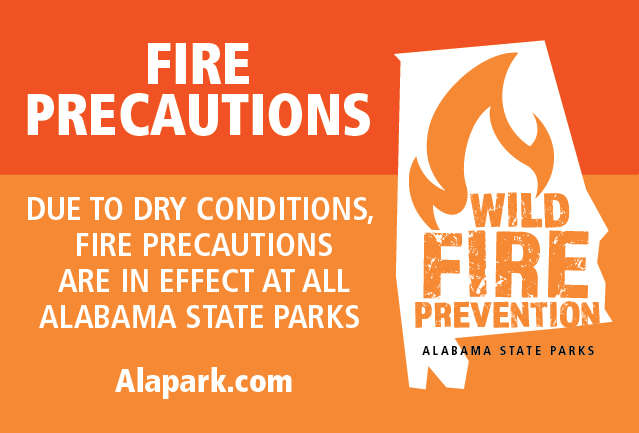
The Alabama Department of Conservation and Natural Resources (ADCNR) has announced additional fire precautions for all Alabama State Parks due to extended dry conditions. Visitors and overnight guests are being asked to take extra precautions with campfires and barbecue grills.
“We encourage park visitors and overnight guests to be very cautious with campfires and grills during this period until we get some much-needed rain,” said Greg Lein, Director of ADCNR’s State Parks Division. “The current dry conditions have increased the risk for wildfires throughout the state.”
The Alabama Forestry Commission issued a statewide Fire Alert on September 22, 2023. The Fire Alert will remain in effect until rescinded by the State Forester.
The additional Alabama State Parks fire precautions include the following:
No campfires outside of designated day-use picnic areas, campgrounds or developed recreational areas.
Barbecue grills and gas-fueled stoves are permitted only in designated day-use picnic areas, campgrounds or developed recreational areas.
Do not use barbecue grills or gas stoves in areas that can scorch, burn or damage lawns or picnic tables.
Place barbecue grills a minimum of 15 feet away from any flammable material such as grass, weeds, wood chips, brush or park facilities.
Do not leave a campfire or grill unattended.
Completely extinguish all burning fuel such as wood or charcoal before disposing of it in an existing fireplace, fire pit or barbecue grill.
If you have questions about the fire precautions, please contact the main offices of the individual Alabama State Parks. Contact information is available at www.alapark.com.
Park visitors are also encouraged to monitor each state park’s social media accounts for updates on fire precautions and restrictions. A social media directory for Alabama State Parks is available at www.alapark.com/social-media-directory.
ADCNR promotes wise stewardship, management and enjoyment of Alabama’s natural resources through four divisions: Marine Resources, State Lands, State Parks, and Wildlife and Freshwater Fisheries. Learn more at www.outdooralabama.com.
Physically Disabled Hunt Dates Announced for Field Trial Area
The M. Barnett Lawley Forever Wild Field Trial Area (FWFTA) in Hale County, Alabama, will host a series of deer hunts for hunters with physical disabilities from late November 2023 through January 2024. To register for the hunts, call (334) 289-8030 starting October 2, 2023.
“We are honored to provide hunting opportunities for all Alabamians, including those with physical disabilities,” said Chris Blankenship, Commissioner of the Alabama Department of Conservation and Natural Resources (ADCNR) and Chairman of the Forever Wild Board of Trustees. “Access to outdoor activities such as hunting should be available to everyone who has an interest.”
Hunt availability is limited and will be assigned on a first come, first served basis. Hunters are limited to registering for only one hunt for the season and may bring an assistant to help with the hunt. Hunters will need a hunting license and Conservation ID number prior to registering.
FWFTA physically disabled hunt dates
November 22, 29
December 9, 13, 16
January 3, 10, 17, 20, 24
Hunters with physical disabilities are required to fill out a Disabled Hunter Permit Application prior to the hunt dates. The permit can be downloaded from the Physically Disabled Hunting Areas section of www.outdooralabama.com/hunting/where-hunt-alabama.
All deer harvested during the FWFTA physically disabled hunts must be reported via Alabama’s Game Check system. Hunters will have 48 hours to Game Check their harvest through the Outdoor AL mobile app or online at www.outdooralabama.com.
For more information about the hunt details or registration process, call Brae Buckner with the ADCNR State Lands Division at (334) 868-1684, or email [email protected].
The FWFTA consists of 4,300 acres in Hale County and is managed as a nature preserve and recreation area. In addition to maintaining a sporting dog test ground and both youth and physically disabled hunting programs, the ADCNR State Lands Division is currently restoring the tract’s native prairie grasslands and managing its numerous ponds for public fishing events.
ADCNR promotes wise stewardship, management and enjoyment of Alabama’s natural resources through four divisions: Marine Resources, State Lands, State Parks, and Wildlife and Freshwater Fisheries. Learn more at www.outdooralabama.com.
Youth hunt dates announced for Forever Wild Field Trial area
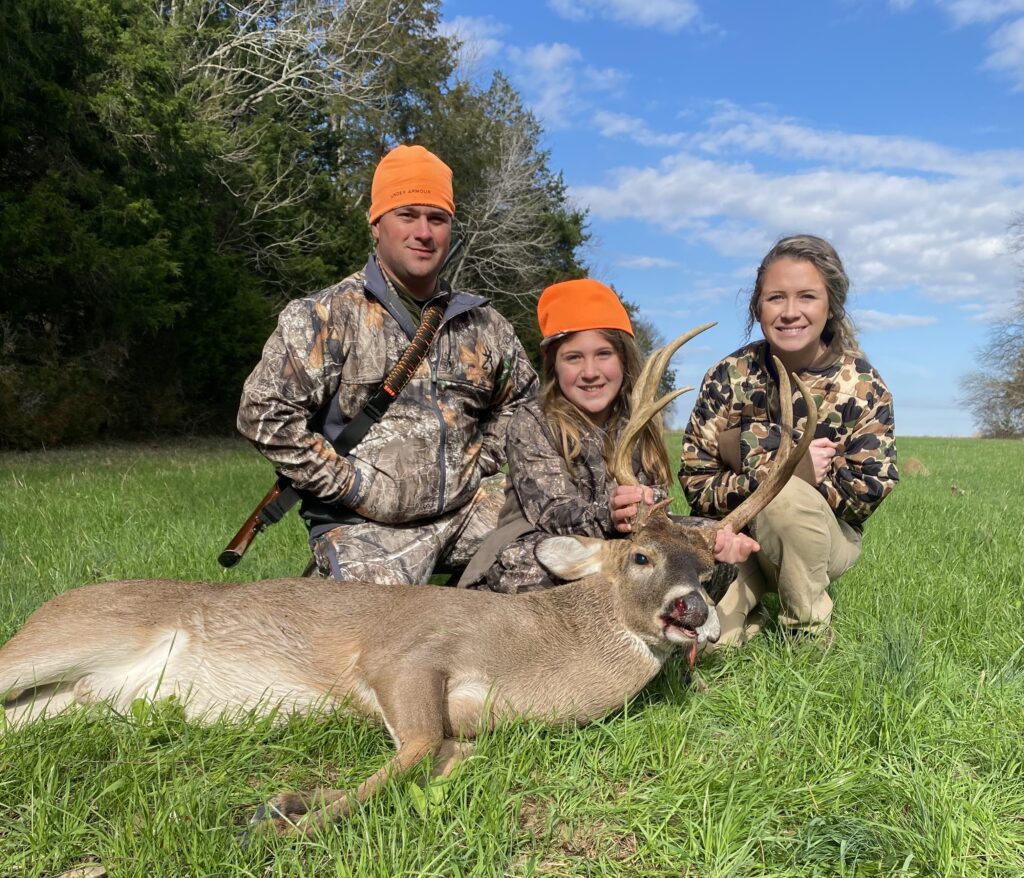
FWFTA Youth Hunt – Nick and Presley Anderson and Brae Buckner with ADCNR’s State Lands Division. Be sure to send in your trophy deer photos to [email protected].
The State Lands Division of the Alabama Department of Conservation and Natural Resources (ADCNR) announces the youth deer and duck hunt schedules for the M. Barnett Lawley Forever Wild Field Trial Area (FWFTA) in Hale County. The hunts will take place late November 2023 through January 2024. Registration opens September 18 and runs until November 1. Hunters will be selected via a computerized, random drawing after registration closes.
“Youth hunts like these create great bonding experiences for families and help young hunters become responsible stewards of our natural resources,” said Chris Blankenship, ADCNR Commissioner and Chairman of the Forever Wild Board of Trustees. “I am thrilled that we will have an opportunity again this year to introduce youth to the great deer and duck hunting on this Forever Wild property.”
Youth Deer Hunt Dates
November 22, 29
December 9, 13, 16
January 3, 10, 17, 20, 24
Youth Duck Hunt Dates
December 9, 16
January 3, 10, 20, 24
To register for a hunt, visit https://publichunts.dcnr.alabama.gov/Public/AvailableHunts during the registration period listed above.
Registration for the FWFTA youth hunts is only available to parents or adults who are at least 21 years old and have a Conservation ID number. A hunting license is not required at the time of registration. However, if selected during the random draw, you must have a valid hunting license to accept the hunt permit. If selected for a hunt, you will receive an email requesting that you validate/accept the permit. Once the permit is accepted, you will receive an email with the hunt detail.
To participate in the youth hunts, youth hunters must be age 15 or younger and accompanied by an adult at least 21 years old (or a parent). Adults must have a valid state hunting license and applicable duck stamp, if duck hunting.
Hunters must obtain their license and duck stamp (if duck hunting) before the hunt since they will not be available on-site. Licenses are available for purchase at various retailers throughout the state or online at www.outdooralabama.com.
All deer harvested during the FWFTA youth hunts must be reported via Alabama’s Game Check system. Hunters have 48 hours to Game Check their harvest through the Outdoor AL mobile app or online at www.outdooralabama.com.
In addition to being required when registering for the FWFTA youth hunts, a Conservation ID number is the fastest and easiest way to report a deer or turkey harvest. This number is unique to each hunter and can also be used to purchase future licenses, obtain Harvest Information Program (HIP) permits, register for Special Opportunity Area hunts and more. For information about how to obtain a Conservation ID number, visit www.outdooralabama.com/hunting.
For more information about the hunt details or registration process, call Brae Buckner with the ADCNR State Lands Division at (334) 868-1684, or email [email protected].
The FWFTA consists of 4,300 acres in Hale County and is managed as a nature preserve and recreation area. In addition to maintaining a sporting dog test ground and both youth and physically disabled hunting programs, the ADCNR State Lands Division is currently restoring the tract’s native prairie grasslands and managing its numerous ponds for public fishing events.
ADCNR promotes wise stewardship, management and enjoyment of Alabama’s natural resources through four divisions: Marine Resources, State Lands, State Parks, and Wildlife and Freshwater Fisheries. Learn more at www.outdooralabama.com.
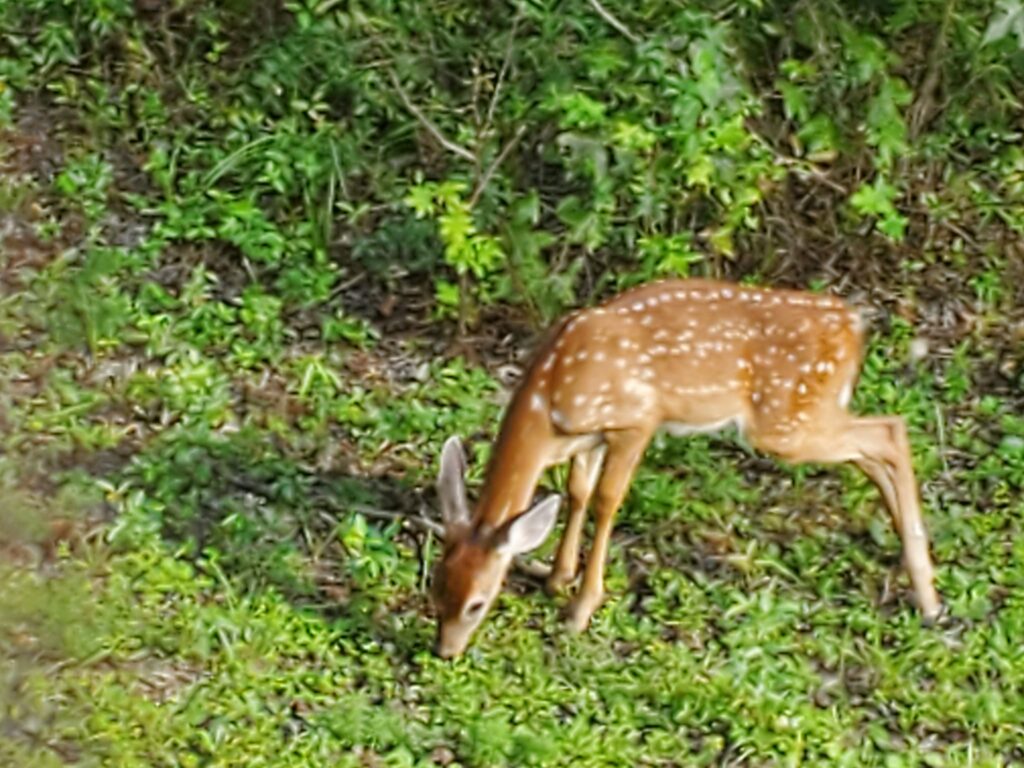
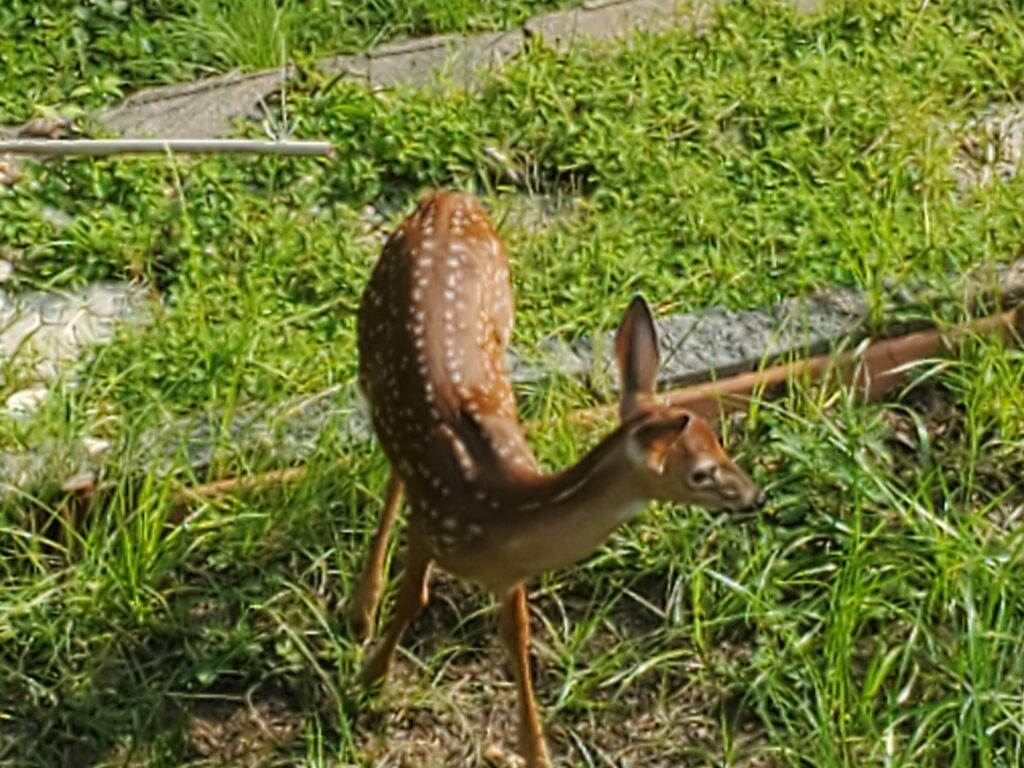
White tailed deer are a common site in West Alabama and these twin fawns wandered into a back yard to graze late Sunday afternoon. Photos by Gloriann DeCastra, age 7.
Email your outdoor photos to [email protected]. Not only will your photo be in the paper for free, but we also run them on our awards winning outdoors page. Be sure to tell us who took the photo and area. Just a town/community will be fine. We know how hunters and conservationists like to guard their area.
BOARsighted: A Look Into Wild Pig Management
By Katie Nichols
AUBURN UNIVERSITY, Ala. – Wild pigs are arguably one of the most detrimental wildlife species. These animals have the potential to decimate crops, wildlife habitat and food plots. Virtually every natural resource can be affected by these creatures. The Alabama Cooperative Extension System encourages all landowners and wildlife enthusiasts to learn more about these destructive animals. You may not be able to take the wild out of the hog, but you can take the hog out of the wild.
Mark Smith, an Alabama Extension expert of forestry and wildlife sciences, has dedicated his career to wildlife sciences. Smith began his service with Extension and Auburn University in 2007, where he has specialized in wildlife damage management, especially wild pigs. According to Smith, eradicating a non-native species such as wild pigs can be a difficult process.
“Wild pigs compete for food and cover resources with some of the state’s economically important game species such as white-tailed deer and wild turkeys,” Smith said. “They can also have a significant impact on water quality in local watersheds.”
In Alabama, the greatest populations of wild pigs are in the southern half of the state. From central to north Alabama, pigs live in smaller pockets ranging to the Tennessee border. To see where the greatest pig concentrations are in your state, view the USDA Animal and Plant Health Inspection Service maps at www.aphis.usda.gov.
The Wild Pig Effect
According to Smith, who is also a professor in the Auburn University College of Forestry, Wildlife and Environment, managing wild pig populations is critical in maintaining water quality.
“In one study conducted in Alabama from 2018 to 2020, researchers found that E. coli and fecal coliform concentrations were about three to four times greater in streams with wild pigs present,” Smith said. “This far exceeds Environmental Protection Agency (EPA) concentration standards for recreational watersheds.”
To prevent private or local water resources from contamination by pig bacteria, a concerted effort to control pig populations is the best defense. Smith said the study concluded that – with reduction of pig population over time – concentrations of bacteria can reduce by up to 75%.
The presence of feral pigs also influences other wildlife populations. Because they are territorial as well as destructive, wild pigs often push other species out of their habitats. Smith said further research studies show this applies to wild turkeys and their reproduction success.
“When wild pigs are removed, turkeys were more abundant,” Smith said. “Immediate responses (one year after pig removals) were likely due to turkeys moving in from adjacent properties. However, researchers observed a significant increase in turkey poults between two to three years after wild pig removals, which was indicative of increases in either nest success or poult survival.”
Oh Deer
For deer hunters, there is no relief from the wild pig effect either. Having accurate information about a deer herd is critical for wildlife management and a successful hunt. Smith said wild pigs can also throw a wrench in those efforts.
“If you’re conducting camera surveys of white-tailed deer on your property to estimate deer abundance or maybe get an idea of the number of bucks roaming the property – you guessed it – wild pigs may have a significant impact on what you see and what you don’t see,” Smith said.
Corn is often a popular bait for game camera placements to attract wildlife. According to further research at Auburn University, feral pigs can also prohibit hunters from having accurate results when using baiting techniques to lure animals in front of cameras. In many instances, pigs were clearly captured competing with immature white-tailed bucks for food resources, causing them to disperse.
“If you’re conducting camera surveys and have pigs, know that your results will be a bit off,” Smith said.
Resources
Natural resources like food, water and shelter are imperative for a healthy wildlife population. Pigs, deer, turkey and many other species forage on the same food resources. Acorns are one of the most popular items on the menu, and Smith said there are no reservations for dinner in the wild.
“Acorns are an important food source in the fall and winter for many species, especially economically important game species like white-tailed deer and turkeys,” Smith said. “Another recent study found that wild pigs are a voracious competitor and may consume up to 23% of the acorn crop each year. However, when wild pig populations were significantly reduced the following year, acorn consumption dropped to only 7.2%.”
If it seems like a hog problem cannot get any worse, don’t forget about row crops. Agriculture producers and those who utilize row crops for food plots are no strangers to pig devastation. Wild pigs have rooting and wallowing behaviors, which damage soil and crops. Also, they can prey on livestock, especially newborn calves, lambs and goats. Smith said wild pig damage to agriculture likely exceeds $1 billion nationally each year.
Control
At the first sign of wild pigs, landowners should use control measures to get a handle on the situation. Wild pigs can reproduce quickly, providing little time before they can decimate resources. Smith suggests that adjoining landowners and managers work together to eradicate swine populations.
“It’s much easier to control wild pigs when they first invade and only a few individuals are present,” he said. “Significantly reducing or eradicating them takes a lot of work if done properly.”
There is a preferred method to removing pigs from small acreages at a time. By using premeditated, systematic and intensive practices, wildlife managers can successfully meet their goals.
“In most cases, hunting or opportunistic shooting of wild pigs will rarely control a population,” Smith said. “Live trapping using large, corral style traps and humanely euthanizing the pigs is the most cost- and time-effective means of removal.”
Pig Out
Utilizing unbiased scientific information from wildlife professionals is the best start to addressing a wild pig problem. To get pigs out, education and proven practices must come into play. This is where Alabama Extension can help.
Alabama Extension takes the expertise of Auburn University and Alabama A&M University to the people. Our educators in all 67 counties are environmental partners — bringing practical ways to better our homes, farms, people and the world around us. Our research extends knowledge and improves lives.
Want to learn more about wild pig management? Visit www.aces.edu or contact your local Extension office.
Fall is Prime Time to Plant Trees, Shrubs
By Katie Nichols
AUBURN UNIVERSITY, Ala. — Fall is the right time to plant trees and shrubs, since the weather is cooler and plants are much less stressed than they are in the heat of summer. It is also a great time to get outside and work without getting soaking wet with sweat. Brian Brown, an Alabama Cooperative Extension System home horticulture agent, said two of the most important things you should do before planting are take a soil test and correct any drainage issues.
Soil Testing
A soil test will provide gardeners with important information on the health of their soil — including how to adjust soil pH and other nutrients the yard may need.
“Soil test kits are available at your local Extension office, along with information on how to collect the soil and send it to the Auburn University Soil, Forage and Water Testing Lab,” Brown said. “If you’ve already completed a soil test, you are one step ahead. Follow the fertilizing directions recommended from the results of your soil test as you move forward with your planting plans.”
Fall Planting
Brown said most problems in the landscape have to do with water or a lack thereof. So, correcting drainage issues is a major step in keeping plants healthy. Too much and too little water will exhibit the same symptoms.
“Once you have found the ideal location for your plant, dig the planting hole two to three times the size of the root ball,” Brown said. “That will give the plant plenty of room to establish a good root system. One of the most important things you can do is not plant your new plant too deep.”
When planting, gardeners should make sure that they can can see the root flare at the base of the tree or shrub, which should be at ground level. It is also important to scarify the root ball. This entails taking the plant out of the container and breaking up the roots. Be sure to cut or break up any roots that are circling.
Brown said gardeners shouldn’t be afraid of cutting those roots.
“If you skip this step, you may end up with girdled roots, which will lead to a decline or eventual death of the plant,” he said.
Once the hole has been dug and the root ball has been scarified, place the plant into the hole. In Alabama, many have heavy clay soils, so it is wise to plant a couple of inches above the surrounding ground to help with drainage.
“Backfill the hole, being sure to eliminate any air pockets that may be there,” Brown said. “Water the new plant deeply. It will need to be watered often during its first few weeks.”
Spring Fertilizing
It is important to avoid fertilizing in the fall, which could result in new growth if warm weather persists. The new, tender growth could be burned by any early-season freezes. When spring arrives, Brown said it is best to fertilize plants based on the results of the soil test. Following these steps will ensure healthy, thriving plants.
More Information
For more information about fall gardening, visit www.aces.edu or call the local Extension office to connect with a local home grounds, gardens and home pests agent.
What’s the Buzz about Honey?
By Katie Nichols
AUBURN UNIVERSITY, Ala. — The arrival of fall generally signifies the end of honey harvest for most beekeepers in the United States. Always a popular sweetener, honey has made a comeback as consumers shift their preference toward local products. September is National Honey Month, which makes it a great time to think about the contributions of pollinators near and far, as well as the apiculturists who care for them.
The Alabama Cooperative Extension System recognizes the value of the work that pollinators do in the state — in the backyard, on the farm and all of the places in between. Members of the Alabama Extension beekeeping team, Allyson Shabel and Jack Rowe, work together to provide resources, training and community for beekeepers in Alabama.
Local Honey
Rowe, an Alabama Extension regional agent, said honey can be used in cooking, for medicinal purposes, as a preservative and a sweetener.
“Honey is good for cooking, preserving foods and even just for sweetening,” Rowe said. “It is the sweetener of the whole past ages of humanity.”
He said one of the best ways to support communities and local people is by purchasing locally grown and produced products. Local honey is available at most farm stands or farmers markets.
“Local honey is one of those joys in our culinary lives,” Rowe said. “It is fragrant, tasty, supports local people and keeps the ideals of local life and food alive.”
Rowe said while honey is a favorite of many, there is a common misconception about its health benefits. Many believe that honey from local hives prevents seasonal allergies. However, this is not supported by scientific evidence.
“The plants the bees feed from are not the ones releasing airborne pollen,” Rowe said. “Also, honey never contacts any of our nasal membranes.”
Beekeeping Benefits
Shabel, an Alabama Extension urban regional agent, said beekeeping is a great hobby to help you connect to the environment around you. Beekeepers also play a key role in protecting and caring for local pollinators. Bees pollinate local crops for farmers, while also producing honey for communities.
“Protecting pollinator populations in your local environment is important,” Shabel said. “Many flowering plants in your landscape rely on pollinators to produce the next generation of seeds.”
Beekeeping also provides an opportunity to stay active. From lifting heavy boxes to wearing protective suits in hot weather, beekeeping requires physical endurance and disciplined time management to make sure the colony survives.
“Beekeeping can be physically demanding but very rewarding,” Shabel said. “It is a very physical hobby that requires strength and stamina.”
More Information
Rowe and Shabel share current events and information through their monthly beekeeping newsletter as well as through their At Home Beekeeping Series, which can be joined remotely via Facebook or Zoom on the last Tuesday of each month.
Learn more about protecting pollinators in the Pollinators section of www.aces.edu.
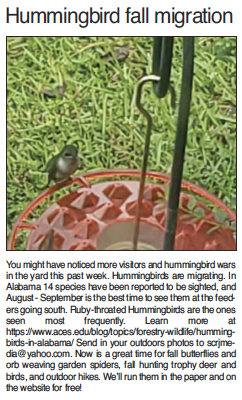
Additional fire precautions added at select state parks due to dry conditions
Ahead of Labor Day weekend, the State Parks Division of the Alabama Department of Conservation and Natural Resources (ADCNR) has announced additional fire precautions for five State Parks in the southern portion of the state. Visitors and overnight guests at Gulf, Meaher, Bladon Springs, Roland Cooper and Frank Jackson state parks are being asked to take extra precautions with campfires and barbecue grills during the current dry conditions.
“As park guests plan for the upcoming Labor Day holiday, we ask that they keep the recent hot and dry conditions in mind when it comes to campfires and grilling,” said Greg Lein, Director of ADCNR’s State Parks Division. “Those conditions have increased the risk for wildfires at state parks in south Alabama. We encourage park visitors and overnight guests to be very cautious with campfires and grills during this period until we get some much-needed rain and the temperatures moderate.”
The additional fire precautions at Gulf, Meaher, Bladon Springs, Roland Cooper and Frank Jackson state parks include the following:
No campfires outside of designated day-use picnic areas, campgrounds or developed recreational areas.
Barbecue grills and gas-fueled stoves are permitted only in designated day-use picnic areas, campgrounds or developed recreational areas.
Do not use barbecue grills or gas stoves in areas that can scorch, burn or damage lawns or picnic tables.
Place barbecue grills a minimum of 15 feet away from any flammable material such as grass, weeds, wood chips, brush or park facilities.
Do not leave a campfire or grill unattended.
Completely extinguish all burning fuel such as wood or charcoal before disposing of it in an existing fireplace, fire pit or barbecue grill.
If you have questions about the additional fire precautions at Gulf, Meaher, Bladon Springs, Roland Cooper and Frank Jackson state parks, please contact the main offices of the individual parks. Contact information is available at www.alapark.com.
Park visitors are also encouraged to monitor each state park’s social media accounts for updates on fire precautions and restrictions. A social media directory for Alabama State Parks is available at www.alapark.com/social-media-directory.
ADCNR promotes wise stewardship, management and enjoyment of Alabama’s natural resources through four divisions: Marine Resources, State Lands, State Parks, and Wildlife and Freshwater Fisheries. Learn more at www.outdooralabama.com.

Connecting with Conservation’ Highlights Funding for State Wildlife Agencies
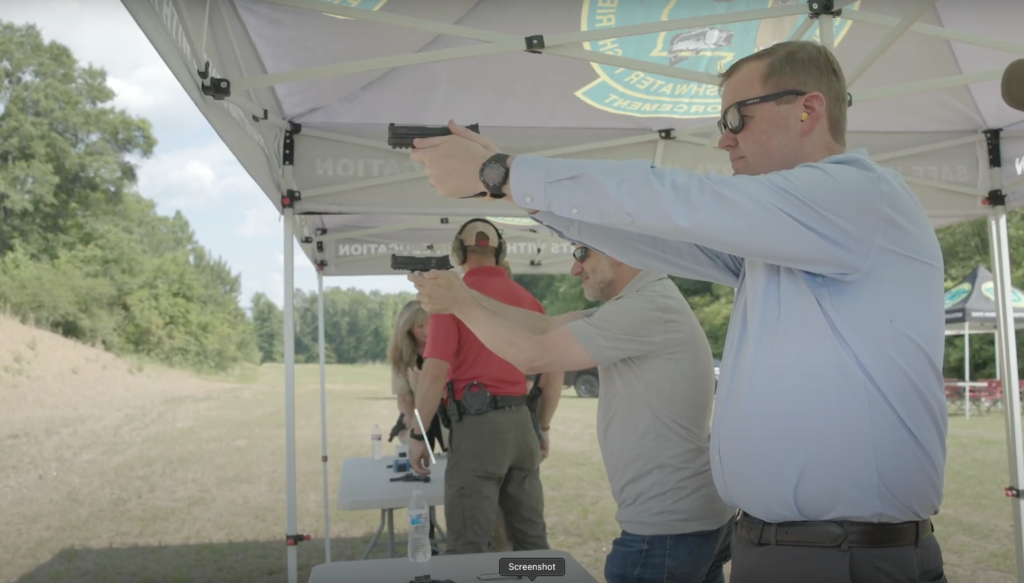

Those who participate in shooting sports contribute to state wildlife agencies through excise taxes. Alabama Department of Conservation and Natural Resources staff learns more about the manufacturing process at Creedmoor Sports.
By XXXX
By DAVID RAINER
Alabama Department of Conservation and Natural Resources
How conservation and outdoors recreation are funded throughout the nation is somewhat of a mystery for most people.
In an effort to inform the public about where state wildlife and fisheries agencies get the money to conserve habitat and provide quality outdoors recreation, the Alabama Department of Conservation and Natural Resources’ (ADCNR) Wildlife and Freshwater Fisheries (WFF) Division is teaming with the Outdoor Stewards of Conservation Foundation and the firearms and ammunition industry to promote Connecting with Conservation, a video series that explains the process. The program highlights the shift in user groups as well.
“From the time when the Pittman-Robertson Act was passed in the late 1930s, hunters have paid the lion’s share of wildlife conservation in America,” said Chuck Sykes, WFF Director. “Hunters buying licenses and also buying guns and ammunition, those are basically the funding sources for state agencies. It’s Pittman-Robertson excise tax dollars that the manufacturers pay, and the license dollars that hunters pay.
“That’s how states have bought property for public hunting. That’s how states provide services and do research. That’s the cornerstone of conservation in the United States.”
Sykes said in the past decade, especially the past five or six years, agencies have seen a huge shift in who is actually funding conservation. Hunters are being passed by recreational and target shooters, who are now paying the lion’s share of excise taxes.
“For state agencies to remain relevant and to support people who are actually paying for that conservation now, states have had to change their business models a little bit,” he said. “Instead of everything going for wildlife management like it has been for the past 80 years, now we’re focusing a lot on providing recreational shooting opportunities.”
Alabama has provided shooting opportunities at 12 public shooting ranges throughout the state. A 13th range is now being designed in Shelby County with an emphasis on recreational and target shooting. Visit www.outdooralabama.com/activities/shooting-ranges for information on the ranges.
“Of the 12 shooting ranges, most were built with hunters in mind, and they are on a WMA (wildlife management area),” Sykes said. “They’re 5 miles down a dirt road and hard to get to. People who are non-hunters are not comfortable going there to shoot.
“Now, we are putting our focus on finding properties that have easy access for people who aren’t hunters but still pay into the system to have a safe environment where they can go shoot. So, our purchase in Shelby County is the first of, hopefully, many to come.”
Federal excise taxes are also collected on archery equipment much in the same manner that they are collected on firearms and ammunition. In the spirit of giving back to those who fund conservation, Alabama’s Wildlife and Freshwater Fisheries Division leads the nation in archery parks with 20 currently spread across the state. Go to www.outdooralabama.com/activities/archery-parks for an interactive map and list of activities available at each park.
Sykes said this shift will not change the WFF’s commitment to the people who have funded conservation for generations.
“We’re not turning our back on our traditional users,” he said. “We still have hunters and anglers at the forefront of what we do. But we can’t deny the fact that we need to partner with recreational shooters and provide a place for them to practice and get more proficient with a firearm. I think there were eight million new gun owners a couple of years ago. There are a lot of people buying guns and ammo now that didn’t grow up the way we did. It’s our job as a state agency to provide places where they feel comfortable.
“That’s where this Connecting with Conservation comes in. Most of us are biologists and not communicators. We have not told our story very well. It takes manufacturers making guns and ammo. It’s takes hunters buying licenses, guns and ammo. And it takes state agencies on the ground for all of this to work. It can’t work without all three. Some of the manufacturers don’t know where the excise tax goes. Some hunters, especially the late-onset hunters, and recreational shooters don’t have any idea that what they’re doing is actually paying for conservation. This concept is to get all these different groups on the same page so we can have a collective voice to tell our story.
Sykes said the initiative is a program that will eventually include other states and other industry partners to try to educate the public on conservation efforts throughout the nation. Go to www.youtube.com/watch?v=WyXAIa6oHgQ to watch a video on the program.
“We were fortunately one of the first states to do it,” Sykes said. “We have a good partner with Creedmoor Sports in Alabama, so it just made sense.”
Jim Curcuruto, Executive Director of the Outdoor Stewards of Conservation Foundation, said the Connecting with Conservation program is what he calls a “thank you” party.
“It’s states thanking their people for buying hunting and fishing licenses, the manufacturers thanking the people for buying their products, and the manufacturers thanking the state agencies for doing all the cool work they’re doing with the funding,” Curcuruto said. “We want the end users to find out that ‘Oh, I didn’t know we were primary funders of conservation.’
“Outdoor Stewards of Conservation is a nonprofit with a mission to do research-based marketing to help recruit the next generation of what we call HATS (hunters, anglers, trappers and shooters) and promote the fact that HATS are primary funders of land, fish and wildlife conservation in America.”
Curcuruto said each year about $1.5 billion is raised through excise taxes, and these funds are combined with license revenue to make up the bulk of state fish and wildlife agency budgets. The excise tax funds are distributed to the states according to a formula that includes the number of licenses sold and the state’s land mass.
“When you add in people who buy duck stamps or donate to Ducks Unlimited or the National Wild Turkey Federation, it comes to about $10 million a day,” he said. “Without that money from hunting and fishing licenses and excise taxes, state agencies would be in trouble. Without the DCNRs on the ground, getting their hands dirty, buying new land, managing those lands and the wildlife, conservation in America would fall apart. The important part is creating those messages so people understand this.”
Curcuruto said five additional videos will be produced to convey the messaging, and anyone interested can go to www.outdoorstewards.org for more information about the “Fill a Bag While Filling Your Tag” program to reduce litter.
“I think we’ve overcomplicated the message and it’s confused people,” he said. “Now, we’re just saying thanks for being a primary funder of conservation.”
John Teachey, Vice President of Operations and Marketing with Creedmoor Sports in Anniston, said the company has been rooted in shooting sports for the past 40 years, catering to the participants in the Civilian Marksmanship Program, which has its distribution center in Anniston.
“One of the things that Connecting with Conservation does is make it clear to individuals that state conservation funding, for the most part, comes from the Pittman-Robertson Act,” Teachey said. “The program tries to make it widely known that those of us who manufacture firearms, manufacture ammunition are not only supplying individuals with those goods they need, but we’re also paying for state conservation through excise taxes.
“The program is to increase awareness and show what our industry does. We’re not just here to make product and make money. We’re also giving a lot back through these federal programs for state agencies. We see value in it because it truly shows what our industry does. Right, wrong or indifferent, our industry has been a target of many people for the last decade plus. There are some people who would love to see this industry go away forever. This has been my profession for my entire career, and I want people to understand what our industry does and show the positive things that we do as well.”
Registration for 2023 Youth Dove Hunts
The Alabama Department of Conservation and Natural Resources’ (ADCNR) Division of Wildlife and Freshwater Fisheries (WFF) provides several youth dove hunt opportunities throughout the state each fall. Registration for this year’s hunts will open at 8 a.m. on Aug. 21. Although the hunts are free, online registration is required. The first youth dove hunts of the season begin on Sept. 2. For more information including a complete hunt schedule, visit www.outdooralabama.com/youth-hunting/youth-dove-hunts. To participate in the hunts, youth hunters must be age 15 or younger and accompanied by an adult at least 21 years old (or a parent) who has a valid state hunting license, a Harvest Information Program (HIP) stamp and a Conservation ID number. Alabama’s youth dove hunt events are held in open fields and staffed by WFF personnel, which encourages a safe, secure environment for both parents and participants. Learn more at www.outdooralabama.com.
(C & H) Farm and Bicentennial Farms
ADAI is still accepting applications for their annual Century & Heritage (C & H) Farm and Bicentennial Farm programs. These programs help recognize and celebrate family farms that have significantly impacted Alabama history and agriculture. The deadline to apply is Fri., Aug. 25. For more information or to apply, visit https://agi.alabama.gov/2023/06/department-accepting-century-heritage-farm-and-bicentennial-farm-applications/
Fall Hummingbird Feeder Etiquette Deters Wasps and Bees
By Katie Nichols
Hummingbirds make a much-anticipated arrival in the spring, but keeping them around in the fall takes a little effort on the part of residents. By the time August rolls around, they’re ready for a sweet treat to help them power through the heat until fall migration leads them south. What attracts hummingbirds? How can you keep the wasps and bees from harassing them when they return? An Alabama Cooperative Extension System regional agent answers these questions and offers tips for proper hummingbird feeder etiquette.
Keep the Bees at Bay
Bethany O’Rear, an Alabama Extension home grounds, gardens and home pests regional agent, said there are several approaches to keeping bees and wasps out of hummingbird feeders.
“Denying the insects access to the syrup is the best defense,” O’Rear said. “Feeders come in two main designs: inverted bottle or basin. Basin feeders are usually better at keeping bees and wasps away since the syrup level is too low for insects to reach but is in range of hummingbird tongues.”
There are several companies that make basin feeders. To purchase one, check online retailers or visit a local store that sells bird supplies.
“When selecting a feeder, buy one that is easy on the upkeep,” O’Rear said. “One of the best styles of feeders for keeping uninvited critters–such as bees and wasps–away is a style that doesn’t have yellow plastic flowers around the openings, since bees and wasps are attracted to yellow.”
If a more ornate hummingbird feeder is a nonnegotiable, try moving it just a few feet. If that doesn’t keep the critters away, O’Rear suggests removing the feeder for a day or two. Hummingbirds may begin working the area for their treat station, but there is no need to worry. They will still be looking for it when wasps and bees have given up the chase.
Visual Learners
O’Rear said hummingbirds learn to use feeders by watching other hummingbirds and through their own natural nosiness. Hummingbirds do learn to associate feeders with something sweet to eat and will often favor the style of feeder with which they are most familiar.
To attract hummingbirds, the color red works in flowers as well as feeders. However, avoid the use of red food coloring in the syrup mixture. It is unclear whether or not red food coloring has negative effects on hummingbirds, so it is best to avoid the dye altogether. The sweet spot for a mixture is four parts water to one part sugar.
“It is so important to avoid using honey in the feeder because it can develop a fungus that is fatal to the hummers,” O’Rear said.
More Information
While hummingbirds aren’t a year-round garden guest, you can make their stay pleasant with a handful of intentional modifications. Learn more about hummingbirds and taking care of them in the Extension publication, Hummingbirds in Alabama available at www.aces.edu.
Go Back to School with Alabama 4-H
By Justin Miller
AUBURN UNIVERSITY, Ala. – As students head back to school, Alabama 4-H is excited to welcome new and previous members to another exciting year in 4-H. Enrollment is now open for Alabama youths ages 9 to 18. Molly Gregg, the Alabama Cooperative Extension System’s assistant director for 4-H programs, said there are many ways students can become involved in 4-H.
“No matter your interest, there is something for everyone in 4-H,” Gregg said. “Alabama 4-H helps young people see themselves as unique, resilient, life-long learners who actively participate in their own future.”
Alabama 4-H is the state’s leading youth development organization. It is a part of the Alabama Cooperative Extension System and works with young people in all 67 Alabama counties. For more than 100 years, Alabama 4-H has empowered youths to use their heads, hearts, hands and health to become their best self and achieve their goals.
“4-H believes that all young people, as members of families, communities and citizens of a global society, should have the opportunity to reach their full potential,” Gregg said.
There are many different types of 4-H programs and clubs. In fact, in the 2022 club year, Alabama 4-H offered more than 11,000 educational activities and more than 3,100 clubs statewide to its members. These programs and clubs are delivered by regional agents as well as community volunteers, corporate partners, alumni and parents. There are eight main programming categories including the following: animals and agriculture, creative arts, environmental education, healthy living, outdoor education, leadership and citizenship, science and technology. 4-H clubs are delivered both inside and outside of school. In-school clubs are one of the most important modes of delivery for 4-H. In fact, 4-H regional agents lead programming in more than 1,000 Alabama schools.
“In-school programs are a great way to introduce students to 4-H,” said Nancy Alexander, an Alabama 4-H specialist. “We hope that they come to love 4-H and engage in various 4-H clubs outside of school throughout their academic careers.”
The great thing about 4-H clubs that meet outside of school is that members can join and/or start clubs that focus on a particular interest. For example, members that enjoy fishing can be a part of their county’s sportfishing club. Parent and guardians can enroll their student in Alabama 4-H through the 4HOnline platform. Find more information about enrollment at www.Alabama4H.com, or contact your county Extension office to speak with an Alabama 4-H agent.
“Alabama 4-H has a commitment to helping young people thrive by providing opportunities to be healthy, caring and responsible,” Gregg said. “Let’s work together this upcoming club year to learn, lead and make a difference in our communities.”
New reef site available soon through Alabama’s Rigs to Reefs Program


Neptune Spar platform removal & Neptune Spar. Photos from Chevron North America Exploration and Production
The spar section of the decommissioned Neptune VK826 oil rig located approximately 60 nautical miles off Alabama’s coast will soon become part of the state’s artificial reef system thanks to an agreement between the structure’s owner, Noble Energy, Inc., and the Alabama Department of Conservation and Natural Resources (ADCNR).
This new reef site is being made available through the state’s Rigs to Reefs program, which allows ADCNR to repurpose decommissioned oil and gas rigs as artificial reefs that support a wide variety of marine life including many species targeted by anglers. In addition to donating the decommissioned rigs, the oil and gas companies are also required to make a donation to the Alabama Seafoods Fund to be used in research, monitoring, habitat restoration and management of Alabama’s marine resources.
“The Rigs to Reefs program allows us to keep these structures in the water to continue serving as productive habitat instead of being recycled onshore,” said Chris Blankenship, ADCNR Commissioner. “These structures are often called ‘islands of life’ because they support everything from coral to pelagic fish and sea turtles. We are excited to make this new reef site available to anglers in the coming weeks.”
The rig’s platform was removed on July 24 and the massive spar (705 feet by 72 feet) will be towed from its current location and sunk at a depth of 700 feet approximately 55 nautical miles south of Mobile Bay in early August 2023. Anglers can expect to have access to the new reef site in late August or early September.
“Anglers will be able to visit the site when we publish the coordinates a few weeks from now,” said Craig Newton, Artificial Reef Coordinator for ADCNR’s Marine Resources Division. “Before publishing the coordinates we need to review the completion report from the contractors and confirm the resting location of the spar. This typically takes a few weeks from the time the structure hits the bottom.”
Known along Alabama’s Gulf Coast as the “Beer Can Rig,” the structure has provided important marine habitat for many species since going into service in the late-1990s. The durability of the spar structure will continue to support a stable offshore ecosystem and provide generations of anglers with access to quality outdoor recreation.
Learn more about Alabama’s Artificial Reef Program at www.outdooralabama.com/saltwater-fishing/artificial-reefs.
ADCNR promotes wise stewardship, management and enjoyment of Alabama’s natural resources through four divisions: Marine Resources, State Lands, State Parks, and Wildlife and Freshwater Fisheries. Learn more at www.outdooralabama.com.
Controlling greenbrier in landscapes
By Cole Sykes
One of the peskiest — and most pointy — vines calls Alabama home. Greenbrier has the potential to take over a landscape and can become a thorn in your side as well as in your landscape. To mitigate the spread of this species, it is important to take steps outlined by professionals with the Alabama Cooperative Extension System.
Greenbrier
Known scientifically as smilax spp., greenbrier is known for its sharp thorns and its difficulty to control. This perennial plant grows with a viny growth habit that promotes underground growth in a tuber-like system. Greenbrier is a very resilient plant that thrives in a wide range of environmental conditions.
According to Alabama Extension Commercial Horticulture Regional Agent David Lawrence, greenbrier does not only spread with root systems.
“Female greenbrier plants produce berries that are consumed by birds and other wildlife which aids in spreading of this species,” Lawrence said. “Seeds are dispersed throughout the landscape, then germinate once environmental conditions are optimal.”
Greenbrier can also remain healthy in low-light conditions. This adaptation to sunlight exposure allows the species to grow in and around bushes, shrubs and other large plants.
Control
If greenbrier establishes in a landscape, it can become nearly impossible to physically remove because of thick tuberous roots that run in all directions. The most permanent method control a to dig up the vine and its root system. This can be laborious and should only be an option early in the greenbrier’s life cycle.
“Hand removal of the vine and as much of the root system as possible is the most effective form of control, however, new vegetative growth can emerge from any root material that remains in the soil,” Lawrence said.
In the right situation, chemical application can effectively treat greenbrier. Primarily, the most effective herbicides are non-selective, meaning that the chemical will apply the same treatment to all species it contacts. Therefore, applicators should be careful when applying to make sure they don’t harm desirable vegetation.
“Chemical control is best achieved with multiple applications made during the spring when new leaves begin to emerge,” Lawrence said.
For established greenbrier, snipping a vine as it appears from the ground and immediately applying a product containing a high concentration of glyphosate can help suppress the weed.
Every Brier Has its Thorn
Just like every night has its dawn, every brier has its thorn. To keep this pointy species at bay, mitigate the takeover of greenbrier in your landscape. Be sure to treat this weed at the appropriate time of year and with the appropriate method to ensure the best results.
Discover more expertise and find resources from Alabama Extension by contacting your local Extension office. Visit www.aces.edu to learn more about other Alabama weed species.
Fall-flowering plants make life easier for bees
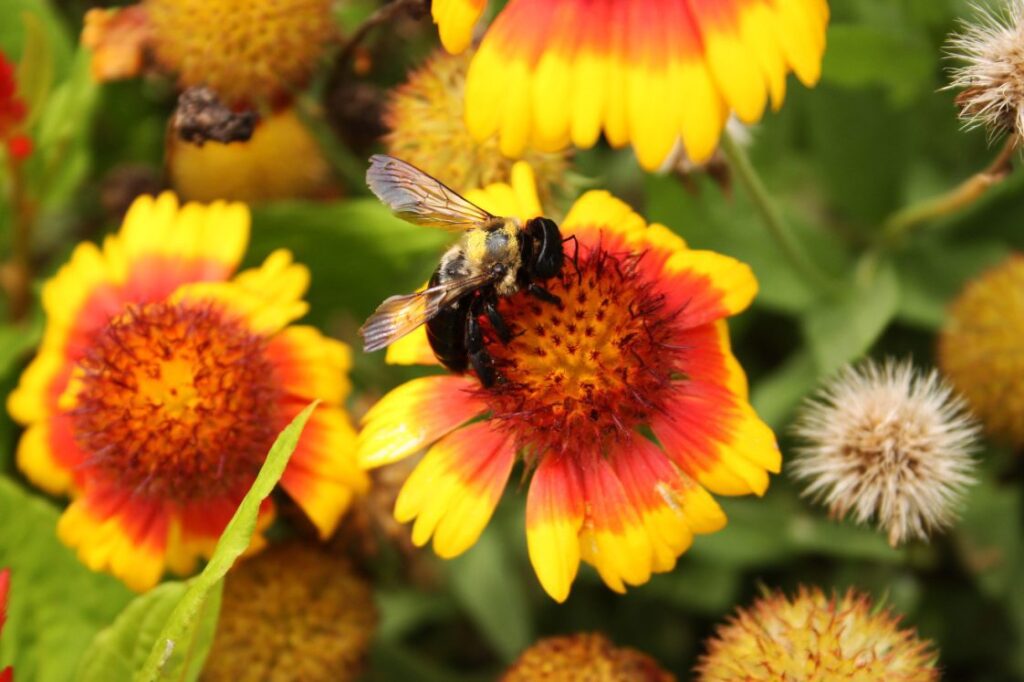
By Katie Nichols
The hum of the bees is the voice of the garden,” is a quote that rings true throughout much of the year in Alabama backyards. However, the buzz gets quieter as summer continues into the fall. Because the relationship between bees and plants is unique and mutually beneficial, there are several ways that home gardeners can make the bees’ lives easier.
Much like the support avid hummingbird watchers provide to hummers throughout the hot summer, bees can benefit from some targeted tender loving care in your yard or home garden.
Kerry Smith, an Alabama Cooperative Extension System administrator of horticulture outreach programs, said there is an abundance of flowering plants during the spring and early summer, but gardeners overlook planning the fall flower garden. Because it’s difficult to establish new plants in the summer heat, it’s important to plant fall bloomers in later winter and early spring.
“Paying special attention to have fall blooms around your home and garden will make a difference, as pollinators work to store up food for the cold winter,” Smith said.
Supporting Honeybees and Native Bees
Honeybees and native bees visit flowers to collect pollen and nectar for food. Pollen is essential to bees because it is their only natural source of protein. Without it, colonies would be unable to produce new bees and would eventually die.
Allyson Shabel, an Alabama Extension urban home grounds regional agent, said to produce honey successfully, beekeepers must have their colonies at peak strength when the major nectar-producing plants in their area begin to bloom.
“It is important for beekeepers to have a working knowledge of the nectar and pollen-producing plants in the vicinity of their apiaries,” Shabel said. “It is also important for the bees’ neighbors to understand their seasonal needs.”
A plant’s production and secretion of nectar are affected by many factors, such as soil fertility, moisture and acidity as well as garden location. For maximum honey production, consider allowing wildflowers to reseed nearby for supplemental bee pasture.
In addition to helping honeybees, it is also important to support native bee species. Jack Rowe, an Alabama Extension forestry, wildlife and natural resources regional agent, said neighboring honeybees are useful for home gardens. However, home-garden plantings are more likely to attract native bees such as bumblebees, leafcutting bees and mason bees.
“These insects will visit the home landscape more than honeybees, who tend to depend on large resources such as orchards and farm fields,” Rowe said. “It is important to support our declining native-bee populations, as they do most of the pollination in home landscapes.”
Fall Nectar and Pollen Plants of Alabama
Smith and a host of colleagues with Alabama Extension have developed a list of plants that grow year-round and are beneficial for bees. Plants that grow and flower in the fall include the following: Sedum, Sweet autumn clematis, Many salvias, Hyssop, Horsemint and other bee balm species, Boneset, Buckwheat, Cotton, Moss rose (Purslane), Numerous species in the Aster family, Ironweed, Goldenrod, Sunflowers.
More Information
Learn more about beneficial plants for honeybees in the Alabama Extension publication, Nectar and Pollen Producing Plants of Alabama a Guide for Beekeepers. Also, other information is available in the Protecting Pollinators in Urban Areas publication series. Both resources are available at www.aces.edu.
Outdoor Alabama Photo Contest Opens August 1
The 2024 Outdoor Alabama Photo Contest will begin accepting entries on Tues., Aug. 1. This year’s contest is a joint project between the Alabama Department of Conservation and Natural Resources (ADCNR) and the Alabama Tourism Department. The deadline to enter is Oct. 31. The 2024 photo contest will focus on traditional photography techniques and the use of handheld cameras. No cellphone, smartphone, game camera, or drone photography will be chosen as winning photos for nine of the 10 categories. Smartphone and tablet photos will be accepted in the Young Photographers category. The photo contest is open to state residents and visitors alike, but qualifying photos must have been taken in Alabama in the past two years. Any amateur photographer not employed by ADCNR is encouraged to enter. A total of 10 photos per person may be entered in the following categories. You may enter all 10 in one category or among several categories. 2023 Outdoor Alabama Photo Contest Categories: Alabama State Parks; Birds; Bugs and Butterflies; Cold-blooded Critters; Nature-Based Recreation; Scenic; Shoots and Roots; Sweet Home Alabama; Wildlife; Young Photographers (ages 17 and under.) First, second, third and one honorable mention will be awarded in each category. Winning images will be featured online and in a traveling exhibit at various venues across the state during 2024. If your organization or venue is interested in hosting the 2024 Outdoor Alabama Photo Contest Exhibit, please contact Kenny Johnson with ADCNR’s Communications and Marketing Section at [email protected]. To view the complete exhibit schedule, visit www.outdooralabama.com/photo-exhibit. Art teachers are encouraged to incorporate participation in the Young Photographers category into their art instruction this fall. For complete 2024 category descriptions and contest rules, visit www.outdooralabama.com/photocontest.

Choosing Safe Plants for Pets
By Cole Sikes
AUBURN UNIVERSITY, Ala. — For some people pets are like family. They provide love and support that is important for a family bond. The same way parents protect their children, furry, four-legged family members require some of the same precautions. To keep them safe, make sure to choose home décor that won’t make them sick.
There are several plants that have the potential to be harmful to pets. Although these plants can be toxic to pets, there are no known cases of these plants causing harm to dogs or cats. The best way to avoid a tragic pet accident is to ensure pets are not left unattended in new environments.
According to Alabama Cooperative Extension System Master Gardener Program Coordinator Kerry Smith, everyone needs to learn some plant basics.
“Every plant is different, some need more sun, some need more shade,” Smith said. “Their water, soil, space and temperature requirements differ too. A plant grown in the right place will provide longer enjoyment for the gardener.”
She adds that plants are not only beneficial to the eye, but also to human health. Plants can help keep people mentally and physically healthy by providing better air quality, increasing ambient humidity and helping people relax.
The idea that every plant is different also relates to our canine or feline friends. Depending on which species is chosen, they can be harmful to pets.
“If you enjoy gardening indoors and have pets, it’s also important to consider your pet’s natural curiosity for their surroundings,” Smith said. “Learn more about each plant’s toxicity or safety before bringing home new indoor plants.”
Dangerous Plants
Dumb Cane
Dumb cane, scientifically known as Dieffenbachia spp., is a plant with large, variegated leaves. It is known to cause mouth and throat irritation, difficulty swallowing, nausea, vomiting and upset stomach. It can even be fatal if ingested in large quantities.
English Ivy
A plant often used in hanging baskets, English ivy (Hedera spp.), is a trailing plant known for having long, free-hanging stems. This species causes severe vomiting or diarrhea if ingested. If you are hunting a decorative plant for hanging baskets, see Swedish Ivy below.
Jade Plant
A miniature tree-like species, Jade plant (Crassula argentea) has fleshy, succulent leaves. Skin contact with this plant may cause rash or burning sensation and ingestion often causes gastrointestinal issues.
Snake Plant
Famous for being nearly foolproof to grow, snake plant (Sansevieria trifasciata), can also cause a burning sensation or rash if in contact with skin. Vomiting and diarrhea are caused by ingestion of this species.
Safe Plants
Prayer Plant
Also known as the peacock plant, the prayer plant (Calathea picturata) has many varieties. Its leaf colors range from silver to rose to deep purple.
Swedish Ivy
This species can be deceiving because of its common name similarity with English ivy. Several other plant species are called Swedish ivy, but only Plectranthus australis and P. forteri are the safe plants for pets. Be sure to look for these names when purchasing a Swedish ivy plant. These grow well in multiple container types and are a pet-safe substitute in hanging baskets.
Peperomia
Even though this plant sounds like it belongs on a pizza, it is, in fact, a popular indoor plant. Peperomia (Peperomia spp.) has many varieties with different leaf types, colors, textures and sizes. Each of them is safe should pets take a nibble.
Spider Plant
Don’t worry, this plant will not spawn spiders, nor will it attract them to your home. The spider plant (Chlorophytum comosum) is an easy plant to propagate. It produces specialized stems, or stolons, that grow plantlets. By cutting off the plantlets and potting them, anyone can grow their own spider plants to share with friends or family.
Making the Best Choice
These plants are just a few examples of how commonly planted ornamentals and shrubs can potentially be toxic for furry friends. Be sure to reach out to your local Extension expert to make sure a plant will not harm a pet before planting or potting.
For more information on plant species, visit the Alabama Extension website at www.aces.edu.
Alabama Department of Public Health issues 2023 Fish Consumption Advisories
The Alabama Department of Public Health (ADPH) annually updates fish consumption advisories based on data collected the preceding fall by the Alabama Department of Environmental Management (ADEM).
ADEM, the Tennessee Valley Authority, and the Alabama Department of Conservation and Natural Resources collected samples of specific fish species for analysis from various waterbodies throughout the state during the fall of 2022 (492 samples; 40 collection stations). ADPH assessed the analytical results to determine whether any of the tested contaminants in the fish may give rise to potential human health effects.
Fish consumption advisories are issued for specific waterbodies and specific species taken from those areas. In reservoirs, advisories apply to waters as far as a boat can be taken upstream in a tributary, that is, to full pool elevations.
Newly issued advisories will be represented as the safe number of meals of that species of fish that can be eaten in a given period of time, such as meals per week, meals per month or do not eat any. A meal portion consists of 6 ounces of cooked fish or 8 ounces of raw fish.
New and updated consumption advisories issued for the 34 bodies of water tested can be found on the ADPH website: https://www.alabamapublichealth.gov/tox/fish-advisories.html
The advice contained in this release and complete listings of the posted fish consumption advisories are offered as guidance to individuals who wish to eat fish they catch from various waterbodies throughout the state. No regulations ban the consumption of any of the fish caught within the state, nor is there a risk of an acute toxic episode that could result from consuming any of the fish containing the contaminants for which the state has conducted analyses.
A fish consumption advisory can be issued for one or more specific species of fish within a waterbody or an advisory can be extended to include all fish species within that waterbody. When excess levels of a contaminant are found in a specific species of fish, an advisory is issued for that specific species. For example, if an advisory had been issued for largemouth bass and not for channel catfish, it would be advised that individuals should not eat largemouth bass, but consumption of channel catfish is permissible without endangering health. When excess levels of a contaminant are found in multiple fish species sampled from a specific waterbody, a Do Not Eat Any advisory is issued. Consumption of any fish from a specific waterbody under a Do Not Eat Any advisory may place the consumer at risk for harm from the contaminant.
If a species is listed in the advisory, it is prudent to assume that similar species with similar feeding habits should be consumed with caution. For example, if black crappie is listed and white crappie is not, because they are in the same family, all crappie would fall under the listed advisory.
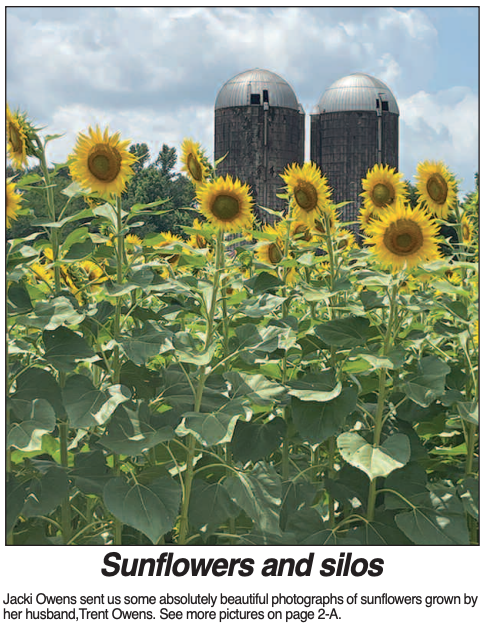
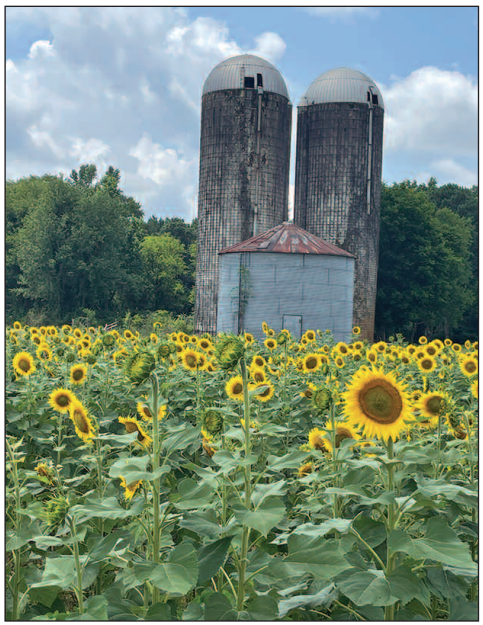
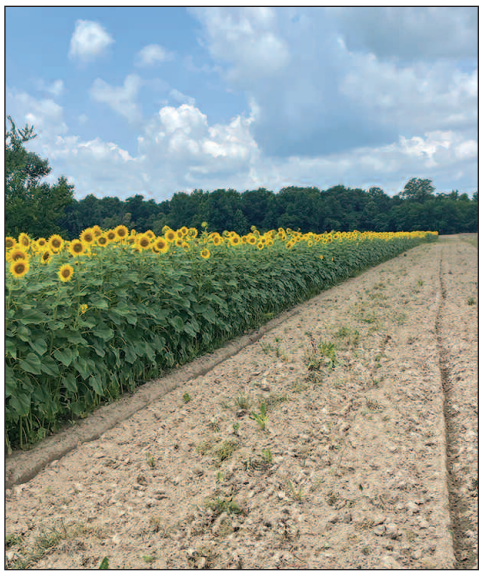
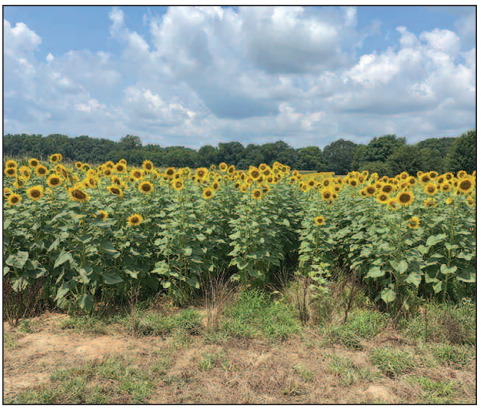
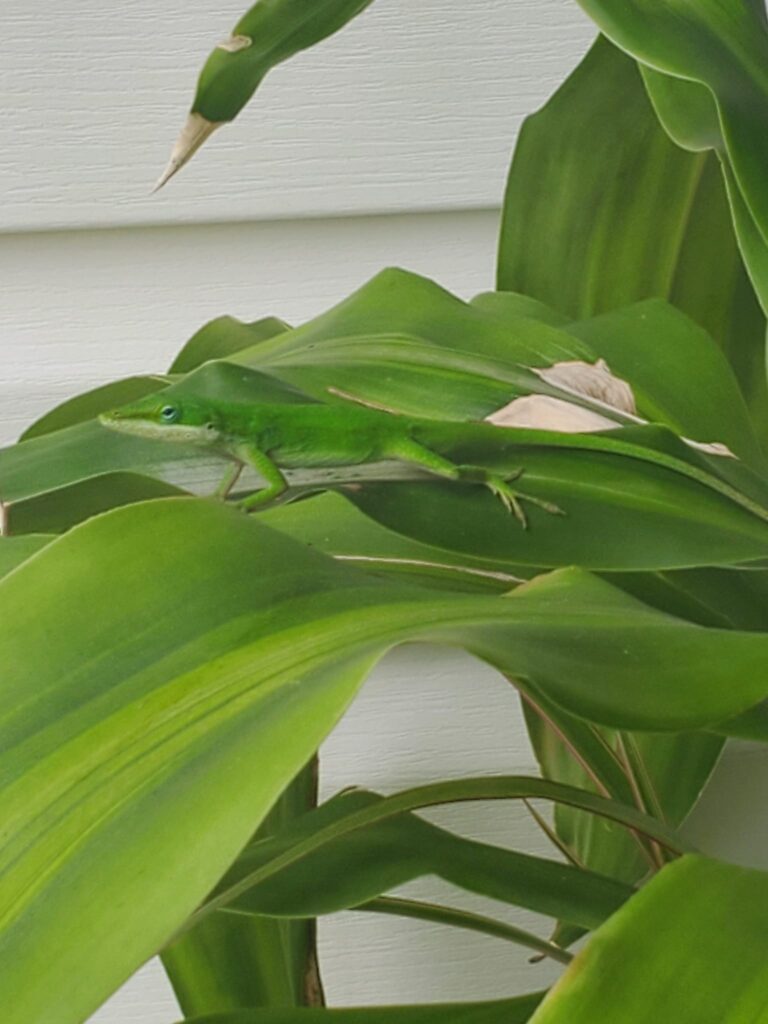
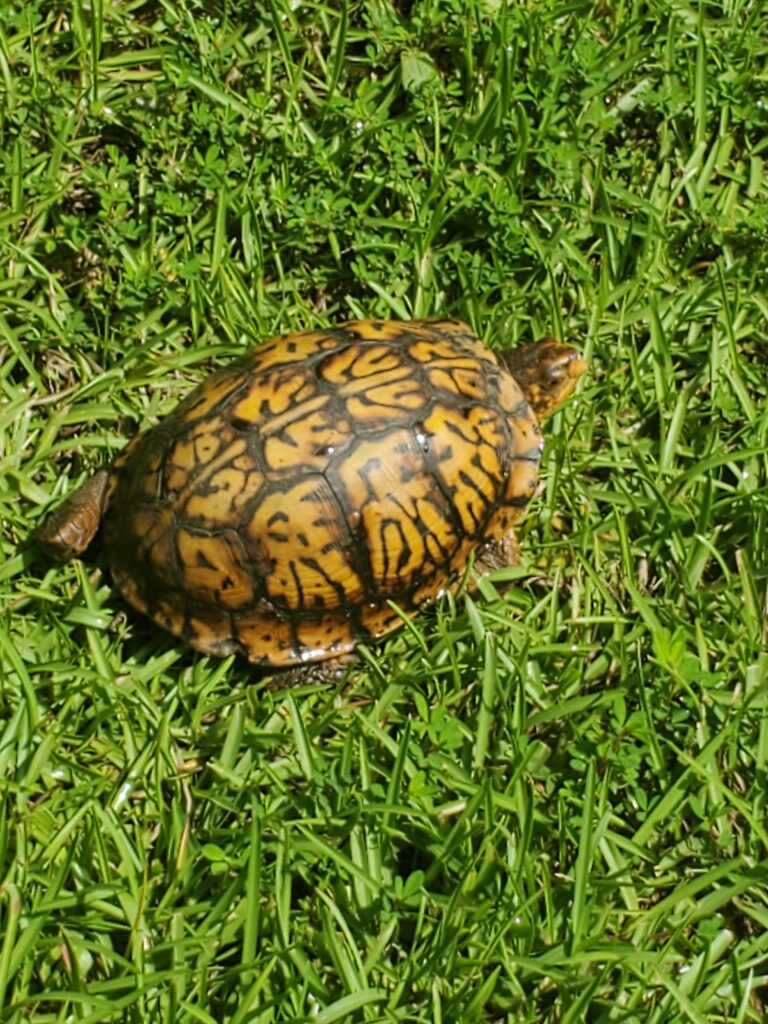
Gardian of the plant and area of the front portch this Green Anole (Anolis carolinensis) lives with Tommy McGraw, Moundville Times’ publisher. They are also known as a Carolina Green Anole, they are common throughout the Southeast and is the only native lizard capable of changing color. It is unrelated to true chameleons. Anoles belong to the Iguanidae, a family of arboreal lizards that also includes iguanas and chuckwallas. Males court a female b display his dewlap, a red pice of skin under his throat, and bobbing his head at a female.Males protect their territory with dominance displays, bobbing at other males in a push-up like movement, flaring their dewlaps, and then turning to the side and arching their backs to enlarge their profiles. This contest continues until one male assumes a submissive posture, bobs his head, and retreats. The brown phase of the green anole should not be mistaken for the brown anole (Norops sagrei), an invasive species from the Caribbean recently reported in extreme southern Alabama. Brown anoles are generally a darker uniform brown and do not display the faint markings seen on the backs of green anoles in their brown phase. Learn more at https://encyclopediaofalabama.org/article/green-anole/ Photo by Kasey DeCastra, SCRJ & MvT Community News Editor Email your cook critter photos to [email protected]. They run for free and are oun our award winning outdoors webpage the week after they run in print.
This Eastern Box Turtle visitor waddled into a Tuscaloosa back yard. Their preferred habitats are wooded wetlands and moist forested areas. Box turtles are considered omnivorous, because their diet consists of a wide variety of food items, such as flowers, roots, fungi, berries, snails, slugs, insects, fish, frogs, salamanders, snakes, and eggs. Young turtles are carnivores, but after they reach the age of five or six years, they become primarily herbivores. It is illegal to sell and/or purchase Eastern box turtles. Alabama Wildlife Federation will work with you to find injured box turtles that need a new home. If the turtle is uninjured, it is best to leave it alone if not in immedaite danger. Learn more at https://www.outdooralabama.com/turtles/eastern-box-turtle and https://www.alabamawildlife.org/oc-box-turtle-habitat/ Photo by Kasey DeCastra, SCRJ & MvT Community News Editor. Email your cook critter photos to [email protected]. They run for free and are oun our award winning outdoors webpage the week after they run in print.
Taking Care of Tomatoes
By Katie Nichols
AUBURN UNIVERSITY, Ala. — Tomatoes are by far the most popular plant in the vegetable garden, but they can also be the most problematic. Eliminate the questions and begin the official summer season with proper tomato care.
Weather, insects and viral, fungal and bacterial problems are all challenges every gardener faces when growing backyard tomatoes. Having an awareness of potential problems before they arise is one way to make sure the backyard tomatoes thrive. Mallory Kelley, an Alabama Cooperative Extension System home grounds, gardens and home pests regional agent, said there are many things to watch for when growing tomatoes to ensure a healthy crop. As the hot and humid summer starts up, Kelley provides the following tips to keep plants healthy.
Watering and Mulch
When it comes to water, Kelley recommends starting with drip irrigation or hand watering only at the surface of the soil to avoid splashing. Then, gardeners should prune off any of the tomato plants’ lower limbs that are touching the soil and apply mulch.
“Mulching your tomatoes keeps the plants moisture level consistent and will help prevent blossom end rot,” Kelley said. “Applying mulch also helps control weeds where insects like to overwinter and eliminates competition for the fertilizer you have applied.”
Mulch also creates a barrier between the plant leaves and the soil to suppress many of the fungal problems that come from the surface of the soil.
Scout for Disease and Insects
For diseases and insects, time is of the essence. Remove yellow and brown-spotted leaves as soon as they appear. If a fungicide plan is not in place, start a fungicide application to prevent early blight.
“No tomato grower can avoid this problem,” Kelley said. “It’s best to apply a preventative fungicide when the plants are healthy and there is no disease present. Products with the active ingredients chlorothalonil and mancozeb will control early blight.”
Kelley said copper is an option to control bacterial issues. It is best to scout daily for all of these problems, as well as insects.
“Go out and inspect for armyworms, fruit worms, hornworms and stinkbugs,” she said. “These are the main insect problems on tomatoes.”
Products that contain Bacillus thuringensis (Bt) will work when the worms are young, but Bt will not kill any other bugs. Gardeners can also use products containing carbaryl to control larger worms. Kelley said carbaryl will eliminate a wide variety of insects it comes in contact with—even larger worms if they ingest enough of it. However, the damage has been done by the time worms are large, so treatment may not be necessary. Bifenthrin is another insecticide that will control stinkbugs and some of the other pests gardeners may find.
“Don’t wait until your plant has no more leaves before you start your search for the hornworm,” Kelley said. “Scout today because the plant may not be there tomorrow.”
Want to learn more about what may be affecting tomato plants and what you can do to help tomatoes thrive? Call the Master Gardener Helpline at 1-877-ALA-GROW (252-4769) or reach out to the your county’s Extension office for more direction. You can also learn more about growing, canning and storing tomatoes through Alabama Extension’s many regional workshops. To find the next workshop near you, visit www.aces.edu and search tomato in the calendar.
Road-killed deer in Florida panhandle positive for CWD
The Alabama Department of Conservation and Natural Resources will be increasing chronic wasting disease (CWD) sampling surveillance efforts in southeast Alabama after the Florida Fish and Wildlife Conservation Commission (FWC) announced the confirmation of a positive CWD test sample from a road-killed deer in Holmes County, Florida.
Due to the detection of CWD in Holmes County, Florida, ADCNR’s Wildlife and Freshwater Fisheries (WFF) Division will deploy additional self-service, drop-off CWD sampling freezer locations throughout southeast Alabama and increase CWD surveillance efforts, as outlined in Alabama’s CWD Surveillance and Response Plan. For more information about CWD sampling and a map of self-service, drop-off CWD sampling locations statewide, visit www.outdooralabama.com/cwd/cwd-sampling.
Alabama’s first case of CWD was detected in Lauderdale County in northwest Alabama in January 2022. Since 2022, there have been only three cases of CWD detected in Lauderdale County. To date, the disease has not been detected in any other Alabama county.
Hunters are ADCNR’s most important partner in the management of CWD. Samples voluntarily submitted by hunters during deer season assist ADCNR with statewide CWD surveillance. ADCNR will also continue to partner with the Alabama Department of Agriculture and Industries (ADAI) on statewide CWD monitoring. ADAI’s assistance with testing samples allows ADCNR to better serve the public and provide timely information on the distribution and extent of CWD in Alabama.
Among deer, CWD is a progressive, fatal disease that commonly results in altered behavior due to microscopic changes in the brain of affected animals. An animal may carry the disease for years without outward indication. In latter stages of the disease, signs may include listlessness, lowering of the head, weight loss, repetitive walking in set patterns and a lack of responsiveness.
During deer season, hunters throughout the state are encouraged to provide deer heads for CWD sampling. The public is also encouraged to report roadkill deer and deer displaying unusual behavior to their local WFF District Office. Contact information is available at www.outdooralabama.com.
It is important that the public be familiar with Alabama’s CWD regulation and the CWD regulations in other states. To review Alabama’s regulation and the latest information about CWD in the state, visit www.outdooralabama.com/cwd-info.
ADCNR promotes wise stewardship, management and enjoyment of Alabama’s natural resources through four divisions: Marine Resources, State Lands, State Parks, and Wildlife and Freshwater Fisheries. Learn more at www.outdooralabama.com.
ALBBAA Launches 2023 Best Fish Photo Contest
Alabama’s Black Belt features some of the best fishing found anywhere in America. There’s Lake Eufaula along the Georgia border. There’s Miller’s Ferry on the Alabama River near Camden. There’s the Tombigbee and Black Warrior Rivers in West Alabama. The Alabama Black Belt Adventures Association is again sponsoring its annual Best Fish Photo Contest, which gives anglers of all ages the opportunity to showcase how they enjoy the bountiful fishing in the Black Belt. No matter where in the Black Belt you hook a fish this summer, the Alabama Black Belt Adventures Association wants to see your photos. Photos submitted for the 2023 version of the Best Fish Contest, which opens June 2 and runs through Aug. 31, can show any type of fish caught in the Black Belt during 2023. All photos for the contest must be entered through the Alabama Black Belt Adventures’ website. Voting will be conducted exclusively on the same page: https://alabamablackbeltadventures.org/news-more/shoot-the-black-belt/best-fish-photo-contest-2023/ The contest winner will receive a prize package featuring an assortment of Road Runner crappie and bass fishing lures donated by TTI Blakemore. The package is valued at more than $250. Visitors to the contest webpage may vote once per day, per entry, per IP address. In the case of any dispute, the decision of ALBBAA is final. ALBBAA reserves the right to approve or reject any submitted photo. Cause for a photo’s disqualification can include, but is not limited to, the following: the photo content presents the subject in an unethical or disrespectful composition; the photo content is perceived to cast a negative perception of anglers and their contribution to the management of wildlife; voting violation which imposes an unfair advantage to others; previous winners of the Best Fish Photo Contest from the past three years are not eligible to take home the prize. Anglers are also reminded to comply with all fishing laws, including purchasing a valid Alabama fishing license.
Hammerhead Worms: New to Some, a Pest to All
By Justin Miller
AUBURN UNIVERSITY, Ala. — Last year, the gardening world was set ablaze with the hot topic of the hammerhead worm—an invasive flatworm. With the arrival of spring temperatures, Alabama Cooperative Extension System professionals say these worms are back and here to stay.
Key Characteristics
Meredith Shrader, an Alabama Extension entomology diagnostician, said although the hammerhead worm was a hot topic last year, they have been around for a while.
“While this pest is new to some, it has been in the United States since the early 1900s, when it was accidentally introduced from imported horticultural plants,” Shrader said.
As its name suggests, the most prominent feature of the hammerhead worm is the hammer-like shape of its head. This worm is also much larger than other worms homeowners may be familiar with. Its body can be as long as 15 inches but is more commonly between 8 and 12 inches. Also, this worm can have between one and five dorsal stripes on its body. With their predatory and cannibalistic nature, hammerhead worms’ prey mainly consists of other annelids, such as the common earthworm.
“Hammerhead worms thrive in hot, humid environments,” Shrader said. “In Alabama, this spring has been perfect for these worms and is likely the reason many homeowners are seeing them out and about. The recent rains and warmer temperatures have enticed them to wander into gardens and yards in search of prey.”
Their Environment
The places in which you may find hammerhead worms can change depending on the weather. Some of their favorite hiding spots include in leaf litter or under rocks, logs or shrubs. Because they thrive in humid places, moisture is an important factor to them.
“If there is adequate moisture, we will continue to see hammerhead worms,” Shrader said. “However, if temperatures rise and the amount rainfall decreases, populations will crash, and the worms will become more elusive in our environment.”
According to Shrader, greenhouse environments offer these worms favorable conditions, so they may be found in those environments year-round.
Control Options
Because they feed on beneficial and native garden creatures, knowing how to control hammerhead worms is key for Alabama gardeners. Katelyn Kesheimer, an Alabama Extension entomologist, said it is important to realize that these worms reproduce asexually.
“Because they reproduce asexually, if you try to get rid of them by cutting them in half, you will only make more worms,” Kesheimer said. “Also, they possess a toxin, and we don’t have information on how harmful it is to humans, so I would avoid touching the worms if possible.”
There are several control options for hammerhead worm infestations. These include putting them in soapy water that they can’t crawl out of and crushing them to the point where there are no viable segments.
“Other home remedies include spraying them with vinegar, as well as dumping salt on them like you would with slugs,” Shrader said. “These are quick-fix options if you only have a couple in your yard. However, if you apply large amounts of salt or vinegar to the landscape, it may harm vegetation.”
Also, amphibians will eat hammerhead worms, so they may help keep population levels low.
Reporting Hammerhead Worms Unnecessary
While hammerhead worms are considered invasive species, there is no reporting system in place through the Alabama Department of Agriculture and Industries or any other agency in Alabama.
“If you find them in your yard, you can rid them from your yard using the techniques described above,” Shrader said. “However, their presence does not need to be reported to Alabama Extension or any other agency.”
More Information
For more information about other gardening and landscaping topics, visit the Lawn & Garden section of the Alabama Extension website, www.aces.edu.
Ticks and Lyme Disease: Symptoms, Treatment, and Prevention
Tick-borne diseases, such as Lyme disease, are on the rise in people and dogs. Reported cases in people in the U.S. increased from about 12,000 annually in 1995 to approximately 35,000 in 2019, according to the Centers for Disease Control and Prevention. However, not all diagnosed cases are reported and the CDC believes the true number of human infections is likely closer to 476,000 per year.
The U.S. Food and Drug Administration regulates products that are used to help prevent, diagnose, and treat this complex disease.
Who Gets Lyme Disease, What Time of Year?
Lyme disease is a bacterial infection most commonly transmitted via the bite of infected ticks, which attach to any part of the body.
The CDC recommends you check your dog daily, especially after they spend time outdoors. Pay particular attention to the collar area and around the eyelids, ears, tail, under the front legs, and between the back legs and toes.
On people, you will most often find ticks in moist or hairy areas such as the groin, armpits, scalp, and other hard-to-see areas of the body. And while everyone is susceptible to tick bites, campers, hikers, and people who work in gardens and other woody, and brushy areas with high grass and leaf litter, are at the greatest risk of tick bites. As many a suburban gardener can attest, with the expansion of the suburbs and a push to conserve wooded areas, deer populations are thriving. Deer are important sources of blood for ticks and are important to tick survival and movement to new areas, increasing the contact between people and ticks that carry the bacteria. Read more about the lifecycle of the bacteria and how it is transmitted to people and dogs.
In most cases, a tick must be attached for 36 to 48 hours or more before the Lyme disease bacterium can be transmitted. If you remove it within 24 hours, the risk is greatly reduced. Symptoms of Lyme disease may take 3-30 days or longer to appear.
In the majority of cases, tick bites are reported in the summer months when ticks are most active and people spend more time outdoors. But this can extend into the warmer months of early autumn, or even late winter if temperatures are unusually high. Similarly, a mild winter can allow ticks and other insects to thrive and emerge earlier than usual.
How to Safely Remove a Tick
Using fine-tipped tweezers, grasp the tick as close to the skin’s surface as possible.
Pull upward with steady, even pressure. Don’t twist or jerk the tick. Your goal is to remove the entire tick, ideally in one piece, including the mouth parts embedded under the skin.
Thoroughly clean the bite area and your hands with rubbing alcohol, an iodine scrub, or soap and water.
Not all ticks carry Lyme disease, and some ticks carry other diseases. To avoid infecting yourself or your pet, never crush a tick with your fingers. For more information on the safe removal, disposal, and identification of ticks visit CDC.gov/ticks.
Safe Tick Removal With Tweezers
Not all ticks carry Lyme disease, and some ticks carry other diseases. To avoid infecting yourself, never crush a tick with your fingers. For more information on the safe removal, disposal and identification of ticks visit CDC.gov/ticks.
Prevention
What can I do to prevent Lyme disease?
Avoid wooded, brushy, and grassy areas, especially during warmer months (April – September), although tick exposure can occur anytime.
Wear light-colored clothing so that you can see ticks that get on you.
Treat clothing and gear with products containing 0.5% permethrin.
Apply insect repellents on uncovered skin, and ensure the products are registered by the Environmental Protection Agency.
Wear long pants and long-sleeved shirts, and shoes that cover the entire foot.
Tuck pant legs into socks or shoes, and tuck shirts into pants.
Wear a hat for extra protection.
Walk in the center of trails to avoid brush and grass.
Remove your clothing after being outdoors, and wash and dry them at high temperatures.
Do a careful body check for ticks after outdoor activities.
There are no licensed vaccines available in the U.S. to aid in the prevention of Lyme disease in people.
Symptoms and Stages
Symptoms of early-stage Lyme disease include:
muscle and joint aches
headache
fever
chills
fatigue
swollen lymph nodes
Another common symptom of Lyme disease is a rash (referred to as “Erythema migrans”). As many as 80% of infected people may develop a rash, however the characteristic “bull’s-eye” rash appears only 20% of the time.
Later-stage symptoms may not appear until weeks or months after a tick bite. They include:
irregular heartbeat and/or heart palpitations
arthritis (usually seen as pain and swelling in large joints, especially the knee)
nervous system abnormalities
When left untreated, the bacterial infection can spread to joints, the heart, and the nervous system and cause permanent damage. Lyme disease is rarely fatal.
However, if not treated properly, Lyme disease can become a chronic illness where symptoms might continue for weeks, months, or even years after the initial tick bite.
Lyme Disease in Dogs
Dogs can get Lyme disease, too. Typical symptoms in dogs include swollen joints and lameness, fever, and loss of appetite. Experts in the FDA’s Center for Veterinary Medicine say dogs with Lyme disease occasionally develop serious kidney disease that can be fatal.
There are ways you can reduce your dog’s risk for tick bites and Lyme disease, which also reduces the risk of infection for you.
Regularly check your dog for ticks.
Avoid allowing your dog to roam in tick-infested areas.
Treat your dog year-round with topical, oral and/or collar tick products. Talk to your veterinarian about which product is best for your dog.
Lyme disease occurs much less frequently in cats than in dogs, and cats’ susceptibility to the disease continues to be the subject of research. However, the same precautions for dogs apply to cats, especially if your cat goes outside, because ticks on cats can be transferred to people and ticks carry other diseases besides Lyme disease that are harmful to cats.
There are several FDA-approved products that treat and control tick infestations. A couple of tick products are also approved in dogs to specifically prevent infections with the bacteria that causes Lyme disease by killing the ticks that carry the bacteria.
Lyme disease vaccines are available for dogs, but not for cats. Talk to your veterinarian to see if vaccination is appropriate for your dog.
Lyme Disease Tests and Treatment
If you think you or your dog may have Lyme disease, contact your physician or veterinarian right away.
Your doctor or veterinarian may test for Lyme disease, and/or they may immediately begin antibiotic treatment, depending on the symptoms you or your dog exhibit.
Most blood tests check for the antibodies produced by the body to fight Lyme disease. CDC experts report it may take several weeks after a tick bite for initial antibodies to develop. Because of this, the blood tests may not be accurate if done soon after a tick bite.
For this reason, your doctor or veterinarian may recommend treatment with antibiotics before the diagnostic tests are complete. According to the CDC and other experts, people treated with appropriate antibiotics in the early stages of Lyme disease usually recover rapidly and completely.
In dogs, the more subtle early stages of Lyme disease often go unnoticed. Even if your dog appears healthy, your veterinarian may recommend yearly screening for Lyme disease, especially if you live in an area where Lyme disease is common. If your dog’s blood test is positive, your veterinarian may recommend additional testing, such as a urinalysis.
Take care to prevent an invasive species garden takeover
By Katie Nichols
AUBURN UNIVERSITY, Ala. – Beauty can be deceiving, especially in the garden. Invasive species of plants are often pretty or ornamental. Whether homeowners purchase a plant or it shows up like a weed, an invasive species can quickly become a problem. Protect the garden and prevent invasives from taking root.
What Are Invasive Species?
Nancy Loewenstein, an Alabama Cooperative Extension System specialist, said invasive species are non-native plants that have escaped cultivation and become weedy problems. While it can be hard to predict which species will become invasive, some frequently seen invasive plant characteristics include: competitive (rapid) growth, strong reproductive pressure (produce a lot of seeds quickly and sprout quickly after cutting), easily spread seeds (wind, water, birds and other animals), easy establishment. To access a list of invasive plants in Alabama, read the Alabama Invasive Plant Council’s publication. More information is also available in the Alabama Extension publication, FOR-2043 Invasive Plants: Exotic Beauties Can Have Devastating Results. More than 50% of the species on the Alabama Invasive Plant Council’s invasive plant list are escaped ornamentals. Seeds from invasive plants—including escaped ornamentals—may end up in the garden or landscape where they act as weeds and can become an extensive problem.
Danger of Invasive Species
In addition to being weedy pests, invasives displace native species. This means the species replaces native plants, therefore displacing native animals, insects and soil microbes that depend on the native species. “As an example, non-native plants support far fewer caterpillars and other insects that songbirds depend on to rear their young,” Loewenstein said. They can also impact water, nutrients, fire cycles, wildlife habitats, outdoor recreation, aesthetics, natural resource management and productivity.
Removal and Control
Once an invasive plant establishes, control is time consuming and may be expensive. The best way to stop the spread of aggressive invaders is to remove the plant entirely. For smaller species, deadheading to remove the flowers before the seeds form is an option. Gardeners and homeowners can also pull seedlings or small plants for effective control. Cut down larger woody species. However, the stump will likely re-sprout. Homeowners can prevent growth by treating the stump with a herbicide. “Herbicides can control many species, but care must be taken to avoid damaging desirable species,” Loewenstein said. “Make sure to read the herbicide labels to ensure proper use. In all cases, it’s easier to control invasive plants when there are only a few of them rather than after the infestation becomes large and daunting.” Increase the health of ornamental plants by avoiding and removing invasive species in the garden.
Read more about stump treatments in the Alabama Extension publication ANR-1465, Cut Stump Herbicide Treatments for Invasive Plant Control. For more information on how to remove invasives in the garden, visit the Alabama Extension website, www.aces.edu.
Spring into spring free from fire ants
By Katie Nichols
AUBURN UNIVERSITY, Ala.— Gardeners preparing summer vegetable gardens may find their plots already teeming with life, but not the kind they would like to see. Fire ants are common in yards, flowerbeds, playgrounds and gardens throughout Alabama. Kelly Palmer, an Alabama Cooperative Extension System livestock and forages regional agent, said there are many common misconceptions when it comes to controlling fire ant populations in the backyard or garden. “This time of year, as homeowners get out in their flowerbeds or yards to begin preparations for planting, they may find several fire ant colonies have moved in over the winter,” Palmer said. “It is important to remember that most home remedies do not control fire ant populations.” Palmer said the best control method for fire ants is to use baits. While the Internet is riddled with natural remedies, the tried-and-true application of fire ant bait—by the label recommendations—is most effective.
Home Remedy Misconceptions
Palmer said she sees many social media posts seeking recommendations for backyard fire ant control during the spring. Although people share home remedy recommendations with good intentions, these methods do not provide effective control. Professionals do not recommend control methods such as grits, club soda, molasses, boiling water, mixing mounds together, gasoline or diesel fuel. These are not effective means of control. “Part of the allure to home remedies is that all of the suggestions are cheap, easy to access and include products we are comfortable using,” she said. “However, they will leave the user ultimately feeling frustrated as they will not provide actual colony control.”
Baits
The key to fire ant management is to control the queen. Fire ant queens can lay hundreds of eggs per day and can live for years. Worker ants pick up bait products and take them back to the mound where they feed it to the queen. Using baits ensures true colony control.
“Bait products are extremely safe for homeowners to use,” Palmer said. “They contain very little active ingredient (insecticide), are put out at low rates and leave no residuals. This makes them a great choice in areas where children and pets play.”
Choosing a Bait Product
There are many bait products on the market. All have label uses for different situations—whether those are lawns, gardens or pastures. This can make it overwhelming when trying to decide on which product to buy. Palmer said there is no one-size-fits-all choice when it comes to choosing a bait product. Bait selection varies greatly depending on the person’s needs. Palmer said homeowners should answer the following questions: How fast do you need control? Where do you need control? How much are you willing to spend? Once these questions are answered, contact your county Extension office. Agents there will be able to recommend products to meet individual needs and work toward a summer free of fire ants. For specific fire ant control information, people can reach out to Palmer at [email protected]. More information on fire ant control is also available at www.aces.edu.
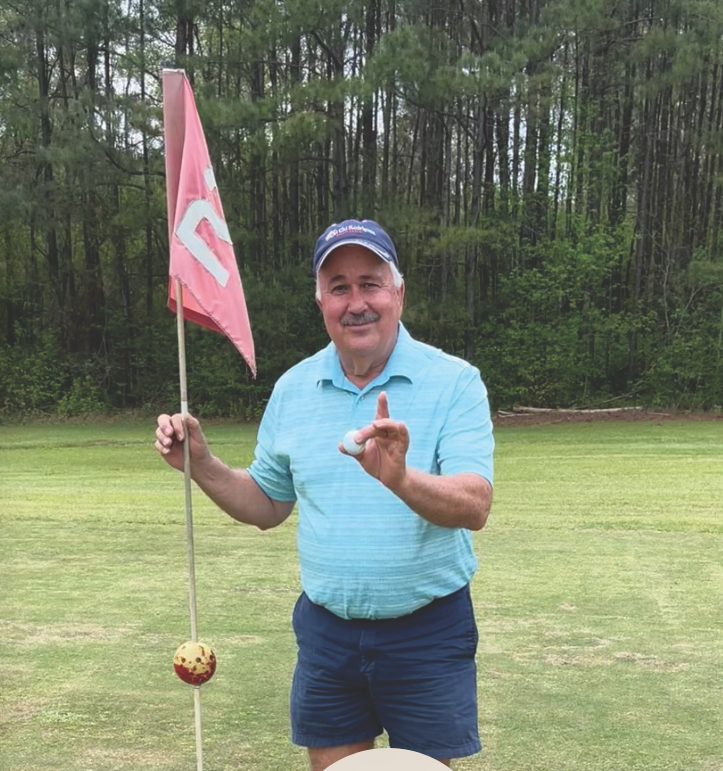

Alabama Extension provides resources for private well owners
By Cole Sikes
AUBURN UNIVERSITY, Ala. – Water connects everyone and everything in Alabama. From drinking water to recreation, this liquid necessity plays an important role for all walks of life. Many people rely on ground water to bathe, cook and even drink. This places a responsibility on private well owners to ensure proper water quality for their families. The Alabama Cooperative Extension System provides an invaluable resource for water well owners–the Private Well Program.
About the Private Well Program
The Alabama Private Well Program has been delivering education and outreach services since 2020 to help stakeholders with private water resources. Thousands of Alabamians utilize private water every year according to Jessica Curl, Alabama Extension water program coordinator.
“This program engages with the public through the creation of resources housed on the Alabama Cooperative Extension System webpage, webinars and in-person workshops,” Curl said. “In 2022, the available resources were expanded upon with the establishment of the Private Well Program Online Course.”
Curl explains that several topics for course participants introduce users to essential to proper well ownership and safety. Each attendee will learn about private water systems during the online course.
A Threefold Resource
By using a threefold approach—an online course, webinar series and digital print content—there is a Private Well Program resource for everyone. Curl said these resources are essential for Alabamians who are responsible for the maintenance, testing and treatment of well systems.
“Wells can become contaminated through failed maintenance, improper construction or poor stewardship practices around the well,” Curl said. “Access to these resources allows well owners to have a proactive hand in ensuring that their water quality remains safe.”
Topics included in all private well resources pertain to aquifers, well construction standards, water testing basics and interpreting results, water well maintenance and where to get your water tested.
The Best of the Best
Alabama Extension personnel, researchers, agency partners work together to provide education to well owners. This collaboration sets research priorities while also establishing a well owner network. This trustworthy team delivers nonbiased, scientific information to assess needs and identifies issues.
The group crafted its educational topics and curriculum after utilizing a statewide needs assessment for Extension personnel. Survey results determining approximately 36% of respondents contact county offices at least once a month with well water questions. Creators of the Private Well Program listen to communities’ needs and develop needs-based programming. Key components provided by feedback were inserted into program materials.
For any well owner, Alabama Extension’s Private Well Program web page is a worthwhile resource. To learn more about the program and its resources, visit www.aces.edu.
Ins and Outs for 2023 Spring Turkey Season
By Cole Sikes
AUBURN UNIVERSITY, Ala. – Turkey season is one of the shortest hunting seasons on the calendar. However, this shorter timeline only makes Alabama turkey enthusiasts savor it that much more. As hunters head to the woods to hear that unmistakable echo of a wild turkey, there are a few things to consider for the 2023 season.
Get to Know Your Bird: Eastern Wild Turkey
The Eastern wild turkey is the only turkey subspecies native to Alabama. This subspecies lives in mixed pine and hardwood ecosystems especially in bottomland and upland areas. In these regions, turkeys will forage from mast-producing tree species in the forest.
Mark Smith, an Alabama Cooperative Extension System professor of forestry and wildlife sciences, said turkey populations can fluctuate each year because of several reasons.
“Poor hatches during previous years, weather and changes in habitat on or surrounding the hunting property are some of the causes of population change,” Smith said. “Although there seems to be a noticeable decline of turkey populations throughout their range, many areas still support stable or increasing local turkey populations.”
The typical mating season for Eastern wild turkey begins in early March, a few weeks prior to the beginning of Alabama turkey hunting season. During this time, mature male turkeys (gobblers) will audibly gobble, drum and physically strut to entice courtship with a hen. This is where the hunt begins.
Smith said there is a lot of great science-based research currently ongoing related to wild turkey ecology and management. For those wanting to keep up with with the latest science, Smith recommends listening to the Wild Turkey Science podcast. Through this series, Will Gulsby at Auburn University and Marcus Lashley at the University of Florida take your knowledge of turkeys to a whole new level in a conversational format.
2023 Turkey Season Rules and Regulations
Smith said there are a few things that hunters need to be aware of during the 2023 hunting season.
Dates
This year’s spring turkey season began with a youth-only hunting weekend March 18 and 19. Most areas of Alabama (Zones 1 and 3) will begin their hunts March 25 and conclude May 8. Hunters in Zone 2 (northwest Alabama) will have to wait until April 1 to begin hunting.
“Probably the most significant change that hunters must be aware of is that decoys are still prohibited during the first 10 days of the season,” Smith said.
Hunters in Zones 1 and 3 can began to use decoys April 4. Those that live in Zone 2 can use decoys from April 11 until the end of the season May 8. Don’t know what hunting zone you are in? Check out the Outdoor Alabama turkey season map to know which hunting dates apply to your area.
Bag Limits
It is also important to note that there are certain limits related to the number of gobblers harvested, both overall and within specific areas.
“For turkey harvests in 2023, the bag limit for turkeys remains at four gobblers, with only one gobbler permitted per day,” Smith said. “This limit includes both the autumn and spring hunting seasons.”
Smith said no more than two gobblers can be harvested from any one Wildlife Management Area (WMA), Community Hunting Area (CHA) or National Forest Ranger District. Also, hunters can harvest no more than one gobbler during the first 10 days of each season from each WMA, CHA, and National Forest Ranger District.
As always, to help with population monitoring, hunters must immediately record each bird harvest within 48 hours to the Alabama Department of Conservation and Natural Resources (ADCNR). Hunters may complete this task in a few different ways. The most convenient option is to record your harvest in the Outdoor Alabama mobile app. From the palm of your hand, you can send your harvests to ADCNR. You can also store your Alabama hunting licenses on the app. Hunters can also document their harvests through the Outdoor Alabama website, www.outdooralabama.com, or by calling (800) 888-7690.
More Information
Before heading out the door, make sure you have the correct hunting license along with your harvest record (paper form or on the app). If you’re hunting a WMA, be sure to purchase a WMA license and obtain a map permit at the check-in station. For more information on wild turkeys, visit the Wildlife section of the Alabama Extension website at www.aces.edu.
ALBBAA launches annual Big Gobbler Photo Contest
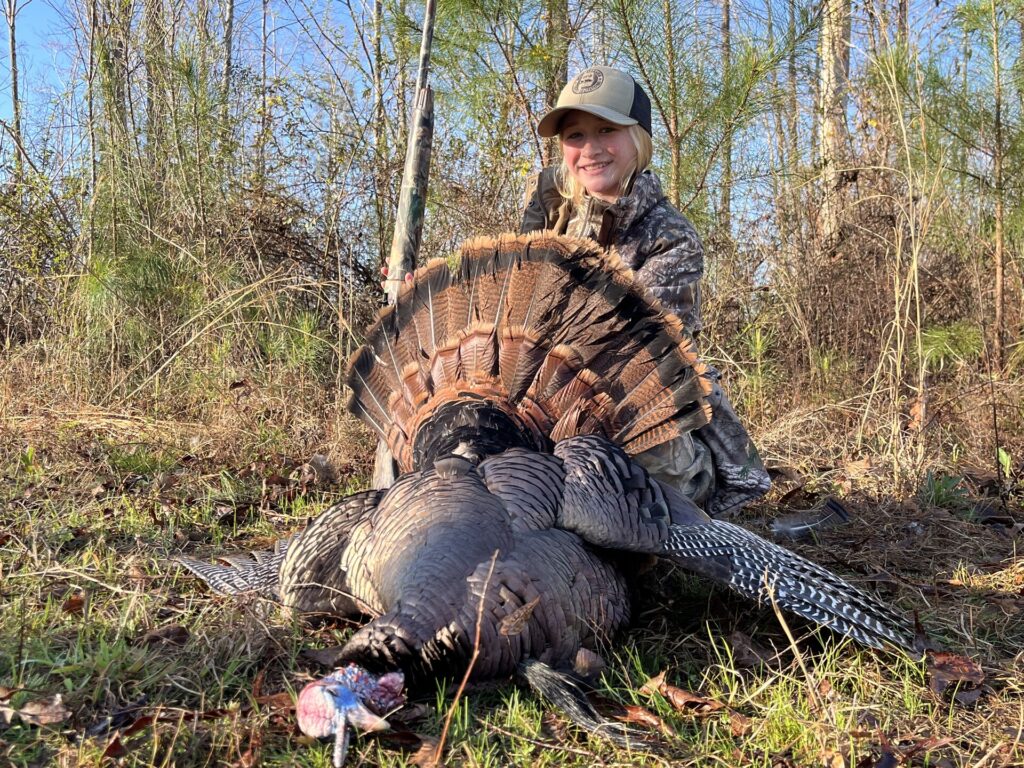
MONTGOMERY, Ala. (March 22, 2023) – As Alabama’s 2023 turkey season begins, the Alabama Black Belt Adventures Association (ALBBAA) reminds all hunters to enter the 11th annual Big Gobbler Photo Contest.
The ALBBAA’s annual Big Gobbler Photo Contest is designed to showcase Alabama’s Black Belt, which is widely regarded as one of America’s best areas for wild turkey hunting, while also highlighting seasoned and new hunters. The winner of this year’s contest will receive a collectible trumpet call hand-turned, numbered (only 200 made) and signed by Preston Pittman and Ron Jolly.
“Springtime in Alabama’s Black Belt signals turkey season has finally arrived and hunters eagerly take to the woods in search of the elusive black beard gobbler,” said Pam Swanner, Executive Director of the Alabama Black Belt Adventures Association. “If you’re looking to enjoy the thrill associated with pursuing the largest game bird in North America, the Black Belt is the perfect place to be. Our region also boasts stunning natural beauty and incredible local establishments for food, drinks and fellowship before or after your hunt.”
Alabama’s 2023 spring wild turkey season officially began with a youth-only hunting weekend on March 18-19. Turkey season in most areas of Alabama begins Saturday, March 25, and the season runs through May 8.
This year’s Big Gobbler Photo Contest, conducted online on the ALBBAA website, begins Saturday, March 25 and voting runs through Friday, May 12 to allow additional time for any photos submitted near the end of the hunting season.
Here are the rules and guidelines for this year’s contest:
To enter the contest, hunters must upload, through the ALBBAA website, a photo of a turkey harvested during the 2023 spring wild turkey season from within the 23-county Black Belt region. The winner of the contest is selected exclusively through online voting.
Entries can be submitted and votes cast online on the ALBBAA website – https://alabamablackbeltadventures.org/news-more/shoot-the-black-belt/big-gobbler-photo-contest/
Participants are limited to only one entry and must fully complete the online form with the necessary information, including person (or persons) in the photo and the county where the gobbler was harvested.
Visitors to the contest webpage may vote once per day, per entry, per IP address. In the case of any dispute, the decision of ALBBAA officials is final. Photo contest winners from recent years are not eligible for entry.
The ALBBAA reserves the right to approve or disapprove of a submitted photo. Cause for disqualification of photo can include, but is not limited to, the following:
— The photo content presents the subject in an unethical or disrespectful composition.
— The photo content is perceived to cast a negative perception of hunters and their contribution to the management of wildlife.
— Voting violation which imposes an unfair advantage to others.
All sportsmen and sportswomen are reminded to purchase a hunting license online through the Alabama Department of Conservation and Natural Resources before heading afield.
Only photos of turkeys harvested in the Black Belt during the 2023 season are eligible, including any gobblers taken during the youth-only hunting weekend that was held March 18-19.
“We hope hunters will participate in the Big Gobbler Contest and showcase the amazing turkey hunting in the Black Belt,” Swanner said.
Alabama has one of the longest wild turkey seasons in the country. Hunters are allowed to harvest a maximum of four turkeys, gobblers only, during the combined fall and spring seasons. Hunters are limited to one gobbler per day. Decoys are allowed in the spring season only, but decoys are prohibited during the first 10 days of the season. In addition, mechanical decoys are illegal in Alabama.
Each bird harvest must be immediately recorded within 48 hours to the Alabama Department of Conservation and Natural Resources (ADCNR).
Hunters are also reminded to comply with all game laws, including purchasing a valid hunting license.
The ALBBAA promotes and encourages ethical hunting and fishing practices. The Big Gobbler Photo Contest is designed to further educate the public on the abundance of natural resources found in Alabama’s Black Belt region.
“We recognize that turkey season provides a prime opportunity for families and young people to enjoy the outdoors and create lifelong memories,” Swanner said, “and that’s why we invite you to visit the Black Belt as the weather warms this spring.”
Pollen: a sticky situation for the better
By Cole Sikes
AUBURN UNIVERSITY, Ala. – The appearance of pollen typically marks the beginning of spring, and it literally shows. If your vehicle or home recently received a natural paint job, there is a positive meaning behind the new look. According to Alabama Cooperative Extension System experts, people should view pollen in a different shade other than yellow.
What is pollen?
Simply defined, pollen is a powder-like substance that is produced by flowering plants and trees. Every tiny grain of this substance contains reproductive material known as male gametes that are used in fertilization of flowers–ultimately producing a seed. According to Alabama Extension Home Grounds Regional Agent Mallory Kelley, humans have a direct relationship with pollen.
“Without pollen we would not exist,” Kelley said. “We can thank it for all of our fruits and vegetables that we eat every day.”
Kelley explains that pollen is released differently by each plant and at different temperatures and times of the year. For example, when cool crops such as cabbage, kale and broccoli receive consistently warmer temperatures, their natural defense is to begin reproducing. The plant(s) will begin to grow longer shoots to produce flowers and begin pollinating.
As a secondary reaction, bees will also begin pollinating these plants as well. Pollen is primarily transported by insects and wind–causing everyone to see it latch onto virtually everything in sight.
Where does it all come from?
In 2023, the common association of pollen’s coming out party with a particular month of the year has not proven to be accurate. Alabama’s consistent warmer temperatures during February has caused plants to begin pollinating earlier than usual.
“Temperature certainly has an effect on pollen dispersal,” said Drew Metzler, an Alabama Extension forestry and natural resources regional agent. “In most years, I typically don’t see pine pollen dispersal in central Alabama until mid-March. Because we have had a string of consistently warm weeks in February and early March, it has accelerated the dispersal process by several weeks.”
According to Metzler, all trees in Alabama pollinate including hardwoods and pines. In order to produce a viable offspring, cross pollination is necessary for trees to produce seeds. Trees are pollinated primarily by insects, birds and wind. Some examples of wind-pollinated trees are Southern yellow pines (i.e., loblolly, longleaf, shortleaf and slash) as well as oaks.
“Because they are dependent upon wind pollination, these trees tend to saturate the air with pollen because it is dry and light, allowing it to travel through the air for miles,” Metzler said. “Pine pollen is the most notorious because it tends to be much larger than hardwood pollen. This is the reason why people can literally see clouds of it this time of year–both in the air and when it settles on vehicles and homes.”
Remedying a Sticky Situation
For those who are not fans of pollen–especially those with seasonal allergies–any remedy for removing or avoiding pollen is welcomed. Spring normally brings frequent rains that knock it out of the air as well as off of vehicles, roofs and outdoor furniture.
“We are used to getting more consistent rainfall,” Kelley said. “We have been more dry than normal, so we need more rain to arrive.”
Other practices to prevent pollen from interfering with everyday activities are listed below.
Bring in outdoor furniture cushions to reduce exposure.
Keep windows closed so that pollinated air doesn’t infiltrate your home.
Exercise inside rather than outside.
Take showers more frequently–especially prior to going to sleep to reduce potential contamination in bedding.
Bathe pets more often because their fur typically carries pollen granules much like human hair.
A Different Point of View
Although pollen can be overwhelming at times, it serves as a perennial reminder of life’s cycles. The old saying don’t curse the rain applies in the same fashion to pollen. Too much rain (in this case pollen) can have negative effects; however, its purpose is pure, and many forms of life rely on it. Each season when everything seemingly has a yellow tinge, remind yourself that nature is at work–ensuring that our everyday needs are met.
For more information on pollinating plants and pollinators, search pollen in the search bar of Alabama Extension’s website, www.aces.edu.
Move Alabama Kicks Off March 1
By Dustin Duncan
AUBURN UNIVERSITY, Ala — It’s time to move, Alabama. The Alabama Cooperative Extension System is launching “Move Alabama,” a community physical activity challenge to encourage Alabamians to exercise with family, friends and neighbors in their hometown. Move Alabama is a collaboration between Alabama Extension at Auburn University’s Supplement Nutrition Assistance Program-Education (SNAP-ED) and the Expanded Food and Nutrition Education Program (EFNEP).
Challenge
The challenge begins on March 1 and continues through April 30. Participants can complete 25 challenges for the chance to win prizes. Challenges include a variety of simple activities to complete individually or with family and friends. Some challenges encourage participants to visit local parks, trails and downtown shopping areas. This encourages the use of free local physical activity in their own community. Challenge coordinators created a public Move Alabama Facebook group to connect all participants to learn about nutrition and staying active. The Facebook group also allows those in the challenge to update others on their progress.
Time To Get Moving
Erin Reznicek, Alabama Extension specialist, said the CDC reports that 30% of the state is considered physically inactive, meaning adults report doing very little to no physical activity or exercise outside of normal jobs. She said the goal of Move Alabama is to encourage Alabamians to connect through physical activity. However, the social media aspect allows them to challenge each other in a fun way.
“We want participants to have a fun way to incorporate more physical activity into their lives, while exploring their community.” Reznicek said. “Move Alabama’s easy-to-use challenge flyers makes it easy to track progress. Also, we want people to feel encouraged to move more when they check something off their list.”
Beginning March 1, participants can pick up a challenge flyer from participating local extension offices or download one from the Move Alabama Facebook page. After completing 20 or more challenges, individuals can take a photo of their complete flyer and email it to [email protected] to be entered into the prize pool. The deadline to send photos is May 3.
Greene/Sumter County Farm Service Agency is Accepting Emergency Conservation Program Applications
(Emelle, Alabama), February 23, 2023 – U.S. Department of Agriculture (USDA) Farm Service Agency (FSA) Executive Director CED Alex Crawford, III today announced that Sumter County is accepting applications for the Emergency Conservation Program (ECP) to address damages from (list eligible disaster event). ECP signup will begin on February 27, 2023, and end on March 29, 2023. The approved ECP practices under this authorization include list eligible practices. ECP assists producers with the recovery cost to restore the agricultural land to pre disaster conditions. Approved ECP applicants may receive up to 75 percent of the cost of approved restoration activity. Limited resource, socially disadvantaged and beginning farmers and ranchers may receive up to 90 percent cost-share. Producers with damage from such events must apply for assistance prior to beginning reconstructive work. FSA’s National Environmental Policy Act (NEPA) and environmental compliance review process is required to be completed before any actions are taken. Submitting an application after reconstructive work has been completed may not qualify for ECP. FSA county committees will evaluate applications based on an on-site inspection of the damaged land, taking into consideration the type and extent of the damage. An on-site inspection does not guarantee that cost-share funding will be provided. The 2018 Farm Bill increased the payment limitation for ECP to $500,000 per disaster. The use of ECP funds is limited to activities to return the land to the relative pre-disaster condition. Conservation concerns that were present on the land prior to the disaster are not eligible for ECP assistance. For more information on ECP, please contact the Greene/Sumter County FSA office at (205)372-3271 or visit farmers.gov/recover.
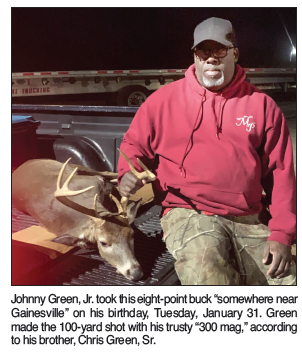
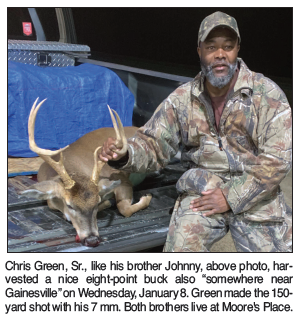
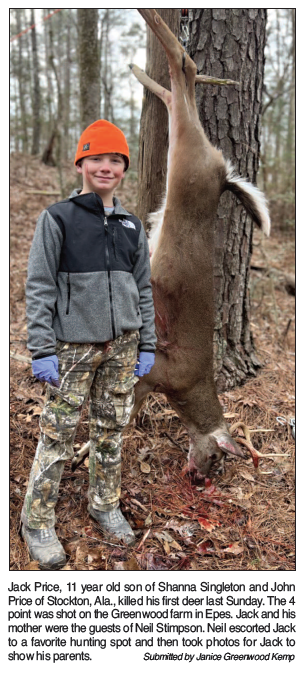
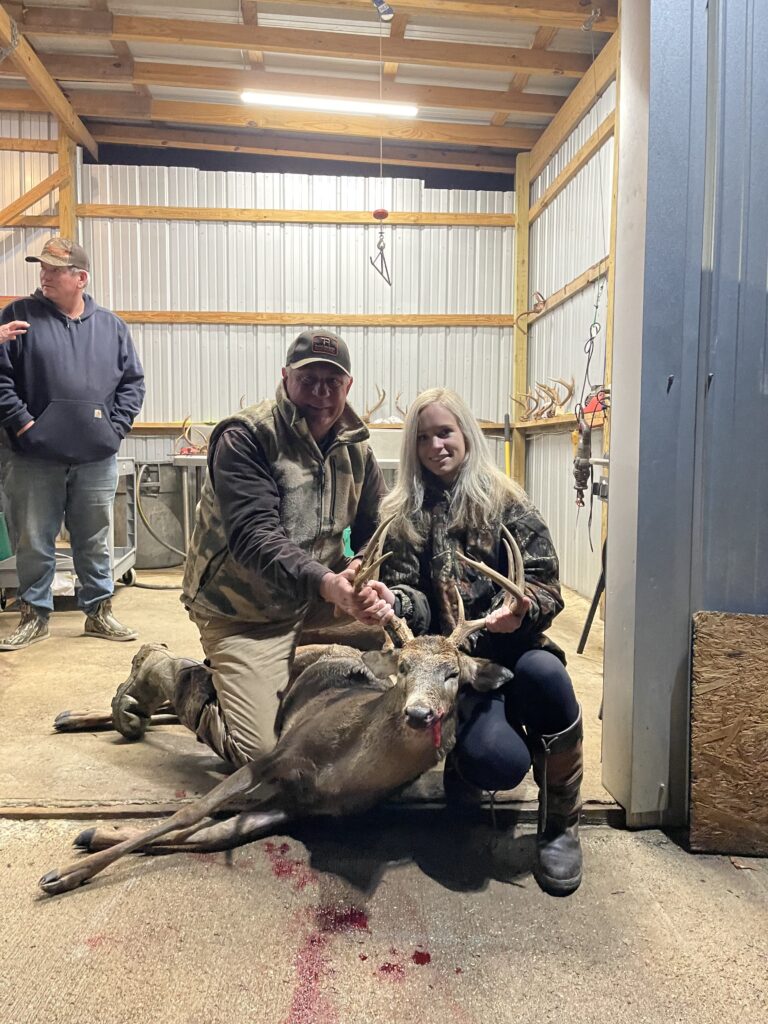
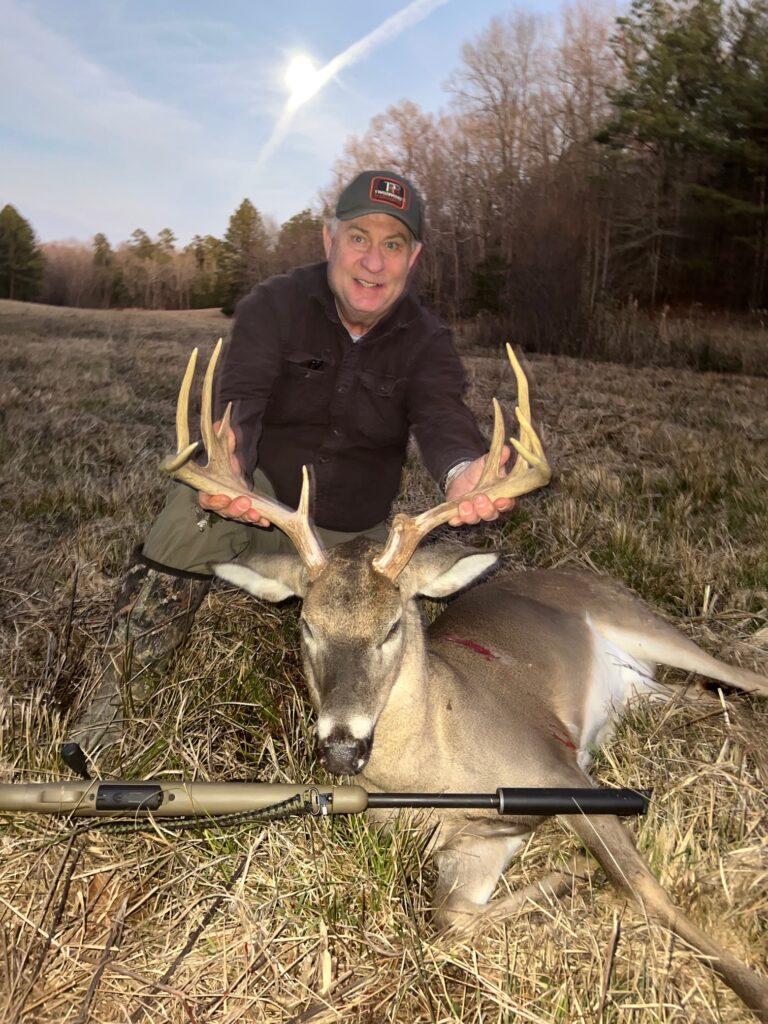
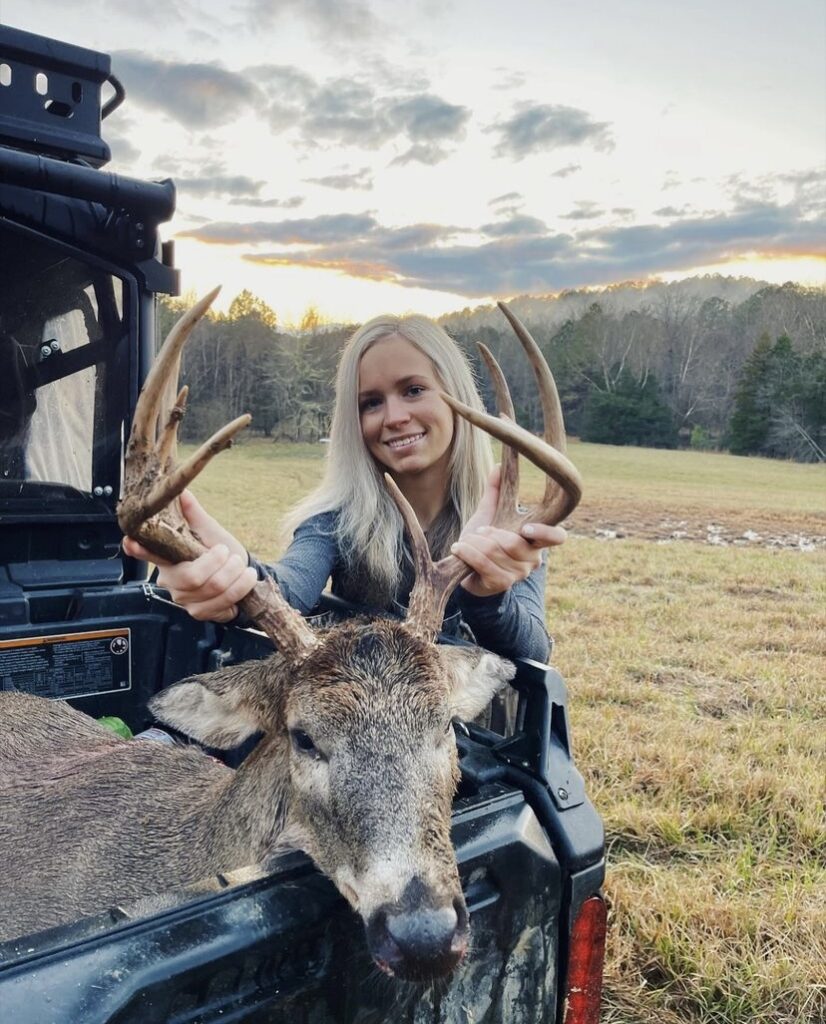

Father and daughter bag big deer
Caroline Price Wilson, daughter of Norman and Jennifer Tillery Wilson, and granddaughter of Traci Tillery and the late Price Tillery, bagged this nice buck recently on family property. Dad/guide is very proud! Caroline enjoys deer hunting. She’s a steady shot and calm under pressure. Caroline is a senior in high school. Submitted by Jennifer Wilson
Norman T. Wilson pictured here with a buck harvested recently on family property. Norman is married to the former Jennifer Tillery from York. He is pictured with his daughter, Faith Tillery Wilson, who is a college senior, and was her dad’s hunting buddy that day.
Financial Relief for Landowners to Fight Cogongrass
For the second year, financial relief will be available soon to assist Alabama landowners adversely affected by the non-native, invasive noxious weed, cogongrass. Administered by the Alabama Forestry Commission, the Cogongrass Mitigation Program is made possible through a grant from the USDA Animal & Plant Health Inspection Service (APHIS), Plant Protection & Quarantine (PPQ). The goals of this program are to reduce the number of infested acres, eliminate the damaging effects of cogongrass on existing ecosystems, and improve the productivity of impacted sites.
Additional objectives include slowing the spread of current establishments of cogongrass and preventing introductions into new areas of the state. The program application period will launch on February 15, 2023, and the portal will remain open until March 30 or until the threshold of 250 applications is reached. Eligibility for the funding requires that applicants be private, non-industrial landowners. Property with cogongrass infestations must be located in any of the 67 counties of Alabama, although the landowner is not required to reside on the property or within the state. There is no minimum or maximum acreage ownership requirement to enroll. It is a cost-free program. To apply for this funding or for further information regarding additional eligibility requirements, please visit the Cogongrass Mitigation Program section of the Alabama Forestry Commission’s website at https://forestry.alabama.gov/Pages/Management/Cogongrass.aspx. You may also email [email protected] or contact your local AFC office. The mission of the Alabama Forestry Commission is to protect and sustain Alabama’s forest resources using professionally applied stewardship principles and education, ensuring that the state’s forests contribute to abundant timber and wildlife, clean air and water, and a healthy economy. For more information about the Alabama Forestry Commission, visit the AFC website at www.forestry.alabama.gov.
Big Buck Photo Contest continues, hunters encouraged to donate to Venison Provisions
MONTGOMERY, Ala. (Jan. 13, 2023) – Deer hunters know the rut is in full swing throughout Alabama’s Black Belt.
As deer become more active, hunters will spend more time in deer stands in hopes of harvesting a trophy buck, and the Alabama Black Belt Adventures Association (ALBBAA) wants you to share your deer hunting photos through its popular Big Buck Photo Contest.
“We’ve already received more than two dozen photos for this year’s contest, but we want to make sure people understand they can still submit photos and be part of it,” said Pam Swanner, director of the ALBBAA. “We see so many entries showing young people hunting with family members or youngsters experiencing the thrill of harvesting their first deer. It’s gratifying to see that, because the contest is designed to celebrate the bountiful hunting the Black Belt is known for and showcase the wonderful family memories hunting provides.”
The contest takes place online, runs through Feb. 10, and is sponsored by Tutt Land Company. Any photo from the current hunting season, which began in Fall 2022, can be submitted. The contestant who receives the most online votes before the season closes in February will receive a $300 gift card sponsored by Tutt Land Company for use at any outdoor retail outlet.
Here are the rules and guidelines for this year’s contest:
To enter the contest, hunters must upload, through the ALBBAA website, a photo of a buck harvested during the 2022-23 white-tailed deer season from within the 23-county Black Belt region. The winner of the contest is selected exclusively through online voting.
Entries can be submitted and votes cast online on the ALBBAA website – https://alabamablackbeltadventures.org/news-more/shoot-the-black-belt/big-buck-photo-contest-2022/
Visitors to the contest webpage may vote once per day, per entry, per IP address. In the case of any dispute, the decision of ALBBAA is final. Photo contest winners from the previous two years are not eligible for entry.
ALBBAA reserves the right to approve or disapprove of a submitted photo. Cause for disqualification of photo can include, but is not limited to, the following:
n The photo content presents the subject in an unethical or disrespectful composition.
n The photo content is perceived to cast a negative perception of hunters and their contribution to the management of wildlife.
n Voting violation which imposes an unfair advantage to others.
ALBBAA reminds all sportsmen and sportswomen to purchase a hunting license online through the Alabama Department of Conservation and Natural Resources before heading afield. Additionally, successful hunters are also reminded to report their harvested deer through Game Check.
“It’s no secret that the Black Belt offers some of America’s very best deer hunting,” Swanner said. “We encourage people to keep submitting photos and voting online to pick the winner of this year’s contest.”
ALBBAA also encourages hunters to donate to Venison Provisions, a non-profit organization, based in Macon County, that processes donated deer and delivers meat to church pantries, food banks or other charities dedicated to helping feed the hungry.
Any hunter can donate a harvested deer by delivering it to Shana’s Place in Shorter, and some choose to pay all or a portion of the processing cost as a way to support Venison Provisions. The charity also provides a pick-up service to empty walk-in coolers throughout Alabama for deer camps, plantations and hunting preserves.
“Our goal is to connect the tons of unwanted, fresh, natural meat harvested by Alabama hunters with the over 20% of households statewide that are food insecure,” reads the Venison Provisions mission statement on its website, which also includes budget friendly recipes and a page for online donations.
The Black Belt includes the following 23 counties: Barbour, Bullock, Butler, Choctaw, Clarke, Conecuh, Crenshaw, Dallas, Greene, Hale, Lee, Lowndes, Macon, Marengo, Monroe, Montgomery, Perry, Pickens, Pike, Russell, Sumter, Tuscaloosa and Wilcox.

We’ve had some phenomenal sunsets this week on Jan. 9th and 10th. Did you know you could run your sunset, sunrise and outdoor photos for free? Not only that, but we put them up on our outdoors page at www.recordjournal.net. EMAIL the original photo unedited to [email protected] and we will get them in the next available edition. Be sure to give us the town or area you took the photo and your name so we can give you credit.

Breaking the ice: will plants recover from recent freeze damage?
By Justin Miller
AUBURN UNIVERSITY, Ala. – The hiring of Auburn University’s new football coach, Hugh Freeze, isn’t the only freeze Alabamians experienced in December. A stretch of temperatures in the teens and below–including one of the coldest Christmases in decades–caused damage to shrubs, trees and other plants across Alabama. This has left many homeowners asking if their plants will recover from this freeze damage.
Symptoms of Freeze Damage
Freeze damage on plants presents itself through a few symptoms. Mallory Kelley, an Alabama Cooperative Extension System home grounds, gardens and home pests regional agent, said the first symptom people will notice is a discoloration on the plant’s leaves.
“This discoloration can range from light yellow and tan blotches to jet black,” Kelley said. “This could be present on various spots on the leaf or on the entire leaf.”
For plants that are in pots or planters, this discoloration is often a bad sign. This is because they didn’t have the protection that plants in the ground typically have. Ground temperatures are often much warmer than air temperatures, so the ground acts as insulation for the plant’s roots. However, these plants may survive this damage, depending on the type of plant and its natural hardiness.
After the leaf discoloration, the leaves will most often begin to fall off the plant. Unlike their potted counterparts, the likelihood of trees and shrubs surviving this damage is much greater. Kelley said with these plants, most of the time there is no cause for immediate alarm.
“Most times this defoliation is no reason to panic, as most of our evergreen plants will leaf out again with no issues come spring,” she said.
Checking for Dead Material
After a freeze event, it will take months, or even spring temperatures, to definitively know if the plant survived the damage. However, Kelley said there is a test people can do now to check for dead material on the plant.
“Most times the dead material will be the tissue out on the tips of the branches and stems, as that is the newer and more susceptible tissue,” Kelley said. “Use your fingernail to scratch just below the bark to look for green and white, healthy looking material. Also, bend the branch slightly.”
If the area below the bark is brown and snaps off when bent, that plant material is dead.
“Whenever plant material is dead or damaged, we recommend that you always remove it immediately,” Kelley said. “Damaged material will collect water in the cracks and crevices and cause further rot down into the healthy material.”
To properly remove dead material, Kelley said to make cuts near the tip of the stem and continue further into the canopy of the plant. With each cut, examine the center of the stem.
“If there is brown discoloration in the center of the stem, continue to make cuts until that is no longer present,” Kelley said. “Once you see the green and white material, you have reached the healthy tissue.”
More information about freeze damage on plants is available in the Alabama Extension publication Cold Injury to Ornamental and Fruit Trees available at www.aces.edu. Winter has just begun, so there will be plenty of additional cold snaps that require preparation. For information on protecting your plants from a freeze event, read Protecting Plants During Frost Advisories.
Whitetail deer a nuisance for row crop farmers
By Katie Nichols
AUBURN UNIVERSITY, Ala.—Whitetail deer are a significant economic threat to row crop production in Alabama. While his specialty includes crop insect pests, Alabama Cooperative Extension System entomologist Scott Graham has been dealing with reports of deer damage and listening as growers search for solutions.
“Alabama is blessed with a beautiful landscape, from the sandy beaches of the Gulf to the Appalachian Mountains in Jackson County,” Graham said. “However, much of this landscape results in smaller fields. For example, the average cotton field in Alabama is approximately 21 acres.”
Often surrounded by woods on at least three sides, Graham said these small fields are perfect safe havens for deer to feed in the evenings. In these protected areas, deer can browse and damage thousands of seedlings in a single evening. To address these deer issues in the state, the Alabama Extension crops team conducted a survey with farmers. Through the results, the team look to get a better understanding of affected crops, damage done and strategies to mitigate losses. To date, 58 farmers representing 36 counties have responded to the survey.
Alabama crops had significant damage by whitetail deer during the 2021-2022 growing season. Deer caused economic damage on the following crops:
17,653 acres of cotton
10,490 acres of soybeans
4,987 acres of peanuts
3,915 acres of corn
Other crops with notable damage included sweet potatoes, grain sorghum, wheat and rye. Injured crop acreage for these secondary crops totaled 705 acres.
Graham said there were 37,750 total acres affected—an average of 317 per farmer.
“For reference, the USDA State Agriculture Overview reported an average farm size of 213 acres in 2021,” Graham said. “This issue is not only widespread, it is very consistent. Ninety-five percent of respondents said deer were a problem every year.”
Survey results showed deer caused an average of 33% yield loss. However, farmers reported losses ranging from 0 to 100%. The total losses reported by respondents was $10,932,195.95. The average loss was $289.59 per acre, ranging from $23 to $1,200 per acre.
Additional challenges related to whitetail damage include equipment issues, time losses, crop susceptibility to damage and replanting expense.
Current Mitigation Strategies
“Farmers are using many different control methods on the farm, but each of them have the same answer when we look to them for solutions: nothing works,” Graham said.
Some farmers apply for permits that allow deer to be harvested in fields during the growing season. However, Graham said this strategy seems to be fruitless. Many other options are not feasible for several reasons, including affordability and effectiveness.
“One thing that we do not want to do is bring attention to a major problem without any solutions,” Graham said. “While we do not currently have many, one Alabama Extension regional agent has done some demonstration work across the state with promising results.”
Eddie McGriff has had success planting sunn hemp as a buffer or border trap crop for deer. Sunn hemp is a summer legume with prolific growth, even under intense deer pressure.
A demonstration with Nick McMichen, a farmer in Cherokee County, produced positive results in 2021. During previous seasons, McMichen had a 40-acre field that consistently only produced on approximately 20 acres because of the high deer pressure. In 2021, a 40-foot trap crop border of sunn hemp was planted on the entry end of the field. During that season, approximately two acres were lost as deer fed primarily in the sunn hemp. In order for sunn hemp to work as a trap crop, it must be planted before the cash crop. This is done so that it is growing and attractive to deer while the cotton crop is being established.
During the 2022 season, McGriff conducted research with Mike Tate in Meridianville, Alabama.
“Mike planted the sunn hemp at the same time as he planted his cotton,” McGriff said. “While it did provide a buffer during the growing season, the sunn hemp wasn’t established before the cotton was in the ground. Even with a later-than-ideal planting, Mike said the trap crop was somewhat effective but believes it would have been more effective if he was able to plant the sunn hemp earlier.”
McGriff said this year they plan to use electric fence in conjunction with sunn hemp on the side of the field where deer enter from the woods. Future research will explore ideal border size as a single deterrent, as well as ideal border size when combined with an electric fence.
There are still more questions and concerns about deer management in Alabama row crops. Many famers report deer as the most important pest they face because there are few effective management options. Extension professionals are working with farmers statewide to determine the best mitigation options as the situations continue to evolve.
For more information, read a written assessment by Graham and view the survey results in their entirety on the Alabama Extension website, www.aces.edu. If deer are a problem on your operation, contact your local Extension office to connect with agronomic crops regional agents in your area.
Fresh start 2023: getting off on the right foot in the new year
By Dustin Duncan
AUBURN UNIVERSITY, Ala.— Looking for a fresh start in 2023?
For those making resolutions to be more active, make better food choices or just be healthier overall in the new year, Live Well Alabama has a few tips to help start on the right foot.
Being more physically active each day doesn’t have to include an expensive gym membership. Small and simple changes can increase daily physical activity without disrupting too much of a daily routine.
Such changes could be parking farther away from work or taking the stairs instead of an elevator. Other daily exercises could include the following:
• Take a walk with a partner, friend, coworker or pet
• Clean the house
• Wash your car
• Mow the lawn with a push mower
• Plant a vegetable or flower garden
• Play tag, Simon Says or hopscotch with the children
• Turn on some fun music and dance
Benefits of Moving More
Right Leg Quad StretchDaily exercise can improve blood pressure and cholesterol, improve mood, increase energy levels, improve self-image and reduce stress.
“Everyone can benefit from exercise regardless of age or ability,” said Erin Reznicek, an Alabama Cooperative Extension System community health specialist. “Movement is a great start to being happier and healthier. The immediate benefits–like boosting energy and mood–should be reason enough to get moving.”
Better Than Nothing
Any physical activity is better than nothing, and the best exercises are the ones that an individual is motivated to perform.
Overall health and fitness can be improved with regular physical activity. One goal for a fresh start is to be physically active for at least 30 minutes most days during the week. Small amounts of physical activity can add up.
“It is important to make the time for yourself and keep it flexible,” Reznicek said.
“Find a convenient time and place to do activities, then make it a habit. Add your family, coworkers and friends into the mix. Having accountability with a friend is a great way to keep going.”
For more information about Live Well Alabama, visit www.LiveWellAlabama.com or check out Live Well Alabama on Facebook, Instagram, Twitter and Pinterest.
Outdoor Alabama Weekly
Alabama Deer Hunters Asked to Share the Hunt
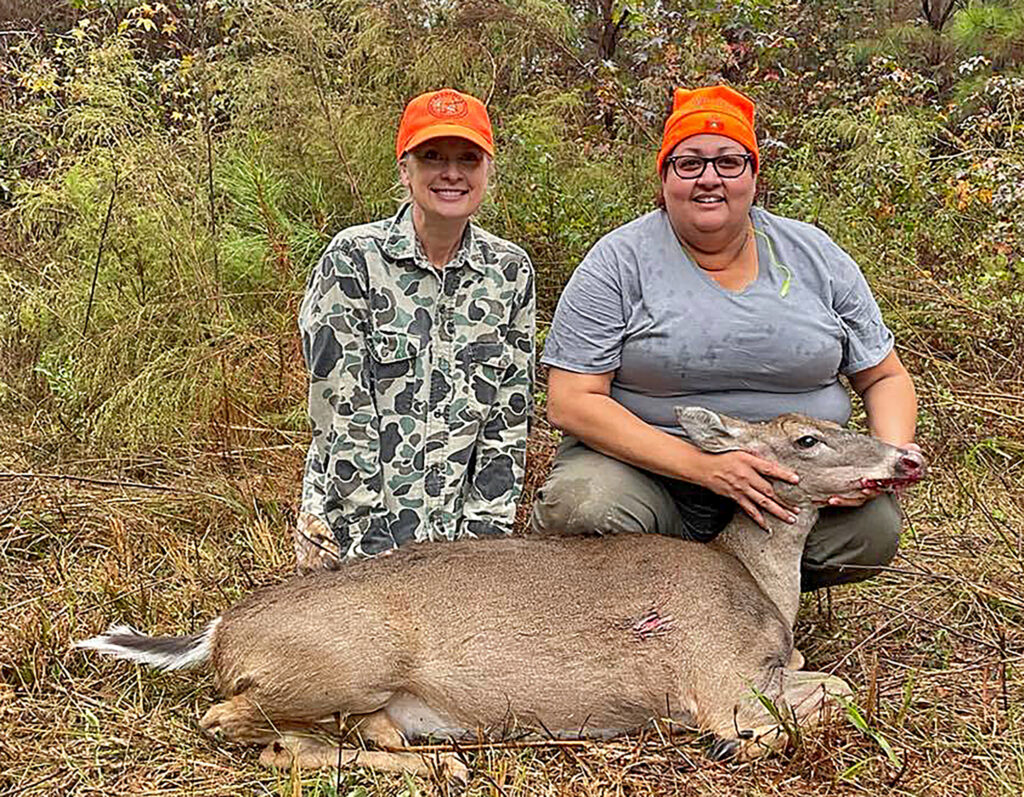

By David Rainer, Alabama Department of Conservation and Natural Resources
The Alabama Department of Conservation and Natural Resources’ (ADCNR) Wildlife and Freshwater Fisheries (WFF) Division is teaming with Buckmasters on an outreach program to promote hunting across social media platforms.
The Share the Hunt initiative (https://buckmasters.com/Share-the-Hunt), which kicks off November 19, encourages deer hunters to introduce new people to the hunting opportunities available in Alabama’s great outdoors and record the hunt to share on social media. Each hunting mentor who participates will receive a Buckmasters subscription and discount codes for some great hunting gear.
Don’t fret if you’re not a Buckmasters member. The Share the Hunt promotion is open to everyone!
All participants must be 19 years old or older, including the new hunters. A new hunter, or mentee, is defined as any adult who has not purchased a hunting license in the past three years. Mentors are required to submit photos of their hunt along with a brief description of the experience to be eligible for the rewards and be considered for Mentor of the Year. Bonus points will be given to mentors who share their experience on social media.
“I think everybody should know by now that hunters and license sales have been dwindling for the past several decades,” said Chuck Sykes, WFF Director. “We (WFF) created the Adult Mentored Hunting Program, Go Fish, Alabama!, and Shooting 101 to reach a new audience.”
Sykes said the Adult Mentored Hunting Program was started after he realized that even some WFF employees weren’t hunters. They wanted to learn to hunt but were hesitant to ask someone to take them. He hopes the partnership with Buckmasters will expand that outreach exponentially.
“With Share the Hunt, we’re working with Buckmasters, trying to reach their membership to stress to them how important it is to share their experience and teach someone new how to hunt,” he said. “Honestly, hunters I’ve seen over the years kind of live in an echo chamber. The people we associate with most are fairly like-minded, and most of us hunt. When you ask most hunters how many people buy a hunting license in Alabama, they think it’s 40 to 50% because that’s the group of people they hang around with. In reality, it’s 4% or less who buy a license.
“There are people we work with, go to church with, go to kids’ events with who would really like to learn to hunt and be more self-sufficient. They’re just a little hesitant to ask for that assistance. We need to step out of our comfort zone and ask people if they want to go and teach them what we know.”
Sykes cautioned new hunters’ expectations can be completely different from those of us who grew up hunting.
“Something we have discovered through the years is that the motivations for hunting for these late-onset hunters, people who didn’t grow up hunting, are not what our motivations are,” he said. “They have no hunting tradition. They didn’t learn it from their grandfather or their father. You can’t talk to them about the tradition of hunting, and, most of the time, you can’t talk to them about the thrill, the sportsmanship, the ability to hunt an animal in its own backyard and get a sense of accomplishment from that. That does not resonate with them.
“They’re all about the food. Food joins a bunch of people. That’s something we enjoy. So, we have to make that the center, not that challenge of killing a big deer, not the thrill of the hunt, not the tradition. It’s about providing quality protein for the family and being self-sufficient. That’s what motivates most of the late-onset hunters. Now they may eventually get to the tradition part if they like it and hand it down to their kids. Once they do it long enough, they may get to the excitement and thrill of the hunt. Right now, those messages are lost.”
Sykes said the partnership with Buckmasters on Share the Hunt is a pilot program that will capitalize on the deer-hunting organization’s expansive membership.
“We don’t have the manpower to scale up the effort,” he said. “We felt partnering with Buckmasters was a natural fit. They have the membership and can reach potentially hundreds of thousands of seasoned hunters who could easily take one person a year and make a difference. Where we (WFF) can take maybe 100 people per year, they can take maybe 100,000 a year. We’re just trying to scale up what we know works.”
Jackie Bushman, founder and CEO of Buckmasters, agreed his organization and WFF have the same goals with Share the Hunt.
“Chris Blankenship (Conservation Commissioner) and Chuck are personal friends, and I think we’re all looking at the same thing – increase the numbers in our sport,” Bushman said. “I’ve always made this comment, if the 11 to 12 million deer hunters in the U.S. took one person with them, we’d have 24 million hunters.”
Bushman said he understands the access issue with hunting land and the aging of current hunters, but those hurdles must be overcome.
“If we love the outdoors and what we look forward to each fall, are we willing to share a hunting lease or private land?” he asked. “We’re not talking about family members. We’re talking about somebody that might be at the ballpark with you, or somebody at church, or somebody in business who has never experienced a hunt or maybe never even thought about it.
“Are we willing to take someone 19 or over out and teach them how to shoot, teach them about the shooting sports, buy them a license, and then take them hunting to see if they can get their first deer? There’s a lot of landowners who have management programs to shoot does. It doesn’t have to be a buck, although it can be. A lot of folks are looking for people to come in and help shoot the does.”
Bushman agrees with Sykes that the best method of outreach to newcomers is through social media.
“We want you to take someone hunting and take plenty of pictures,” Bushman said. “We want you to share the experience online and give back to the sport you’ve been taking from. That’s what it’s about. We’ve got sponsors who are going to provide digital coupons to the mentor and mentee. And somebody is going to win a hunt with me just to say thank you. The question is how can we help our sport? How can we leave a legacy?”
Bushman, who started Buckmasters in 1986, has hunted deer all over North America and has bagged some giant bucks. He said people have asked him the same question for the past 30 years – what is his favorite buck?
“People are probably thinking that’s the Alberta (Canada) buck or the Montana buck,” he said. “No, it goes right back to Myrtlewood, Alabama, when I was 15 years old. We were doing a dog hunt, and that 6-inch spike came across the top of that ridge. I shot him with a 12-gauge and 00 buckshot. In my mind, it’s like it happened yesterday. That’s what got me hooked on deer hunting.
“That’s what I hope, that these mentees who go out for their first time will have the same feeling that you and I had on our first deer. It’s a feeling of accomplishment, a feeling of being a part of the conservation movement. It’s a feeling that’s priceless.”
Black Vultures Test Positive for Avian Influenza in Montgomery County
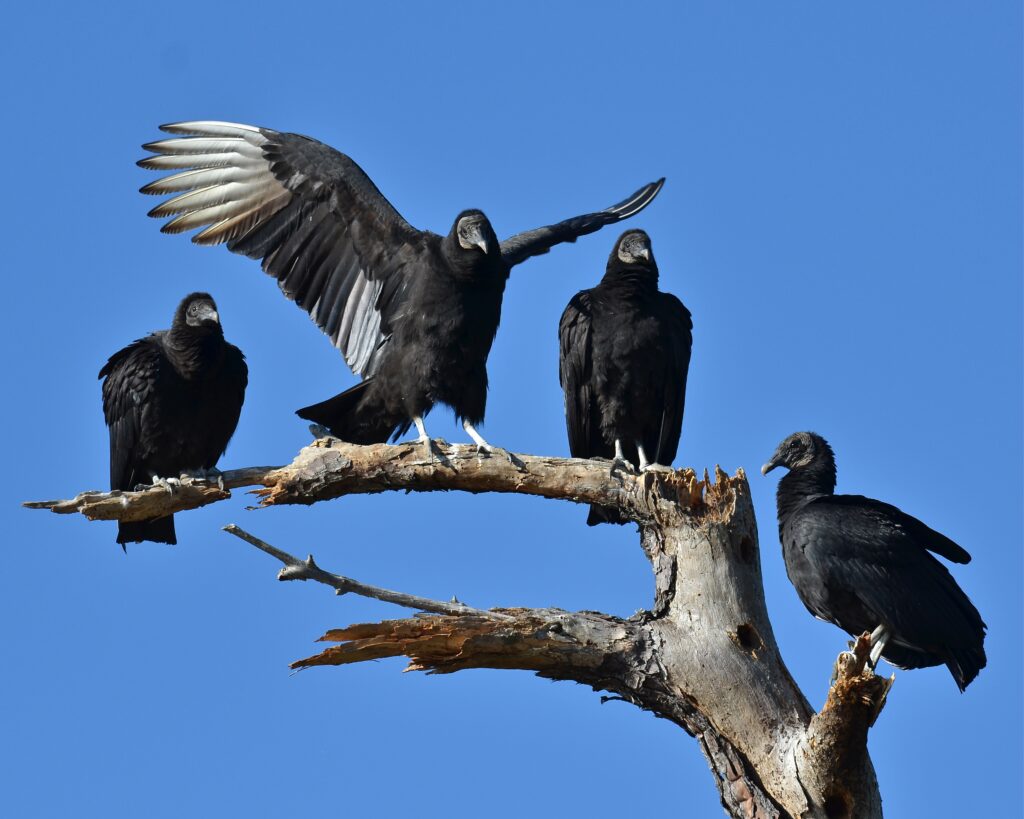
The U.S. Department of Agriculture’s (USDA) Animal and Plant Health Inspection Service (APHIS) in cooperation with the Alabama Department of Conservation and Natural Resources (ADCNR) has confirmed Eurasian H5 Highly Pathogenic Avian Influenza (HPAI) in wild black vultures in Montgomery County, Alabama. This is the second confirmation of HPAI in Alabama. In February 2022, a singular case of a wild, hunter harvested American wigeon tested positive in Limestone County.
In a statement from the Alabama Department of Agriculture and Industries, State Veterinarian Dr. Tony Frazier said: “We are aware of this detection and are partnering with ADCNR to assist in response. All poultry owners and growers should be reminded to maintain strict biosecurity and to report any sick birds to our office. For more information about poultry biosecurity and how to report sick birds, please go to our website www.agi.alabama.gov.”
Eurasian H5 HPAI was detected in the United States in January 2022 in South Carolina and has since been detected in 48 additional states, including Alabama. HPAI H5 viruses infect the respiratory and gastrointestinal tracts of birds, can spread rapidly, and cause high mortality in infected poultry. According to the Centers for Disease Control and Prevention, the risk to humans from Eurasian H5 HPAI is low. For more information about the risk of avian influenza to humans, visit www.cdc.gov/flu/avianflu/h5n1-virus.htm.
The USDA monitors for the disease in commercial poultry operations, live bird markets, and migratory wild bird populations. Samples were collected for testing from a publicly reported die-off of black vultures in Montgomery County. Preliminary tests performed at the Mississippi Veterinary Research and Diagnostic Lab discovered the non-negative cases, which were then confirmed positive for H5 HPAI by the APHIS National Veterinary Services Laboratories in Ames, Iowa.
Wild birds can be infected with avian influenza without appearing sick. The public should avoid contact with any dead or dying bird. If contact occurs, wash your hands with soap and water and change clothing before having any contact with healthy domestic poultry and other birds. Hunters who handle wild birds should dress game birds in the field when possible and practice good hygiene to prevent any potential disease spread. Remains from processed birds can be buried where the animal was harvested or double bagged and disposed along with normal household waste.
The public is encouraged to report dead or dying bird sightings to ADCNR for collection and testing. To report a sighting, call ADCNR’s Wildlife and Freshwater Fisheries Division at (334) 242-3469.
For information regarding HPAI and domestic poultry, please contact the Alabama Department of Agriculture and Industries. Contact information is available at www.agi.alabama.gov.
ADCNR promotes wise stewardship, management, and enjoyment of Alabama’s natural resources through four divisions: Marine Resources, State Lands, State Parks, and Wildlife and Freshwater Fisheries. Learn more at www.outdooralabama.com.
Pitts Hooked On Winter Crappie Fishing on Coosa Reservoirs
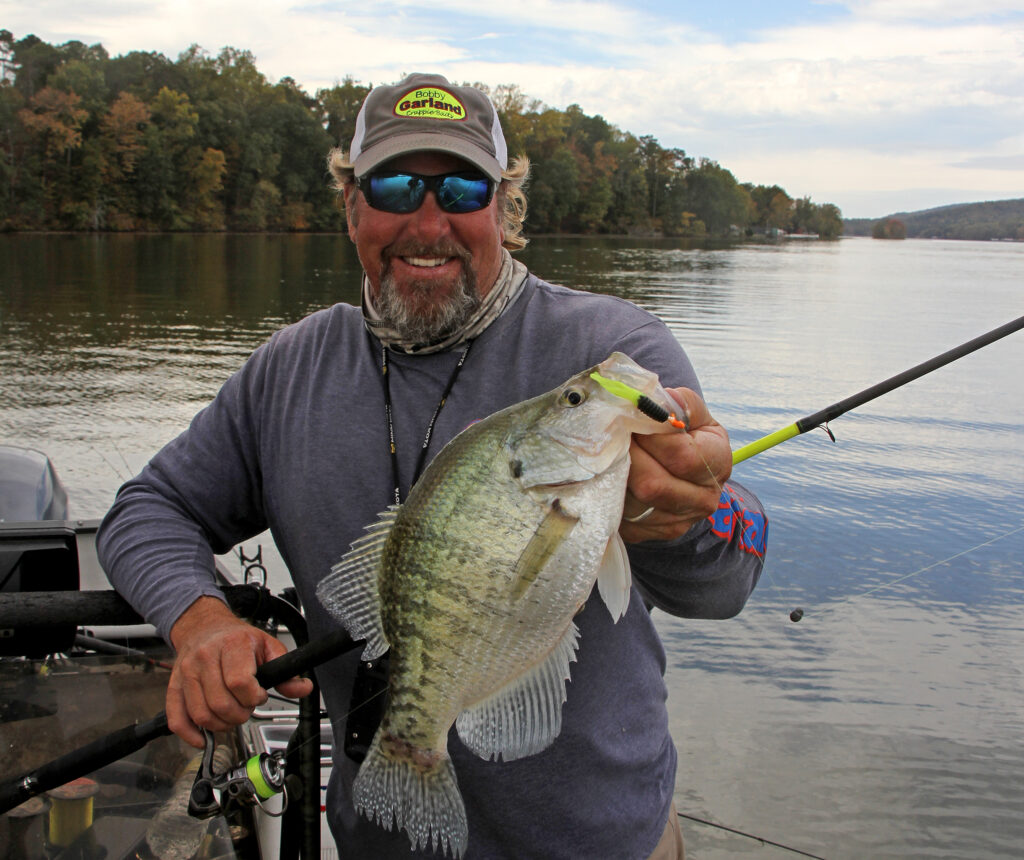
By David Rainer, Alabama Department of Conservation and Natural Resources
If you love to head to the woods this time of year to pursue white-tailed deer, Capt. Lee Pitts is right there with you. However, if you want to take a break from the deer stand and catch crappie on Weiss or Neely Henry reservoirs, Pitts is your man.
“If you want to catch crappie this winter, I’m ready,” Pitts said as we headed out on Neely Henry, an 11,235-acre impoundment on the Coosa River in northeast Alabama. When he’s not on Neely Henry, he’s fishing Weiss, a 30,200-acre Coosa impoundment.
“Weiss has a lot more open bays and open water,” he said. “On the days you’re dealing with wind, Neely Henry is more of a river system. In the winter, the crappie tend to get more on the ledges and creek channels in that deeper water. So, on Neely Henry, you can get protection from some of that north wind. Also, on Neely Henry, there’s a 9-inch (minimum) length limit on crappie. If you’re looking to take some fish home for the freezer, Neely Henry has great options on that. I’m not saying Neely doesn’t have big fish, because Neely has some big white and black crappie.”
The minimum length limit is 10 inches on Weiss Lake, known as the “Crappie Capital of the World.”
Pitts said finding structure is the key to catching crappie during the colder months. The guides and serious crappie anglers work with Alabama Power Company to deploy fish habitat, such as cane beds with concrete blocks.
“On these ledges, I’m looking for the brush,” he said. “On Weiss and Neely, all the guys put their own brush in. We have multiple places with cane beds. We’re putting them out off the edges of the breaks in 10 to 12 feet of water, and we’ve got some even in 18 to 20 feet of water. That gives you options if the fish have not pulled up in the shallower water. If they’re still deep, you’ve still got plenty of structure to catch these fish.”
Pitts uses a drop-shot rig with the bait deployed about 6 inches above the lead. On tough days, he’ll go to minnows, but he prefers to use a variety of crappie jigs.
“I like the Bobby Garlands, the Slab Slayers and Baby Shads,” he said of his jig choices. “With this cold water, they don’t have to move a lot to make it have action. You can just quiver that rod tip, and you still get a lot of action without moving the bait out of the strike zone. That’s what I prefer.
“In December, we’ll start doing some trolling. Even though it’s still wintertime, these fish will start migrating toward the bays. The bait starts moving toward the bays, and these fish are just following them. Some fish will stay on the ledges, but a lot of them will start moving toward the bays.”
Pitts said his trolling technique depends on where the fish are located in the water column when they start heading for the bays.
“You may be in 20 to 30 feet of water, but these fish may be suspended at 10 or 12 feet,” he said. “That’s when you have to pay close attention. I watch my Humminbird electronics all through the day so I’ll know what depth those fish are staying in. I like to use either a 1/24th (ounce) or 1/16th jig head. That seems to give it more action even at a slow speed. If I have to, instead of going to 1/8th. I’ll go with a BB or some type of split shot above the bait, so I’m still getting the depth I need, but I’ve got a bait that will dance around in the water column.”
As far as weather, Pitts prefers days with some sunshine and a light ripple on the water. When it gets windy, it makes it difficult for a proper bait presentation.
“If the front of the boat is going up and down and the rod tip is jumping around, you’re not going to be very productive,” he said. “But I’ll go fishing with whatever weather we’ve got. If you’ve got a little ripple, that’ll push those fish onto the cover instead of just roaming and that will help you with the vertical bite.”
When the fishing starts to transition to the springtime bite, Pitts obviously changes tactics.
“You’re moving and covering more water,” he said. “You’re not fishing as slow or staying with vertical structure. The fish are not holding on the structure or anything in particular. They are following that bait. If you can find the right kind of bait when it starts getting to be spring, the fish are feeding up and getting ready for the spawn.”
Pitts said in late March and into April, the fish will start migrating from the bays and river channels into shallower water, heading to the backs of the creeks and tributaries.
“We’ll have two or three waves of fish that will come in during the spring,” he said. “If you follow a wave of fish as they come in and start feeding, you may find them at the mouths of the creeks and bays for a week or two. Then all of a sudden, they’re in on that secondary point, and then they’ll move all the way to the backs of the creeks and bust up in that shallow water and get on brush.
“Usually, the black crappie will come in first. So, in late January and February, most of what we’re catching will be black crappie. About a month later, you’ll start seeing white crappie. The white crappie will stay on the river longer than the black crappie.”
When the crappie spawn starts to wind down, the fish will start moving back out onto the main river and search for structure.
“That’s when dock-shooting starts coming into play, because Neely Henry has so many docks on the river, the backwaters and the bays,” Pitts said. “Dock-shooting is kind of like playing golf. You might hit 100 terrible shots before you hit that one. You hit that one cast just right and skip that bait under the dock and that line twitches; it’ll keep you coming back.
“Whether it’s a permanent dock or a floating dock, the fish like to get up under them and get out of the sunlight and feed up before they start migrating back to the river ledges.”
Pitts said when he gets clients from out of state, they don’t really understand the quality of crappie that live in Neely Henry and Weiss.
“I tell them we’ll catch some 12- to 14-inch fish, and they’ll say, ‘We’ve got those at home,’” he said. “I tell them our fish are pretty thick. All of a sudden, they’ll catch a 12-incher and say, ‘Look at the shoulders on that fish!’ Our fish have some meat on them.”
Not only is Pitts one of the top crappie guides in northeast Alabama, he’s also a cancer survivor. He’s convinced the great outdoors helped him through his recovery.
“I was having some health issues and, thank goodness, my wife (Laura) talked me into getting it checked out,” he said. “When they found the cancer, I was in surgery the next week to put a port in my chest. When I healed from that, they started an aggressive chemo treatment. I went through 12 rounds of chemo. They let me heal from that, and then I went through five weeks of radiation five days a week.”
Surgery followed the radiation, and Pitts said it was two weeks before he was back on his feet. The doctors told him the quicker he got up and got moving, the better it would be, but he wouldn’t be able to deer hunt that year and probably wouldn’t be able to guide that next spring.
“I had just leased a piece of property before the surgery, and it was all ridge property,” he said. “I had the surgery on September 23, and, by the last three weeks of bow season, I was climbing stands and shooting my bow. Then during the gun season, I would just sling a rifle over my shoulder and walk up and down those ridges, enjoying the woods. There were several days when I would sit on a rock and wonder if I was going to make it back or not. But I think just getting out with my hunting and fishing, I think that’s what helped me heal and keep going. I went right back into guiding. I wasn’t 100%, but I was out there pushing it.
“The biggest thing is my wife said God gave me a platform with my hunting and fishing and the people I’m in contact with. There’s been so many people who have come up to me at a tournament or on a guide trip and told me about a spouse or relative who was going through it. When they see me, I think it helps their anxiety about getting through it and being okay.”
Visit www.pittsoutdoors.com/ for information or call 256-390-4145 to book a trip.
“I’m not big on technology, so just call me and we’ll talk fishing,” Pitts said.
Special Waterfowl Hunting Days for Youth, Veterans and Active Military Personnel for 2022-2023
The Wildlife and Freshwater Fisheries (WFF) Division of the Alabama Department of Conservation and Natural Resources (ADCNR) has designated Saturday, November 19, 2022, as one of the 2022-2023 hunting season’s Special Youth, Veteran and Active Military Personnel Waterfowl Hunting Days. The second of the two special waterfowl hunting days is scheduled for February 4, 2023.
On those days, military personnel on active duty, veterans (as defined in section 101 of U.S. Code: Title 38), and youth under age 16 who are accompanied by a licensed adult hunter may hunt for waterfowl statewide. Regular waterfowl season shooting hours, bag limits, legal arms and ammunitions apply to the special days. Hunting area rules and regulations also apply.
To participate in the hunt, youth must be accompanied by a licensed adult supervisor. Only one firearm will be allowed per youth and only the youth hunters will be permitted to utilize the firearm for hunting unless the adult meets the requirements of a veteran or active duty military personnel. The adult supervisor must remain within arm’s length of the youth at all times and may accompany up to two youth participants during the hunt. The adult is also expected to review the rules of firearm safety and hunter ethics with each youth and ensure they are followed.
Youth is defined as an individual age 15 years and younger. Adult is defined as an individual age 21 years and older, or as the parent of the youth. The adult must have a state hunting license, state and federal waterfowl stamp and a free Harvest Information Program registration. Veterans and active duty military personnel must be in possession of a valid proof of service such as a military ID, Veterans Administration ID, veteran ID, veteran validation on their driver’s license or a copy of their DD Form 214. Possession of the mandatory hunting licenses and stamps is also required.
For more information about the Special Youth, Veteran and Active Military Personnel Waterfowl Hunting Days, contact WFF Migratory Gamebird Coordinator Seth Maddox at [email protected] or (334) 353-2057, or visit www.outdooralabama.com/waterfowl.
ADCNR promotes wise stewardship, management and enjoyment of Alabama’s natural resources through four divisions: Marine Resources, State Lands, State Parks, and Wildlife and Freshwater Fisheries. Learn more www.outdooralabama.com.
Governor Ivey joins in celebration of new boating access
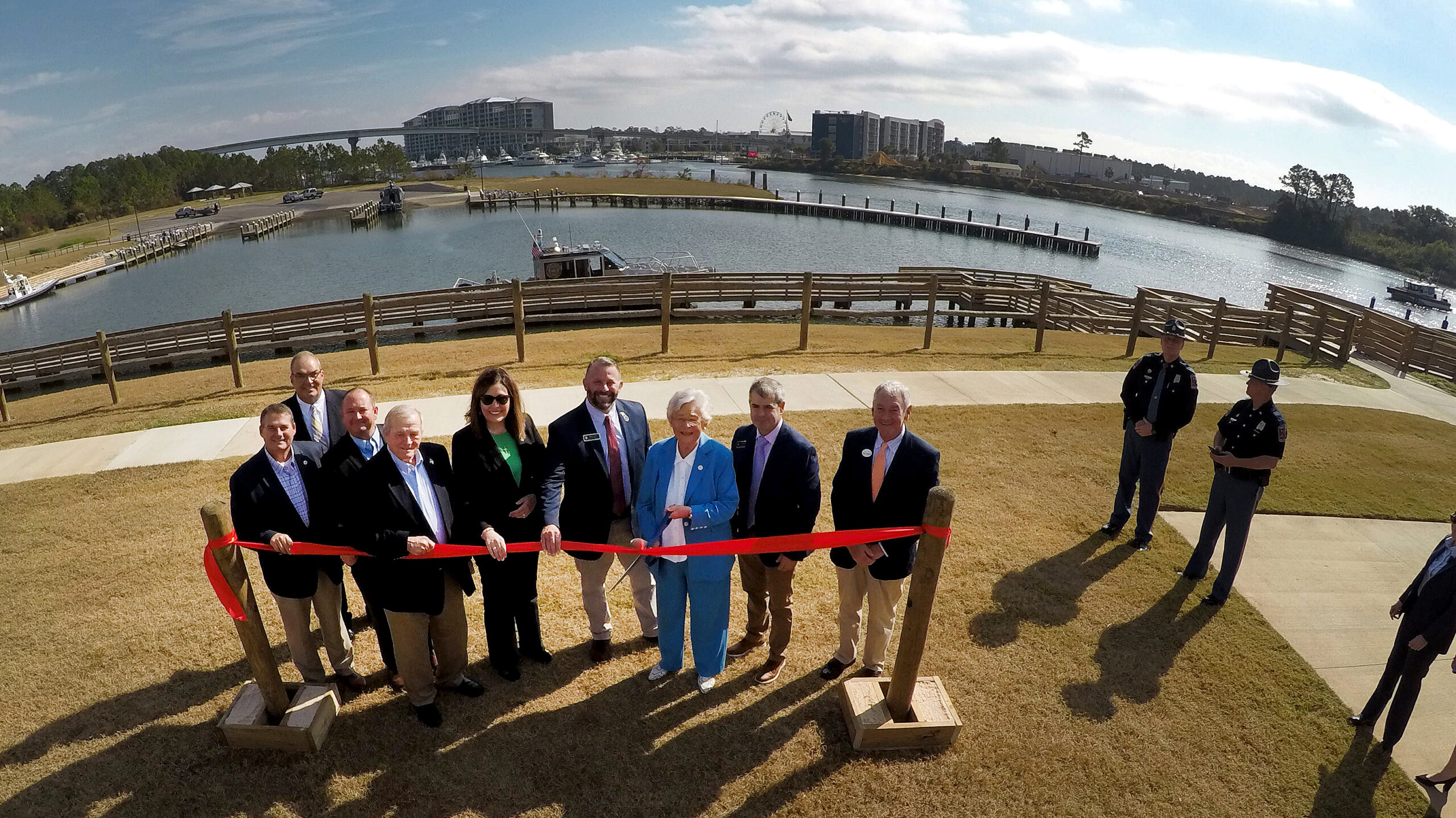
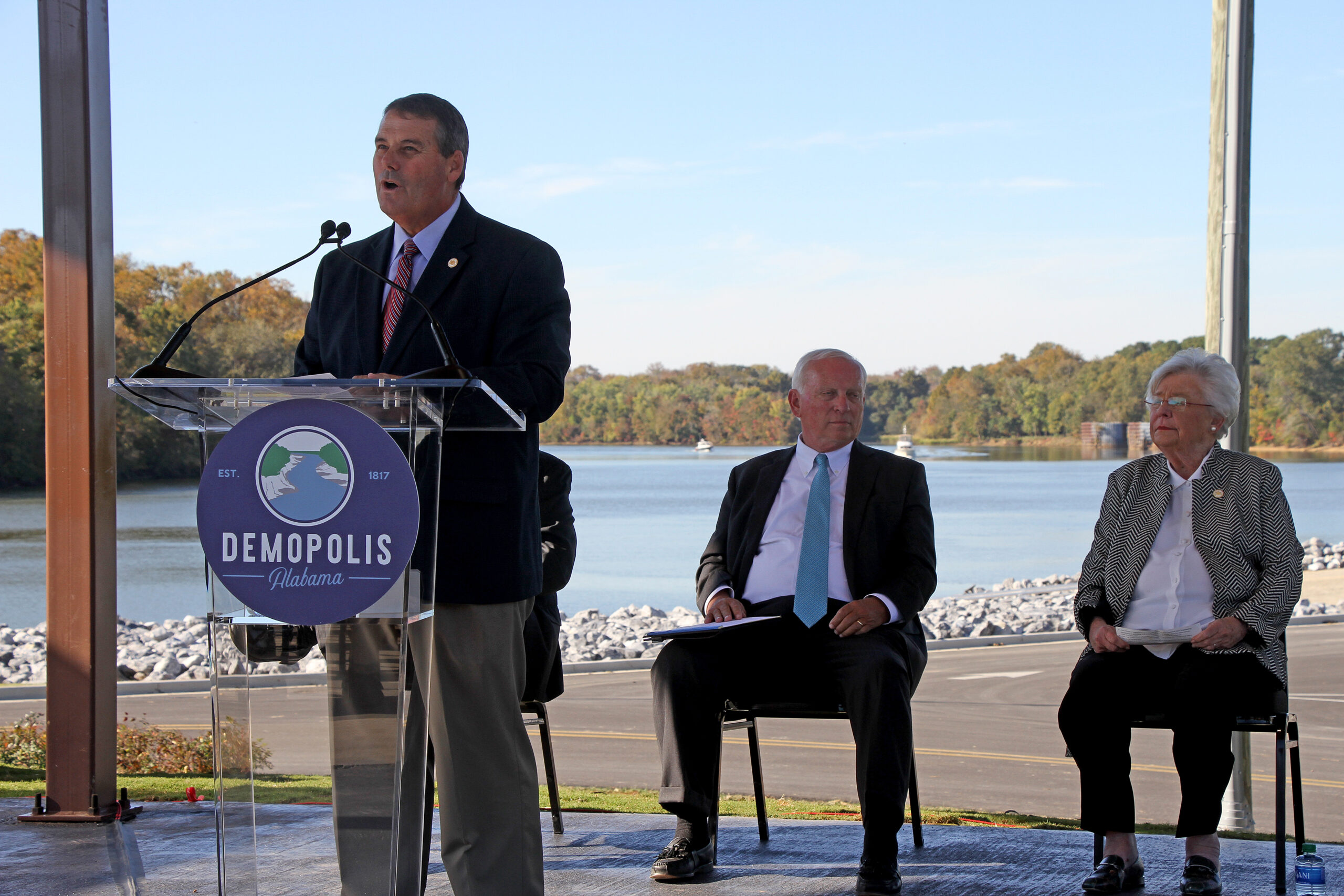
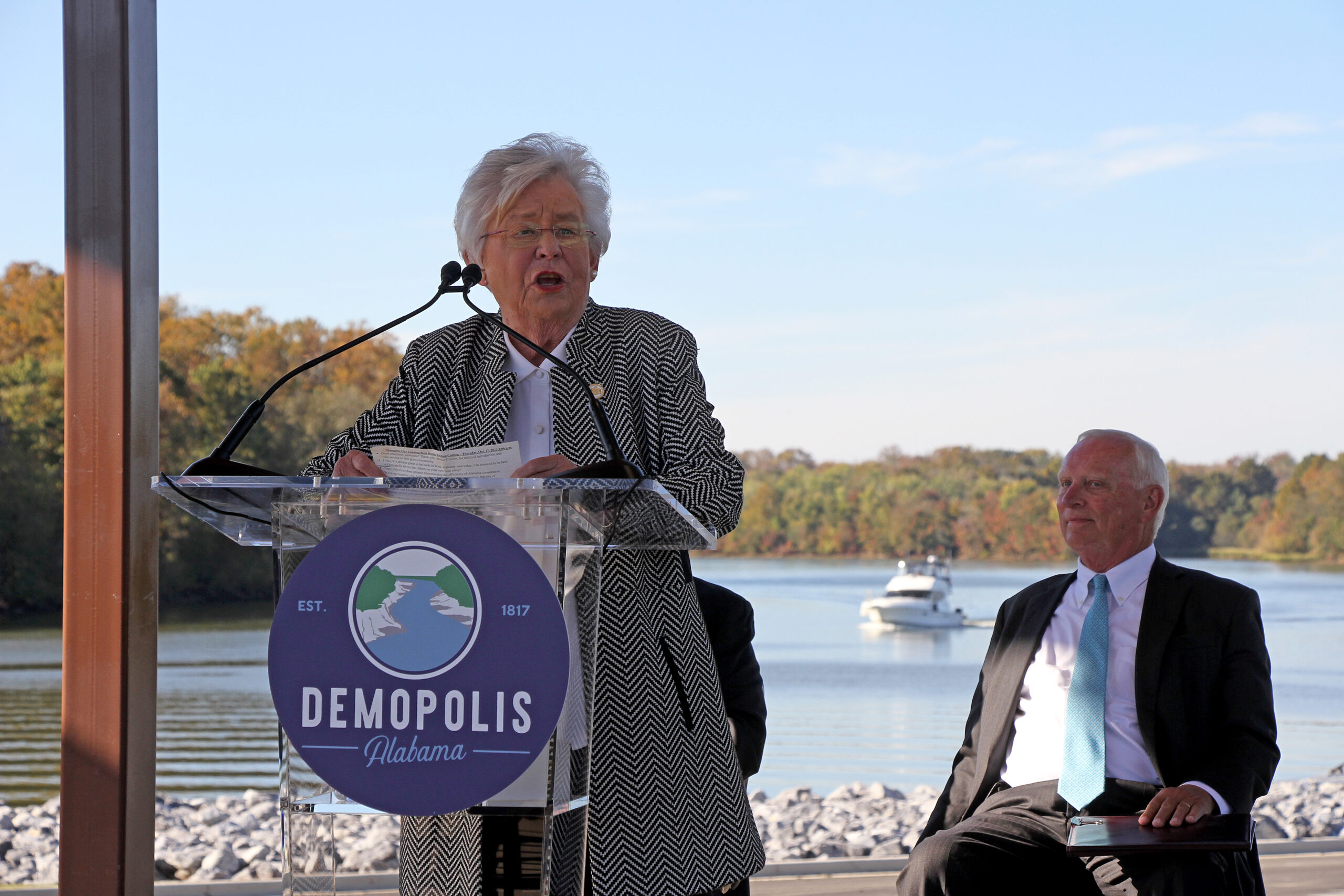
With a recreational boat in the background, Governor Kay Ivey joins in the celebration of the opening of Demopolis City Landing. Conservation Commissioner Chris Blankenship emphasizes the need for new access to public waters and public lands for hunting and other recreational use. Governor Ivey prepares to cut the ribbon at The Launch at ICW in Orange Beach last week. (David Rainer, Hal Yeager)
By David Rainer, Alabama Department of Conservation and Natural Resources
Alabama Governor Kay Ivey recently joined in the celebrations of major improvements in boating access in west central Alabama and at the Gulf Coast with ribbon-cutting ceremonies at Demopolis City Landing and The Launch at ICW.
Governor Ivey joined local leaders and dignitaries on the banks of the Tombigbee River on Thursday to open Demopolis City Landing, enabling the area to capitalize on the increase in fishing participation and providing the ability to host local, regional and major fishing tournaments on the Tombigbee and Black Warrior rivers.
“I am honored to be here to cut the ribbon on the new boat ramp here in Demopolis,” Governor Ivey said. “Truly, this first-class project demonstrates the efficiency of Alabama cooperation. Working together with the Alabama Department of Conservation and Natural Resources (ADCNR), the City of Demopolis and Marengo County brought this $3 million investment to west Alabama, which will provide millions of dollars of economic benefit to our Black Belt region of the state.”
The Demopolis City Landing provides a four-lane boat launch with 53 paved parking spots, three handicapped parking sports, green-space parking for hundreds more and 250 feet of docking space.
“Here in Alabama, we are presented with the unique opportunity to not only use our state’s bountiful natural resources to grow our economy but to improve the quality of life of Alabamians through the encouragement of the use of our outdoor recreation,” Governor Ivey said. “This project will allow the Demopolis community to capitalize on great fishing on the Black Warrior and Tombigbee rivers. In fact, with this facility, Marengo County can now host regional and national bass tournaments to help promote access to these waters. Our friends at Alabama Power Company and B.A.S.S. (Bass Anglers Sportsman Society) have continued their longstanding partnership by providing a pavilion for a much-needed space for organizations, from local bass clubs to the largest tournaments, to hold their weigh-ins. And folks, I have participated in a bass weigh-in, so I know that having some space will be yet another plus.
“I fully expect to watch the tourism industry grow even more after the opening of this boat ramp here in Demopolis. We’re known as ‘Alabama the Beautiful’ for a reason, and this opening will allow more of our families, from far and near, to get out and experience our great state. Folks, this project is not an end but just the beginning. In the next few weeks, Commissioner (Chris) Blankenship and the Conservation Department will be developing more boating access like here in Demopolis, but I know this one here in Marengo County will be tough to beat. May God continue to bless each of you and the great state of Alabama.”
Marengo County Commissioner Jason Windham said the project went through many starts and stops before it reached fruition.
“I was about ready to throw my hands up, but Freddy (Padilla with Alabama Power) said you’ve got to finish it; you’ve got to do it,” Windham said. “Land the plane and get this project started.”
Bids for the project came in double the original estimate. To continue the project and complete the landing, ADCNR increased the funding they were providing, and the Marengo County Commission, the Marengo County Economic Development Authority, the Marengo Parks and Recreation Board, the Demopolis Parks and Recreation Board and the City of Demopolis formed a coalition to help fund the additional local match for the project. Alabama Power and B.A.S.S. provided funding toward the construction of two pavilions. Local businesses and companies provided other assets to complete the pavilions.
“It’s been an amazing adventure and amazing journey,” Windham said. “What we figured out was that when the City of Demopolis and Marengo County need to come together, they do. I’m proud to stand here today and say we landed the plane.”
Demopolis Mayor Woody Collins added, “If we tried to thank everybody, we’d be here for hours. There were so many people behind the scenes that have contributed. We know who you are, and we appreciate you so much.”
Commissioner Blankenship said he and Deputy Commissioner Ed Poolos traveled to Demopolis and met with Padilla and Demopolis and Marengo County officials and quickly recognized the need for the launch facility and what it could mean for this area.
Commissioner Blankenship and Deputy Commissioner Poolos returned to Montgomery and met with ADCNR staff to devise a plan to find funding for the project and move it up in the priority list of other projects scheduled around the state. They also worked with the (U.S. Army) Corps of Engineers to speed up the permitting process to allow the work to proceed.
“The passion these guys have for their community and their plan to do something big like this was contagious,” Commissioner Blankenship said. “None of us had the money to do this project alone, but we figured that if we all pulled together, we could get it done. As with any project like this, there were challenges, but any time I called Jason or the mayor, these guys were great, and we worked through every problem. When the bids came in double, I was so thankful we were able to work together to make this happen. The river above flood stage, the bids over budget, soupy soil, rock that had to be drilled to put the pilings down, relocating endangered mussels and other issues were handled quickly and professionally, which goes to show that, if you’re interested in working together and want to make things happen, you can.”
Commissioner Blankenship said the improvements in access to Alabama’s great outdoors have numerous benefits that may not be readily recognized.
“Alabama is truly blessed with woods and waters from one end of the state to the other,” Commissioner Blankenship said. “The Black Belt is such a beautiful and important part of our state. I’m glad to be here to dedicate this new facility. With the spectacular fishing in all the various waterways, demand for boating access is through the roof here in Demopolis. Building public access is a priority for me as the Commissioner. Acquisition of public hunting land and other public recreational land, building tournament-style boat ramps and piers, trail-building and blueway creation are all in progress around the state.
“Expanding outdoor recreation is one of the biggest opportunities that we have to retain workers in Alabama,” he said. “Having a facility like this in west Alabama will really help this part of the state capitalize on the natural resources that God so richly blessed this area with.”
On Friday, Governor Ivey and Commissioner Blankenship headed to Alabama’s beautiful Gulf Coast and the dedication of The Launch at ICW (Intracoastal Waterway), just across the canal from The Wharf.
The new launch facility provides a great deal of access to the Gulf Shores-Orange Beach area with about 200 trailer parking spots and a multiple-lane boat ramp. The $19 million project was a joint effort with GOMESA (Gulf of Mexico Energy Security Act) funds from the State of Alabama and Baldwin County. Governor Ivey committed $10.1 million in state GOMESA funding, while the Baldwin County Commission committed an additional $8.1 million in county GOMESA funding. Another $750,000 from local county funds supported the project.
With more than 1,700 feet of water frontage, the 47-acre property in Orange Beach has a ramp capable of launching six boats at once with docking facilities. In addition to lighted parking, that facility has six covered pavilions with picnic table seating, a grand pavilion, and more than a mile of concrete sidewalks and boardwalks throughout the pavilion and launch areas.
“This large capacity boat ramp was much needed in Coastal Alabama,” said Commissioner Blankenship. “The project was done first-class. The design and beefy materials for the piers, boardwalks, pavilions and restroom facilities were designed to withstand the numerous tropical events that impact this area. It was built right and should be here to provide access to our great boating and fishing resources for decades to come. The Launch at ICW was a dream of Senator Chris Elliott and others. We had numerous conversations on how to make it happen. I am so glad to be here today with Governor Ivey to see this dream is now a reality.”
Eastern Portion of Gopher Tortoise Range Withdrawn from Endangered Species Act Consideration
On October 11, 2022, the U.S. Fish and Wildlife Service (USFWS) announced the decision to withdraw the petition to list the eastern portion of the gopher tortoise range under the endangered species act after a species status assessment indicated gopher tortoise populations in the eastern portion of its range in Florida, Georgia, South Carolina and most of Alabama are robust.
However, gopher tortoise populations in the western portion of its range in Alabama are still federally listed as threatened. The western portion of its range in Alabama includes populations west of the Mobile and Tombigbee rivers. The gopher tortoise’s western range also includes southern Mississippi and eastern Louisiana where it is also federally listed as threatened. It is important to remember the gopher tortoise continues to be protected by state regulations and is listed as a priority species of greatest conservation need throughout its range in Alabama.
“The partnerships between state and federal agencies, local and nongovernmental organizations and landowners have been crucial in developing a better understanding of gopher tortoise populations and helping to enhance those populations,” said Chris Blankenship, Commissioner of the Alabama Department of Conservation and Natural Resources (ADCNR). “We are grateful to the U.S. Fish and Wildlife Service and our other partners for making gopher tortoise conservation a priority.”
The gopher tortoise plays an integral role in the longleaf pine forests of the Southeast. As a keystone species, more than 350 other species depend on its burrows for shelter. These burrows can go as deep as 12 feet, extend more than 60 feet, and provide protection from predators, extreme weather, and the prescribed fires necessary for the habitat to thrive. Actively managing longleaf pine forests not only benefits gopher tortoises, but it also benefits a variety of other wildlife, including the Eastern indigo snake, red-cockaded woodpecker, wild turkey and white-tailed deer.
“Alabama’s commitment to restoring longleaf habitat and enhancing its gopher tortoise populations has been an important factor in the stabilization of gopher tortoise numbers in the eastern part of its range in the state,” said Leopoldo Miranda-Castro, USFWS Southeastern Regional Director. “We will continue to work with our partners in Alabama and throughout the gopher tortoise’s range to conserve this important keystone species.”
Historically, longleaf pine forest covered millions of acres from Texas to Virginia. Habitat fragmentation, degradation, and modification are the primary threats to animals that depend upon longleaf pine habitat. For decades, the USFWS and the six southeastern states in the gopher tortoise’s range have worked to restore longleaf pine forests and enhance gopher tortoise populations.
“The decision not to list the gopher tortoise is good news for Alabama and the other states within its range,” said Chuck Sykes, Director of ADCNR’s Wildlife and Freshwater Fisheries Division. “There are several factors that can make managing for gopher tortoise different in each state. This allows state wildlife agencies to determine the best conservation approach for their individual states, including the development of public-private partnerships that have been effective at enhancing gopher tortoise populations in south Alabama.”
Earlier this year, gopher tortoise conservation in Alabama received a boost when representatives from ADCNR, USFWS, Eckerd College and the Birmingham Zoo released 98 young tortoises into the Geneva State Forest Wildlife Management Area (WMA) in Covington County. Prior to the release, tortoise eggs were collected from nests at the WMA and sent to Eckerd College in St. Petersburg, Florida, to hatch. The hatchlings were then raised at Eckerd College and the Birmingham Zoo for up to two years to increase their chances of survival in the wild – a process called head-starting. These tortoises will be monitored over the next several years to determine their survival rates and movement patterns.
For more information about the USFWS gopher tortoise announcement, click here.
ADCNR promotes wise stewardship, management and enjoyment of Alabama’s natural resources through four divisions: Marine Resources, State Lands, State Parks, and Wildlife and Freshwater Fisheries. Learn more at outdooralabama.com.

Reduction in Hunting Accidents Reaches Milestone
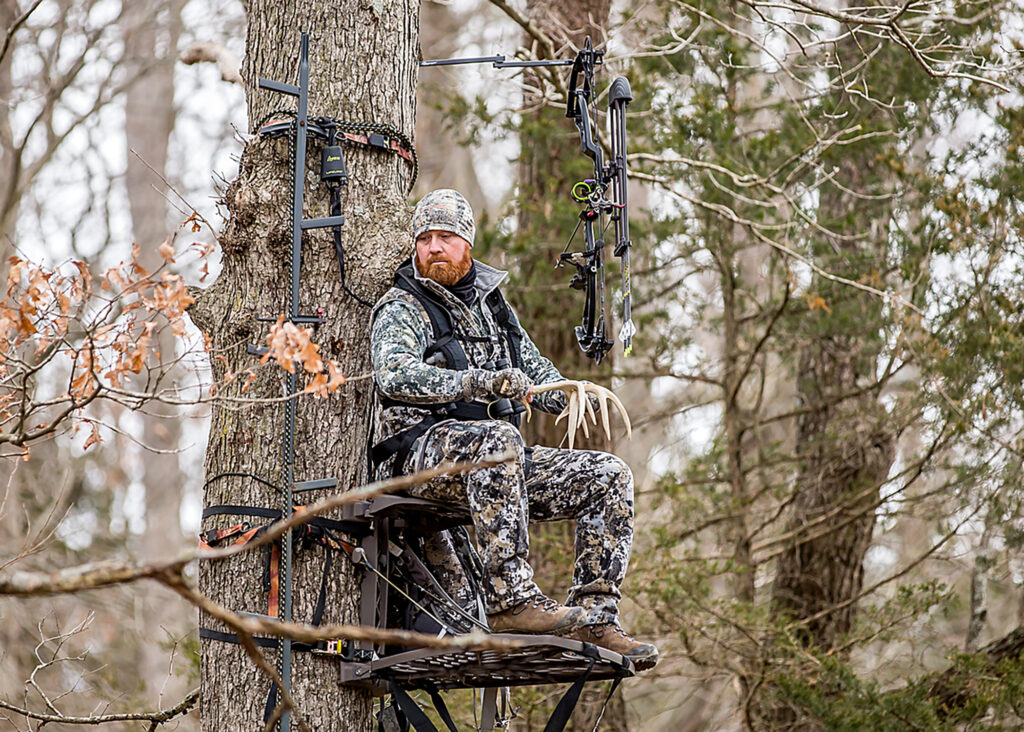
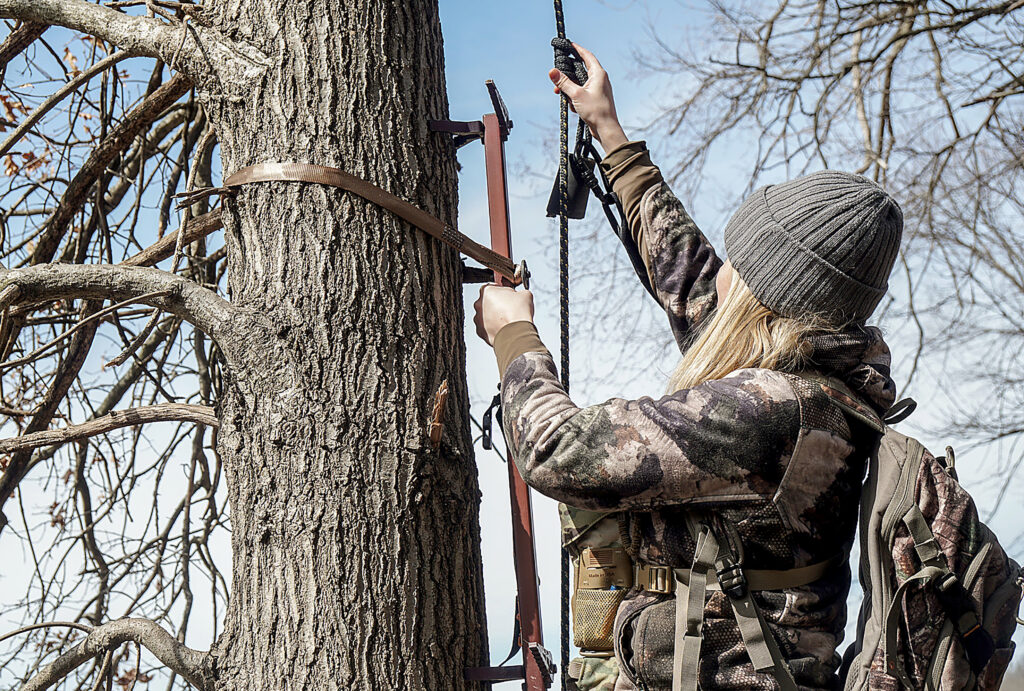
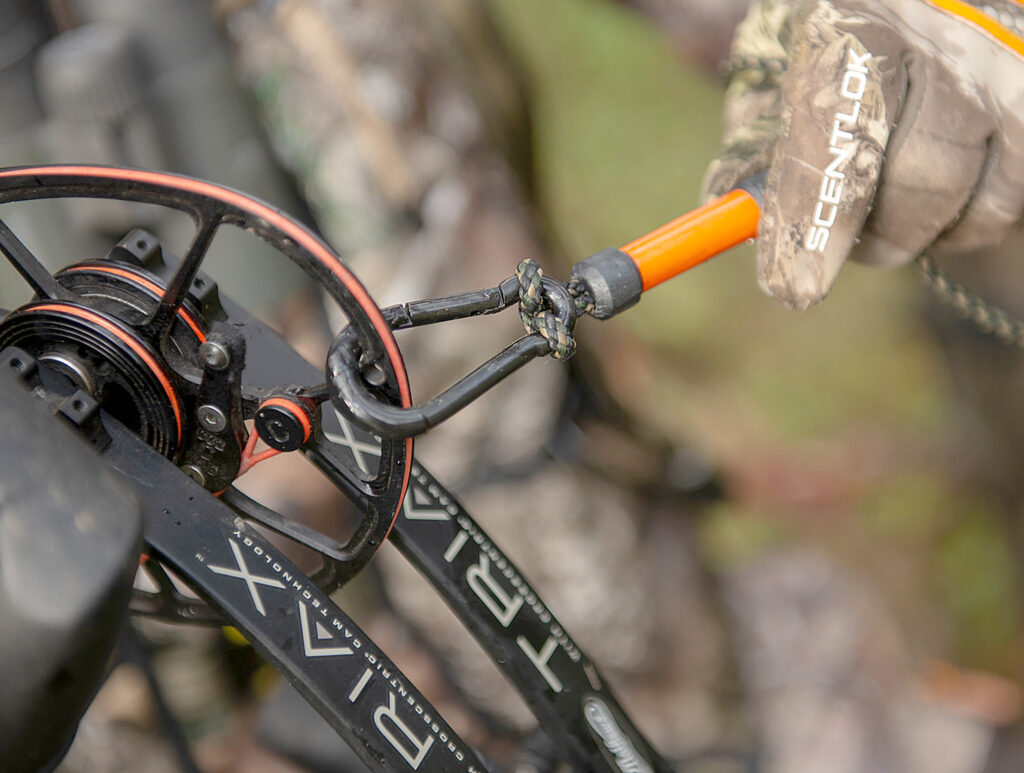
By David Rainer, Alabama Department of Conservation and Natural Resources
More than 200,000 hunters will pursue the abundant game in Alabama this season, which means hunter safety should be at the forefront of any outdoors adventure. Captain Marisa Futral, Hunter Education Coordinator with the Alabama Department of Conservation and Natural Resources’ (ADCNR) Wildlife and Freshwater Fisheries (WFF) Division, would love to see a repeat of the 2021-2022 season, when zero fatalities were reported for hunting accidents.
“Last year was a good year,” Futral said. “Everybody needs to keep up the good work. There were no fatalities in firearms or treestand accidents. We had fewer treestand accidents than firearms incidents, which is unusual.”
WFF Director Chuck Sykes hailed the milestone and recently emphasized the progress made in reducing accidents in the field.
“Hunter safety is a priority for us at WFF,” Sykes said. “So, at the February 2020 Conservation Advisory Board meeting, I made a special PowerPoint slide out of our yearly hunting accidents showing that we had been slowly decreasing the numbers for the past several years.
“Zero fatalities during last season was a monumental occurrence. That’s the first time since WFF began keeping records in 1973 that we have had zero hunting-related fatalities. I certainly hope we can carry this over to this upcoming season.”
Futral said five treestand accidents and 10 firearms accidents were reported. Of the firearms accidents, four were self-inflicted.
“Those self-inflicted accidents include stumbling and falling, or the trigger got caught on an object,” she said. “The key is that the muzzle is pointed in a safe direction. Be aware of where the muzzle is pointed just in case of an accidental discharge.
“Also, no dove hunting accidents were reported, which was good. We had two waterfowl hunting incidents. One was self-inflicted, and one happened when the victim was covered by a shooter swinging on game.”
Two turkey hunting incidents were reported with the victims located behind the turkeys. One quail hunting incident and one hog hunting accident were reported, while four accidents occurred during deer hunts.
“The deer hunting incidents were basically careless handling of firearms,” Futral said. “The hog hunter stumbled and fell.”
Though not fatal last season, these accidents underscore there’s never a time to get complacent.
“Complacency will get you in trouble,” Futral said. “The number of treestand accidents are trending in the right direction. This is the lowest number of treestand accidents that we have had. We just need everyone to remain diligent about treestand safety. Most treestand accidents happen when you’re going up or coming down the tree. Make sure you have a quality safety harness, and the rule to follow is to remain attached to the tree when your feet leave the ground until your feet are back on the ground. We also had one accident happen when a hunter was moving a treestand, so be diligent when putting stands up and taking them down.
“I do think word is getting out about our safety outreach, on both treestands and firearms. Hunter education definitely helps, and our PSAs (public service announcements) are helping. I do think hunters are more aware of being safe when they’re hunting.”
Futral urges all hunters to follow the 12 guidelines for using a treestand safely:
- Always wear a safety harness, also known as a fall-arrest system, when you are in a treestand, as well as when climbing into or out of a treestand. Statistics show that the majority of treestand incidents occur while climbing in and out of a stand.
- A safety strap should be attached to the tree to prevent you from falling more than 12 inches.
- Always inspect the safety harness for signs of wear or damage before each use.
- Follow all manufacturer’s instructions for use of a safety harness and stand.
- Follow the three-point rule of treestand safety. Always have three points of contact to the steps or ladder before moving. This could be two arms holding and one leg stepping on the ladder or one arm and two legs in contact with the ladder before moving. Be cautious that rain, frost, ice or snow can cause steps to become extremely slippery. Check the security of the step before placing your weight on it.
- Always hunt with a plan and, if possible, a buddy. Before you leave home, let others know your exact hunting location, when you plan to return and who is with you.
- Always carry emergency signal devices such as a cell phone, walkie-talkie, whistle, signal flare, PLD (personal locator device) and flashlight within reach even while you are suspended in your fall-arrest system. In the event of an incident, remain calm and seek help immediately.
- Watch for changing weather conditions.
- Always select the proper tree for use with your treestand. Select a live, straight tree that fits within the size limits recommended in your treestand’s instructions. Do not climb or place a treestand against a leaning tree.
- Never leave a treestand installed for more than two weeks since damage could result from changing weather conditions and/or other factors not obvious with a visual inspection.
- Always use a haul line to pull up your gear and (unloaded) firearm or bow to your treestand once you have reached your desired hunting height. Never climb with anything in your hands or on your back. Prior to descending, lower your equipment on the opposite side of the tree.
- Always know your physical limitations. Don’t take chances. Do not climb when impaired by drugs, alcohol or if you’re sick or fatigued. If you start thinking about how high you are, stop climbing.
As for firearms safety, Futral stresses the 10 commandments of safe firearms use:
- Treat every firearm as if it is loaded.
- Control the muzzle of your firearm. Keep the barrel pointed in a safe direction. Never point a firearm at anything that you do not wish to shoot, and insist that shooting and hunting companions do the same.
- Be sure of your target and beyond. Positively identify your target before you fire, and make sure no people, livestock, roads or buildings are beyond the target.
- Never shoot at water or a hard, flat surface. A ricocheting bullet cannot be controlled.
- Don’t use a scope for target identification; use binoculars.
- Never climb a tree, cross a fence or jump a ditch with a loaded firearm.
- Store guns and ammunition separately. Store firearms under lock and key, and use a gun case to transport firearms.
- Make sure your barrel and action are clear of all obstructions.
- Unload firearms when not in use. Never take someone else’s word that a firearm is unloaded. Check yourself.
- Avoid drugs and alcohol when hunting or shooting. Even some over-the-counter medicines can cause impairment.
Practicing fire safety in the fall
By Cole Sikes
AUBURN UNIVERSITY, Ala. – Fall is a popular season for bonfires, campfires and prescribed burning in Alabama. To spread the word on practicing fire safety, an Alabama Cooperative Extension System regional agent informs everyone about responsibly enjoying autumn’s beautiful weather.
Ryan Mitchell said a thoughtful planning and careful execution are key to safe burning.
The Fire Triangle
Fire needs three components to thrive: oxygen, fuel and heat. This trio is referred to as the fire triangle. Without the existence of all three elements, fire will not thrive. Removing only one of these items will cause any flame to slowly burn out or disappear completely.
The term fuel refers to any material—living or not—that fire can use to spread. This can include anything from light, flashy fuels such as grasses or shrubs, to larger materials like stumps and piled storm debris that take longer to extinguish. Of course, in dry conditions, the ignition rate for these fuels is exacerbated by the lack of moisture in the air and the material itself.
Prescribed Burning
When driving through Alabama in the fall and winter months, large clouds of smoke rising into the blue sky may be alarming. However, these clouds are likely prescribed burns – the intentional burning of forest or agricultural land.
The use of prescribed fire has proven to be a very beneficial tool in agriculture and forest management. In crop fields it removes debris prior to the next planting, controls weeds and reduces pests/diseases. In forestry, running a low-intensity fire through a forest floor reduces hazardous fuel loads, decreases natural competition for timber, allows sunlight to reach the forest floor, improves wildlife habitat and nourishes the soil.
Before intentionally setting a fire, experienced practitioners conduct hours of planning to create a prescription of conditions needed to meet specific objectives. Prescribed fire is a safe way to apply a natural process, ensuring ecosystem health and reducing future wildfire risk.
“If you choose to conduct a prescribed burn, safety is of the utmost importance,” Mitchell said. “Under the wrong conditions, fire can easily get out of hand and affect property and life.”
Mitchell said everyone should contact the Alabama Forestry Commission for a free burn permit before initiating a burn more than one quarter of an acre in size. Also, check the agency’s website for any potential burn restrictions in the area.
There is also a training course for those who aspire to become a certified prescribed burn manager. The Certified Prescribed Burn Manager course covers 32 hours of discussion, planning and study of Alabama fire laws. Any individual who is interested in the use of prescribed fire as a management tool is encouraged to participate in the program.
Bonfires, Campfires and Burn Piles
Most Alabamians enjoy sitting around a good campfire or bonfire. These events are a popular way to bring people together during this time of the year. However, they can become dangerous if not executed responsibly.
Before grabbing those marshmallows, ensure the proper handling of fire – especially when starting it. Remove all flammable materials around a fire site including loose debris, brush, fuel cans, etc. before lighting a flame. This will mitigate the opportunity for fire to spread to undesirable places, such as vehicles or structures.
“Never walk on top of a large pile to ignite it,” Mitchell said. “This action can potentially lead to falling or becoming stuck while fuel is rapidly burning.”
Mitchell adds that it is not a good idea to use gasoline or other accelerants that may give off explosive vapors. Using this method has the potential to cause severe injuries.
Feeling the Burn
Now that fall has come to stay, continue to practice responsibility when managing property or huddling around the fire.
For more information on burning techniques and safety tips, visit the Alabama Extension website, www.aces.edu.

Hunters Commended for Cooperation at CWD Meeting
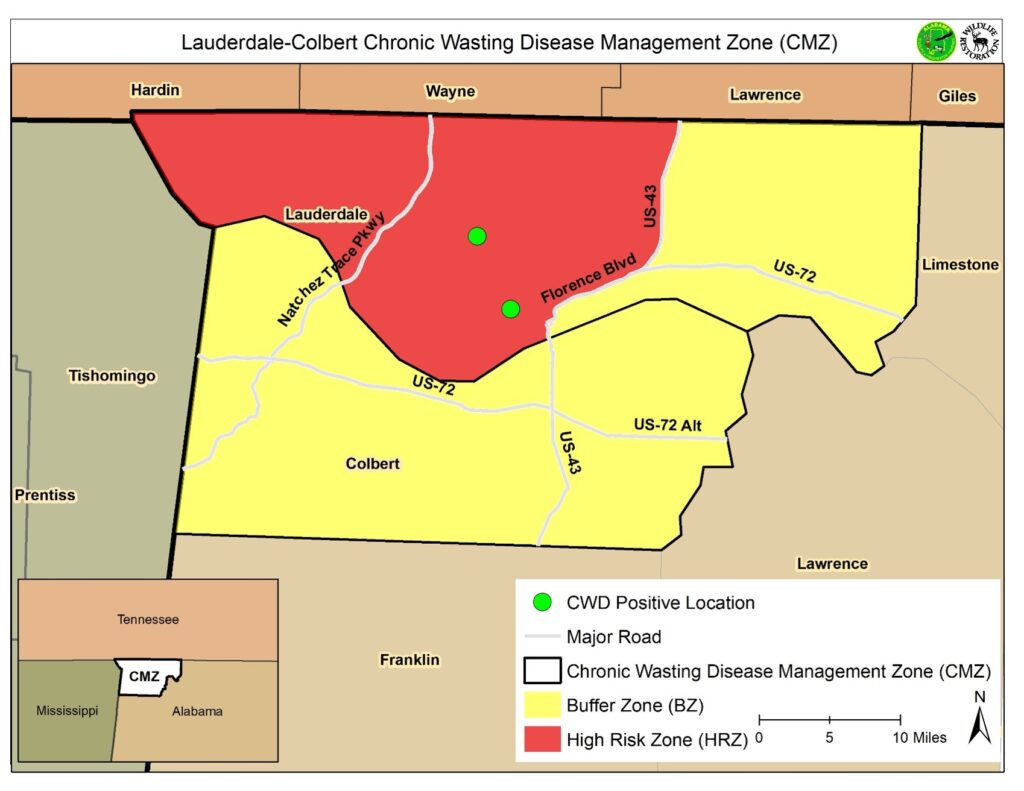
By DAVID RAINER
Alabama Department of Conservation and Natural Resources
One of the messages the Alabama Department of Conservation and Natural Resources’ (ADCNR) Wildlife and Freshwater Fisheries (WFF) Division wanted to convey last week at the CWD (chronic wasting disease) public meeting in Florence was to thank Alabama hunters for their response during the 2021-2022 white-tailed deer season.
WFF Outreach Coordinator Marianne Gauldin was among those greeting attendees at the meeting.
“It was great to see so many members of the community interested in the health and future of our wildlife resources,” Gauldin said. “Our staff also appreciates the opportunity to interact with them and openly discuss these topics and further understanding of this disease and related regulations.”
Amy Silvano, Assistant Chief of the WFF’s Wildlife Section, said last week’s meeting was a follow-up from the January 2022 public meeting held when the first case of CWD was confirmed in Lauderdale County in northwest Alabama.
When the first case was confirmed on January 6, an emergency regulation was signed the next day to establish the CWD Management Zone (CMZ) in Lauderdale and Colbert counties, encompassing the high-risk zone (HRZ) of Lauderdale County west of U.S. Highway 43 and the buffer zone (BZ), the remaining area east of Highway 43 in Lauderdale County and all of Colbert County. The emergency regulation also extended the either-sex deer season on all open permit, private, and WMA lands, removed the seasonal and daily bag limits for antlered and unantlered deer, and removed the antler restriction for deer harvest in the CMZ. It became mandatory for any deer harvested within the HRZ to be made available for sampling. Hunters were strongly encouraged that deer harvested in the BZ be sampled. Carcass restrictions were also put in place that prohibited the transport of deer carcasses and deer parts in the CMZ. Deer harvested in the HRZ must remain in the HRZ, and deer harvested in the BZ must remain in the CMZ.
“The reason for relaxing harvest regulations in Lauderdale and Colbert counties for the remainder of the season was to remove barriers for us to get samples,” Silvano said. “We were relying on our hunters to get those samples. We had 30 days left in the 2021-2022 season, so we wanted to engage our hunters, who have always been our best cooperators in managing the deer herd. When we had our first positive, we didn’t know what the extent or distribution of the disease could be in that area.”
Prior to last season’s emergency regulation, WFF had received 65 samples from the CMZ as part of their normal CWD surveillance sampling procedures. After the emergency regulation went into effect, a total of 968 samples were collected from hunter-harvested deer in the CMZ, with 499 coming from Lauderdale County and 469 coming from Colbert County. This increased number of samples meant that WFF had access to more information about the distribution of the disease.
“We really do need to thank the hunters for providing us with that information,” Silvano said. “From those 968 samples, it wasn’t the best-case scenario – that we didn’t detect anything else – but we only detected one additional positive from a hunter-harvested deer, which was only a couple miles southeast of the original positive. That did not change any of our lines. It was detected in the HRZ and still 10 miles or more from Colbert County.”
Because the emergency regulation was only in effect for 120 days, it was replaced with a new CWD regulation that went into effect on July 15. The zones and carcass transport restrictions remained the same. Under the new regulation, the baiting or supplemental feeding of deer is banned within the CMZ.
“We put in the ban because, unfortunately, we detected a second case,” Silvano said. “This regulation is put into place to help minimize the risk of disease spread. Baiting and supplemental feeding congregate animals at a certain point. CWD is a highly contagious disease. The carcass transport and movement regulation also helps to minimize the risk of spread.”
During the final 30 days of the 2021-2022 season, all hunter-harvested deer in the HRZ were required to be submitted for sampling. Under the new regulation, WFF will conduct mandatory sampling on deer harvested on open permit and private land on two weekends in the HRZ and two weekends in the BZ. The mandatory weekends in the HRZ are November 19-20 and December 3-4, 2022. The mandatory weekends in the BZ are November 19-20, 2022, and January 7-8, 2023.
All deer harvested by hunters on public land in the CMZ are required to be sampled. Those public lands include the Freedom Hills WMA, Lauderdale WMA, Seven-Mile Island WMA and Riverton Community Hunting Area.
“Those mandatory weekends correspond to the weekends when we have peaks of harvest, opening weekend and during the rut,” Silvano said. “Outside of those weekends, we highly encourage people to voluntarily drop off hunter-harvested deer at the self-service freezer locations (www.outdooralabama.com/cwd/cwd-sampling). Those will be available 24/7. Check the interactive freezer location map. We are adding freezer locations as we get a new cooperator location. We have freezers in several counties throughout the state. You should be able to find one near you.”
Silvano said after the deer harvest regulations in the CMZ were relaxed during the last 30 days of the 2021-2022 season some hunters were concerned that too many deer would be harvested in the CMZ, impacting the population in the area. Silvano said that is not what happened at all. Game Check indicated harvest increased only about 15 percent during the last 30 days of the 2021-2022 season compared to same period during the 2020-2021 season.
“That was fantastic and is what we needed for us to get CWD samples,’ she said. “But Game Check numbers indicated we had an overall decrease for the entire season in the CMZ. In Lauderdale County alone, we had an estimated 20% decrease in total harvest from the 2020-2021 season. Overall, we took less deer out of that area compared to the previous year. We were not decimating the deer population.”
WFF Director Chuck Sykes said as hunters prepare for the 2022-2023 deer season, which starts in October with archery season, he hopes the prevalence of CWD in Alabama will remain very low.
“I can’t say we’re not going to find another positive; I just hope it’s slow to spread and slow to come in from a different area,” Sykes said. “Last year, when we announced the positive, there was a lot of speculation and misinformation that was stirred up. After the social media warriors slowed down and took a breath, it settled down. The hunters responded extremely well. They provided the samples needed. I think it went as well as it possibly could have. I’m hopeful this year will be the same. We just want people to be calm. I’m going to have my deer tested. If I take a deer off the farm in Choctaw County, I’m possibly going to cook it that evening. Unless something makes me consider otherwise, I’m not concerned. I will submit some heads off our property for testing to help with our statewide surveillance.
“We want people to continue hunting and enjoying the outdoors. Be smart about CWD. Be aware of the risks and challenges and act accordingly.”
For more information about CWD in Alabama, visit www.outdooralabama.com/cwd-info.
Youth hunt dates announced for Forever Wild Field Trial Area The State Lands Division of the Alabama Department of Conservation and Natural Resources (ADCNR) announces the youth deer and duck hunt schedules for the M. Barnett Lawley Forever Wild Field Trial Area (FWFTA) in Hale County. The hunts will take place late November 2022 through January 2023. Registration opened September 13 and runs until November 1. Hunters will be selected via a computerized, random drawing after registration closes.
“I am thrilled that we will have an opportunity again this year to introduce youth to the great deer and duck hunting on this Forever Wild property,” said Chris Blankenship, ADCNR Commissioner and Chairman of the Forever Wild Board of Trustees. “Youth hunts like these create great bonding experiences for families and help young hunters become responsible stewards of our natural resources.” Youth Deer Hunt Dates: Nov. 19, 23, 30; Dec. 14, 17, 21, 28; Jan. 4, 7, 11, 18, 21, 25. Youth Duck Hunt Dates: December 14, 17, 21, 28; January 7, 11, 21, 25. To register for a hunt, visit https://publichunts.dcnr.alabama.gov/Public/AvailableHunts during the registration period listed above. Registration for the FWFTA youth hunts is only available to parents or adults who are at least 21 years old and have a Conservation ID number. A hunting license is not required at the time of registration. However, if selected during the random draw, you must have a valid hunting license to accept the hunt permit. If selected for a hunt, you will receive an email requesting that you validate/accept the permit. Once the permit is accepted, you will receive an email with the hunt details. To participate in the youth hunts, youth hunters must be age 15 or younger and accompanied by an adult at least 21 years old (or a parent). Adults must have a valid state hunting license and applicable duck stamp, if duck hunting. Hunters must obtain their license and duck stamp (if duck hunting) before the hunt since they will not be available on-site. Licenses are available for purchase at various retailers throughout the state or online at www.outdooralabama.com. All deer harvested during the FWFTA youth hunts must be reported via Alabama’s Game Check system. Hunters have 48 hours to Game Check their harvest through the Outdoor AL mobile app or online at www.outdooralabama.com. In addition to being required when registering for the FWFTA youth hunts, a Conservation ID number is the fastest and easiest way to report a deer or turkey harvest. This number is unique to each hunter and can also be used to purchase future licenses, obtain Harvest Information Program (HIP) permits, register for Special Opportunity Area hunts and more. For information about how to obtain a Conservation ID number, visit www.outdooralabama.com/hunting. For more information about the hunt details or registration process, call Brae Buckner with the ADCNR State Lands Division at (334) 868-1684, or email [email protected]. The M. Barnett Lawley Forever Wild Field Trial Area consists of 4,300 acres in Hale County and is managed as a nature preserve and recreation area. In addition to developing a sporting dog test ground and a youth hunting program, the ADCNR State Lands Division is currently restoring the tract’s native prairie grasslands and managing its numerous ponds for public fishing events.
ADCNR promotes wise stewardship, management and enjoyment of Alabama’s natural resources through four divisions: Marine Resources, State Lands, State Parks, and Wildlife and Freshwater Fisheries. Learn more at www.outdooralabama.com.
Physically Disabled Hunt Dates Announced for Field Trial Area
The M. Barnett Lawley Forever Wild Field Trial Area (FWFTA) in Hale County, Alabama, will host a series of deer hunts for hunters with physical disabilities from late Nov. 2022 through Jan. 2023. To register for the hunts, call (334) 289-8030 starting Oct. 3. Hunt availability is limited and will be assigned on a first come, first served basis. Hunters are limited to registering for only one hunt for the season and may bring an assistant to help with the hunt. Hunters will need a hunting license and Conservation ID number prior to registering. FWFTA physically disabled hunt dates: Nov. 23, 30; Dec. 14, 17, 21, 28; Jan. 4, 7, 11, 18, 21, 25. Hunters with physical disabilities are required to fill out a Disabled Hunter Permit Application prior to the hunt dates. The permit can be downloaded from the Physically Disabled Hunting Areas section of www.outdooralabama.com/hunting/where-hunt-alabama. All deer harvested during the FWFTA physically disabled hunts must be reported via Alabama’s Game Check system. Hunters will have 48 hours to Game Check their harvest through the Outdoor AL mobile app or online at outdooralabama.com. For more information about the hunt details or registration process, call Brae Buckner with the ADCNR State Lands Division at (334) 868-1684, or email [email protected].
Alabama Outdoors Weekly
Waterfowl survey produces mixed results
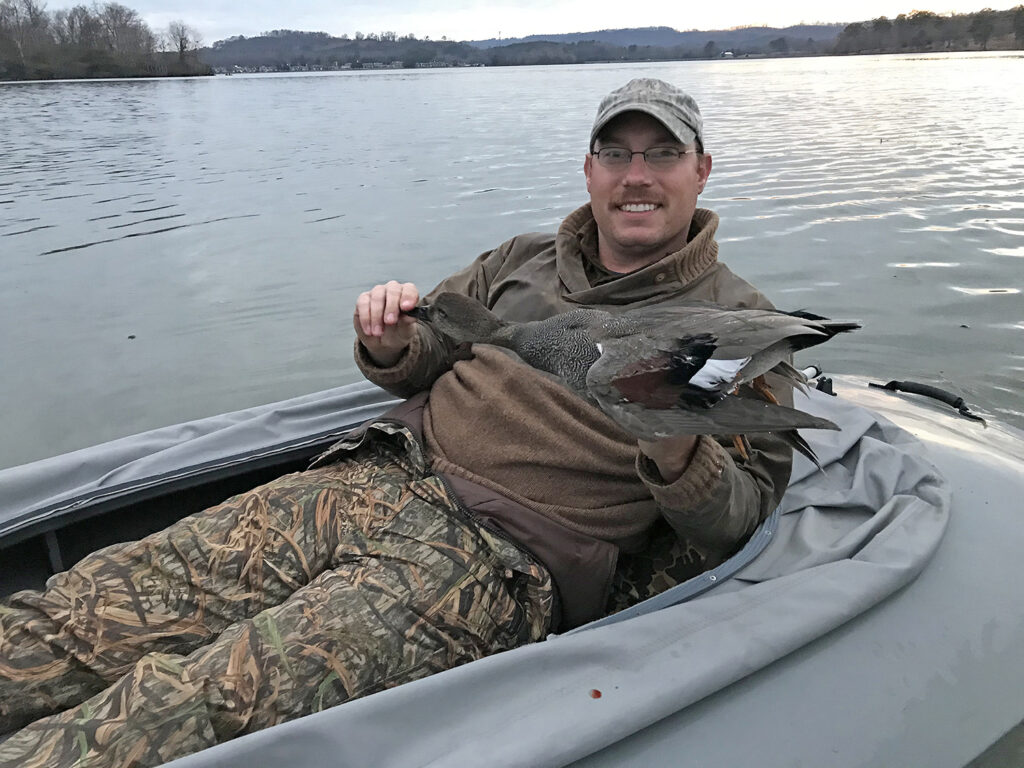
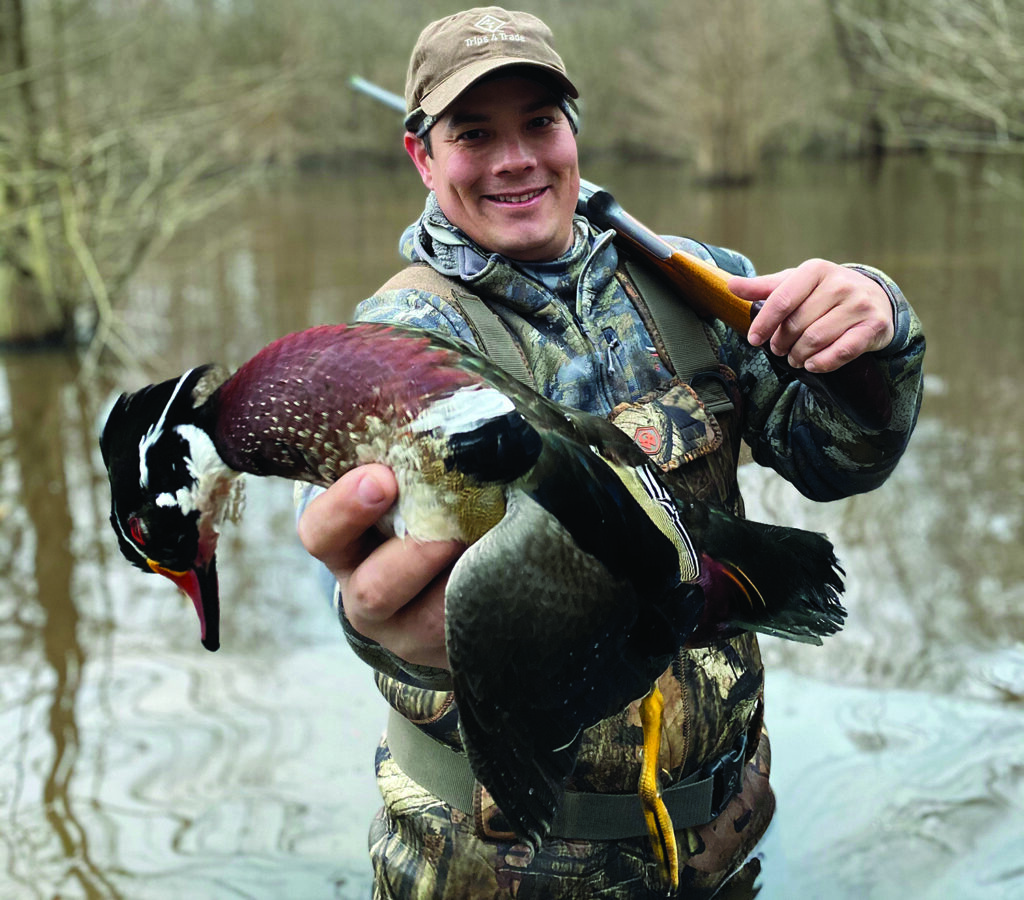
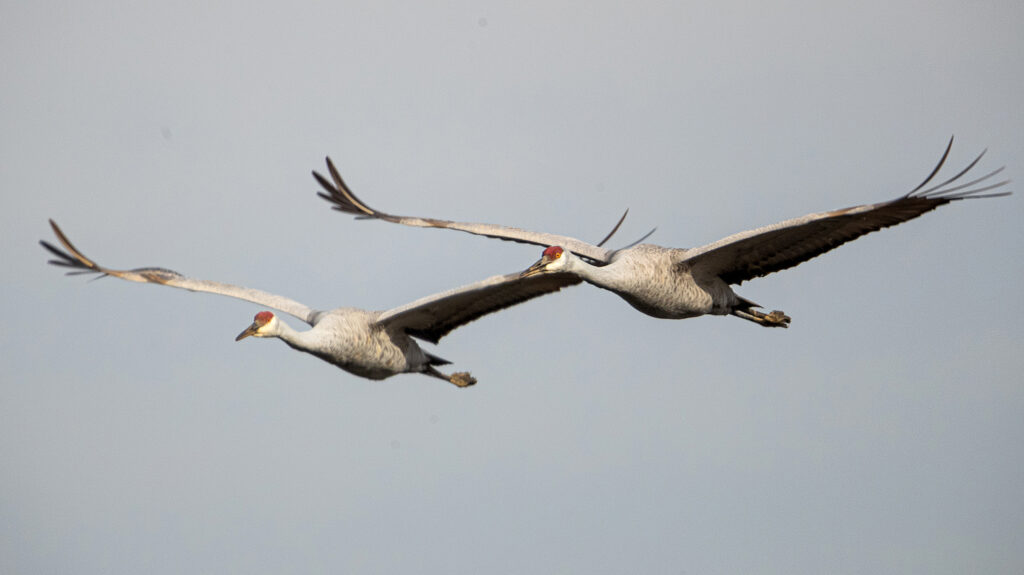
By David Rainer, Alabama Department of Conservation and Natural Resources
For the first time since 2019, the U.S. Fish and Wildlife Service (USFWS) was able to conduct the waterfowl breeding population survey, and the results were mixed. Overall waterfowl numbers in 2022 were down from the 2019 count, but the number of breeding ponds observed in 2022 was up 9%.
Seth Maddox, Migratory Bird Coordinator for the Alabama Department of Conservation and Natural Resources’ (ADCNR) Wildlife and Freshwater Fisheries (WFF) Division, said the numbers were about what he expected.
“I’m not really surprised,” Maddox said. “It had been dry the previous year (2021) on the prairies, so there was a lot less water available for breeding. That would drive the population of a lot of these species down from the 2019 numbers. Most of it is habitat related.”
The overall estimate for 2022 was 34.2 million ducks, compared to 38.89 million in 2019. Numbers of mallards, considered the keystone duck species, declined 23% compared to 2019 numbers, down 9% from the long-term average. Gadwall numbers were down 18%, but they are still 30% above their long-term average. American wigeon was down 25%, 19% below the long-term average, and northern pintails were down 21%, 54% below their long-term average.
The pintail count of 1.78 million ducks is the number that concerns Maddox the most.
“The northern pintail is on a pretty precipitous decline,” he said. “We’re actually within 30,000 birds of closing the season down. That’s all tied to habitat on the prairies. They’re kind of a niche species. They like to nest in crop fields, and a lot of their nests get destroyed by agricultural implements when they are working those fields. Historically, they’ve nested in the short-grass prairies, but a lot of that short grass has been turned into agriculture, and the birds are not dealing very well with the transition to the new landscape up there. It is concerning. I expect that within the next couple of years we’ll see a closed season if there’s no change.”
It’s not all doom and gloom for waterfowl populations, however, because several species are doing well.
“A few species are up,” Maddox said. “Redheads are up. Blue-winged teal are way up, and their population continues to grow. Early teal season should be good. The count doesn’t tell the whole story because the habitat has now rebounded. So, we had a really good year of breeding this summer. All the counts were taken before nesting and breeding occurred. We should, based on the habitat conditions this year, have had a really good hatch, and we should have a good fall flight.”
The early teal season opened on September 10 and runs through September 25 with a six-bird daily bag limit. Hunting is from one-half hour before sunrise to sunset.
In the latest survey, blue-winged teal numbers increased 19% and are 27% above the long-term average. Redhead numbers were up 35% from 2019 and 36% over the long-term average.
“Most species are doing pretty good over the long term,” said Maddox, who recently attended a Mississippi Flyway Council meeting in Orange Beach, Alabama. “It doesn’t really concern me that much that we had a one-off incident of poor habitat conditions.
“What happens is those prairie potholes need to regenerate,” he said. “It’s a good thing that they dry out every once in a while. You get sunlight to the soil. The seeds in the soil can grow and put abundant vegetation back in those potholes and increase their food source for nesting and brood-rearing. It’s a good thing to have a reset, and we have good conditions this year. The rain and snow came back to the prairies in the winter and spring, so there’s plenty of water for brood-rearing. The fall flight should be up from what it was. We had a pretty poor season last year because there weren’t many birds in that fall flight, the winter migration South.”
Maddox said the liberal bag limit of six ducks per day will remain in effect for 2022-2023 and 2023-2024. That daily limit may include no more than 4 mallards (no more than 2 of which can be females), 3 wood ducks, 1 mottled duck, 2 black ducks, 2 redhead, 1 pintail, 2 canvasback and 1 scaup. The aggregate bag limit for dark geese (Canada, white-fronted, Brant) is 5 per day, which is the same limit for light geese (snow, blue and Ross’s). Visit www.outdooralabama.com/what-hunt/waterfowl-hunting-alabama and click on the link for the Alabama Waterfowl Hunting Guide for season dates.
“I just got back from the Flyway meeting where we set the frameworks for 2023-2024,” he said. “There are no closed seasons on any of the species. My guess is we could see a closed season on pintails for the 2024-2025 season.”
While the fall flight should be improved, Maddox always cautions that waterfowlers hunting in Alabama may not reap the full benefits of the fall flight.
“We’re at the southern end of the flyway in Alabama,” he said. “No matter how many ducks are on the landscape, we still need cold weather, snow and ice to have good numbers. We’ll always have some ducks, but to get good numbers, we need ice cover north of us.”
Unlike last year when many of the ducks that made it to Alabama had experienced previous hunting seasons, the good conditions in the prairie this past year could bring some less-savvy birds into the state.
“These birds that make their first migration south are kind of naïve to the area and the hunting pressure,” Maddox said. “Typically, those are the birds that get harvested. We typically harvest two young birds to every adult bird. Last year, with the poor fall flight, we saw a reduction in harvest because the birds had been here before and had experienced hunting pressure. The more young birds in the fall flight typically equates to better hunting.”
In other migratory bird news, registration for the sandhill crane season opened on September 7 and runs through 8 a.m. on September 28. Drawn hunters will have until 1 p.m. on October 5 to pass the ID and regulations test and accept their hunting status. The season dates are December 3, 2022, through January 8, 2023, and January 16-31, 2023. The daily bag, season and possession limit is three sandhill cranes per permit holder.
“The sandhill crane season is going really well,” Maddox said. “This will be our fourth season under the experimental season rules from the U.S. Fish and Wildlife Service. At the last flyway meeting, we asked for an operational season. Moving into the future, we’ll have a season in perpetuity as long as the population stays healthy.
“Along with that, starting in the 2023-24 season, we’ll be able to offer more opportunities. We’ll have more permits and tags to give out.”
The sandhill crane hunting zone is limited to North Alabama and encompasses the Tennessee Valley and Weiss Lake to ensure hunters don’t encounter any birds from experimental populations in Mississippi and Florida. Visit www.outdooralabama.com/what-hunt/sandhill-crane-hunting-alabama for more details.
Youth Hunt Dates Announced for Forever Wild Field Trial Area

The State Lands Division of the Alabama Department of Conservation and Natural Resources (ADCNR) announces the youth deer and duck hunt schedules for the M. Barnett Lawley Forever Wild Field Trial Area (FWFTA) in Hale County. The hunts will take place late November 2022 through January 2023. Registration opened September 13 and runs until November 1. Hunters will be selected via a computerized, random drawing after registration closes.
“I am thrilled that we will have an opportunity again this year to introduce youth to the great deer and duck hunting on this Forever Wild property,” said Chris Blankenship, ADCNR Commissioner and Chairman of the Forever Wild Board of Trustees. “Youth hunts like these create great bonding experiences for families and help young hunters become responsible stewards of our natural resources.”
Youth Deer Hunt Dates
- November 19, 23, 30
- December 14, 17, 21, 28
- January 4, 7, 11, 18, 21, 25
Youth Duck Hunt Dates
- December 14, 17, 21, 28
- January 7, 11, 21, 25
To register for a hunt, visit https://publichunts.dcnr.alabama.gov/Public/AvailableHunts during the registration period listed above.
Registration for the FWFTA youth hunts is only available to parents or adults who are at least 21 years old and have a Conservation ID number. A hunting license is not required at the time of registration. However, if selected during the random draw, you must have a valid hunting license to accept the hunt permit. If selected for a hunt, you will receive an email requesting that you validate/accept the permit. Once the permit is accepted, you will receive an email with the hunt details.
To participate in the youth hunts, youth hunters must be age 15 or younger and accompanied by an adult at least 21 years old (or a parent). Adults must have a valid state hunting license and applicable duck stamp, if duck hunting. Hunters must obtain their license and duck stamp (if duck hunting) before the hunt since they will not be available on-site. Licenses are available for purchase at various retailers throughout the state or online at www.outdooralabama.com.
All deer harvested during the FWFTA youth hunts must be reported via Alabama’s Game Check system. Hunters have 48 hours to Game Check their harvest through the Outdoor AL mobile app or online at www.outdooralabama.com.
In addition to being required when registering for the FWFTA youth hunts, a Conservation ID number is the fastest and easiest way to report a deer or turkey harvest. This number is unique to each hunter and can also be used to purchase future licenses, obtain Harvest Information Program (HIP) permits, register for Special Opportunity Area hunts and more. For information about how to obtain a Conservation ID number, visit www.outdooralabama.com/hunting.
For more information about the hunt details or registration process, call Brae Buckner with the ADCNR State Lands Division at (334) 868-1684, or email [email protected].
The M. Barnett Lawley Forever Wild Field Trial Area consists of 4,300 acres in Hale County and is managed as a nature preserve and recreation area. In addition to developing a sporting dog test ground and a youth hunting program, the ADCNR State Lands Division is currently restoring the tract’s native prairie grasslands and managing its numerous ponds for public fishing events.
ADCNR promotes wise stewardship, management and enjoyment of Alabama’s natural resources through four divisions: Marine Resources, State Lands, State Parks, and Wildlife and Freshwater Fisheries. Learn more at www.outdooralabama.com.
Indian Meal Moth: A Pesky Pantry Pest
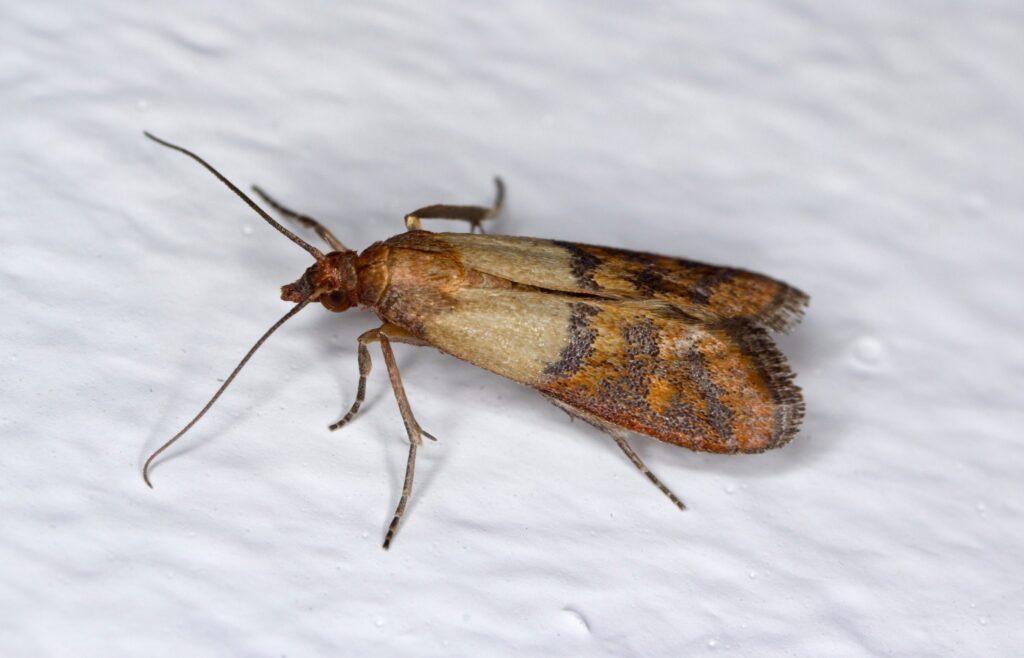
By Cole Sikes
AUBURN UNIVERSITY, Ala. – Fall is one of the most important seasons to inspect your home for pesky pantry pests. An Alabama Cooperative Extension System entomologist urges everyone to be on the lookout for the common Indian meal moth.
Identification
Plodia interpunctella, also known as the Indian meal moth, is a household food pest. These moths get their name from their initial discovery in the United States after feeding on Indian corn, also referred to as maize. Their primary food source are grains and powdered products which are often found in food storage locations.
Adult moths can be identified by folded forewings containing three black stripes. Between each stripe is a brownish-red color that extends to the head. A fully-grown Indian meal moth can reach 12 to 13 millimeters in length.
Life Stages and Habitat
A female moth can lay up to 400 eggs in a lifetime. The moths will lay eggs on food sources such as grains, cereal, dog food and other stored foods.
“Infestations are year-round but are more common in the fall and winter when larger amounts of food are stored indoors,” said Xing Ping Hu, an Alabama Extension entomologist.
After about seven days, the eggs hatch and the larvae will begin feeding on the source. Adults, however, do not feed on these grains. Signs of an Indian meal moth infestation are most commonly noticed after adults begin flying around homes or finding webbing in a stored food product. You may also find small pale-colored caterpillars
Hu said infestation inside homes can start from purchased food packages or outside populations.
“In neighborhoods with mature, nut-bearing trees, the moths can work their way indoors by first finding bird seed or pet food stored in a garage where the garage door remains open for extended periods,” Hu said. “Additionally, the moths are attracted to light and will self-spread from the pantry to any places with other foods.”
Moth Control
At full maturity, these moths live no more than 25 days. However, people don’t need to consider waiting for Indian meal moths to die off as a control method.
First things first, the best control method is prevention. To prevent Indian meal moths, remove the source of the infestation. This includes discarding infested products, bagged foods and any other identified sources.
The second hurdle is a deep cleaning process. Hu recommends using a vacuum to clean the corners of shelving, pantries and cabinets to eliminate any possible eggs. You may also consider utilizing a toothpick or a needle to clean out crevices, cracks and little pegs of adjustable shelving. Sanitizing pantries or other infested food storage areas is a necessity when treating Indian meal moths. These sites are notorious for collecting moth eggs, larval webs and pupal cocoons. Clean shelves and pantries with a wet cloth soaked in soapy water.
A final recommended step is to caulk and seal crevices and cracks inside the shelving.
More Information
Home pests can be difficult and frustrating to prevent and control. With proper education about these foes, everyone can be proactive in their home defense efforts. For more information about other home pests and how to prevent them, visit the Alabama Extension website at www.aces.edu.

Gopher Tortoise Conservation Gets a Boost in South Alabama
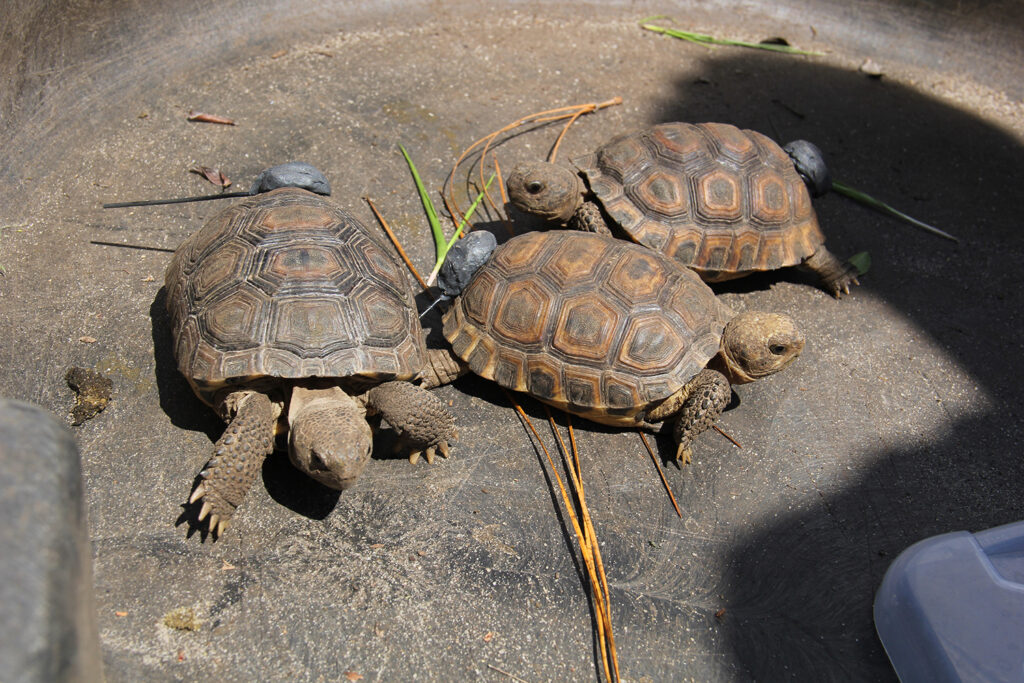
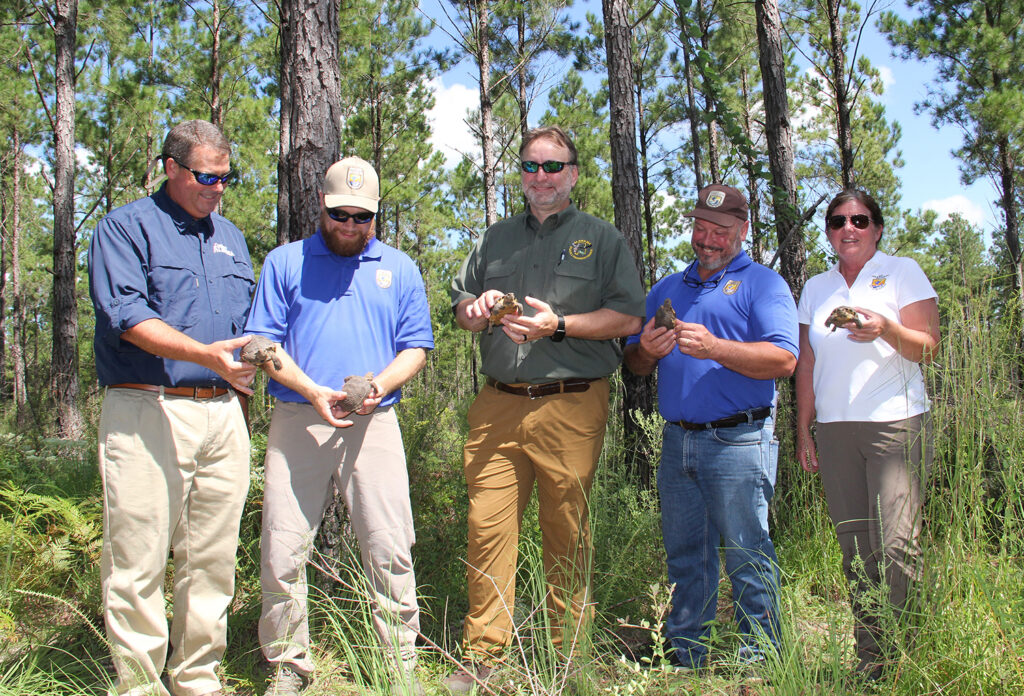
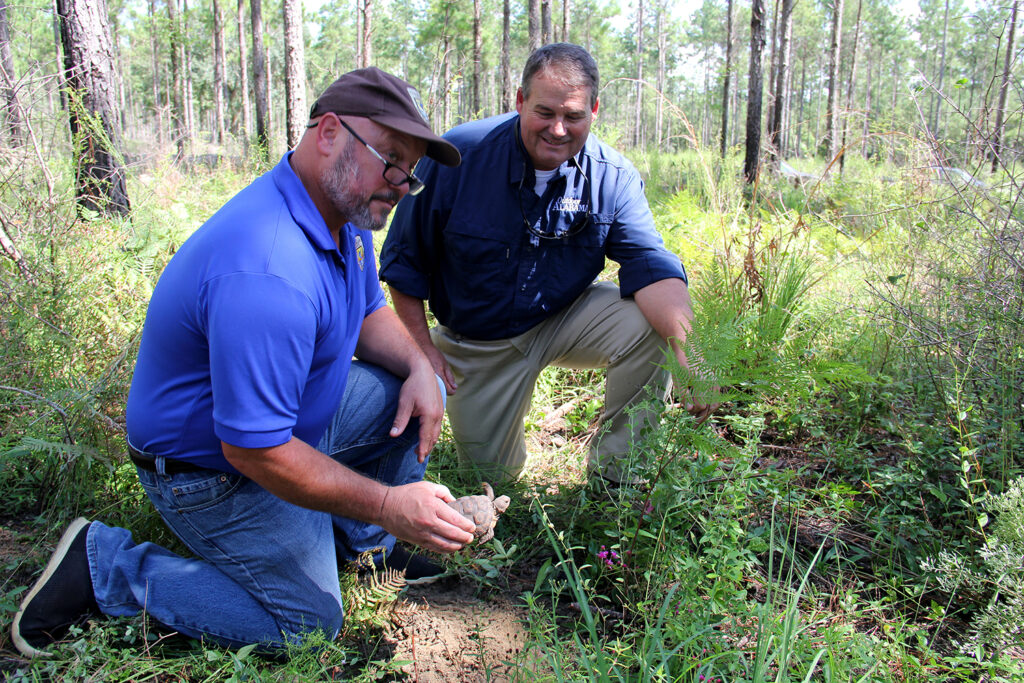
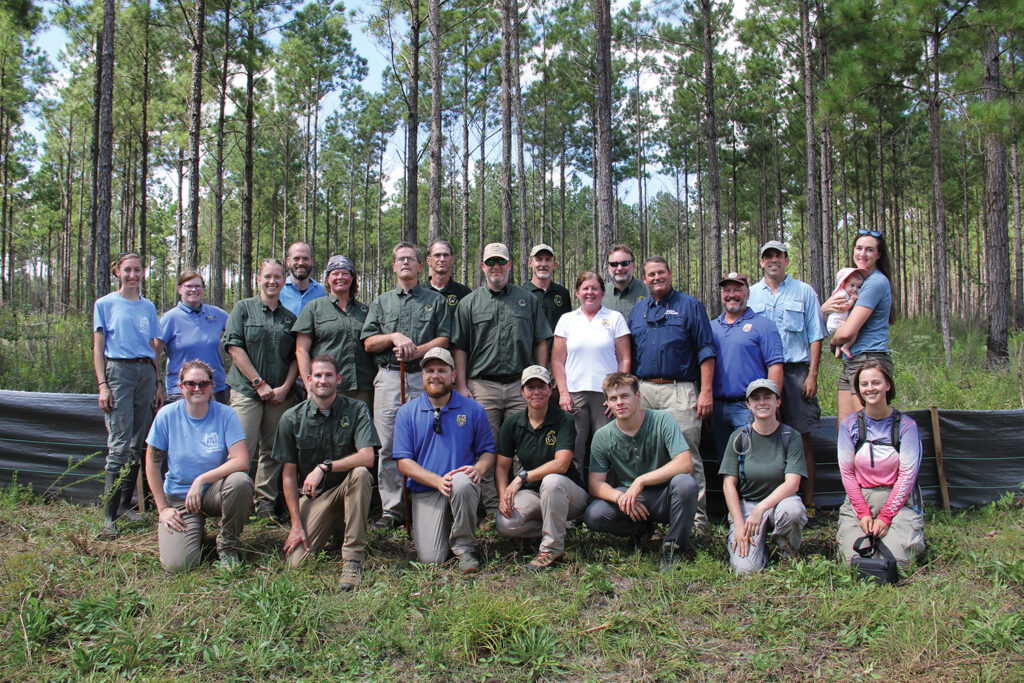
ADCNR, USFWS, Eckerd College and Birmingham Zoo partnered to release 98 young gopher tortoises into the Geneva State Forest WMA. The tortoises will be monitored as part of an ongoing conservation project.
Gopher tortoise conservation reached a new level recently when the Alabama Department of Conservation and Natural Resources (ADCNR) teamed with the U.S. Fish and Wildlife Service (USFWS), Eckerd College and Birmingham Zoo to release 98 young tortoises into the Geneva State Forest Wildlife Management Area (WMA) in Covington County.
The gopher tortoise is considered a keystone species, which impacts about 365 species of amphibians, reptiles, birds, mammals and invertebrates in the sandy-soil habitat across their southeastern range.
Jeff Goessling, an assistant professor at Eckerd College in St. Petersburg, Florida, who is on the forefront of the tortoise conservation efforts, said the gopher tortoise burrow is the key to the species.
“This is an important animal for a lot of species,” Goessling said. “It’s the burrow that has that function. They spend about 98 percent of their life in that burrow.”
The Geneva State Forest WMA gopher tortoise project, led by Goessling, is funded through the Cooperative Endangered Species Conservation Fund (Section 6 program) with USFWS, which provides funds for conservation efforts for listed, at-risk and endangered species on non-federal land.
Amy Silvano, Assistant Chief of Wildlife for ADCNR’s Wildlife and Freshwater Fisheries (WFF) Division, thanked Eckerd College and the Birmingham Zoo for their contributions to the project.
“Both of these entities have stepped up to do the research and raise the headstart (hatchlings) tortoises that we released,” Silvano said. “And I also want to thank Dr. Craig Guyer for all his work on this project and his continued dedication towards gopher tortoise conservation in Alabama.”
WFF staff, Eckerd College representatives and Birmingham Zoo staff constructed starter burrows at the WMA in preparation for the release.
Conservation Commissioner Chris Blankenship, WFF Director Chuck Sykes, USFWS Southeast Region Director Leopoldo “Leo” Miranda-Castro, USFWS Alabama Section 6 Coordinator Shannon Holbrook, and John Tupy, Gopher Tortoise Lead for the federally listed range out of the USFWS Hattiesburg office in Mississippi, participated in the tortoise release.
Goessling said pioneering work done by Guyer, professor emeritus at Auburn University, revealed that population density of gopher tortoises is an integral part of a viable population of the animals.
“When the state acquired this land, we started to think about how to conserve gopher tortoises here,” Goessling said. “It became clear that, while the number of tortoises here is probably viable, the density was far below what would normally be viable for a species in a habitat like this – open, high pines, xeric (low moisture) soils and maintained with prescribed fire. Craig had an idea a decade ago of how to intensively manage populations that were large enough but not dense enough with tortoises scattered in numerous small groups across large areas.
“We said what if we take a site like this with 100 to 200 adult gopher tortoises and intensively manage them. We could likely produce a population that has a high survivability for the foreseeable future.”
It took about two years for researchers to document the tortoises across the WMA. A 40-acre pen was constructed, and numerous tortoises from the 9,000-acre WMA were relocated to the pen.
“We thought this was a cool project, but 100 tortoises is not where we wanted to be,” Goessling said. “We wanted to get more if possible.”
The researchers then focused on females producing eggs, which are buried in the soft soil on the apron of the tortoise burrow. Eggs from six nests were collected the first year, followed by another 11 nests last year. The eggs went to Goessling’s lab at Eckerd College to hatch, and the young tortoises were then raised at both Goessling’s lab and the Birmingham Zoo.
The tortoises released at Geneva were 1-year-olds and 2-year-olds. Goessling said those tortoises exhibited a much faster growth rate than those of wild tortoises.
“Our biggest 2-year-old is about the size of a 10-year-old in the wild,” he said. “Our headstart tortoises, under captive conditions, have blown the growth rate out of the water for tortoises in the wild from either Alabama or Florida. Alabama tortoises for some unknown reason are really small as adults, and we are excited to see that their young were able to grow so fast.
“The work done by the state here has been great. We can raise tortoises in the lab, but at the end of the day, we can’t be tortoises for them. They need to be wild tortoises out here in open canopy, pine sand hills.”
Some of the young tortoises were released into a smaller pen, and the others were released on an adjacent site with no restrictions of movement.
Goessling said the next step will be monitoring the animals with radio transmitters affixed to one of the rear scutes (shell plates) on 90 tortoises, 30 of which are the animals head-started in captivity. Goessling said studies indicate that a population density of one female per acre is optimum because females are territorial.
“We can identify home range and spatial activity so that, when this pen goes down, we can find out if they’re staying here and are successful in building this core population,” he said. “Or, say, five years from now, we can find out if they are not maintaining fidelity. Long-term monitoring is the next step.”
Guyer applauded the recent efforts to enhance the gopher tortoise populations in Alabama.
“In my opinion, our state has taken a leading role in gopher tortoise conservation with interactions with the Fish and Wildlife Service and also the Gopher Tortoise Council,” Guyer said. “I’ve been studying gopher tortoises down here for the last 40 years, starting in the Conecuh National Forest and this new area down here. The data that are being used to make these life and death decisions about gopher tortoises, a bunch of it is coming from Alabama.
“Managing animals in Alabama is a lot different from the peninsula of Florida. Those studies in Conecuh indicate a smaller number of animals on a smaller land area, say 10 to 20 acres with 20 animals, can become stable or grow. But they have to be managed. We have to convince managers that if they’re doing prescribed fire on three-year intervals, they’re wasting their time. It has to be every two years. As long as we can maximize our efforts on these small areas with high intensity management, these smaller pockets are going to be viable. Most of this data is coming on the state level. Our hats should be doffed to the folks at the state level who have positioned us quite effectively in these leadership roles.”
WFF’s Ericha Nix, a non-game biologist who leads the gopher tortoise project team, said gopher tortoises have been petitioned for listing as threatened or endangered under USFWS guidelines.
“We looked at our lands to be proactive and create gopher tortoise populations,” Nix said. “We had surveys done on our public lands and found that some of our lands have 100 to 200 tortoises, but they don’t have the density needed to be viable.
“The Alabama Forestry Commission and its state forest next door does have a viable population of about 500 animals, but they have been managing for decades with prescribed fire. We found an area with suitable habitat with canopy and soils, which is how we got started with this project.”
Nix said WFF will continue to search for other sites to enhance the gopher tortoise habitat and possibly keep the animals off any imperiled lists.
“The more viable populations we create, the more we can prove to the Fish and Wildlife Service that we do have tortoises in viable populations, and we also take that regulatory burden off of private landowners,” she said. “We’re hoping we can show this as a demonstration area and show our industrial partners that they can take a 250-acre area and manage it for tortoises. We’re currently working with the (Alabama) Department of Corrections to assist in relocating tortoises from their project areas. We have developers reaching out to us with tortoises. It helps them and it helps us by building viable populations.
“For gopher tortoises, habitat loss continues to be our number one issue, either through development or the solar (panel) farms that are hitting us really hard right now. Every tortoise counts in Alabama. We do not have the animals that they do in Florida.”
Silvano said gopher tortoises aren’t the only species to benefit from the intense management practices on the home range of the tortoises.
“One of the other benefits for this particular site is we manage it both for game and non-game species,” Silvano said. “This is a good example of how, when you manage the landscape for ecosystem function, it’s going to be beneficial for all critters, not just game. We want the public to know that when we manage the habitat, it benefits all species.”
Zach Hayes, a wildlife biologist aide at Geneva State Forest WMA, said after ADCNR purchased the property in 2014, intense work was done to improve the habitat through thinning the pines and performing prescribed fires.
“We had to open this place up extensively,” Hayes said. “We couldn’t plant our wildlife openings because of all the gopher tortoise burrows in those areas. We needed more open property for the tortoises to utilize, so we opened the canopy to get some light on the forest floor. With prescribed fire, we were able to reclaim our wildlife openings and plant food sources for the other wildlife to use.
“I love being a part of this. What’s good for gopher tortoises is good for turkey, quail and deer.”
Down to Earth: Alabama farmers grow more while using less
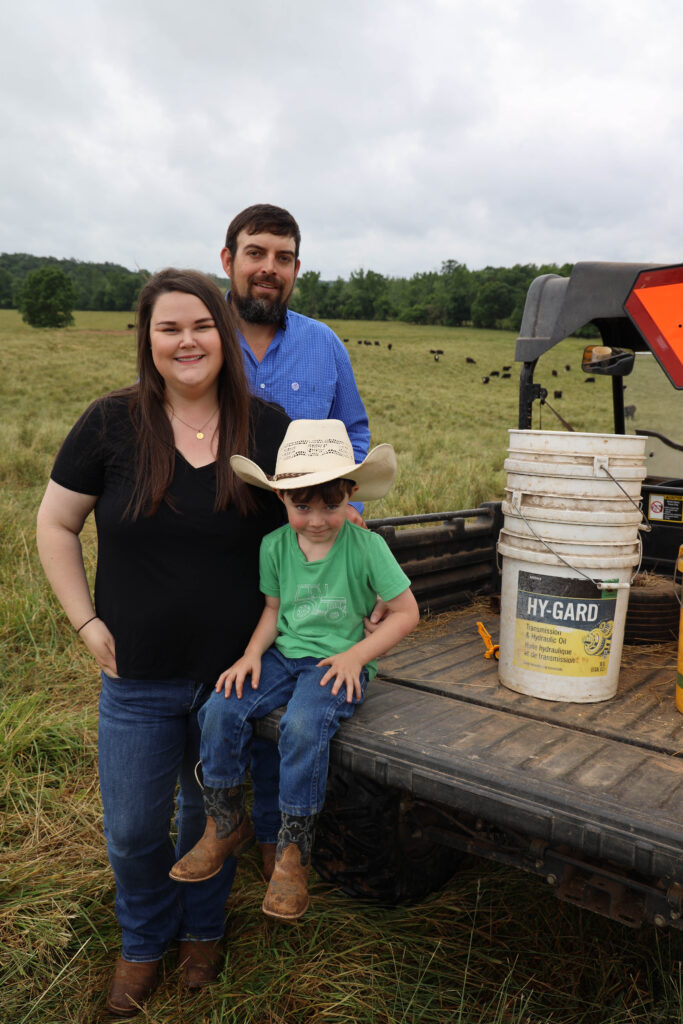
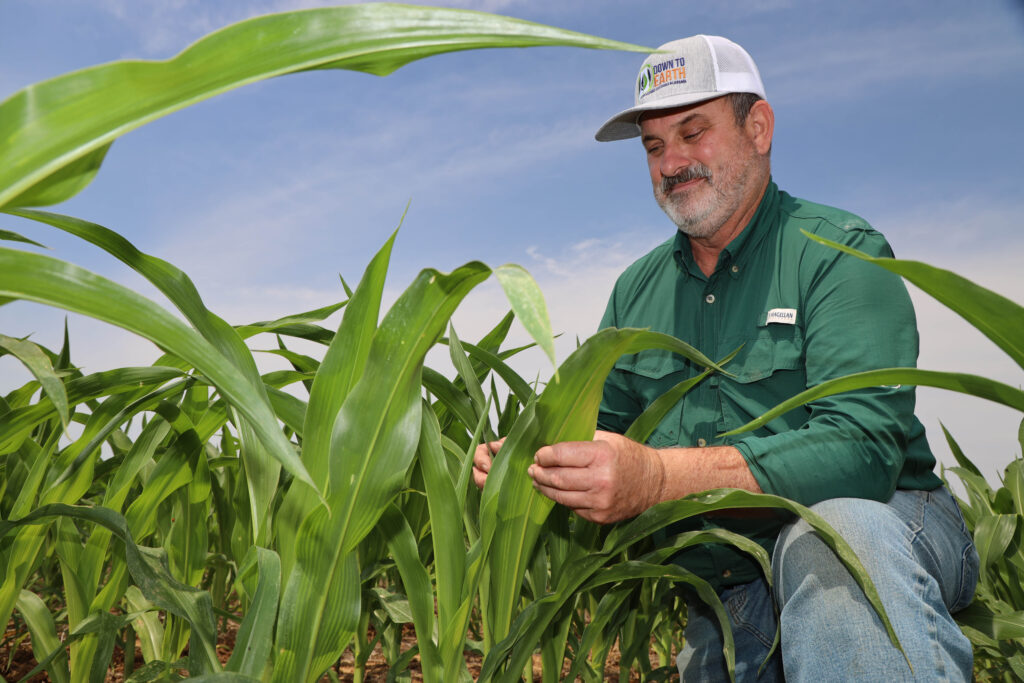
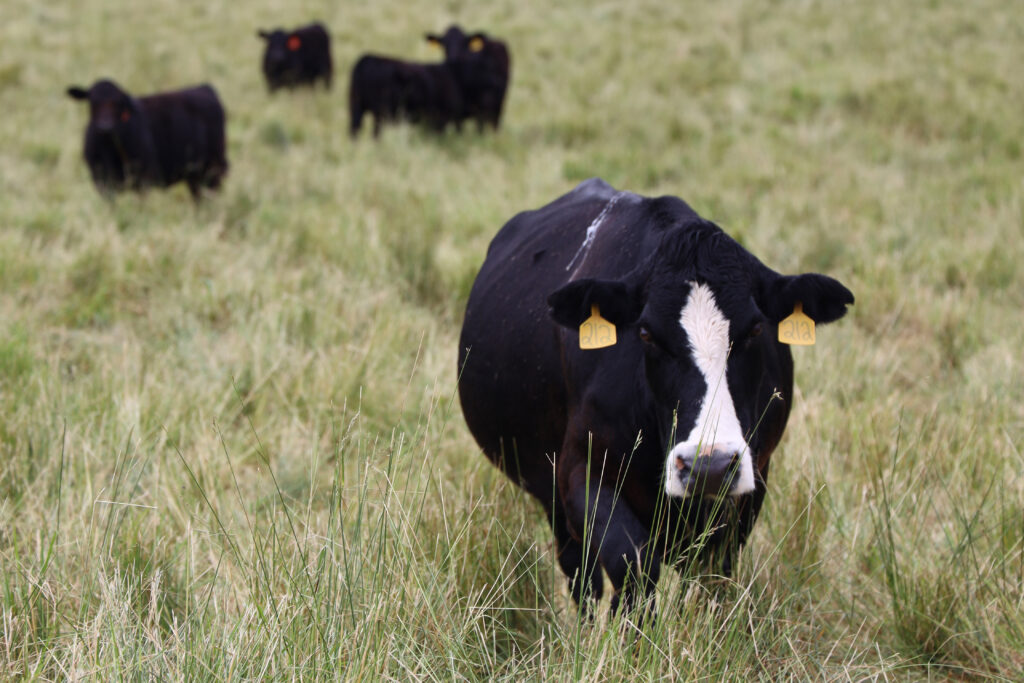
Growing more. Using less. For farmers, it’s just that simple.
“A lot of data is out there to help us make decisions to improve factors we can control on the farm,” said Jordyn Upchurch, who raises poultry, cattle and hay with husband Chris in Clay County.
For years, farmers and industry experts have analyzed that data to select superior traits in plants and animals. That’s created innately efficient crops and livestock that glean higher yields with fewer inputs.
Take the poultry industry. Today, it takes 1.82 pounds of feed to produce 1 pound of chicken. Fifty years ago, that required 2.4 pounds of feed, per the National Chicken Council. Chickens are humanely and efficiently grown in houses, which saves water and energy — a boon in Alabama’s hot climate.
A low feed conversion rate and high average daily gains help farmers like the Upchurches raise more flocks, providing more protein for a growing population.
The U.S. is a global leader in beef production efficiency, too, producing 18% of the world’s beef with only 6% of the world’s cattle, according to the Beef Checkoff.
Thanks to improved genetics, nutrition and herd management, U.S. farmers produce more beef per animal. Today, farmers produce the same amount of beef with one-third fewer cattle than in 1977.
Farmers also pinpoint cattle breeds ideal for their farms and consider heat tolerance, mothering ability, weaning weights, yields and even what grass the animals can digest.
“We pick them for what works in our environment,” said Chris, who raises SimAngus cattle. “We have a lot of fescue grass (which has a seasonal toxicity), so we need animals that work in a fescue environment.”
Jordyn added, “And that makes our cattle more efficient. It’s hard to change what kind of grass grows on your place, but you can change your genetics. It’s almost like a process of elimination.”
Other than delicious and nutritious steaks, roasts and burgers, there are hundreds of uses for cattle byproducts — asphalt, ink, dyes, adhesives, plastics and more.
That waste-not-want-not outlook links row crop and livestock farmers. More than 95% of poultry bedding material is recycled and reused to fertilize hayfields or land for row crops, like cotton. Cotton lint, or fiber, is then made into clothes, towels and dollar bills. Meanwhile, cottonseed is used for oil and cattle feed because it’s rich in fiber, protein and fat.
Brian Glenn and his brother, Don, raise row crops in Lawrence and Morgan counties. They capitalize on biotechnology, such as genetic modification, to reduce costly inputs and improve weed management. Roughly 90% of corn, cotton and soybeans grown in the U.S. have been improved through biotechnology.
“Genetics have changed so much,” Brian said. “The potential is in the seed.”
Twenty-five years ago, the Glenns shot for a yield of 130 bushels per acre on corn. Today, they’re able to harvest 200 bushels an acre. Tools like variable rate technology help. Variable rate farming requires machinery that changes the rate at which it applies fertilizer, seed and other inputs across a field based on need.
“We are spoon-feeding plants,” Brian said. “We take last year’s yield map (or an average of several years) and calculate the removal of ingredients a plant will need to grow. That’s what we base our rates on.”
Data banks and a penchant for sustainable production helped farmers nearly triple production over the last 70 years, while inputs like land, fertilizer and energy have remained stable, according to the American Farm Bureau Federation.
In 1990, farmers would have needed almost 100 million additional acres to harvest the same amount of corn, cotton, rice, soybeans and wheat produced in 2018. That’s more than the land area of Montana.
As Brian looks across fields of non-irrigated, no-till corn and soybeans, he said he’s proud of the strides farmers continually make to efficiently use — and protect — the land.
“My goal is to leave the planet better than we found it, to make a living and ensure a wholesome, quality food crop,” Brian said.
Down to Earth partners include the Alabama Agribusiness Council, Alabama Association of RC&D Councils, Alabama Cattlemen’s Association, Alabama Cooperative Extension System, Alabama Department of Agriculture & Industries, Alabama Farmers Federation, Alabama Forestry commission, Alabama Poultry & Egg Association and Sweet Grown Alabama.
Interact with @DowntoEarthAL on Facebook, Instagram and Twitter, and visit www.DowntoEarthAL.com for more information.
Down To Earth Definitions
Feed conversion rate: A ratio of the amount of feed required to the amount of weight gained by a farm animal
Average daily gains: Amount of weight a farm animal gains in a 24-hour period
Inputs: Farm business expenses, such as fertilizer or feed
SimAngus: A mix breed of Simmental and Angus cattle
Preparing for the fall and winter hunting season
*Correction: A previous version stated “planting fields by broadcasting seed for the sole purpose of attracting and hunting doves is not prohibited.” That statement is incorrect. The article now correctly reflects dove hunting law. Planting fields by broadcasting seed for the sole purpose of attracting and hunting doves is prohibited.
By Tanner Hood
AUBURN UNIVERSITY, Ala. – Fall is almost here and avid game hunters are looking forward to a season of sitting by the dove field or in the deer stand. Doves are in season, and it won’t be long before deer hunters can hit the woods with bows and firearms. An Alabama Cooperative Extension System wildlife expert says it is important to properly prepare before setting out on your first hunt.
Dove season is a favorite of many Alabama hunters. For most, it is less labor intensive and time consuming than other types of hunting. The two dove game bird species in Alabama are the mourning and white-winged doves. Mourning dove is the most common during hunting season.
“Dove diets consist heavily of seeds, which makes agricultural fields and food plots attractive for feeding locations,” said Bence Carter, an Alabama Extension regional agent.
Many dove enthusiasts hunt over harvested soybeans, corn, peanuts and other small grains or planted food plots. However, it is illegal to trespass onto another person’s land, especially for hunting. Always ask for permission to use any agricultural lands for dove hunting from the appropriate landowner before planning a hunt.
In preparation for dove season, Carter said to scout ahead to make sure doves are present on the fields. It is also important for hunters to make sure their firearm is clean and ready for use. Hunters should also practice using their firearms with sporting clays.
“Planting fields by broadcasting seed for the sole purpose of attracting and hunting doves is not prohibited,” Carter said.
Deer season is another popular Alabama pastime and is a natural source of food for many families. Mark Smith, an Auburn University professor of forestry and wildlife sciences, said there are several things hunters can do to begin preparing for the upcoming deer season.
“Hunters should take their rifles out to the range, begin planting food plots and make sure their hunting areas are ready and accessible,” Smith said.
White-tailed deer is the only deer species in Alabama. Smith, who is also an Extension wildlife expert, said one of the most important things for hunters to do this year is to watch out for deer displaying symptoms of Chronic Wasting Disease (CWD).
“Common symptoms of CWD include weight loss over time, emaciation, lack of wariness, difficulty moving or standing, lowering of the head, tremors, listlessness and excessive salivation and urination,” Smith said. “However, perfectly healthy-looking deer can be infected because it takes time for symptoms to develop.”
Hunters should always practice firearm safety before and during hunting seasons. Smith and Carter both said that visiting a shooting range and becoming acquainted with your firearm is vitally important.
Hunters should conduct target practice and make sure their firearms are clean and safe for hunting. Also, discuss shooting etiquette with other hunters in a group to effectively ensure no one is injured by firearms during a hunt.
Each hunting season has laws such as bag limits, necessary licenses, legal shooting hours and season opening and closing dates. In Alabama, dove season is divided into multiple zones that begin on different days. Deer season has different periods allotted for the use of certain firearm types and exclusively harvesting does or bucks.
“All hunters should follow the rules, regulations and bag limits to have a good and successful hunting season,” Carter said.
To view these laws, regulations and dates, visit the Alabama Department of Conservation and Natural Resources (ADCNR) website at www.outdooralabama.com.
Continue to prepare yourself and others for the first hunt of the 2022 hunting season. More information regarding hunting seasons, firearm safety and preparation is available at www.aces.edu.
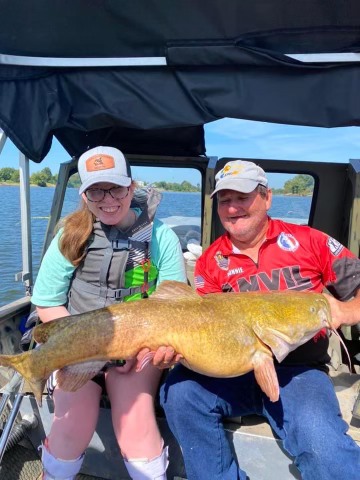
Send us your outdoors photos! Not only will you get in the paper, but also on our award winning outdoors page on recordjournal.net. We post new stories every week. Email them to [email protected]. Photo submitted by Claire Smith, Livingston Lines.
Cicada killers: not your average wasp
By Cole Sikes
Eastern cicada killers, scientifically known as Sphecius speciosus, is the largest species of wasp in Alabama. These insects are also referred to as cicada hawks and known for preying on – you guessed it – cicadas.
Their size, transparent amber color wings and black abdomens featuring three uneven and jagged yellow bands are distinct characteristics of cicada killer wasps. At a quick glance they are easily mistaken for hornets. These wasps can measure from one to a whopping two inches in length.
“Cicada killers are solitary digger wasps, meaning they will build nests in the ground and hunt prey to feed their young,” said Xing Ping Hu, Alabama Cooperative Extension System entomologist. “Adults will typically emerge in summer and die off in October or even late September.”
Females, which are typically larger than males, are commonly seen skimming around lawns and trees seeking burrow sites and hunting cicadas. Their burrows are characteristic of soil piles accumulated around nest entrances.
Nests are typically made in areas with full sun exposure and little vegetation. These homes can reach depths of 10 to 20 inches and contain up to 16 individual chambers. Be sure to monitor any window boxes, flower beds or planters as these insects may nest in these areas.
Adults feed on flower nectar and drink tree sap. The menu of choice for cicada killer larvae are dog-day cicadas, which feed on deciduous trees. This means that the cicada hawk is a beneficial insect by regulating populations of cicadas.
They attack their prey in-flight in mid-air by delivering a sting. The cicada is then immobilized and carried back to the burrow cells. The female lays one egg on the paralyzed cicada and seals the cell. When the egg hatches, the larvae will slowly consume their meal.
It may be hard to believe that a wasp of such size rarely stings humans. In fact, male cicada killers do not have the ability to sting at all. Females do the hunting and have the potential to deliver a blow.
“Though they look terrible, cicada killers are not aggressive and rarely sting,” Hu said.
There are not many options when it comes to controlling populations of cicada hawks. One of the best techniques is to mitigate habitat.
Since this species of wasp prefers little vegetation and sunlight, keep the lawn around your home properly fertilized. This will increase density, taking away ideal locations for wasp digging sites.
Chemical application is technically on the table as a control method. However, since the wasp nest in ground holes, spraying can be labor-intensive. There is also no guarantee that the wasps won’t return each year if the habitat remains ideal for cicada killers. Hu said as always, homeowners should follow the appropriate directions on any insecticide product.
Cicada killer wasps will not hurt humans if they’re left alone. Take the necessary measures to protect your property from being their future home.
For more information on cicada hawks and many other flying insect species, visit the Alabama Extension website at www.aces.edu.
Registration for Sandhill Crane Season Opens September 7
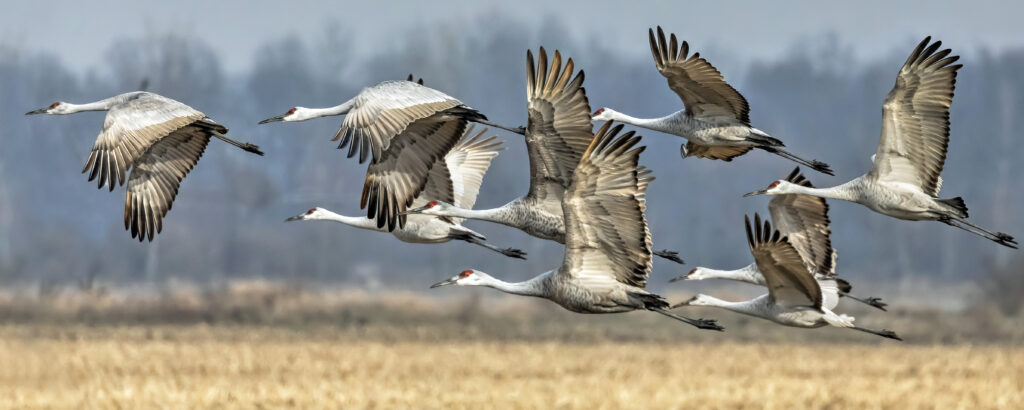
Registration for Sandhill Crane Season Opens September 7
Alabama’s sandhill crane season returns for 2022-2023 with 400 permit holders having the opportunity to hunt sandhill cranes in north Alabama. Registration for the limited quota permits opens on September 7, 2022, at 8 a.m. The 2022-2023 season is split in two segments. The first segment runs from December 3 to January 8. The second segment runs from January 16-31.
Registration is limited to Alabama residents ages 16 or older or Alabama lifetime hunting license holders. Applicants must also have their regular hunting license and a lifetime or annual state duck stamp to register. Exempt resident landowners or residents over 65 must obtain a free Game Check H.E.L.P. number to apply. A $10 registration fee applies for everyone.
If selected through a computerized drawing, hunters must then complete an online test that includes species identification and regulations. After passing the test, The Wildlife and Freshwater Fisheries (WFF) Division of the Alabama Department of Conservation and Natural Resources (ADCNR) will issue the permit and tags. In addition to a hunting license and state duck stamp, selected hunters must also obtain a federal duck stamp, a Harvest Information Program license, and a Wildlife Management Area (WMA) license, if applicable.
Sandhill crane hunting is restricted to a specified hunt zone in north Alabama. The daily, season and possession limit is three birds per permit. Hunters can harvest all three birds in one day if they choose. Both state and federal wildlife refuges are closed to sandhill crane and waterfowl hunting.
Prior to the 2019-2020 season, the last sandhill crane hunting season in Alabama was in 1916. Since then, conservation efforts focused on improving habitat have helped sandhill crane numbers rebound more than 500% over the past 40 years. Those numbers have continued to increase as multiple states opened sandhill crane hunting seasons.
WFF’s Wildlife Section is primarily funded through a portion of hunting license sales that is matched on a three-to-one basis by the U.S. Fish and Wildlife Service through the federal Pittman-Robertson Act. Alabama State Duck Stamp sales are also matched through the same process but earmarked by state law to be utilized for wetlands and waterfowl conservation.
Funding from those two revenue sources directly benefit sandhill cranes by providing habitat protection, management and restoration work in the areas of Alabama that cranes utilize as migration routes and wintering habitat. Over the long term, conservation of habitat has played an integral part in the population growth of sandhill cranes.
For more information about the 2022-2023 sandhill crane hunting season, including the hunting zone location, how to register and how the permit holders are selected, visit www.outdooralabama.com/what-hunt/sandhill-crane-hunting-alabama.
ADCNR promotes wise stewardship, management and enjoyment of Alabama’s natural resources through four divisions: Marine Resources, State Lands, State Parks, and Wildlife and Freshwater Fisheries. Learn more at www.outdooralabama.com.
Steve Forehand Installed as Alabama Wildlife Federation President

Steve Forehand, Alexander City, was installed as President of the Alabama Wildlife Federation (AWF) at the organization’s Annual Meeting on August 6, 2022. Steve has served on the AWF Board of Directors since 2007 and brings to AWF a passion and commitment for the conservation of Alabama’s wildlife, related natural resources, and outdoor pursuits.
“Steve has been an outstanding board member and leader. We are fortunate to have someone with his experience, talent, and energy serve as the next President of AWF. He will be an asset to AWF and we are looking forward to a productive year under his guidance.” stated Tim L. Gothard, Executive Director of AWF.
As AWF President, Mr. Forehand serves on the AWF Executive Committee, the AWF Governor’s Conservation Achievement Awards Committee, and a variety of other AWF committees. Throughout his tenure on the AWF Board, he has been a key leader in the success of AWF statewide and growing AWF membership and support in the Alexander City and Lake Martin area in particular.
Mr. Forehand serves as Vice President and General Counsel with Russell Lands. He is a graduate of Auburn University and the Cumberland and University of Alabama Schools of Law. He has also served his community through the years, including service to the Russell Medical Center, Alexander City Schools Education Foundation, Alexander City Board of Education, Alabama Water Resources Commission, Lake Martin Resource Association, Lake Martin Area United Way, and the Alexander City Boys and Girls Club.
Outside of work, Steve enjoys outdoor pursuits including quail and turkey hunting, golf, boating on Lake Martin, and spending time with his family. He and his wife Connie have two children and three grandchildren.
The Alabama Wildlife Federation, established by sportsmen in 1935, is the state’s oldest and largest citizens’ conservation organization. The mission of the Alabama Wildlife Federation, a 501(c) 3 non-profit group supported by membership dues and donations, is to promote conservation and wise use of Alabama’s wildlife and related natural resources as a basis for economic and social prosperity. To learn more about Alabama Wildlife Federation, including membership details, programs, and projects, contact AWF at 1-800-822-WILD or visit www.alabamawildlife.org.
Fresh Fish Dominates in AWF Wild Game Cook-Off State Finals
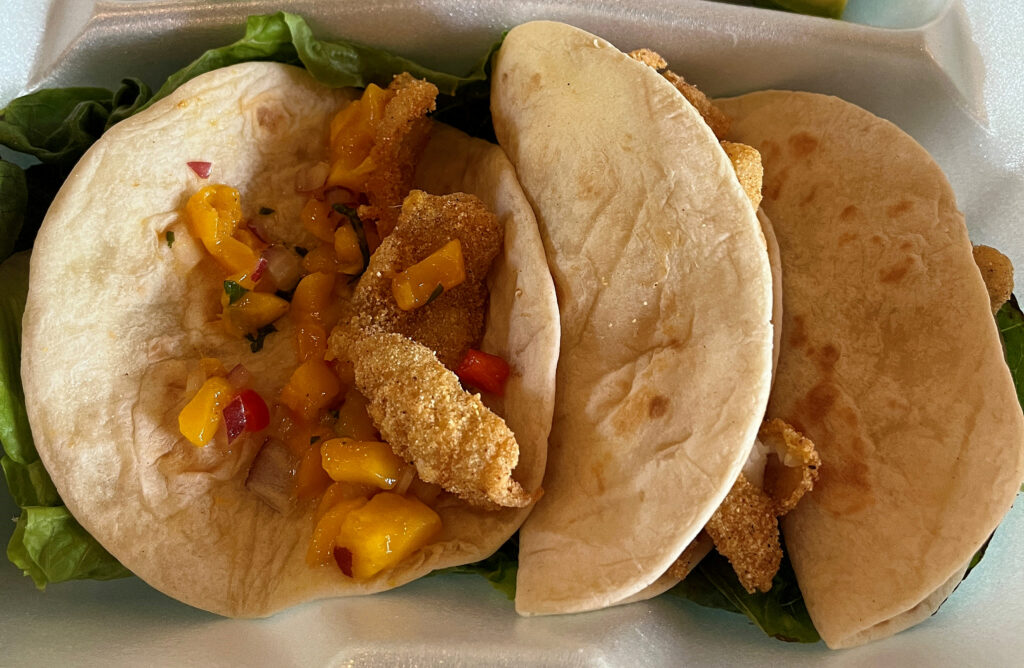
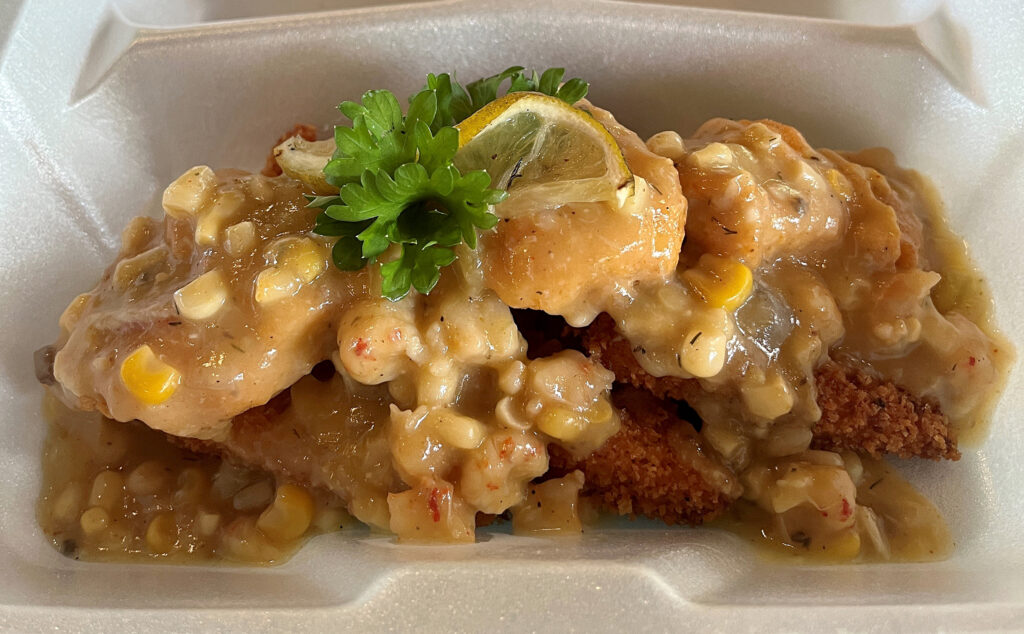

By David Rainer, Alabama Department of Conservation and Natural Resources
Alabama’s abundant freshwater fish took center stage recently at the Alabama Wildlife Federation (AWF) Wild Game Cook-Off State Finals at AWF’s Lanark Pavilion in Millbrook.
Two of the top three recipes used spotted bass as their centerpieces, while a tasty bream dish rounded out the winners.
“AWF’s Wild Game Cook-Offs prominently display that responsible hunters and anglers properly utilize the game and fish that they harvest, and it makes great and healthy table fare,” said AWF Executive Director Tim Gothard. “At the State Finals, the best of the best is on full display.”
Alabama Ag Credit’s Taco Lot team, which created Taco del Lago with spotted bass, was crowned champion among the 10 teams that qualified for the finals by winning their regional events held across the state.
“We used spotted bass caught yesterday (the day before the finals) and cleaned,” said Andrew Harp, head cook on the team from Lake Martin. “They’re fresh. We took a flour tortilla, topped it with shredded cheese and put it on the grill to melt the cheese. We love the grill taste. The base is Conecuh sausage, followed by the fried fish. We use a Zatarain’s fish fry with a little added spice. Then we top that with a custom slaw with green and red cabbage. Then we drizzle Sriracha mayo and cocktail sauce on the top. And we top that off with a lot of love.”
Although the competition was stiff, with a variety of dishes across the wild spectrum – venison, elk, wild hog, catfish and wild turkey – Harp was confident in the team’s dish.
“It was extremely exciting,” Harp said. “It was nice to be validated with a trophy. We didn’t come here to lose.”
Harp’s team had been participating in the Wild Game Cook-Offs for years, preparing dishes made to ensure the spectators didn’t leave the event hungry. The 2022 regional competition was the first time they got serious about the contest.
“At Lake Martin, we decided to enter something fun, and it won,” Harp said. “We entered the same dish in the finals, so that taco is undefeated. Where this recipe starts is the only thing in that taco that really matters – the Lake Martin spotted bass. Let me tell you where you catch them. Right in the mouth.
“The best time to catch spotted bass is in the spring when they’re going to bed. But in August, they’re extremely difficult to catch. But we did catch enough fresh fish the day before the finals. We caught them at night on lights. We use underwater lights, which attract bait fish, and the big fish come down below.”
TACO DEL LAGO
Serving size eight
Two 2-pound spotted bass, filleted (four fillets will make eight pieces of fish)
1 quart buttermilk
Zatarain’s Crispy Cajun Fish Fri
1 gallon peanut oil
8 small flour tortillas
8 ounces Colby Jack cheese
8 pieces Conecuh sausage about 4-5 inches each, butterflied
½ head red cabbage
½ head green cabbage
1 bell pepper, thin-sliced
½ cup sugar
1 tsp. ground black pepper
1 cup plain Greek yogurt
1 tsp. apple cider vinegar
Sriracha mayonnaise to taste
Cocktail sauce to taste
“When we clean the fish, we drop the fillets in buttermilk,” Harp said. “When we get ready to fry the fish, we take them out of the buttermilk and dust them with the Zatarain’s fish fry. We drop them in the peanut oil at 350 degrees and fry them until they’re golden brown.”
While the fish is frying, Harp takes a small flour tortilla and sprinkles it with cheese and places it on a hot grill. Leave the tortilla on the grill only long enough to melt the cheese, about 10-15 seconds. The tortilla will become tough if grilled too long.
The Conecuh sausage is butterflied and placed on the grill. When the sausage sizzles, it’s ready to go.
“My marketing assistant, Brooklyn George, made the slaw at the Cook-Off,” Harp said. “She took half and half shredded red and green cabbage, sliced bell peppers, sugar, black pepper and the Greek yogurt and combined. You have to be careful about the amount of yogurt you use. I don’t like a lot of moisture in my slaw on fish tacos. Just a splash or two of apple cider vinegar adds just little more acidity. We didn’t use any onions at the event, but sometimes I will add onions to the slaw. If you want the leftover slaw as a side, add a little yogurt to make it a little wetter.
“We used already bottled Sriracha mayonnaise and cocktail sauce. When I make my own cocktail sauce, I use ketchup, horseradish, Worcestershire sauce and Tabasco to taste. I use one run of the mayo and about a teaspoon of cocktail sauce for each taco. It doesn’t take much.”
Harp admits the winning taco was not developed by trial and error. It actually came about by mixing random ingredients after he and his brother, Dustin, had finished a day of Lake Martin bass fishing.
“Everybody I’ve talked to has never seen or thought about putting Conecuh sausage in a fish taco,” he said. “I can tell where this came up one day. This spring my brother and I caught some fish, and 99 percent of the time, when we eat fish, it’s the day we catch it. We catch them, clean them and dip them in buttermilk. At the Lake Martin Cook-Off, we cleaned them about two hours before we cooked them.
“My brother and I were frying fish one night, and we had just randomly thrown some Conecuh sausage on the griddle as an appetizer. I looked at Dustin and said, ‘Let’s make fish tacos. We can put the tortillas on the griddle. Let’s just do something different.’ With those Conecuh sausages laying around, I threw one on the bottom of the taco. That was the first time I’d ever made it. The Lake Martin Cook-Off was the second time I made it, and the state finals was the third time.”
Harp said Taco del Lago likely will be retired from competition because he has something else in mind for next year.
“We’ll probably have some Lake Martin bass there to taste, but there’s a 99 percent chance the next dish will have alligator in it,” he said. “Gator is a real clean white meat, and it tastes good too. What might taste good is gator and Lake Martin bass in the same dish. I might do that.”
The runner-up trophy went to Consolidated Cookers from Madison County with their Big Pond Bream Taco. Head cook Phillip Hall presented the judges with tacos filled with crispy fried bream fillets with three different toppings – mango salsa, pico de gallo and coleslaw.
“The key is the fresh bream,” Hall said.
A fish dish that wasn’t in a taco took third place. The Spotted Bass and Grits Cakes dish was prepared by Co-Op Cut-Ups, winners at the Selma Cook-Off. The team also won the award for best presentation. Smokin’ Aces from Talladega was runner-up for best presentation.
Curt Green of the Cut-Ups said their preparation started just like Harp’s.
“We took fresh-caught spotted bass and filleted them,” Green said. “We coated the fillets in Zatarain’s fish fry and fried them.
“We made our Pontchartrain sauce with cream of mushroom soup, onions, cream-style corn, shoepeg corn, crab boil and some other Cajun seasonings. We also put crawfish tails, shrimp and crab meat in it. Depending on how much you want to make, you start with one can of each and add a capful of liquid crab boil, which is a different flavor most people don’t understand. Then we add a tablespoon of Tony Chachere’s.”
The day before the event, the team prepared jalapeńo cheese grits, placed them in a bread pan and chilled it overnight.
“We cut squares of grits cakes, dipped them in egg wash and rolled them in Panko bread crumbs,” Green said. “We fried the grits cakes and put the fried fish on top and poured the Pontchartrain sauce over all of it.”
Trust me, it was delicious.
If you missed the state finals, the AWF Wild Game Cook-Off regionals crank back up this fall. The first event is on September 15 at the Birmingham Zoo. Visit www.alabamawildlife.org/wild-game-cook-off/ for a list of upcoming events.
Alabama Wildlife Federation awards to the
Partners for Agricultural Innovation and Sustainability
Land Conservationist of the Year Award
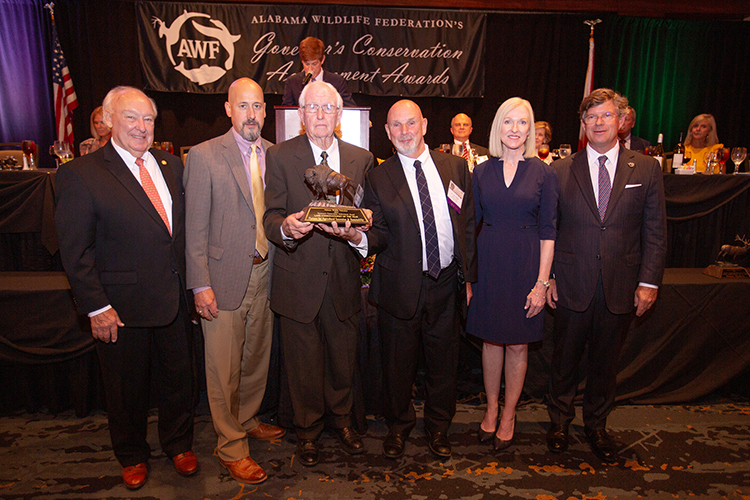
Partners for Agricultural Innovation and Sustainability was presented the Land Conservationist of the Year Award at the 2022 Alabama Wildlife Federation Governor’s Conservation Achievement Awards banquet. The Alabama Wildlife Federation (AWF) held the banquet, co-sponsored by Alabama Power Company and PowerSouth Energy on Friday, August 5, 2022, at The Marriott Legends at Capitol Hill in Prattville. Governor Kay Ivey provided a congratulatory video prepared specifically for the 2022 Award Recipients.
The AWF Governor’s Conservation Achievement Awards (GCAA) are the most respected conservation honors in the state of Alabama. Over the past 50 years, AWF has presented these awards to individuals and organizations that make great contributions to the conservation of Alabama’s wildlife and related natural resources.
Partners for Agricultural Innovation and Sustainability was founded by the University West Alabama and the Sumter County Soil and Water Conservation District.
In 2018, the partnership utilized education and outreach to farmers, ranchers, and forest landowners to draw attention to landscape problems and solutions associated with invasive cogongrass and Feral Swine.
First phase activities yielded 115 acres of cogongrass control and the removal of 100’s of feral swine from the landscape. At the same time, UWA students were engaged through the process which led to a measurable increase in conservation and agricultural sciences enrollments at the University.
Phase 2 of the partnership is currently underway with a broader geographic, subject matter, and partner focus. Additional control of cogongrass and feral swine have been accomplished and the initiative now includes pollinator habitat, forest management, and soil quality education and assessment.
Presenting Sponsors for the event were Alabama Power Company and PowerSouth Energy. The Westervelt Company, Lockheed Martin, and Alabama Farm Credit sponsored the food and refreshments for the event. Alabama Gulf Seafood was sponsored by the Alabama Seafood Marketing Commission. Additional sponsor support was provided by the National Wildlife Federation, Southeast Region, David & Kelly Thomas, Ralph & Catherine Martin, III, CDG Engineers & Associates, Consolidated Construction Company, David McGiffert, First South Farm Credit, Josh & Mary Virginia Mandell, Lee Thuston, Mobile Bay National Estuary Program, Russell Lands, and Stifel.
AWF’s GCAA was created to promote leadership by example and in turn increase conservation of the natural resources in the state of Alabama including its wildlife, forests, soils, water and air. The program is designed to bring about a greater knowledge and awareness of conservation practices and projects and to give proper recognition to those persons and organizations that make outstanding contributions to the natural resource welfare of their community and state.
The Alabama Wildlife Federation, established by sportsmen in 1935, is the state’s oldest and largest citizens’ conservation organization. The mission of the Alabama Wildlife Federation, a 501(c) 3 non-profit group supported by membership dues and donations, is to promote conservation and wise use of Alabama’s wildlife and related natural resources as a basis for economic and social prosperity. To learn more about AWF, including membership details, programs and projects, contact Alabama Wildlife Federation at 334-285-4550 or visit www.alabamawildlife.org.
SC Treasure Forest Assoc. sets meeting for Aug. 23
The Sumter County Treasure Forest Association will host a meeting Tuesday, August 23, at 6:00 p.m. at the Alfa Building on the University of West Alabama campus.
“Please come join us on Tuesday, August 23 at 6:00 p.m, enjoy great fellowship, and learn about the exciting things taking place in West Alabama and Sumter County,” said SCTF president Elliot Pool.
Mike Davis and his wife, Becky will join us, and Mike will give us a history lesson on early timber production in Sumter County, some of the people involved, the location of the first lumber mill in Sumter County, and the surrounding area.
Mike, who is the senior District Manager for Chemical Waste Management at Emelle, Chairman of the Board for the Sumter County Chamber of Commerce, Chairman of the Board of West Alabama Foundation, board member of the University Charter School, and the University of West Alabama School of Business Advisory Board member. Thus, he is very aware of the changes taking place in Livingston, Epes, Sumter County, and West Alabama, while Becky is a teacher, cattle rancher, hunter as is Mike.
Here are just a few facts and items that he may cover while giving us a great history of early timber production, and processing in Sumter County while showing that Sumter County is on the cusp of great things for the future.
Enviva was just highlighted in the online business section of The Wall Street Journal with the article regarding their “largest in the world pellet production plant being constructed in Epes” in Monday’s Aug. 8 edition, and their stock jumped over 4 percent the day of the announcement on the NYSE.
A public land sale in Sumter County resulted in a large acreage bringing $5,000.00 per acre, while in Iowa in a very recent sale 122 acres of farmland sold for $22,200.00 an acre. The land that you own is worth more than you might know.
You are all aware of the new construction at the University Charter School, while numerous new construction and renovation projects are going on at The University of West Alabama.
Partners for Agricultural Innovation and Sustainability, which was founded by the University of West Alabama and The Sumter County Soil and Water Conservation District as a project for the control of wild hogs, and eradication of cogongrass received an award at the AWF Governor’s Achievement Awards Dinner in Montgomery, for their work in eliminating hundreds of wild hogs, and many acres of cogongrass.
New homes are being constructed across Sumter County, and have you noticed the number of new entrepreneurs in Sumter County including the offspring of some of our members who are starting or continuing service companies such as electrical, heating, and air conditioning as well as others.
We have all been privileged to live in a safe, rural environment during this period of the Covid-19 outbreak, and we have much to be thankful for.
Livingston gets Tree City designation
The council voted to approve the Tree City resolution designating their status as a Tree City. The mayor read the proclamation into the minutes for the record.
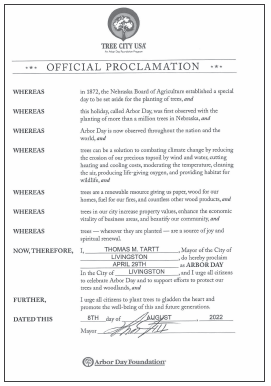
Tiny surprise house guest
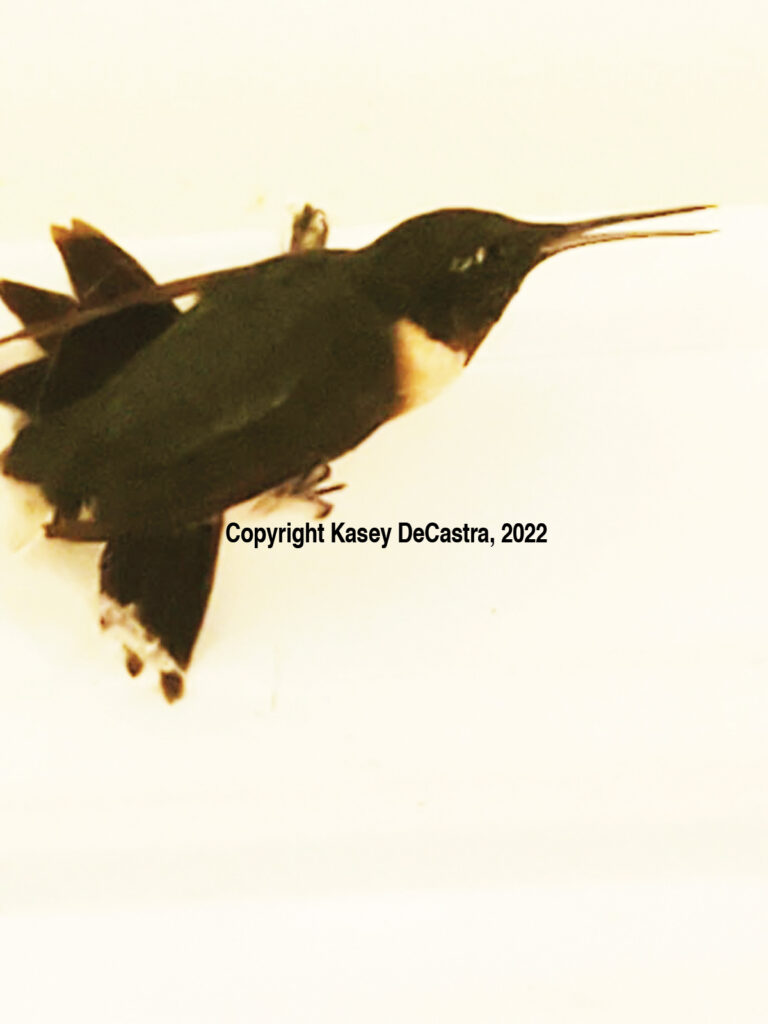
This little black-chinned hummingbird accidentally flew into the house during the hummingbird migration Tues., Aug. 16. Don’t worry. After holding a broom upside down, the bird climbed onto the bristles and gently was taken to the door where it flew out and had a drink at the hummingbird feeder. In Alabama the hummingbird migration goes from mid August – September. “In the fall, leave your feeders up as long as the birds use them. Hummingbirds are migratory and travel south across the Gulf of Mexico and Central America when weather conditions are favorable in the winter. A rubythroated hummingbird can migrate 2,000 miles from breeding site to wintering grounds. Don’t worry about keeping hummingbirds here longer than they need to stay. They know when it is time to leave for their winter quarters. In the late summer or early fall, just before migration, a lot of hummingbirds may use the feeders and then disappear overnight,” according to Jim Armstrong and H. Lee Stribling, from Alabama Extension. Visit aces.edu/blog/topics/forestry-wildlife/hummingbirds-in-alabama/ for more hummingbird information and to learn about the 14 species you might be able to see right now, and hummingbirdcentral.com/hummingbird-migration.htm to help catalog your sightings. Send us your outdoors photos! Not only will you get in the paper, but also on our award winning outdoors page on recordjournal.net. We post new stories every week. Photo by Kasey DeCastra, SCRJ Community News Editor
Registration for 2022 Youth Dove Hunts opens August 15
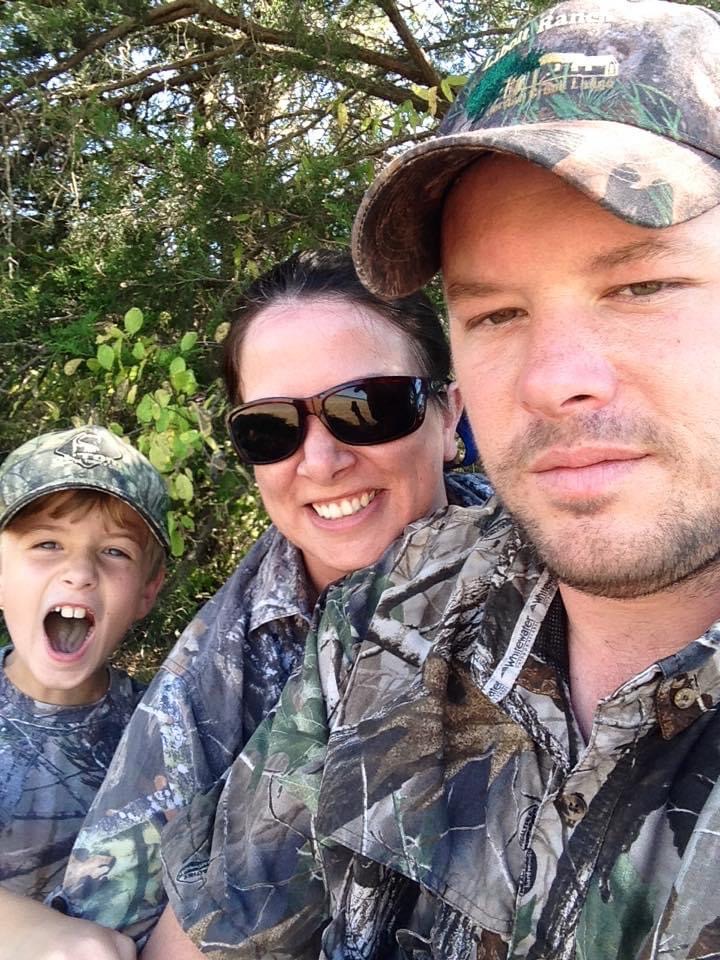
The Alabama Department of Conservation and Natural Resources’ (ADCNR) Division of Wildlife and Freshwater Fisheries (WFF) provides several youth dove hunt opportunities throughout the state each fall. A simple hunting setup combined with a fun, family-friendly atmosphere makes WFF’s youth dove hunts an ideal way to introduce young people to the outdoors.
Registration for this year’s hunts will open at 8 a.m. on August 15, 2022. Although the hunts are free, online registration is required. The first youth dove hunts of the season begin on September 3. For more information including a complete hunt schedule, visit https://www.outdooralabama.com/youth-hunting/youth-dove-hunts.
Jennifer McKemie’s father, Bill Mason, recently retired as manager of the M. Barnett Lawley Forever Wild Field Trial Area (FWFTA) that is used for the WFF youth dove hunts in Hale County. Her family has participated in the annual event since 2014.
A hunter herself since early childhood, Jennifer is also actively involved in four bird dog field trial events at the FWFTA. “I’ve been outdoors all my life,” she said.
The McKemie family participates in a variety of hunting throughout the year, from deer and turkey to dove and duck. Jennifer’s husband Jamie did not grow up hunting but has joined the family tradition and especially enjoys turkey season. Their son Dosson, now 15 years old, began hunting when he was 6.
“Dosson enjoys being outdoors, having fun and spending time with friends,” Jennifer said. “But when he goes hunting, he wants to put meat on the table. And he is an excellent shot!”
For those who have never attended a youth dove hunt, Jennifer advises to just do it.
“So many kids don’t have the opportunity to go hunting,” she said. “There’s always someone willing to help, and they’re so much fun.”
To participate in the hunts, youth hunters must be age 15 or younger and accompanied by an adult at least 21 years old (or a parent) who has a valid state hunting license, a Harvest Information Program (HIP) stamp and a Conservation ID number. Alabama’s youth dove hunt events are held in open fields and staffed by WFF personnel, which encourages a safe, secure environment for both parents and participants. Before each hunt, a short welcome session with reminders on hunting safety is conducted. All hunters are encouraged to wear eye and ear protection.
The Alabama Department of Conservation and Natural Resources promotes wise stewardship, management and enjoyment of Alabama’s natural resources through four divisions: Marine Resources, State Parks, State Lands, and Wildlife and Freshwater Fisheries. To learn more about ADCNR, visit https://www.outdooralabama.com.
Alabama Outdoors Weekly
Scientists at 89th ADSFR Collect Samples from 15 Sharks
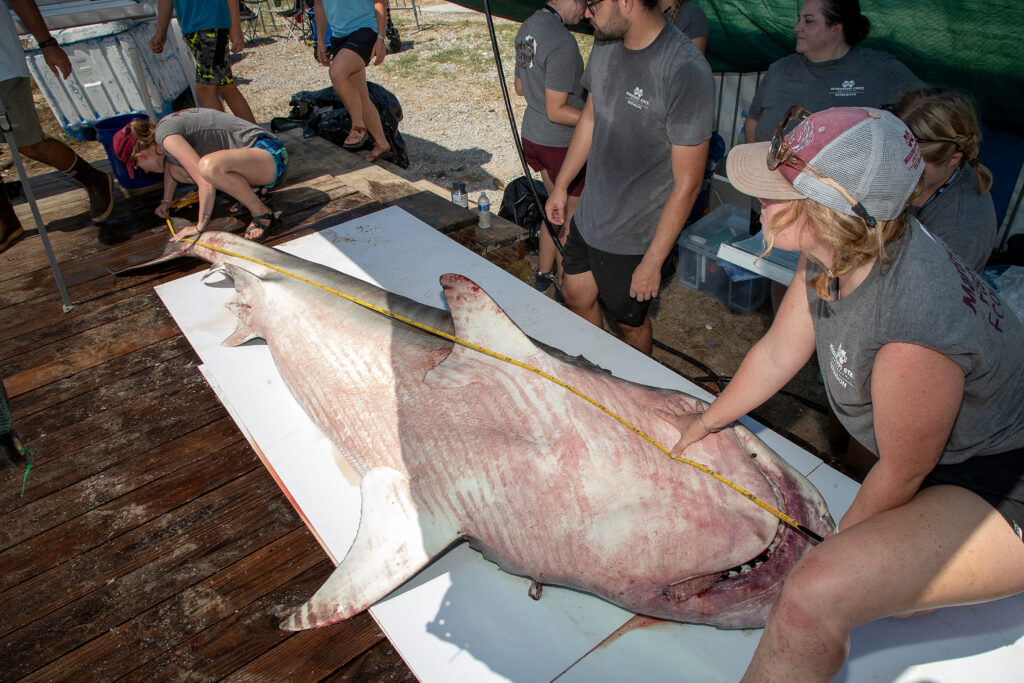
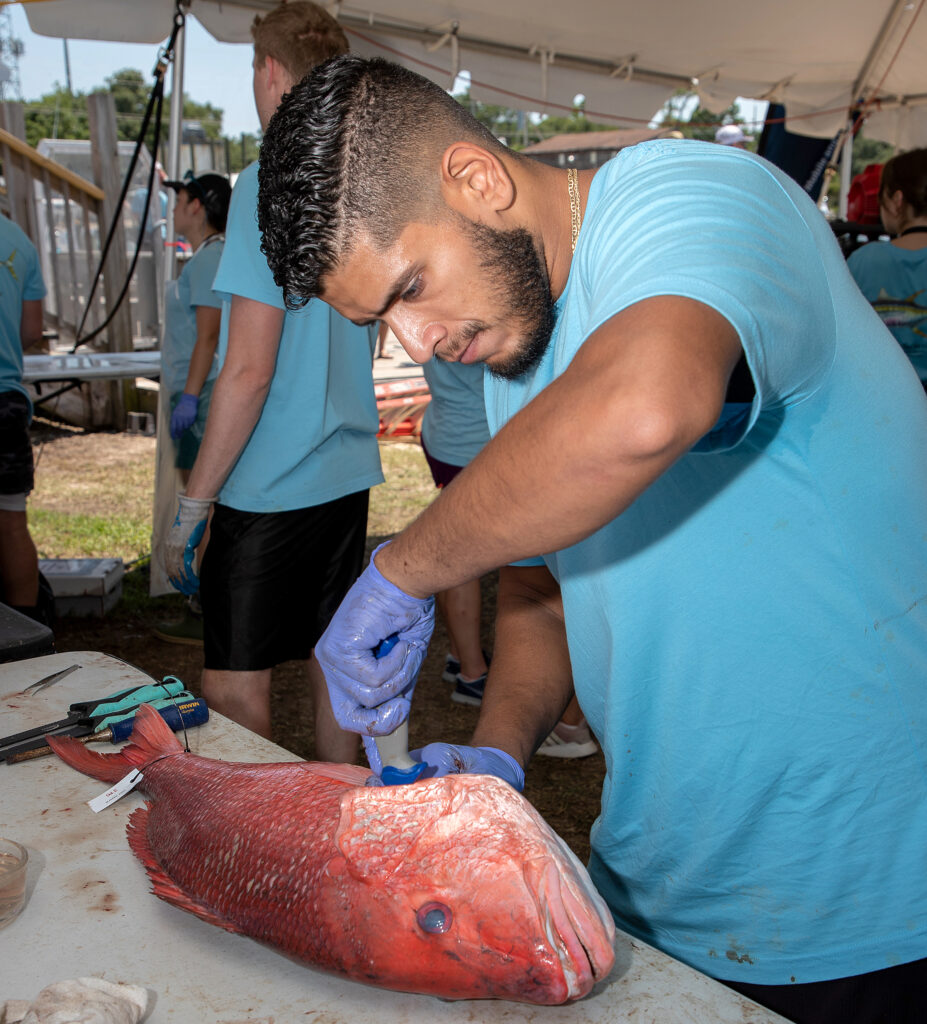
By David Rainer, Alabama Department of Conservation and Natural Resources
The return of the shark category to the 89th annual Alabama Deep Sea Fishing Rodeo (ADSFR) was a rousing success with 15 sharks weighed in during the three-day event, with one riding the ferry from Fort Morgan in the back of a pickup to get to the rodeo site on Dauphin Island.
Tiger sharks pretty much reigned taking the top nine places on the leaderboard. James Mullek-Russell weighed in a 674.2-pound tiger to win the category, followed by Ethan Miller’s 658.4-pounder and Brett Rutledge’s 630.8-pounder. The top bull shark of the rodeo was a 434.2-pounder weighed in by Eric Vandrlessche.
As excited spectators and anglers waited for the sharks come to the weigh station, a bevy of marine scientists and students waited to advance the science on these predatory species.
Assistant rodeo judge Dr. Marcus Drymon of Mississippi State University and Mississippi-Alabama Sea Grant Consortium is renowned for his knowledge of the shark species in the northern Gulf of Mexico. He said sharks weighed in at the rodeo certainly provided a unique opportunity to gather a variety of samples from each species.
“I’ve been researching sharks in the north-central area of the Gulf along with Dr. (Sean) Powers for almost 20 years,” Drymon said. “A lot of the research we do is tracking their trends, their relative abundance and distribution as well as doing studies on their age and growth, reproduction, movements and migrations, post-release mortality and things of that sort.
“Here at the Alabama Deep Sea Fishing Rodeo, we’re taking the opportunity to take vertebrae from these very large individuals.”
Sharks don’t have bones; their skeletons are completely made up of cartilage. However, Drymon said scientists have a way of aging these fish other than counting the growth rings on the otoliths (ear bones) that are present in most fish species.
“Their vertebrae are calcified but not completely ossified,” he said. “It’s kind of a fine line, but technically speaking, sharks have no bones. The cartilage in their backbones and the cartilage in their jaws are the closest they have to true bones. Sharks don’t have otoliths like a bony fish. That’s how you determine the age of, say, a red snapper. Since we don’t have those, we use the next best things, which are the vertebrae. We section those and count the concentric band pairs to age those fish.”
Drymon said the scientists were able to gather samples from the reproductive organs, fins, livers and muscle tissue. Samples of bile, gall bladders and kidneys also were taken to assess overall health.
“We look at their stomachs, but they are usually empty,” he said. “They’ve evacuated their stomachs during the process of being captured.”
Most of the sharks weighed at the ADSFR were males, which are usually similar in length to but weigh less than the females, Drymon said. The rodeo placed stringent length requirements on the shark category with an 80-inch minimum for tiger, bull and hammerhead sharks and a 60-inch minimum on blacktips.
“These sharks are great samples, especially because they are the larger individuals of those species, so they’re a little more rare in the population,” he said. “So, for example, having the vertebrae from those individuals is very valuable in trying to determine the maximum age of that species.”
Drymon said the impact of the rodeo harvest will have a minimal effect on the shark populations.
“For the species being caught, their populations in the north-central Gulf of Mexico are in good shape,” he said. “We know this because we’ve seen their population trajectories slowly increase after decades of overharvesting. Due to strong management measures from NOAA Fisheries and the State of Alabama, we see these shark populations are starting to recover and can stand a limited, sustainable harvest.”
Of course, sharks weren’t the only species being studied. Marine scientists gathered samples from a variety of fish during the rodeo, which experienced near-perfect fishing conditions with calm seas and diminishing squalls.
Dr. Powers, professor and director of the new University of South Alabama School of Marine and Environmental Sciences and head rodeo judge, said about 800 samples were collected each day of the rodeo.
“We’re collecting samples from all the (33) species at the rodeo,” Powers said. “We look at mercury levels, which is something routine we do. We don’t expect any problems.
“We’re looking at flounder. We’ve seen a lot more flounder in the last two years, at least in my memory. We’ve seen a lot of big gray (mangrove) snapper.”
Research was also focused on Alabama’s signature reef fish, red snapper, which were weighed in at the rodeo in significant numbers.
“The really big red snapper specimens from the rodeo are excellent because one of the things we’re trying to look at is to see if the big females slow down their production of the eggs,” Powers said. “The idea is the bigger the female, the better, but that really hasn’t been tested that much. We think it is, but there is some evidence that as the fish get really old, they don’t produce as many eggs.”
Powers said a 20-inch red snapper is about 5 to 6 years old, and the oldest red snapper recorded was 56 years old and came from Alabama waters.
“Red snapper become sexually mature between 3 and 4 years old,” he said. “Essentially, the older and bigger they are, the more eggs they produce. That’s why we want to see those big females. Most of our fishery off Alabama is probably 3- to 6-year-olds, about four to six or seven pounds. Once they get to about 15 pounds, they’re probably producing the maximum number of eggs. We need to see a lot of 10-plus-year-old fish, which is why we’re doing the aging here.”
The largest red snapper at this year’s rodeo was a 27.2-pounder weighed in by Hyler Krebs. Clint Sheppard had a 26.77-pounder, followed by Edgar Miller with a 25.75-pounder.
“These are smaller than what we had five or six years ago,” Powers said. “Back then, if you didn’t have a 30-pound-plus, you didn’t have a chance. Not surprising, what I hear from the fishermen is they have to go farther offshore to catch the bigger red snapper. That’s a product of the state managing for the number of days. We could manage for a bigger fish, but you wouldn’t have as many days. It’s a tradeoff. You can’t have both.”
Not only did marine scientists collect otoliths from the red snapper, they also collected tissue samples, reproductive organs and stomach contents.
“The tissue sample will let us know what it’s eating,” Powers said. “We do chemical analyses, and different forage species have different chemicals.”
Powers said new technology will allow scientists to gain much more information from the flounder otoliths than was previously possible.
“For flounder, we have a new system where we take the chemistry across the otoliths from when it was a little baby fish all the way to however old it was when it was caught, 5 or 6 years old,” he said. “We can construct the chemical environment that fish was exposed to. This is new instrumentation that the Alabama Department of Conservation and Natural Resources helped us purchase. That system will tell us the salinity history and answer questions like, did these fish grow up in the (Mobile-Tensaw) Delta or did they come from Dog River or lower in Mobile Bay?
“One of the things we want to find out is how important that Delta area is. It is unique in chemical composition. With this, we can tell the proportion of the fish that use the Delta. I think the Delta may explain how good the recruitment is for flounder. Is the Delta salty enough? That Delta has so much habitat and so much vegetation, just a change of a few parts per thousand in salinity can make that area accessible or inaccessible to these fish.”
Visit www.adsfr.com for the complete leaderboard for the 33 fish species, jackpots and cash prizes.
A guide to Alabama’s venomous snakes
AUBURN UNIVERSITY, Ala. – Summertime is in full throttle, and outdoor enthusiasts are being extra cautious because of snakes. Most native Alabama snake species are not venomous. However, there are several toxic species that you need to be able to identify.
Venomous Snakes in Alabama
According to the Alabama Department of Conservation and Natural Resources (ADCNR), Alabama is home to six venomous snake species. A bite from any of them is considered a medical emergency, and a victim must immediately seek treatment.
“Although snakebites are a serious issue around the world, only about five people die each year in the United States after an encounter with a venomous snake,” said Wesley Anderson, an Alabama Cooperative Extension System forestry, wildlife and natural resources specialist.
Snake Identification
Most of the state’s 44 snake species are harmless. The most important tool to safety is the skill to identify the snakes in your area.
“Always use multiple characteristics whenever identifying a snake,” Anderson said. “Nonvenomous snakes will often act in ways that mimic venomous snakes.”
For example, many harmless snakes will flatten their heads. Just because a snake has a triangular head, doesn’t mean its venomous. Also, many nonvenomous snakes–along with copperheads and cottonmouths–will shake their tails when frightened. In this case, if you are solely using sound as a factor, this faux movement could lead you to believe you’re in the presence of a rattlesnake. There are also existing color variations and mutations among snake species. So, always use multiple defining characteristics to be more confident in your decision.
To brush up on your venomous snake identification skills, review the list below.
Copperhead
Copperheads are the most common venomous snake throughout Alabama and the primary culprit of reported snakebites. Like cottonmouths and rattlesnakes, they are vipers. More specifically, they are pit vipers and use their heat-sensing pits on their head to see under low-light situations.
Their name is derived from the copper color of their heads. They aren’t large snakes, with most measuring 2 to 3 feet long. Aside from the copper head, another characteristic to look for are their unique bands. The dark bands have smooth lines along the edges. From the side, they’re compared to a Hershey’s Kiss candy. From the top, they look like an hourglass. Young copperheads will also have chartreuse-colored tails.
Cottonmouth
Cottonmouths are a more aquatic relative to the copperhead. The terms cottonmouth and water moccasin for this species are synonymous. They are common but tend to be found less frequently than copperheads since they are primarily near water sources.
Cottonmouths are named for their behavior to gape and expose their light, white mouth lining as a warning when threatened. Adults tend to be larger than their copperhead cousins. An average adult measures between 2 and 4 feet. They have a similar banded pattern, however the edges of the bands tend to have a ragged or pixelated appearance. This pattern is often lost or obscured as they get older.
This banding cannot be relied upon as the sole identifying characteristic. Cottonmouths also have a dark mask that extends from the back of the jaw to the eye. Also like copperheads, the young will have a chartreuse tail.
“Cottonmouths are frequently confused with water snakes,” Anderson said. “One good way to tell them apart is by looking at the mouth. Water snakes have dark vertical bars on their lip scales; cottonmouths do not. Cottonmouths also have blocky heads with a sharp angle from the top of the head to the front of the face, preventing someone from seeing their eyes if looking at them from above.”
Pygmy Rattlesnake
Pygmy rattlesnakes are Alabama’s smallest species of rattlesnake. Adults only grow one to one-and-a-half feet long. This species is also known as ground rattlers. They do have a rattle; however, it is so small that it often sounds more like a buzzing insect than a rattlesnake. Identifiers of pygmy rattlesnakes are blotches on both their back and sides and a potential reddish-brown stripe down the spine.
Timber Rattlesnake
Timber rattlesnakes are medium-to-large rattlesnakes found throughout much of the state. Average adults measure 3 to 5 feet in length. They can measure up to 6 feet, but that is exceedingly rare.
Their solid black tail is a diagnostic characteristic for this species. Another characteristic to look for are the chevron markings extending down the middle of their back. Base color varies from light gray to brown. A rusty colored dorsal stripe is sometimes present.
Eastern Diamondback Rattlesnake
The Eastern diamondback rattlesnake is Alabama’s largest species of venomous snake. Adults average 4 to 6 feet long but can reach nearly 8 feet in length. They are easily identified by the diamond pattern on their back that runs the length of their body. The diamondback and timber rattlesnake can both be found in the southern part of the state, but diamondbacks tend to be in drier, more upland areas – especially longleaf pine forests.
Eastern Coral Snake
In Alabama, Eastern coral snakes are the only snake in the elapid family. This is a group of snakes that include cobras and mambas. Their tricolored (i.e., red, yellow and black) pattern makes them easy to distinguish.
However, there are two nonvenomous snakes – the scarlet snake and scarlet kingsnake – that mimic this species. For the Eastern coral snake, the red bands touch yellow bands. For the coral snakes’ counterparts, red bands touch black bands. Many people have heard the rhyme to differentiate the two, but Anderson no longer encourages teaching it.
“There are a couple reasons for the change in the coral snake rhyme,” Anderson said. “There have been documented cases of people misremembering the rhyme and being bitten by coral snakes. The other reason is that abnormal coral snakes exist that might, for example, have dark, bordering on black, red bands.”
Coral snakes have a short, blunt head that starts with a black band. The other species will have longer heads starting with a red band. If there is any doubt, do not handle any tricolor snake. The Eastern coral snake averages 20 to 30 inches in length but can reach nearly 4 feet. They also possess a potent neurotoxic venom that can result in paralysis and asphyxiation. It is a myth that coral snakes need to chew to inject venom. Remember, they are cousins to cobras.
More Information
Remember, it is vital that any venomous snake bite be considered a medical emergency. For the scoop on serpents in Alabama, contact your local Extension agent or specialist to learn about which species are in your area. Also, visit the Alabama Extension website at www.aces.edu to learn more about Alabama’s snake species.
Outdoor Alabama Photo Contest Opens August 2
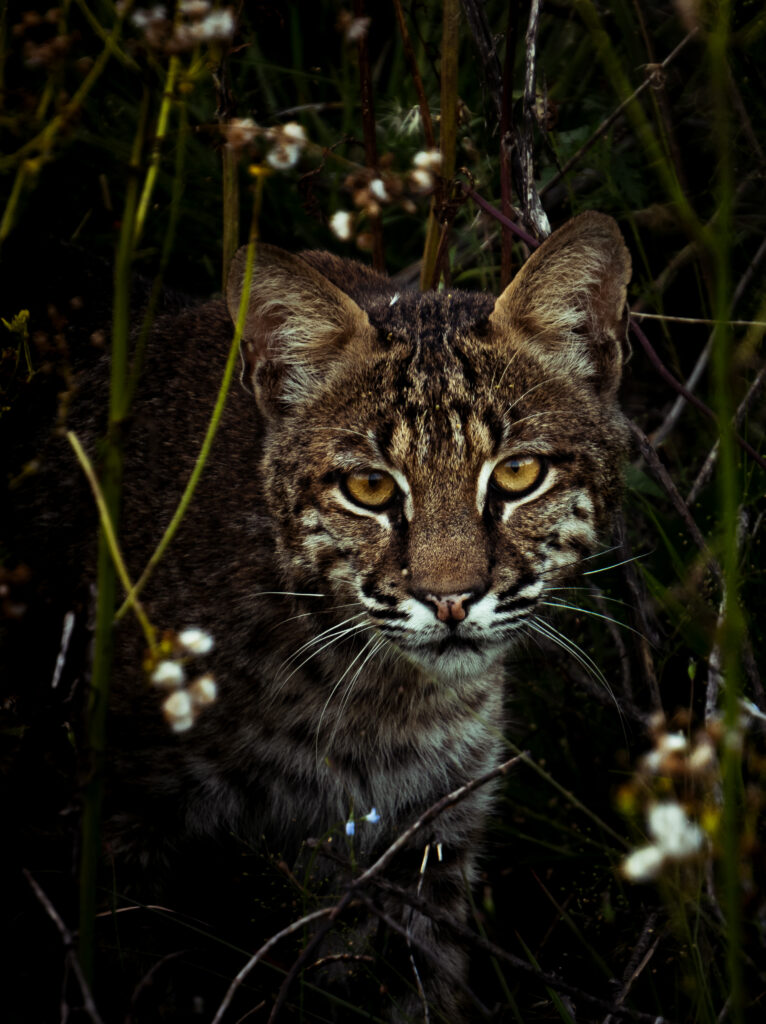
The 2023 Outdoor Alabama Photo Contest will begin accepting entries on Tuesday, August 2, 2022. This year’s contest is a joint project between the Alabama Department of Conservation and Natural Resources (ADCNR) and the Alabama Tourism Department. The deadline to enter is October 31, 2022.
The 2023 photo contest will focus on traditional photography techniques and the use of handheld cameras. No cellphone, smartphone, game camera, or drone photography will be chosen as winning photos for nine of the 10 categories. Smartphone and tablet photos will be accepted in the Young Photographers category.
The photo contest is open to state residents and visitors alike, but qualifying photos must have been taken in Alabama in the past two years. Any amateur photographer not employed by ADCNR is encouraged to enter.
A total of eight photos per person may be entered in the following categories. You may enter all eight in one category or among several categories.
2023 Outdoor Alabama Photo Contest Categories
- Alabama State Parks
- Birds
- Bugs and Butterflies
- Cold-blooded Critters
- Nature-Based Recreation
- Scenic
- Shoots and Roots
- Sweet Home Alabama
- Wildlife
- Young Photographers (ages 17 and under)
First, second, third and one honorable mention will be awarded in each category. Winning images will be featured online and in a traveling exhibit at various venues across the state during 2023.
Art teachers are encouraged to incorporate participation in the Young Photographers category into their art instruction this fall.
An exhibit of the 2022 winning photos is currently on display at the Downtown Huntsville Public Library until July 31, 2022. It then moves to the South Huntsville Public Library until August 31. To view the complete exhibit schedule, visit www.outdooralabama.com/photo-exhibit.
For complete 2023 category descriptions and contest rules, visit www.outdooralabama.com/photocontest.
ADCNR promotes wise stewardship, management and enjoyment of Alabama’s natural resources through four divisions: Marine Resources, State Lands, State Parks, and Wildlife and Freshwater Fisheries.
Brown Spot Needle Blight Affecting Pine Trees
Since early spring, the Alabama Forestry Commission (AFC) has been receiving phone calls from landowners and the public regarding pine needles suddenly turning brown. Many of these calls have been coming from counties in the northwest and northeast regions of the state. The culprit of the needle discoloration is believed to be the fungal disease known as brown spot needle blight. To date the disease has been confirmed in 36 of 67 counties in Alabama.
Historically, this disease has only infected longleaf pines (Pinus palustris). Brown spot needle blight can be killed using prescribed burns. However, this method is only effective for longleaf pine seedlings. In the last few years, the disease has also begun to infect loblolly pines (Pinus taeda) in young and mature stands. The cause for this change in behavior of the disease has yet to be determined, but it can be speculated that it may be a new sub-species that has evolved from the original fungal pest.
The first sign of infection is discoloration of the needles. Infected needles will contain circular lesions with a brown spot surrounded by a yellow halo. Over time, the infected area will turn brown with a dark red or dark green border. The discoloration begins in the lower portion of the crown and moves up as the disease spreads by rain and wind events. An easy way to identify the disease is if the pine needles look as if they have been scorched by fire, even though there has been no burn. This disease can reoccur over a couple of years and cause mortality to infected pines.
If you believe your pines are infected with brown spot needle blight and want needles tested, please contact your local Alabama Forestry Commission office. Laboratory tests can confirm the presence of the disease. Symptomatic needles are collected and brought to the Forest Health Dynamics Laboratory at Auburn University for confirmation.
The mission of the Alabama Forestry Commission is to protect and sustain Alabama’s forest resources using professionally applied stewardship principles and education, ensuring that the state’s forests contribute to abundant timber and wildlife, clean air and water, and a healthy economy.
Alabama Outdoor Weekly
Jacobs gains mobility freedom through Outdoor Ability Foundation
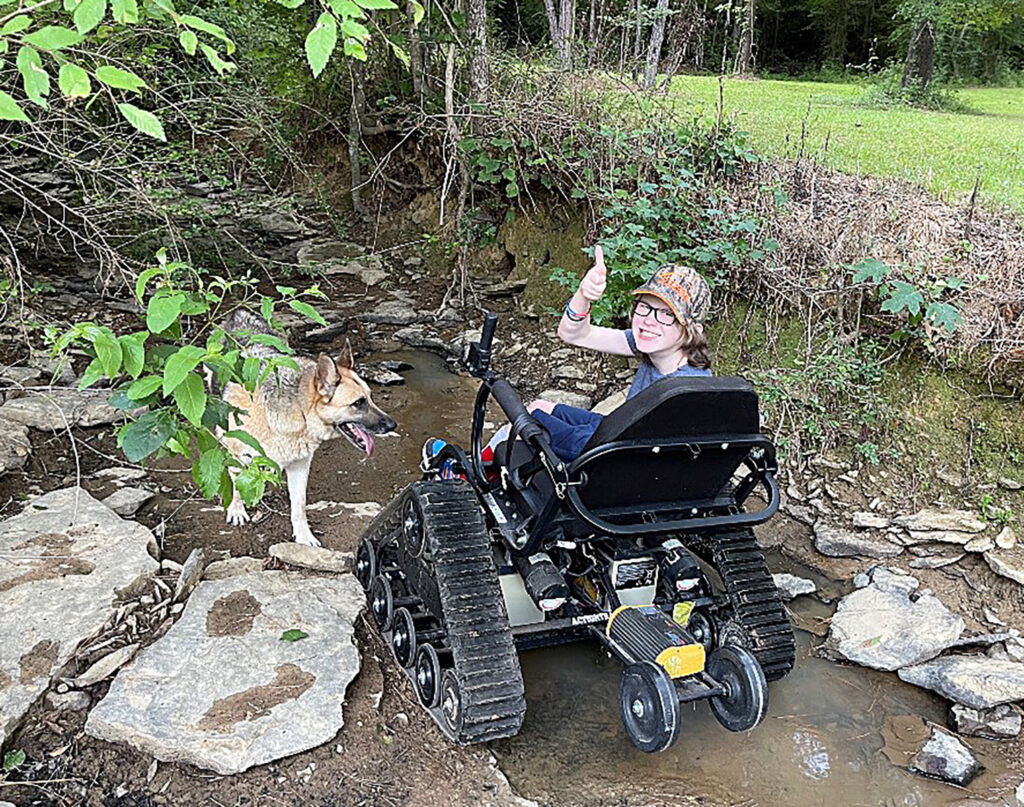
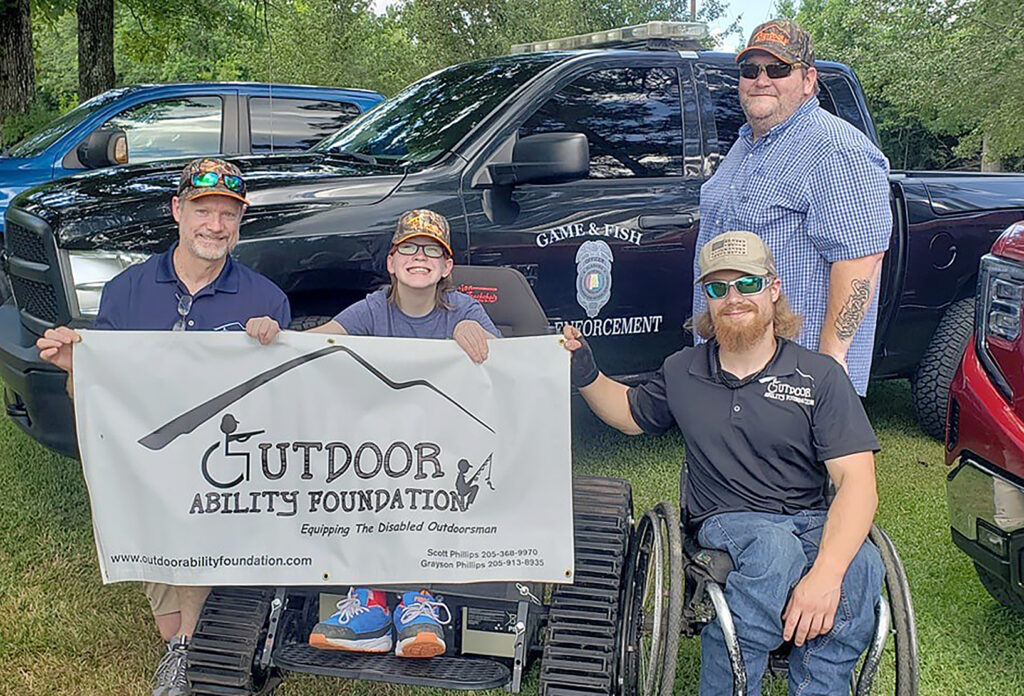
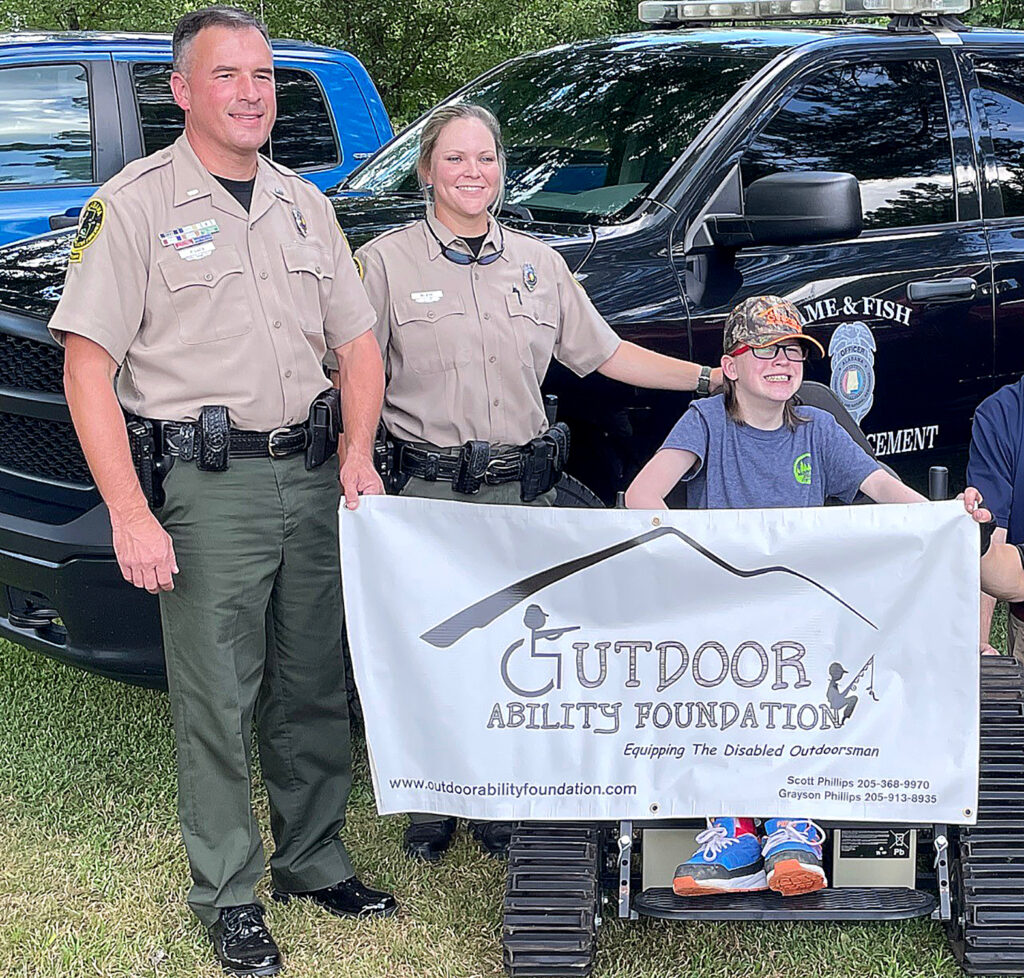
By David Rainer, Alabama Department of Conservation and Natural Resources
Logan Black, a Conservation Enforcement Officer with the Alabama Department of Conservation and Natural Resources’ Wildlife and Freshwater Fisheries (WFF) Division, approached Nate Jacobs and said she’d heard about him hunting a certain piece of property. Black played her part in the ruse well and had Nate squirming, wondering where he’d run afoul of the law.
That’s when Outdoor Ability Foundation’s Scott Phillips unveiled a new Action Trackchair that was being presented to Nate for his 16th birthday. The look of concern on Nate’s face quickly turned into a wide grin when he realized he wasn’t in trouble and the all-terrain wheelchair was for him.
Jacobs has been in a wheelchair since he suffered a stroke during heart surgery when he was 5 years old. He’s always loved to hunt and fish, but mobility has been a serious obstacle.
The way Outdoor Ability Foundation found out about Nate was through the Kidz Outdoors (kidzoutdoors.org) program, an organization started by Carol and Rick Clark of Hueytown to help kids with disabilities get outdoors.
“Nate had gone hunting with Kidz Outdoors, and Carol told me about him,” Phillips said. “I connected with Wes, Nate’s dad, and we made sure Nate didn’t know about the chair. We did the fundraising for the chair without him knowing it.
“We set the organization up based on our model, what happened to us. We go out and find the track chairs or whatever equipment is needed. I’m usually able to get these chairs at less than retail. We ask the families to raise half the money, and we raise the other half because it gets more people involved. It also lets more people know about the needs of the disabled kids who want their freedom to go hunting and fishing. You get family, friends and the community involved with the focus of let’s get this kid outdoors.
“Nate loves to fish and hunt. I told Wes not to stress about the money, that God will provide it. Once people know what you’re trying to do and why you’re trying to do it, it will happen. It happened within a month.”
With fundraising just short of the goal, Donnie Yates, Phillips’ right-hand man at the foundation, reached out to Vance Wood, WFF officer and member of the Alabama Conservation Enforcement Officers Association (ACEOA), and asked if the association could provide the remaining funds for the chair. Wood made the presentation to the ACEOA board, which approved the funding.
The ACEOA has 140 members from State Parks, State Lands, Marine Resources and Wildlife and Freshwater Fisheries.
“Our mission is to perform public education and outreach and enhance professional standards,” Wood said of the ACEOA. “It was very satisfying to see Nate get the chair. We’re happy when we can help give a child the ability to enjoy what our great outdoors has to offer.”
Phillips added, “We got wildlife officers (Black and Lt. Brian Fisher) to help us present the chair. What was neat about it was Wes had trained Officer Black when she went through the police academy. We had that connection also.”
Phillips’ son, 23-year-old Grayson, has spina bifida, which led to the formation of Outdoor Ability Foundation in Gardendale.
“At the age of 10 Grayson wanted to go hunting,” Phillips said. “I did not grow up hunting, but we said okay if that’s what he wanted to do. We’ve told him all his life that he can do anything he wanted to, but he’ll have to do it differently. We connected with several organizations that took him hunting, and we’re very grateful for that. It gave him the bug to do more and more, but we didn’t have a way to get him from point A to point B.”
The lack of mobility was highlighted on a turkey hunt with Grayson.
“The guides had a popup blind for him,” Phillips said. “We knew where the turkeys were, but they wouldn’t come to us. We decided to take Grayson to a point a little closer to the birds. I had to throw Grayson over my shoulder and drag his wheelchair. The guides were gathering all the stuff they needed to get to the next position. It had rained and it was muddy, not good conditions to try to be doing this.
“I thought there’s got to be a better way to get someone in a wheelchair from point A to point B. I started to do some research and ran across Action Trackchairs.”
Phillips called the Action Trackchair rep in Georgia and asked about the chairs and the cost. When the rep quoted $12,000, he knew the family couldn’t afford it.
“I think Grayson was 13 or 14 at the time, and we didn’t have that kind of cash,” he said.
The Phillips family met the chair rep at a basketball tournament, where Grayson was playing for the Lakeshore Foundation, and he brought a chair for Grayson to test.
“He tried it and loved it, but we still didn’t have $12,000,” the elder Phillips said. “A few months later, I get a lead on a used chair. I called the people. It was their father’s chair, and he had just passed away. They wanted $8,500 for it. I told them I didn’t have $8,500, but if they’d give me a little time, I would try to raise that money.”
Phillips started a GoFundMe account, sold brownies, held car washes and other fundraising events. About half the money needed was raised from those efforts, and the deadline was coming up quickly. Then a private donor stepped in and graciously provided the remainder of the funds needed to purchase the chair.
“We met the people with the chair in Florida, where they lived,” he said. “Grayson got on the beach in the chair, and he was all over the place. It gave him the freedom to just go. We get back home, and he takes it to the woods, going everywhere he can go. He got his independence.
“When Grayson got his first deer after getting his chair, he wanted to drag the deer out of the woods, so that’s what he did. We decided at that time that we needed to help other disabled kids with the same desire to go hunting and fishing.”
Outdoor Ability Foundation was formed in 2014, and the first mobility chair was presented in 2016 to a youth in Gardendale. Nate’s presentation was the 14th for the foundation in seven states. Phillips also found out it wasn’t one-size-fits-all when it comes to dealing with disabilities.
“One of the kids had autism, so it’s not just mobility,” he said. “We try to find whatever adaptive equipment is necessary to help the kids. The father said he wouldn’t be able to mount the rifle to his shoulder and look through the scope, so we got him a screen that attached to the scope, and he was able to go hunting that way.
“The thing I talk about is being the game changer. When kids get these chairs or equipment, it’s a game changer, not only for the kids but for the parents.”
Wes Jacobs, a Tuscaloosa police officer who is involved with training at the Tuscaloosa Police Academy, agrees wholeheartedly with Phillips’ last statement.
“It’s made life so much easier for Nate and us,” Jacobs said. “It’s pretty much opened the door to so many opportunities for him to be independent that he would have never had without it.
“We live out in the country, so if we ever wanted to get outside and do something, we’d have to get him on the Polaris or get in the Jeep. The electronic chair he had is not made for the outdoors. A manual chair is not going to go over roots or through creeks with you trying to push it.
“Now we can put him in the track chair in the carport and he goes where he wants. He’s as happy as he can be. We took him to the beach, and he was able to go on the sand. It’s been great. It’s been a blessing, plain and simple. We’re very thankful to Kidz Outdoors and Outdoor Ability Foundation. They work well together on helping kids.”
Wes said Nate is a student at Berry High School, makes good grades and loves being around his friends.
“I love it,” Nate said of the track chair. “I can play in the creek and help Papa (his grandfather Arthur Williams) in the garden.”
Phillips added, “We need people to understand that it’s okay to go outside and have fun.”
WFF Breaks New Ground with Night Shoot
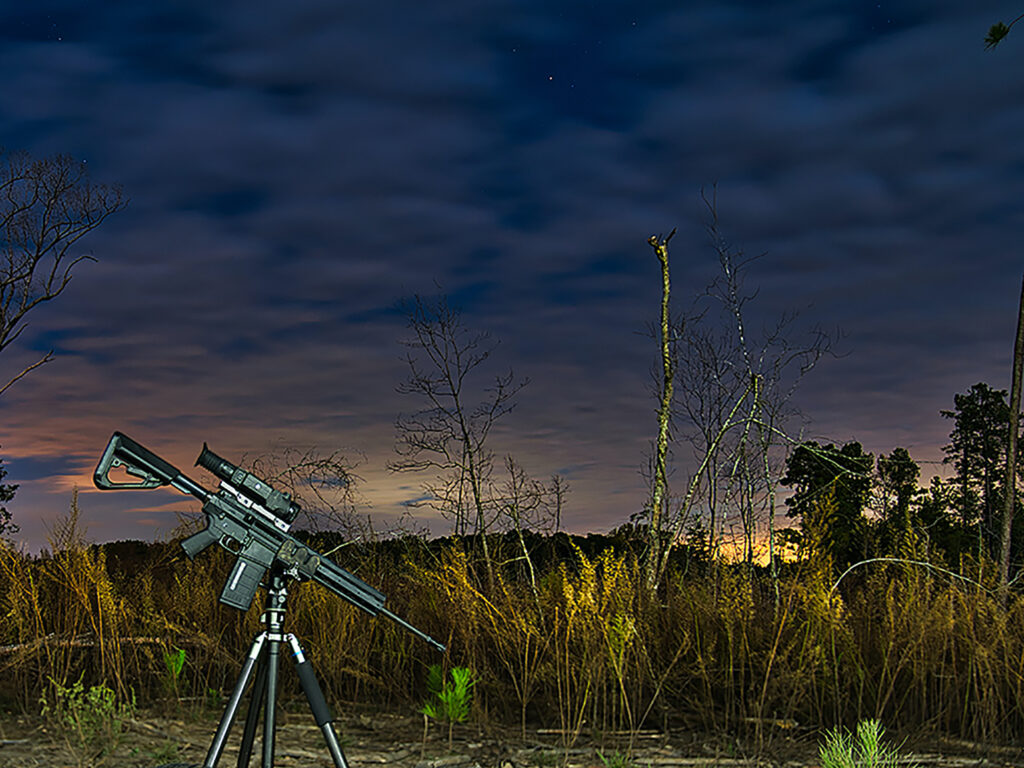
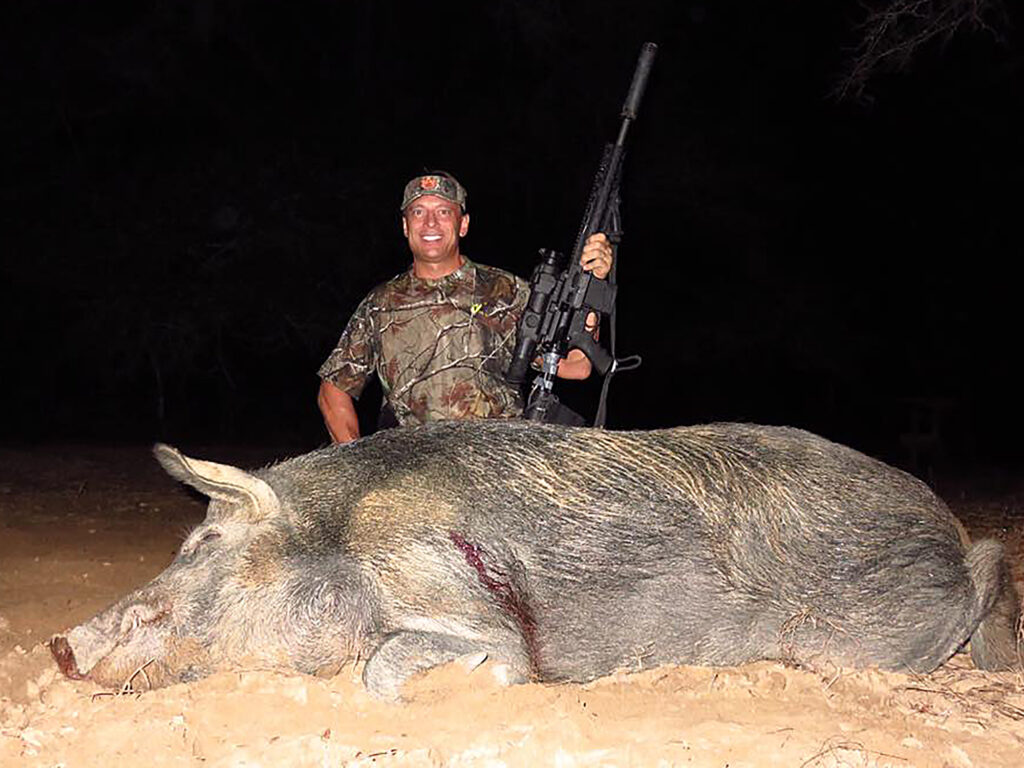

By David Rainer, Alabama Department of Conservation and Natural Resources
The Alabama Department of Conservation and Natural Resources (ADCNR) continues to provide citizens with groundbreaking opportunities to enjoy the outdoors in new, innovative ways.
The ADCNR’s Wildlife and Freshwater Fisheries Division’s (WFF) Law Enforcement Section recently held a Night Shoot at the Cahaba River Wildlife Management Area (WMA) Shooting Range.
From what Law Enforcement Chief Michael Weathers can determine, Alabama is leading the way in this event, which allowed those who signed up to bring their night vision and thermal optics to the range to shoot at night.
“Number one, we think it’s very likely this is the first time a game and fish agency has ever hosted an event like this, where we open one of our state shooting ranges during what are normally closed hours and staff it,” Weathers said. “We did this so members of the public who own rifles with night vision or thermal sights can shoot or zero their guns in a safe environment.
“We had good public turnout and a lot of enthusiasm. The guys who came out and shot were glad to have the opportunity, and several traveled a pretty good distance to get there. We had one gentleman drive up from Lee County. He brought a rifle with a thermal sight. We got him zeroed, and he was very complimentary of us for opening the range, providing that opportunity. It’s hard to find a place to shoot, let alone a place to shoot at night.”
The WFF staff opened the Cahaba River Range at 8 p.m. on a Saturday night and brought in numerous WFF officers to oversee the range to ensure safety under the low-light conditions. Unlike the WFF Law Enforcement’s Firearms 101 sessions, where new or inexperienced shooters are provided with .22-caliber firearms and taught how to handle a firearm safely and improve their shooting efficiency, the Night Shoot officers did not offer instruction.
“We brought in some of our firearms instructors, not to teach, but to run the range and ensure safety on the range,” Weathers said. “We kept it open until 2 a.m. We had folks coming and going for most of the night.”
Weathers said shooting at night also presents challenges because of the low-light conditions that make safety paramount.
“Shooting on a range at night is a lot different than in the daytime,” he said. “If you’re downrange changing targets or scoring targets, you can’t see what anybody on the firing line is doing. And the firing line people can’t see that there are people downrange.
“We wanted to make sure that the folks who came out wouldn’t have any concerns or worries, that it was a safe environment. We used red lights. Any time the red lights were on, people had to step away from their firearms. If the red lights were on, that freed up people to go downrange and work on targets.”
Steel targets were used for those with thermal imaging equipment, and range officers used propane torches to heat the steel to increase the thermal profile. “It works like a champ,” Weathers said.
After the targets are ready, before the firing line goes hot, WFF officials use their own night vision and thermal optics to ensure no one is downrange before the red lights are turned off and the firing resumes.
“We just walked around and helped where we could,” Weathers said. “It was a great event. For us, it’s better utilization of a state resource. Our state shooting ranges are a low-cost state resource for everybody.”
Ryan Russell from Helena was one of those who made the inaugural Night Shoot, and he was able to shoot his .300 Blackout at the range.
“It was an interesting experience to shoot with a thermal scope,” Russell said. “Several people were out there with night vision optics. I got to see the difference between thermal and night vision and what to expect. I was able to learn from other people how to effectively use night scopes, how they handle and things you need to be aware of. Thermal scopes are great as long as you have a warm target to shoot at. Shooting at paper is tough with thermal, but the night vision was pretty cool.
“For a first time, I thought it went well. Going to a range, you never know who you’re going to interact with, but there were plenty of officers on-site to keep everybody safe. They had really good control of the range. I had both of my children out there with me. We felt safe at all times. I really enjoyed it, and we had a wide range of people out there. A couple of people there didn’t shoot. They were there to watch and learn.”
State Shooting Ranges are open to anyone who holds a hunting or fishing license or purchases a Wildlife Heritage license for $11.70.
“With the explosion in nighttime predator control hunting and the ownership of night vision and thermal equipment, we hope to do a lot more of these events to give folks the opportunity to come out in a safe environment to shoot their firearms with their night vision or thermal optics,” Weathers said.
Landowners and leaseholders could previously apply for a depredation permit to shoot feral hogs and coyotes at night, but the process was somewhat restrictive.
The Alabama Legislature passed a law that allows Alabama residents to purchase a $15 license ($51 for non-residents) to hunt feral hogs and coyotes at night with night vision, thermal optics or lights attached to the firearms during a specific season. The 2022 season started on February 11 and runs through November 1.
“Last year, we got a dedicated feral hog and coyote nighttime hunting season on private or leased land,” Weathers said. “That’s been a real success. A lot of folks are taking advantage of that. It makes it easier for those landowners to control predators. If you’re a member of a hunting club and the landowner allows it, you can buy that license (www.outdooralabama.com) and participate in predator control hunting during the off season.
“Because of the popularity in nighttime feral swine and coyote hunting and the increase in people who own night vision and thermal optics, opening the range at night was a good way for us to work with the public. And when people buy night vision or thermal scopes and firearms, those tax dollars go into the Pittman-Robertson Fund that is distributed to the states for a variety of uses, including purchasing shooting ranges and staffing them. This gives everybody an equal chance to better use the resources they’re paying for.”
Weathers said the Night Shoot was a great learning experience for the public as well as the WFF staff, and he expects to hold several similar events in the future.
“We know there’s a demand for this, a need for it,” he said. “We plan to host more of these events and move them around the state. By nature, they have to be staffed, and we can’t do it everywhere all the time. But we intend to conduct as many of these events as possible.”
Follow the Alabama Wildlife and Freshwater Fisheries Division Facebook page on future Night Shoots. Visit www.outdooralabama.com for information on State Shooting Ranges and the nighttime hunting license for feral hogs and coyotes.
Alligator hunt registration opens June 7
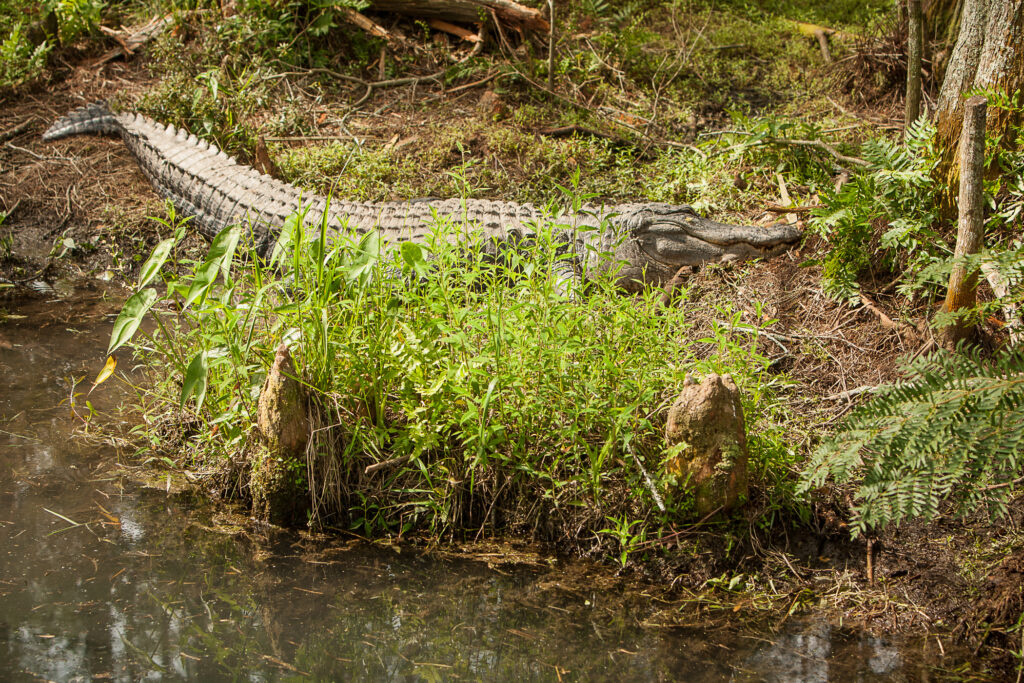
The Alabama Department of Conservation and Natural Resources (ADCNR) will open online registration for the state’s regulated alligator hunts on June 7, 2022, at 8 a.m. Registration must be completed by 8 a.m., July 13. For complete season information, visit www.outdooralabama.com/seasons-and-bag-limits/alligator-season.
A total of 260 Alligator Possession Tags will be distributed among five hunting zones. The administrative fee to apply for an Alligator Possession Tag is $22 and individuals may register one time per zone. While the tag is free, the selected hunters and their assistants are required to have valid hunting licenses in their possession while hunting.
Only Alabama residents and Alabama lifetime license holders ages 16 years or older may apply for tags. Alabama lifetime license holders may apply for an Alligator Possession Tag even if they have moved out of the state.
Hunters will be randomly selected by computer to receive one Alligator Possession Tag each (the tags are non-transferable). The random selection process will utilize a preference point system. The system increases the likelihood of repeat registrants being selected for a hunt as long as the applicant continues to apply. The more years an applicant participates in the registration, the higher the likelihood of being selected. If an applicant does not register for the hunt in a given year or is selected and accepts a tag for a hunt, the preference point status is forfeited.
Applicants can check their selection status on July 13, after 12 p.m., at https://publichunts.dcnr.alabama.gov/public. Those selected to receive a tag must confirm their acceptance online by 8 a.m., July 20. After that date, alternates will be notified to fill any vacancies. Applicants drawn for the hunt are required to complete an online Alligator Training Course prior to accepting their hunter/alternate status. The official course will be available on the applicant’s status page upon login.
If selected for an Alligator Possession Tag at two or more locations, hunters must choose which location they would like to hunt. The slot for locations not chosen will be filled from a list of randomly selected alternates.
Hunting zones, total tags issued per zone and hunt dates are as follows:
SOUTHWEST ALABAMA ZONE – 100 Tags
Locations: Private and public waters in Baldwin and Mobile counties north of interstate 10, and private and public waters in Washington, Clarke and Monroe counties east of U.S. Highway 43 and south of U.S. Highway 84. 2022 Dates: Sunset on August 11, until sunrise on August 14. Sunset on August 18, until sunrise on August 21.
COASTAL ZONE – 50 Tags
Locations: Private and public waters in Baldwin and Mobile counties south of Interstate 10. 2022 Dates: Sunset on August 11, until sunrise on August 14. Sunset on August 18, until sunrise on August 21.
SOUTHEAST ALABAMA ZONE – 40 Tags
Locations: Private and public waters in Barbour, Coffee, Covington, Dale, Geneva, Henry, Houston and Russell counties (excluding public Alabama state waters in Walter F. George Reservoir/Lake Eufaula and its navigable tributaries). 2022 Dates: Sunset on August 13, until sunrise on September 5.
WEST CENTRAL ALABAMA ZONE – 50 Tags
Locations: Private and public waters in Monroe (north of U.S. Highway 84), Wilcox and Dallas counties. 2022 Dates: Sunset on August 11, until sunrise on August 14. Sunset on August 18, until sunrise on August 21.
LAKE EUFAULA ZONE – 20 Tags
Locations: Public state waters only in the Walter F. George Reservoir/Lake Eufaula and its navigable tributaries, south of Alabama Highway 208 at Omaha Bridge (excludes Eufaula National Wildlife Refuge). 2022 Dates: Sunset August 19, until sunrise October 3.
Each person receiving an Alligator Possession Tag will be allowed to harvest one alligator during the season. An 8-foot minimum length requirement is in effect for alligators harvested in the Lake Eufaula Zone. There is no minimum length for hunts in the other zones. The use of bait is prohibited. All alligator harvests must be immediately tagged with the temporary Alligator Possession Tag and reported as directed for each Zone. The permanent Alligator Possession Tag will be distributed after the hunt by Wildlife and Freshwater Fisheries Division personnel.
Hunting hours are official sunset to official sunrise in the Southwest, Coastal, Southeast and West Central Zones. For the Lake Eufaula Zone, hunting is allowed both daytime and nighttime hours. All Alabama hunting and boating regulations must be followed.
The American alligator (Alligator mississippiensis) is the largest reptile in North America and can exceed 14 feet in length and 1,000 pounds. Known for its prized meat and leather, the species was threatened with extinction due to unregulated harvest during the 1920s, 30s and 40s. No regulations existed in those days to limit the number of alligators harvested. In 1938, it is believed that Alabama was the first state to protect alligators by outlawing these unlimited harvests. Other states soon followed and, in 1967, the U.S. Fish and Wildlife Service placed the American alligator on the endangered species list. By 1987, the species was removed from the endangered species list and the alligator population has continued to expand. Its history illustrates an excellent conservation success story.
ADCNR promotes wise stewardship, management and enjoyment of Alabama’s natural resources through four divisions: Marine Resources, State Lands, State Parks, and Wildlife and Freshwater Fisheries. Learn more at www.outdooralabama.com.
ALBBAA’s Best Fish Photo Contest
The Alabama Black Belt Adventures Association wants to see your fish photos again this year. The 2022 Best Fish Photo Contest allows anglers of all ages to showcase how they enjoy the bountiful fishing in the Black Belt. Photos submitted for the contest, which opens May 28 and runs through Aug. 31, can show any type of fish caught in the Black Belt during 2022. All photos for the contest must be entered through the Alabama Black Belt Adventures’ website. The contest winner will receive a prize package that includes a guided fishing trip for a day on Lake Eufaula sponsored by Tony Adams of Gone Fishing with Tony and a two-night stay at Lakepoint State Park. Voting will also be conducted exclusively on the same page — https://alabamablackbeltadventures.org/bestblackbeltfishcontest/. Visitors to the contest webpage may vote once per day, per entry, per IP address. In the case of any dispute, the decision of ALBBAA is final. ALBBAA reserves the right to approve or disapprove of the photo submitted. Cause for disqualification of photo can include, but is not limited to, the following: The photo content presents the subject in an unethical or disrespectful composition. The photo content is perceived to cast a negative perception of hunters or anglers and their contribution to the management of wildlife. Voting violation which imposes an unfair advantage to others. Previous winners of the Best Fish Photo Contest from the past three years are not eligible to take home the prize. Anglers are also reminded to comply with all fishing laws, including purchasing a valid Alabama fishing license.
Alabama Outdoors Weekly
Voters Overwhelmingly Approve State Parks Amendment
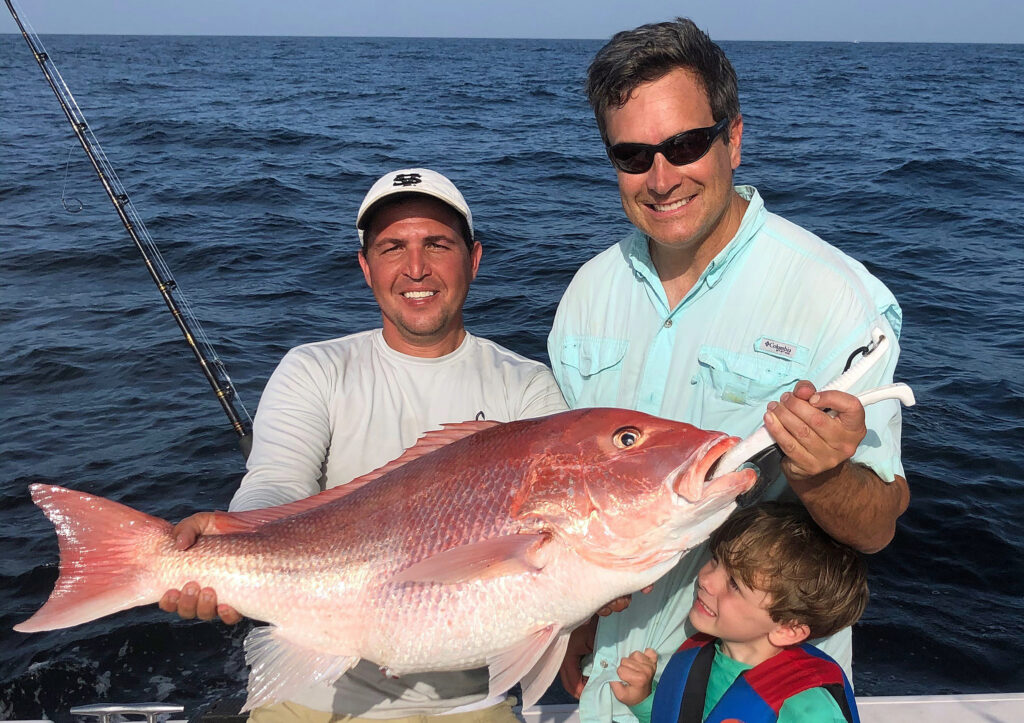
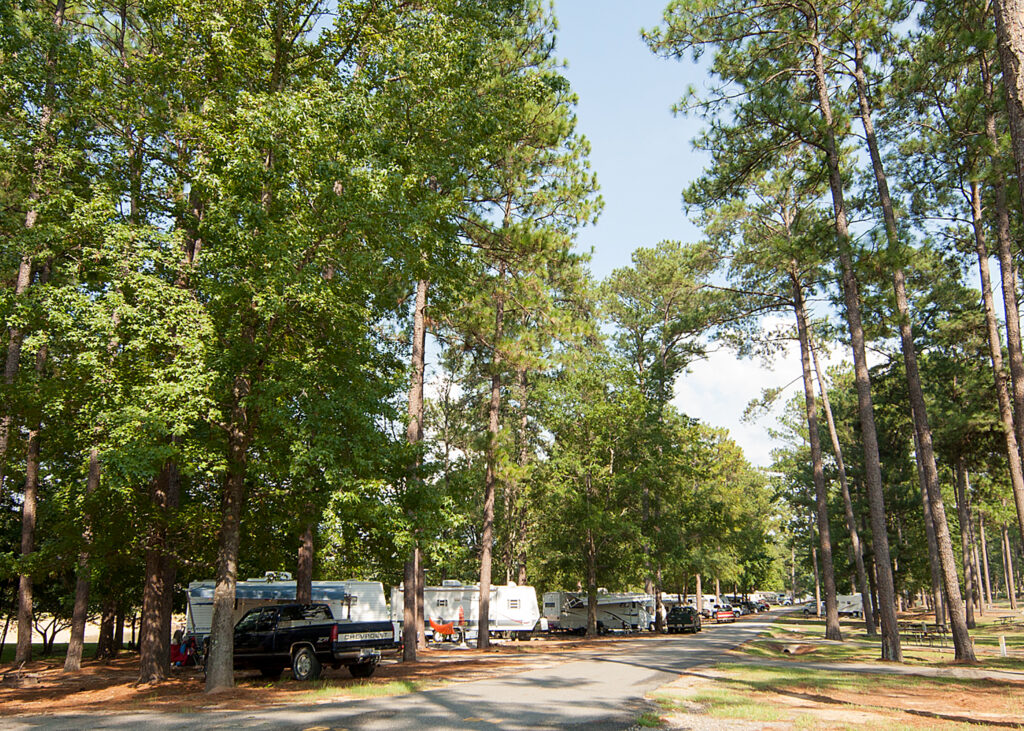
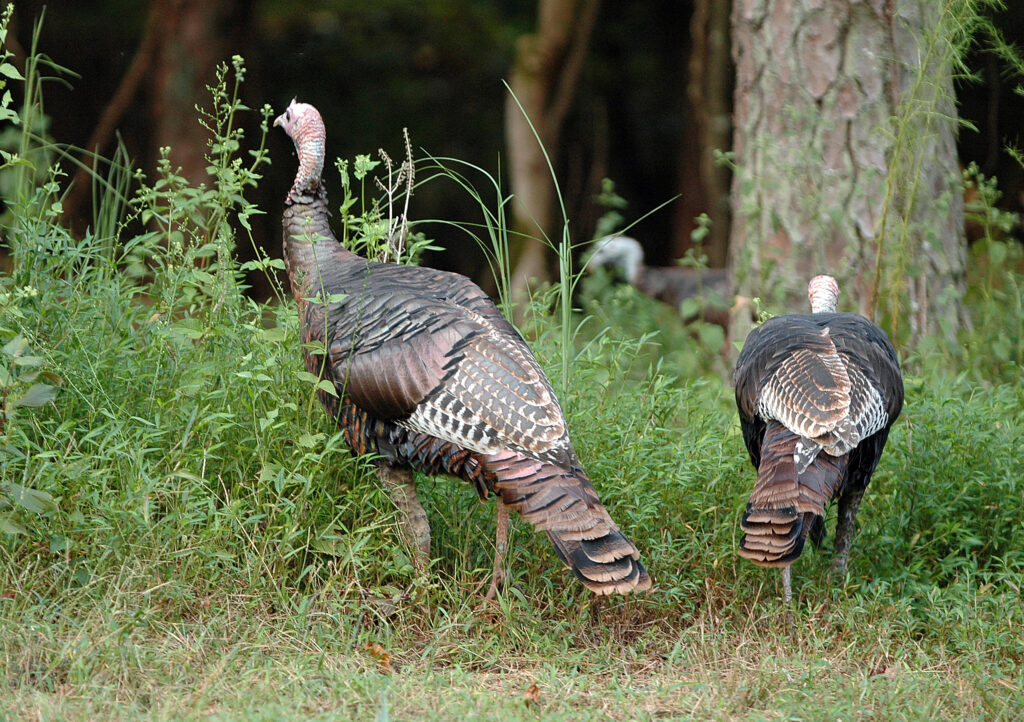
By David Rainer, Alabama Department of Conservation and Natural Resources
By a wide margin, Alabama voters approved the amendment on Tuesday’s ballot to provide as much as $80 million in funding for improvements and enhancements to Alabama’s 21 State Parks.
“I would like to thank the voters of Alabama for their overwhelming support of our beautiful State Parks,” said Chris Blankenship, Commissioner of the Alabama Department of Conservation and Natural Resources (DCNR). “This will give us the funds to make much-needed improvements to the campgrounds across the state, bringing them into the 21st century. A lot of our campgrounds were built when camping was a pop-up camper and a tent. We’re way past that now with the larger motorhomes with three air conditioners that need 50-amp service. We want to make sure we provide for citizens and our guests moving forward. Our day use areas need some new bathroom facilities to try to expand the day use in our parks. We want to build some accessible playgrounds so that our citizens of all ability types will have the opportunity to play at our playgrounds and enjoy our parks.
“We have parks that don’t have cabins. If people don’t have an RV or motorhome, they are not able to enjoy our parks as much as we would like. Our State Parks have been very successful the last few years under (Director) Greg Lein and our new Deputy Director Matthew Capps. Every dime we make at the parks we put back into the parks to do good work.”
During last weekend’s Alabama Conservation Advisory Board (CAB) meeting at Lakepoint State Park in Eufaula, Commissioner Blankenship welcomed Governor Kay Ivey, who won Tuesday’s Republican nomination without a runoff, to the Board meeting and highlighted her accomplishments in outdoor recreation.
“In the time that Governor Ivey has been in office, we (DCNR) have acquired 63,000 acres of property that has gone into public ownership for conservation and enjoyment of our citizens forever,” Commissioner Blankenship said. “Thank you, Governor, for your leadership in allowing ADCNR to do good work for the people and natural resources of Alabama. In my 28 years at Conservation, I don’t ever remember a governor joining us at one of our CAB meetings.”
Governor Ivey highlighted the impact outdoor recreation has on Alabama’s economy as well as reiterating her support for State Parks.
“Hunting, fishing, hiking and outdoor recreation, as managed by the Department of Conservation and Natural Resources, is a $14 billion, with a B, economic driver for our state,” Governor Ivey said. “That’s especially important for rural areas. I thank the men and women of the DCNR for their hard work and their passion that they display every day to ensure we have fish, wildlife and access to public lands and waters, both today and tomorrow for future generations. Conservation also manages our beautiful Alabama State Parks, many of which I’ve had the pleasure of visiting. With this bond money, we can make the needed improvements and upgrades to our State Parks.
“One thing is for sure. In a state like Alabama, folks are passionate about hunting, fishing and wildlife, and they have plenty of opinions of how they should be managed. Commissioner Blankenship and his team do a wonderful job of balancing long seasons with appropriate bag limits to ensure that we don’t overharvest the bounty that God has blessed us with. Alabama is truly a great place to hunt, fish, camp, hike and spend time in the great outdoors. So, y’all keep up the good work so that we remain Alabama the beautiful. Thank you for having me today, and may God bless each of you and the great state of Alabama.”
State Parks recently held ribbon cuttings at several parks, including Cathedral Caverns, where a new campground was opened. State Parks worked with the Alabama Department of Environmental Management (ADEM) to use rubberized asphalt to pave roads and parking lots at Guntersville State Park. The Joe Wheeler State Park campgrounds that were destroyed by a tornado in 2019 have reopened, and a project at DeSoto Falls included dredging an area of the river there and a new beach for the day-use area. The rubberized asphalt will be used to pave the roads and parking lots at the day-use area. Also, all 1,300 overnight units at State Parks received new mattresses.“We also recently celebrated an addition of 1,650 acres (Belcher Tract) at Oak Mountain State Park, the largest park in our system, right there in fast-growing Shelby County,” Commissioner Blankenship said. “That was monumental. That was purchased by the Forever Wild Land Trust, which is managed by State Lands and Director Patti McCurdy. You don’t get those opportunities very often, and I’m thankful to the Forever Wild Board for moving on that.”
Commissioner Blankenship also provided an update on the effort to rebuild the portion of Gulf State Park Pier that was demolished by Hurricane Sally in 2020. The bids to do the work far exceeded expectations from the engineers.
“We thought the bids would come in between $4 million and $6 million; that was the estimated range from the engineering firm,” he said. “The lowest bid ended up being $12.5 million, so it was more than twice what we thought would be the high bid. We’re working with FEMA to get approval for the new amount. We’re not going to be shutting the pier down this summer to do the construction that we had planned. We’ll have to bid that again in late summer or early fall once we get the FEMA approvals.”
Alabama’s private recreational red snapper season opens Friday for four-day weekends (Friday-Monday) until the quota of 1.12 million pounds is expected to be reached.
“Just for information for the Board, NOAA Fisheries recently announced the South Atlantic red snapper season for 2022,” Commissioner Blankenship said. “It will be July 8 and 9. That is their season – two days. The work that Marine Resources Division Director Scott Bannon and Kevin (Anson, MRD Head Biologist) and their team have done with other Gulf states has made a huge difference. Had that work not taken place, our season in the Gulf would probably be two days. Our season last year was 124 days. That just shows tangibly that the work they do means so much for the economy and outdoor recreation in Alabama.”
Bannon said Alabama’s private recreational anglers will have an unusual opportunity during the Memorial Day Weekend to catch three of the state’s iconic offshore species – red snapper, greater amberjack and gray triggerfish. Triggerfish and amberjack seasons are open through May 31. Anglers are required to report the harvest of all three species through the Snapper Check feature on the Outdoor AL app.
“We call it the trifecta weekend for reef fish where you can catch all three species,” Bannon said. “If you plan to come to the Gulf Coast this weekend, the boat ramps will be congested, which is about the nicest word I can use. Bring your patience with you.
“Also, this year, reef fish fishermen must have a venting tool or descending device to reduce the number of dead discards.”
Bannon provided the Board with updates on recreational saltwater fishing license sales, red snapper and a much-improved oyster season. More than 140,000 recreational saltwater licenses were purchased for the current season.
“A lot of people are visiting the Gulf, and a lot of people are moving there,” Bannon said. “The increase in license sales reflects that. The Gulf Reef Fish Endorsement ($10 license) was created three years ago. We sold 23,000 the first year and more than doubled to 56,000 the second year. That helps identify the anglers participating in offshore reef fish fishing and those funds go directly to enhancing and managing offshore reef fisheries.”
Bannon also highlighted the recent work to expand Alabama’s already unparalleled artificial reef program. About 1,200 square miles off the coast of Alabama is designated artificial reef zones. The reef zones were increased about 115 square miles recently with the addition of the Christopher M. Blankenship Zone and additions to several nearshore reef zones. In the overall reef zone complex, MRD deployed 456 25-foot pyramid modules, 1,203 juvenile reef fish modules, 327 circalittoral (nearshore) modules and built four new inshore reefs.
MRD has also spent more than $10 million in recent years on oyster restoration, including the planting of cultch material and starting a “mounds and furrows” project that provides the oysters some relief from low-oxygen areas on the bottom.
“Oysters are not only important to catch and eat, I call them the foundational critters,” Bannon said. “In the estuaries, we need those oysters. They clean the water. They’re a sign of a healthy water system. They feed other species out there. Without oysters, the whole system is out of balance.”
The success of these oyster restoration efforts is revealed in the number of sacks oyster catchers have produced in recent years. The harvest went from zero for the fall 2018 through spring 2019 season to 11,333 sacks the following year. In the fall 2020 through spring 2021 season, 22,070 sacks were brought to market. In the most recent season, 50,020 sacks were harvested. That translates into more than $4 million going into the pockets of the oyster harvesters.
“With the grid system, we can close one 500-meter area at a time,” Bannon said. “Our original harvest estimate for 2022 was 22,000 sacks. We harvested more than 50,000 because we could keep the catchers moving to new areas, and that also keeps from overharvesting certain areas. They quickly figured out the benefit to them and the oyster reefs.”
On the Wildlife and Freshwater Fisheries (WFF) side, the Alabama Legislature passed legislation to create an enclosure gun deer season. It sets the hunting dates for those enclosures that opt into that season, which will be October 15 through January 6.
The Board also voted to allow the use of turkey decoys during the special youth and disabled hunting dates. For 2023 in Zones 1 and 3, those dates are March 17 and 18 for youth and March 24 for disabled hunts. In Zone 2, the dates are March 25 and 26 and March 31.
Click on https://www.recordjournal.net/outdoors-2/ to read more outdoors stories.